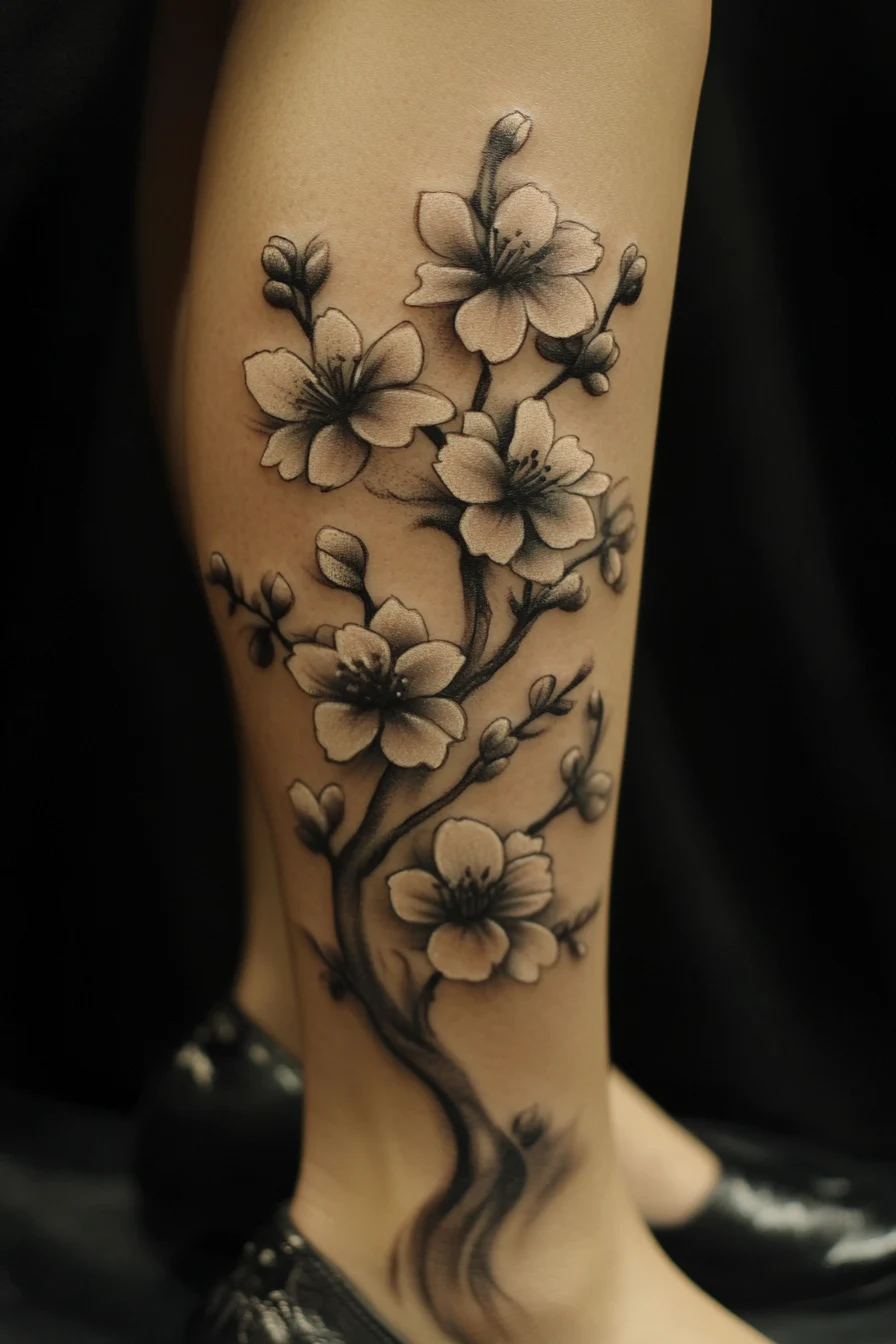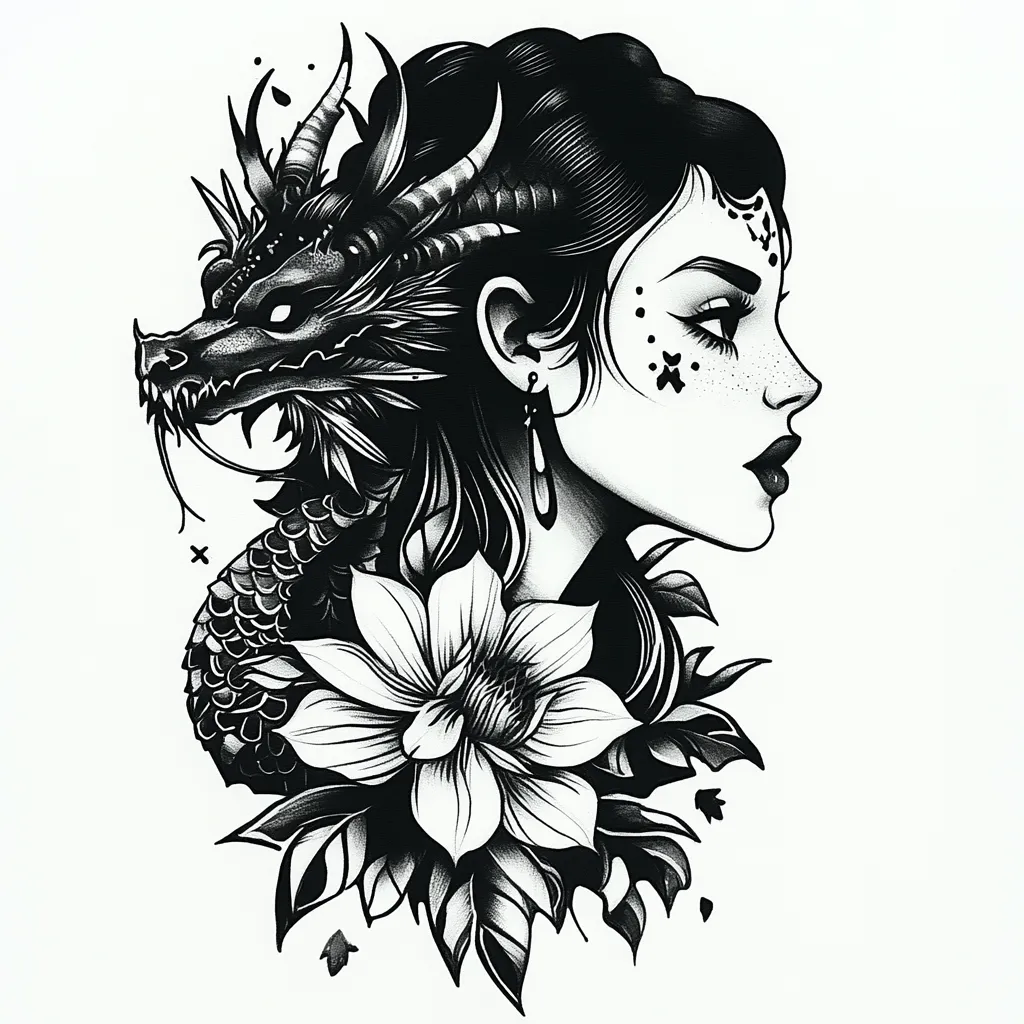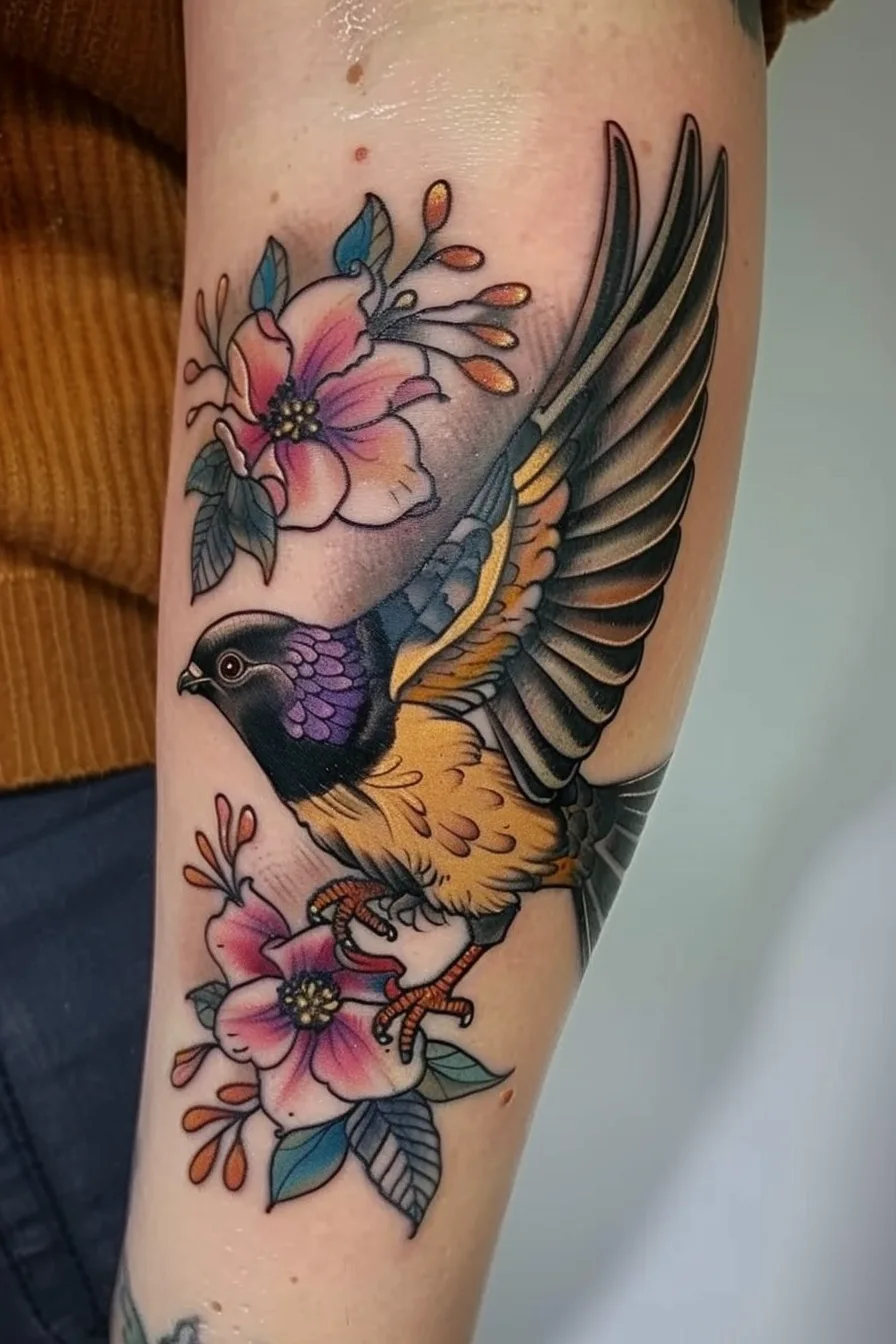Graveyard tattoos are a powerful and profound form of body art that symbolize eternal peace, tranquility, and the cherished memory of those who have passed on. These tattoos often feature captivating design styles like watercolor, geometric, and realistic, each conveying unique effects like ethereal, somber, or dramatic representations.
Common elements include orange hues representing the cycle of life, tombstones, weeping angels, and sleeping skeletons - all of which carry deep meanings about mortality, remembrance, and the enduring bond between the living and the dead.
Graveyard tattoos reflect a long history of cultural symbolism and a macabre fascination with the afterlife. If you're intrigued to learn more, let's dive deeper into the significance and symbolism behind these captivating designs.
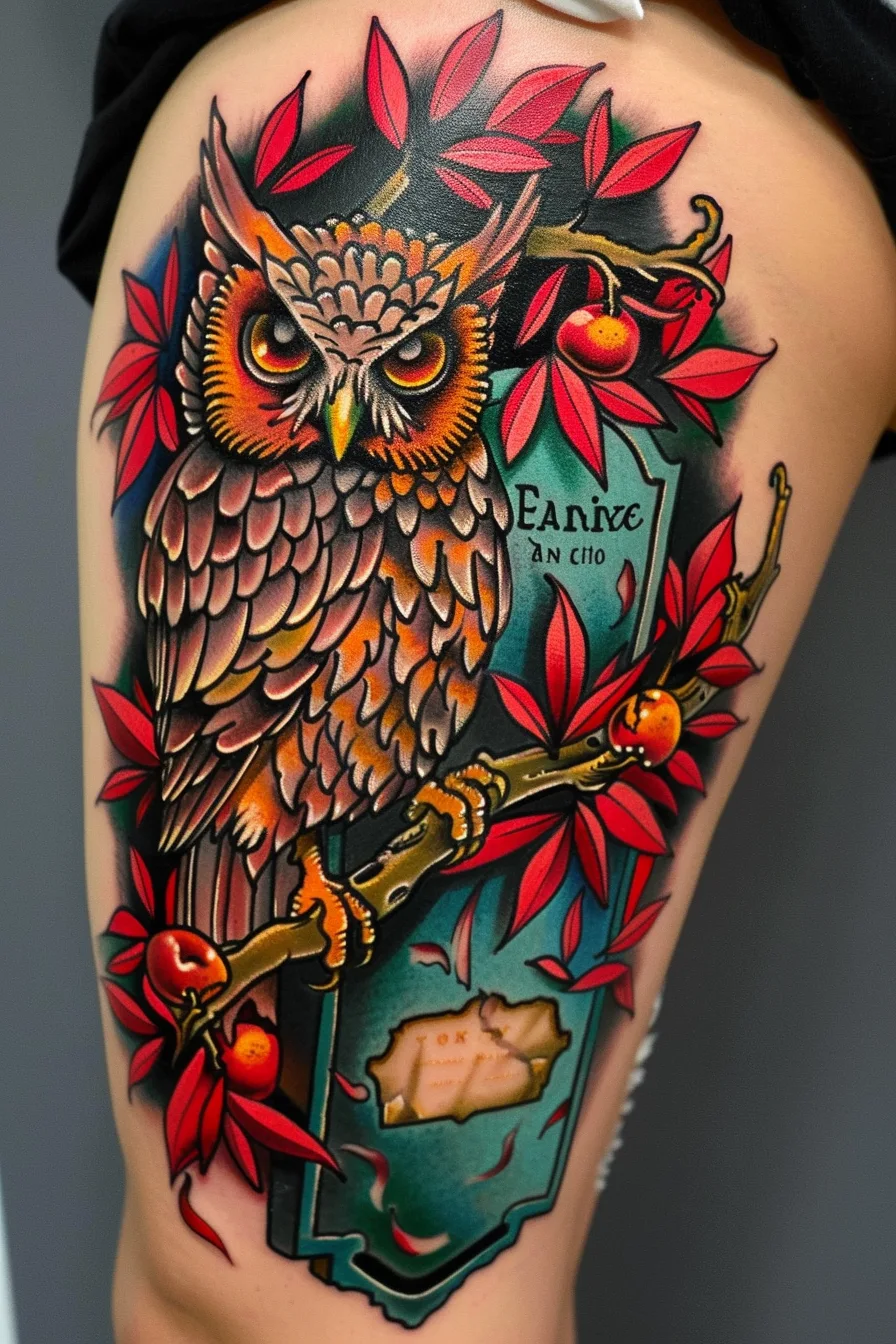
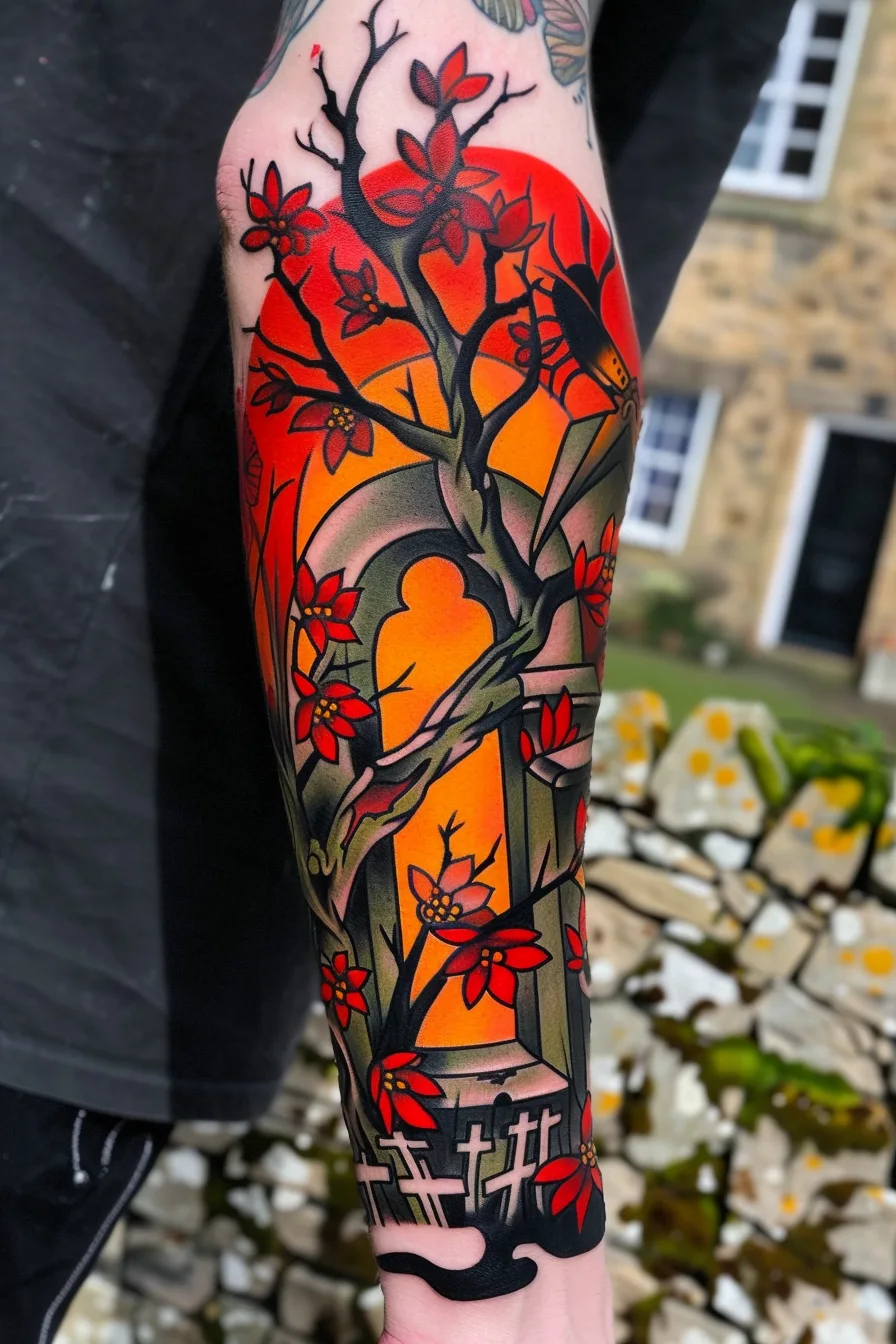
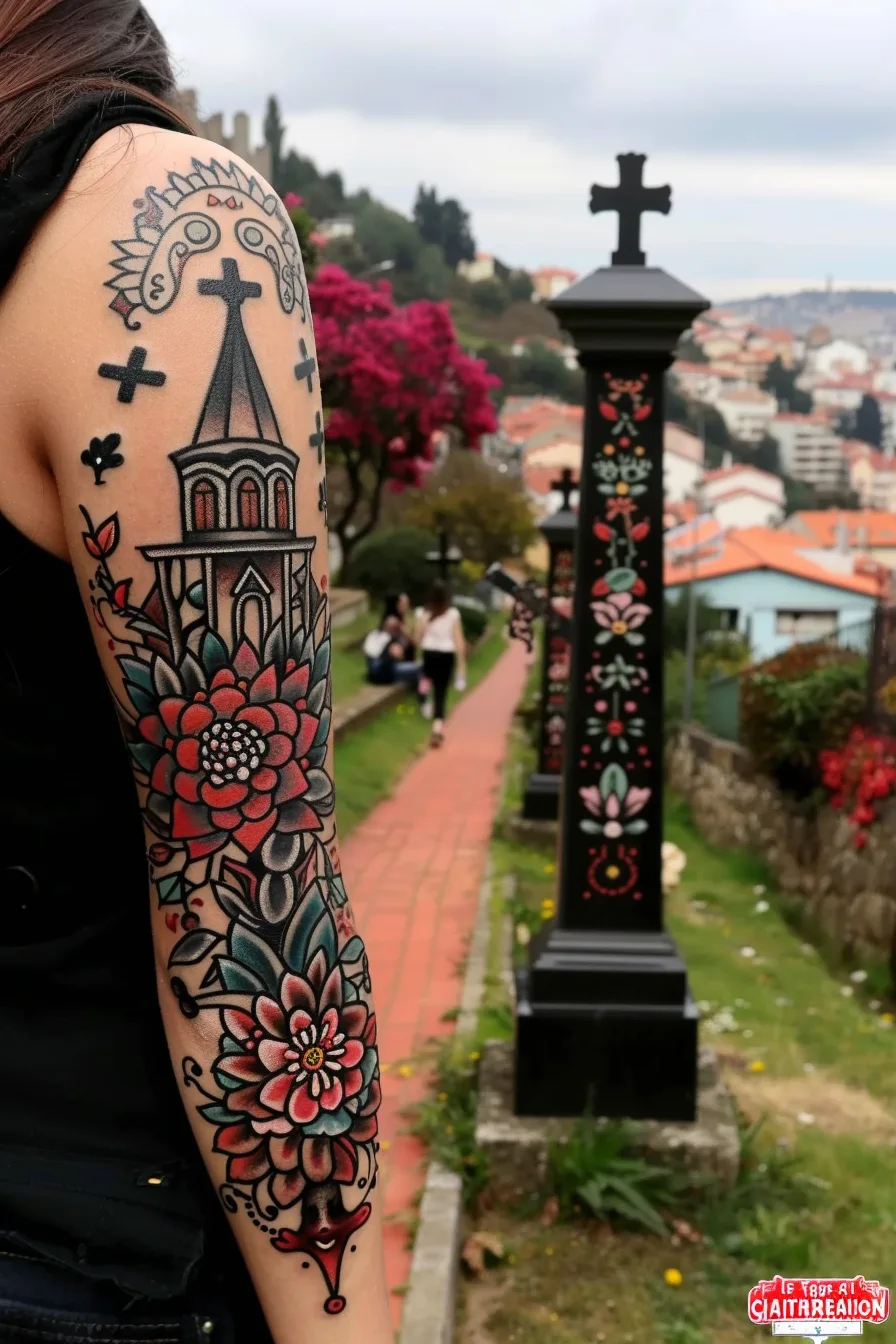
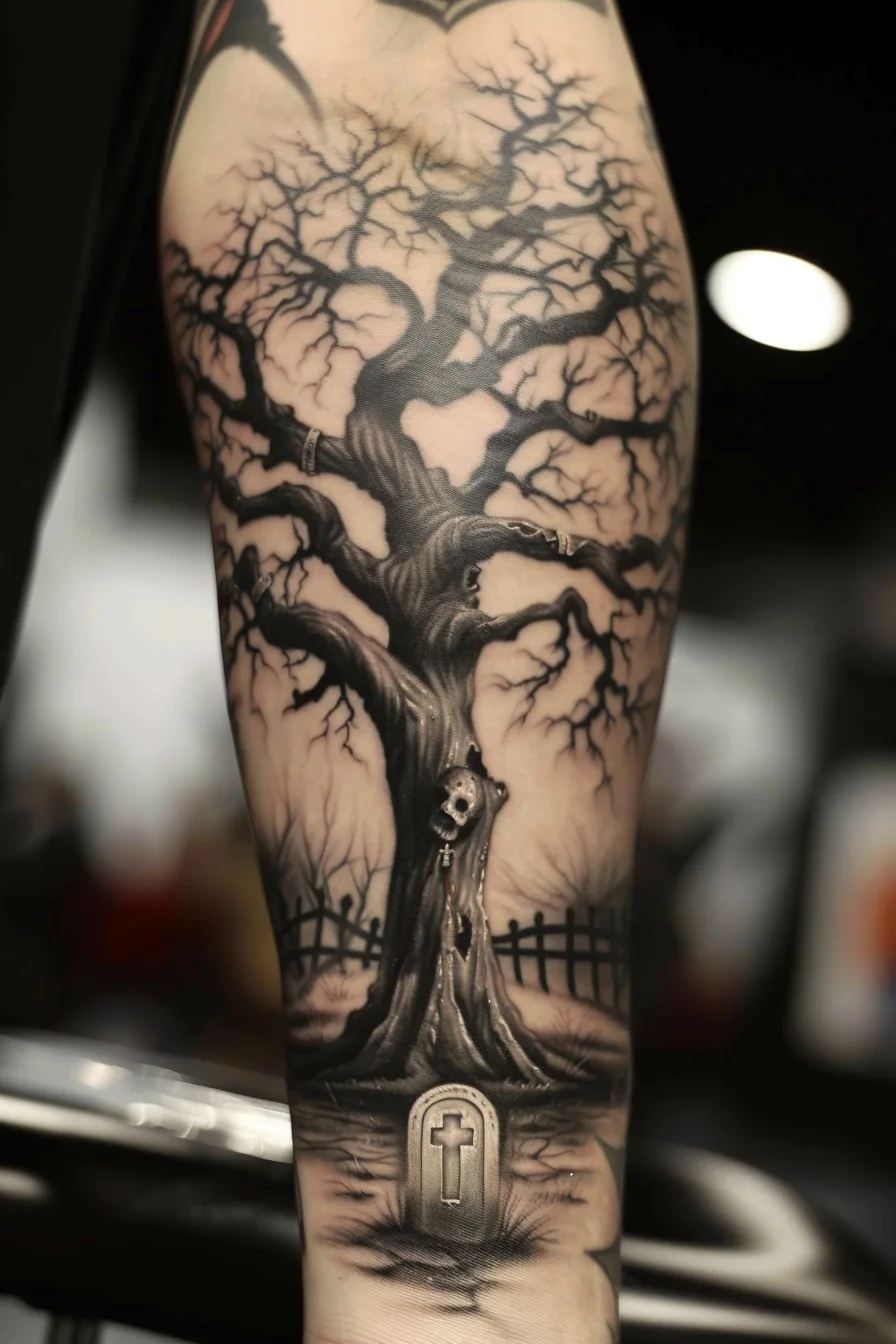
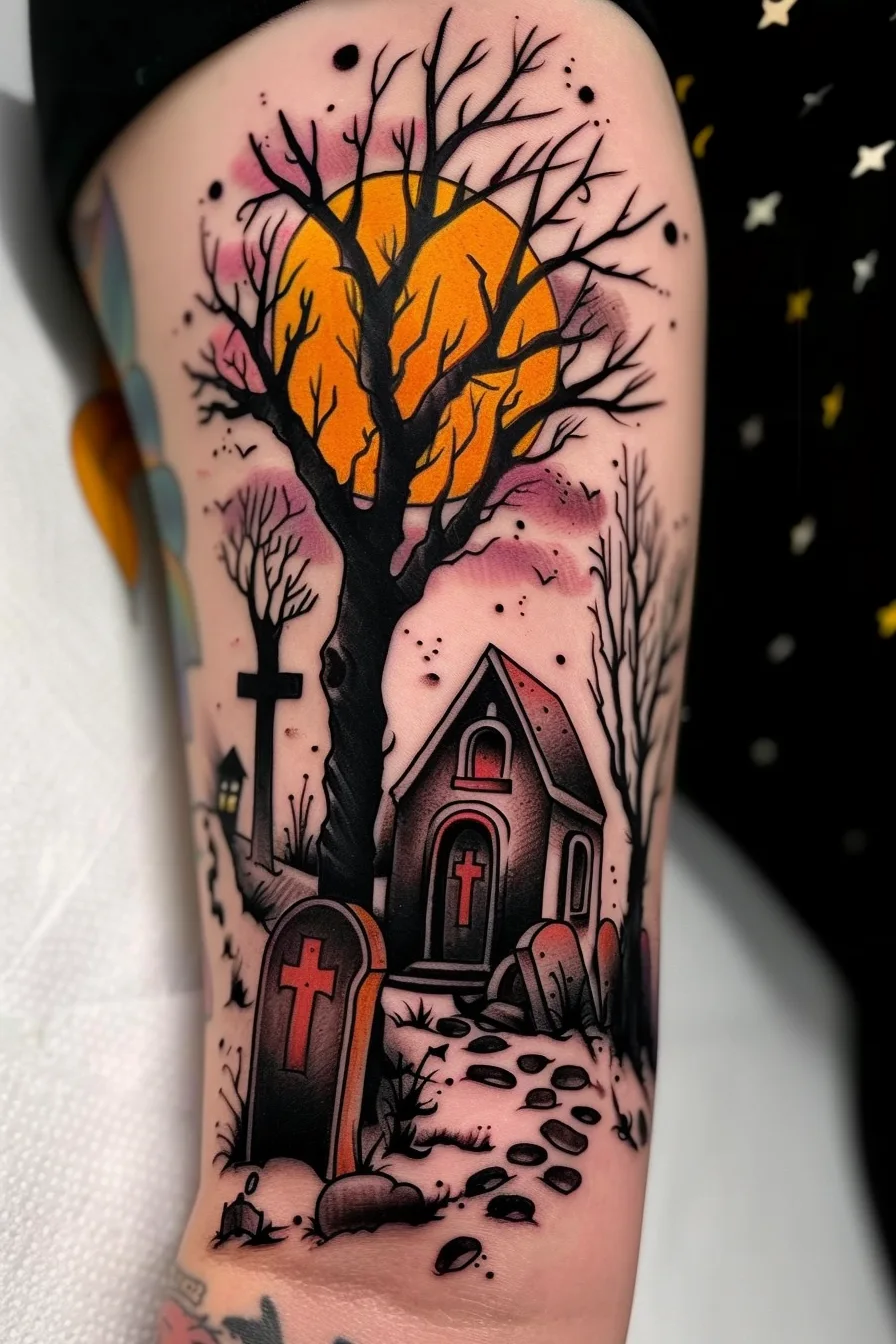
Eternal Peace and Tranquility
The graveyard tattoo can serve as a profound symbol of remembrance for those who have passed on. It can represent the eternal peace and tranquility that comes with honoring the sacrifices of loved ones, and the lifelong journey we all share.
This intricate design invites reflection on the meaningful aspects of life and death, offering a deeply personal way to commemorate those who have left an indelible mark on our hearts.

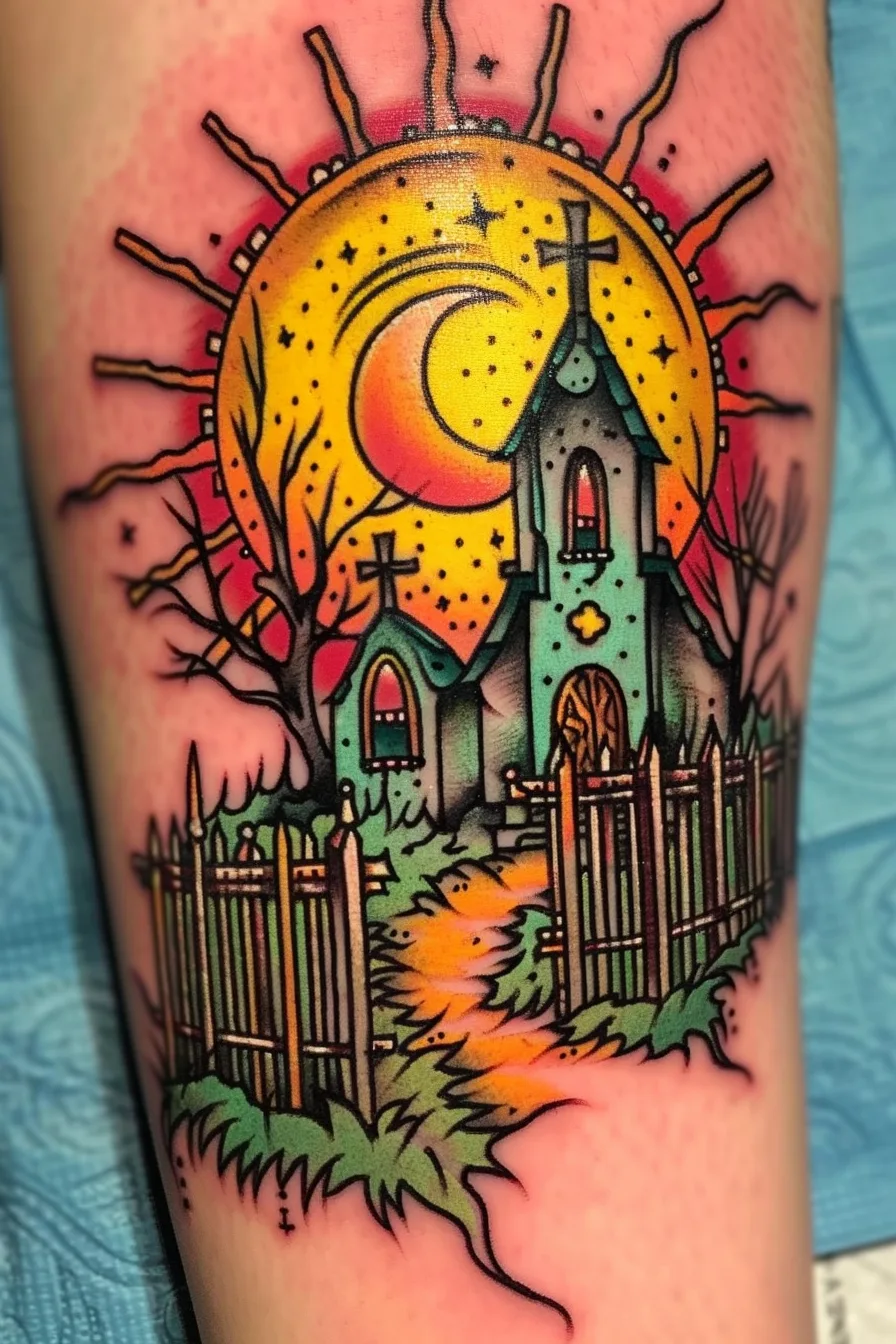
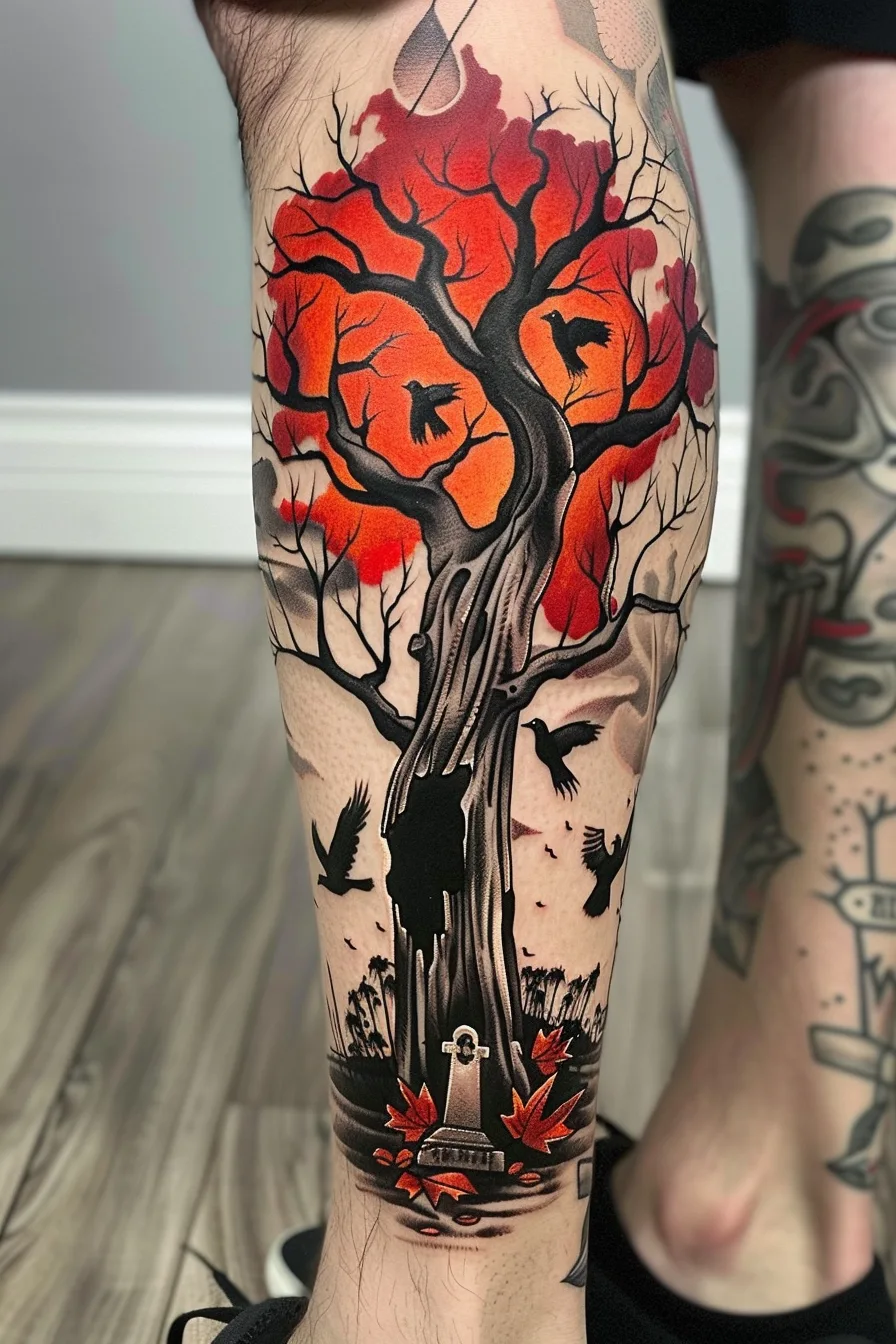
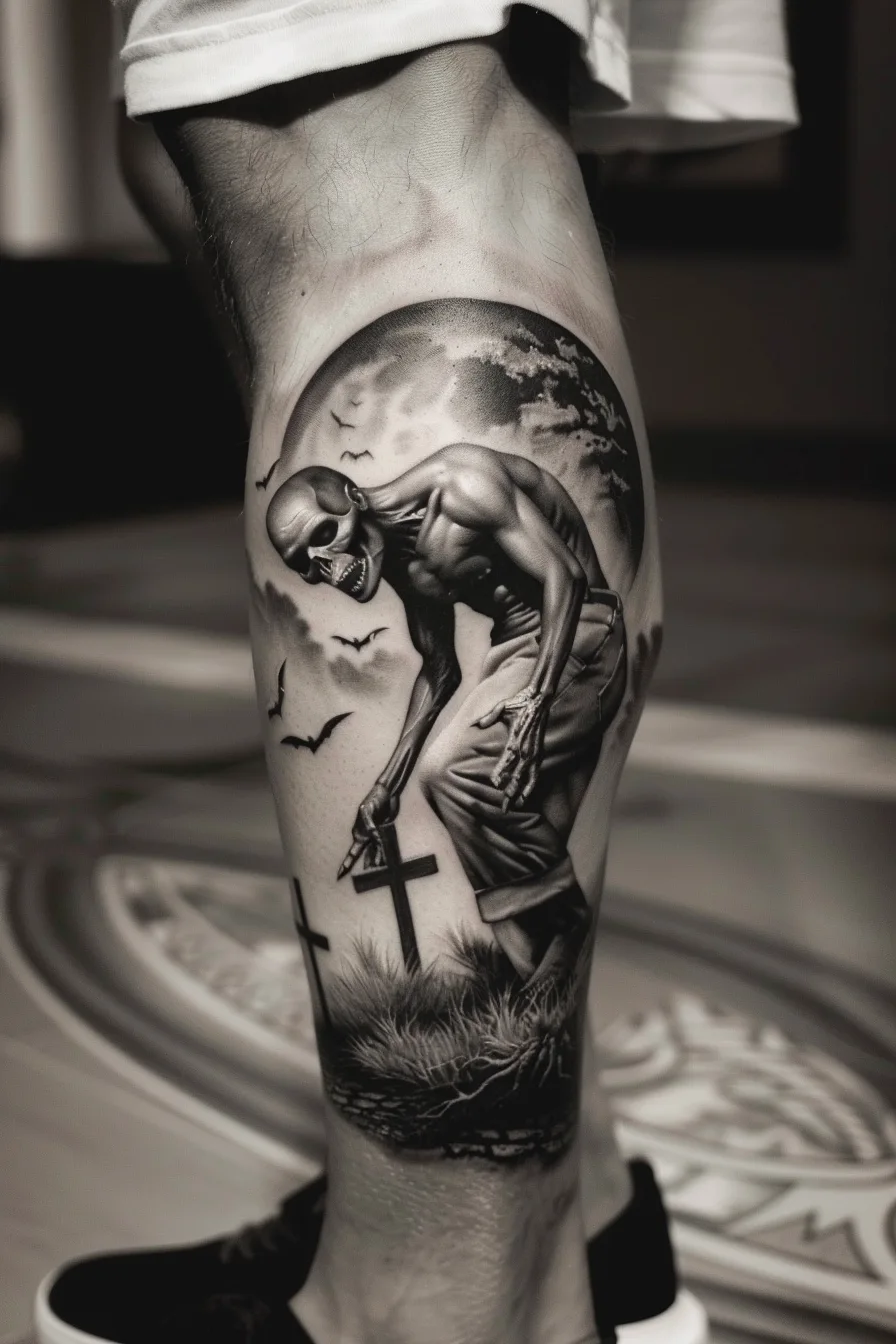
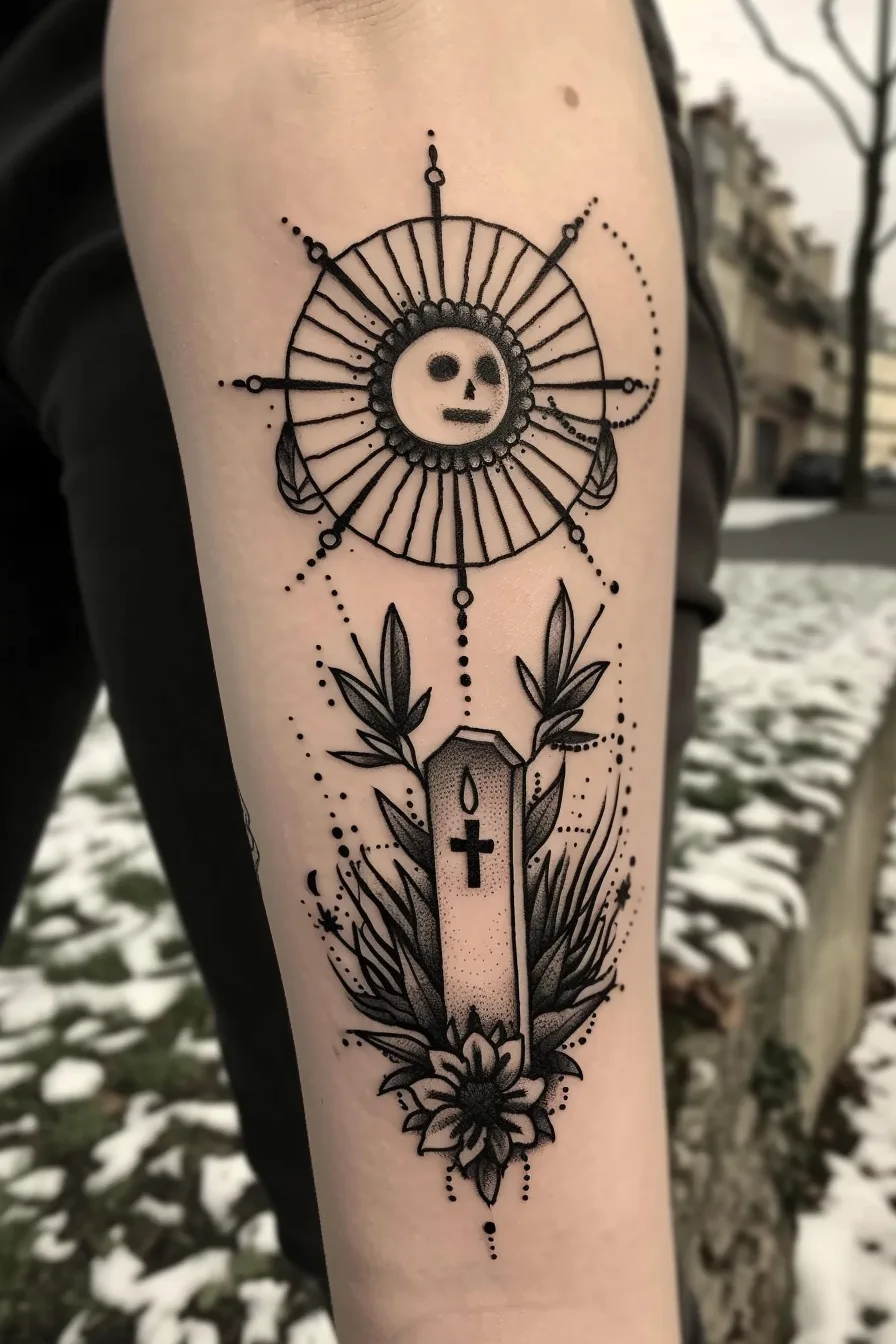
Remembrance of Lost Loved Ones
Graveyard tattoos often symbolize the remembrance of lost loved ones, serving as a poignant tribute to those who have passed on and found eternal peace and tranquility.
These tattoos can represent the cherished memories and strong emotional connections we share with those who have left us too soon. For many, they provide a way to honor the deceased, find closure, and begin the healing process.
The intricate designs, ranging from tombstones and crosses to angels and cherished objects, hold deep personal significance, reminding us that our loved ones are never truly gone, but live on in our hearts and memories.
Graveyard tattoos offer a tangible way to keep their spirit alive and continue the journey of grieving and acceptance.
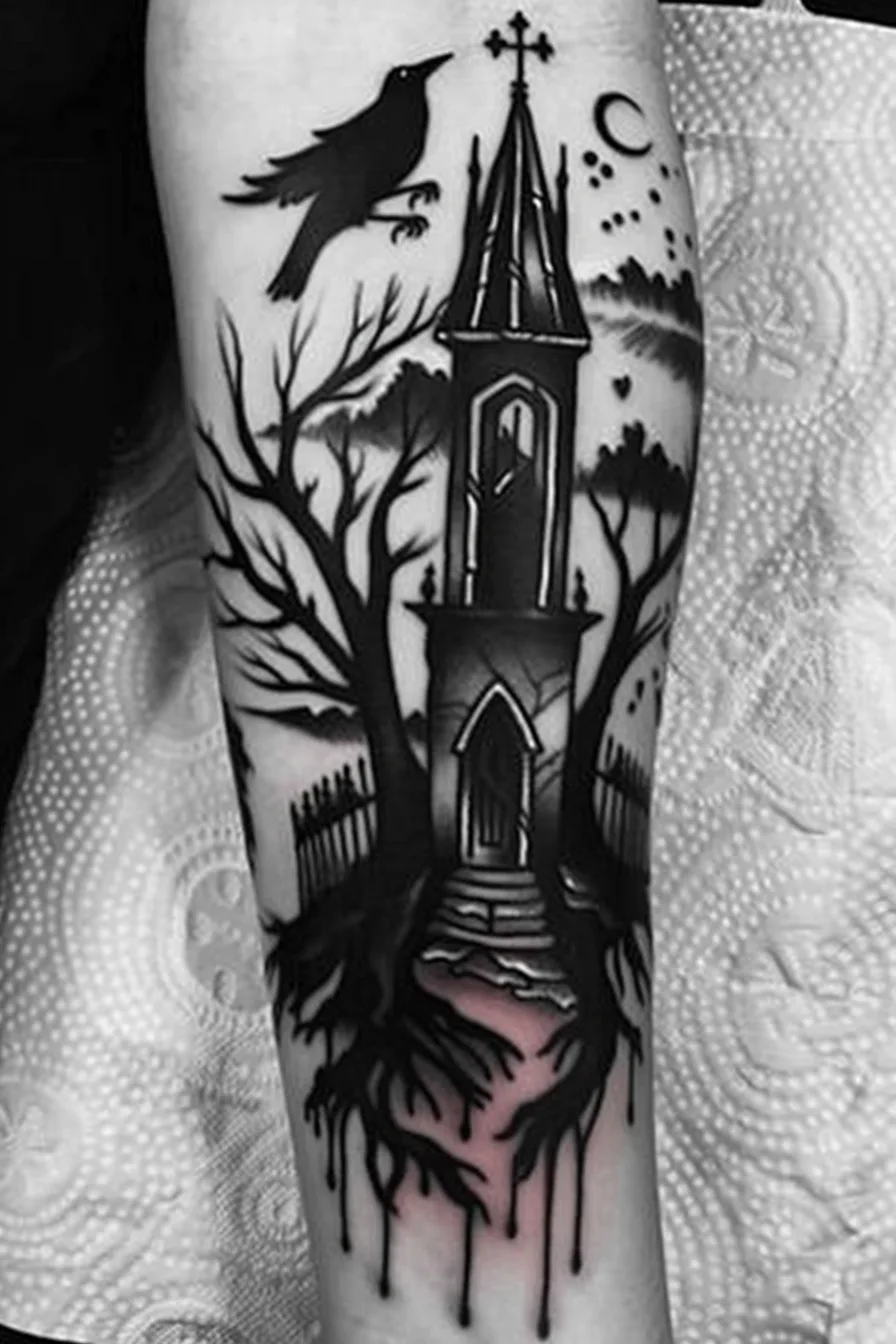
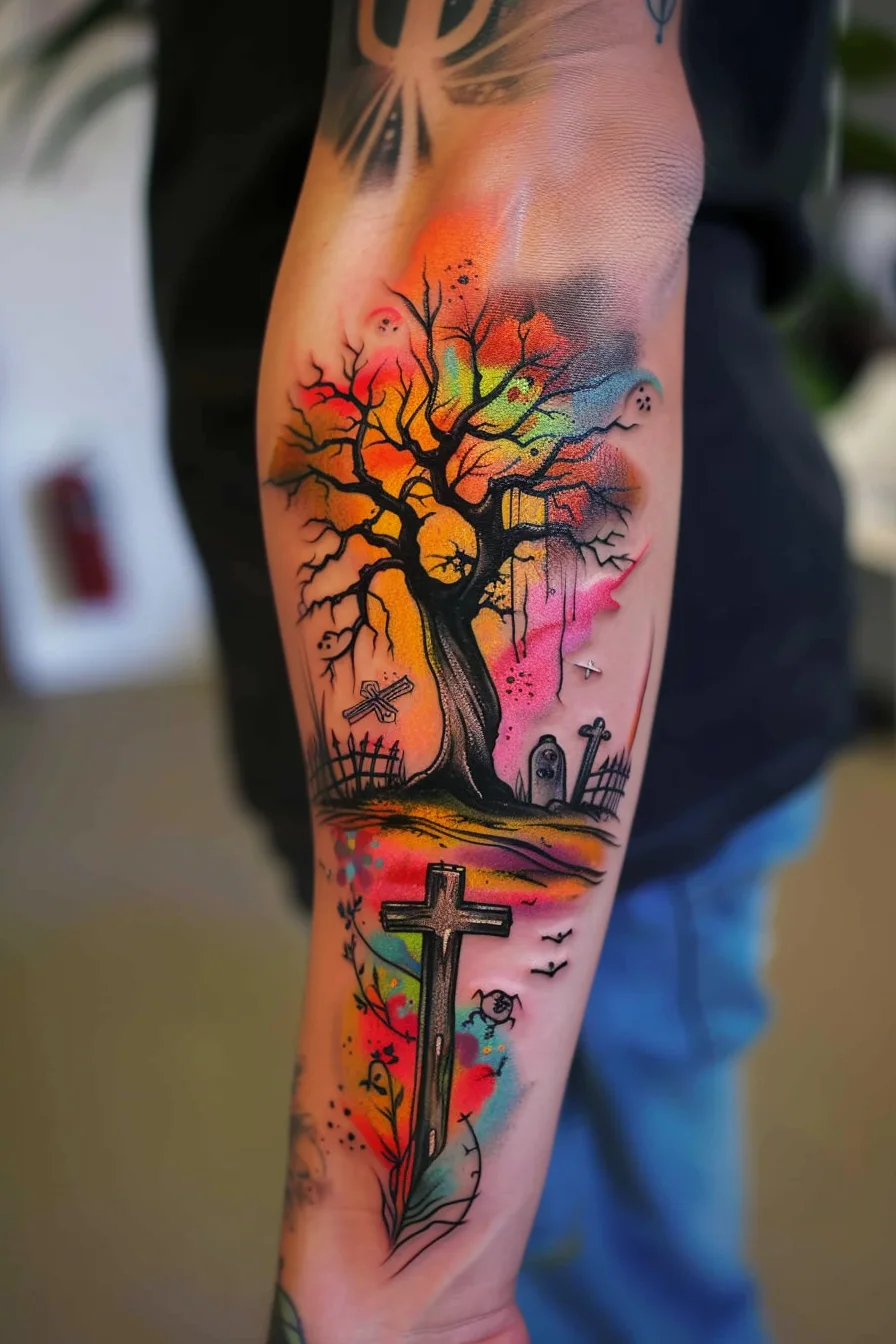

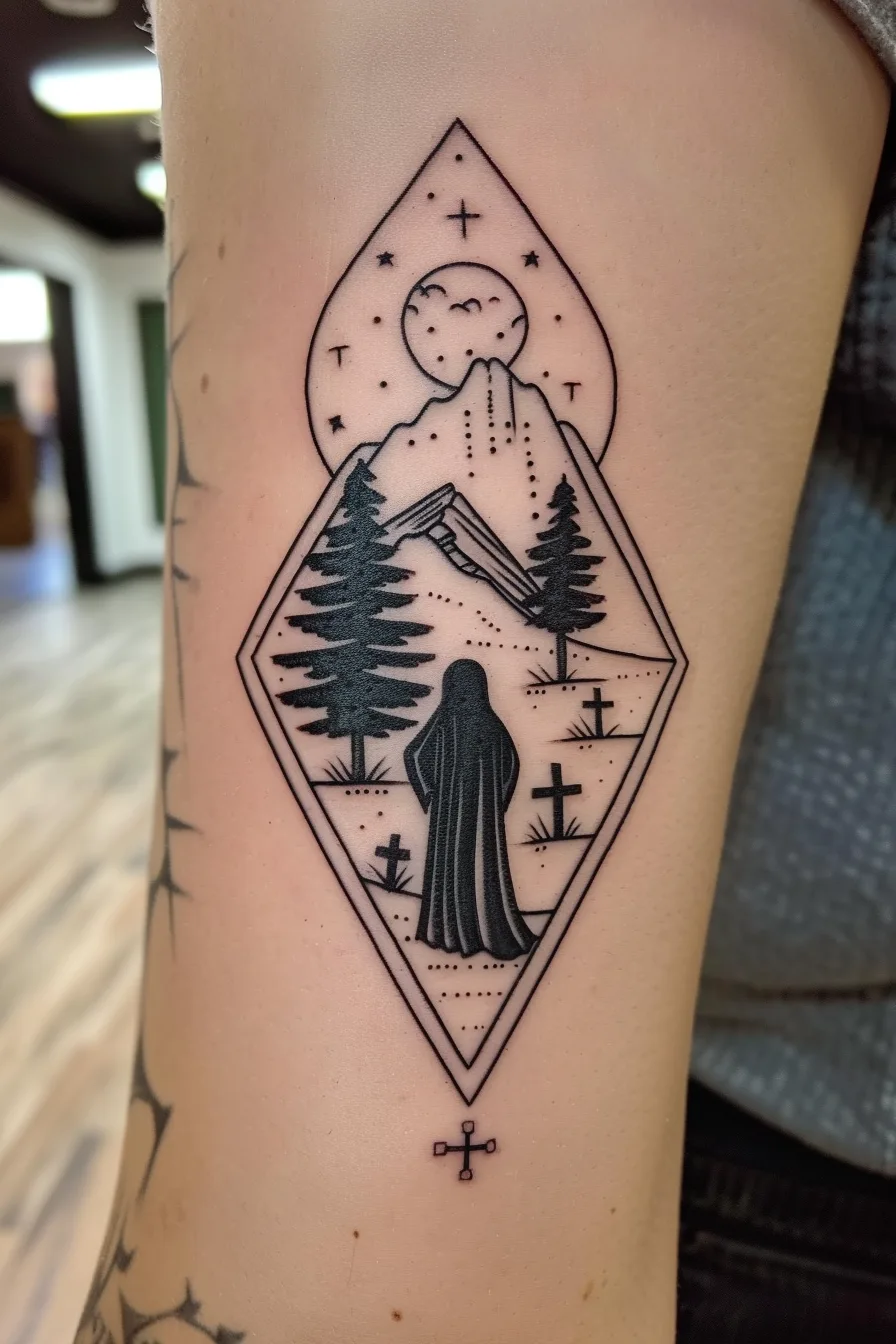
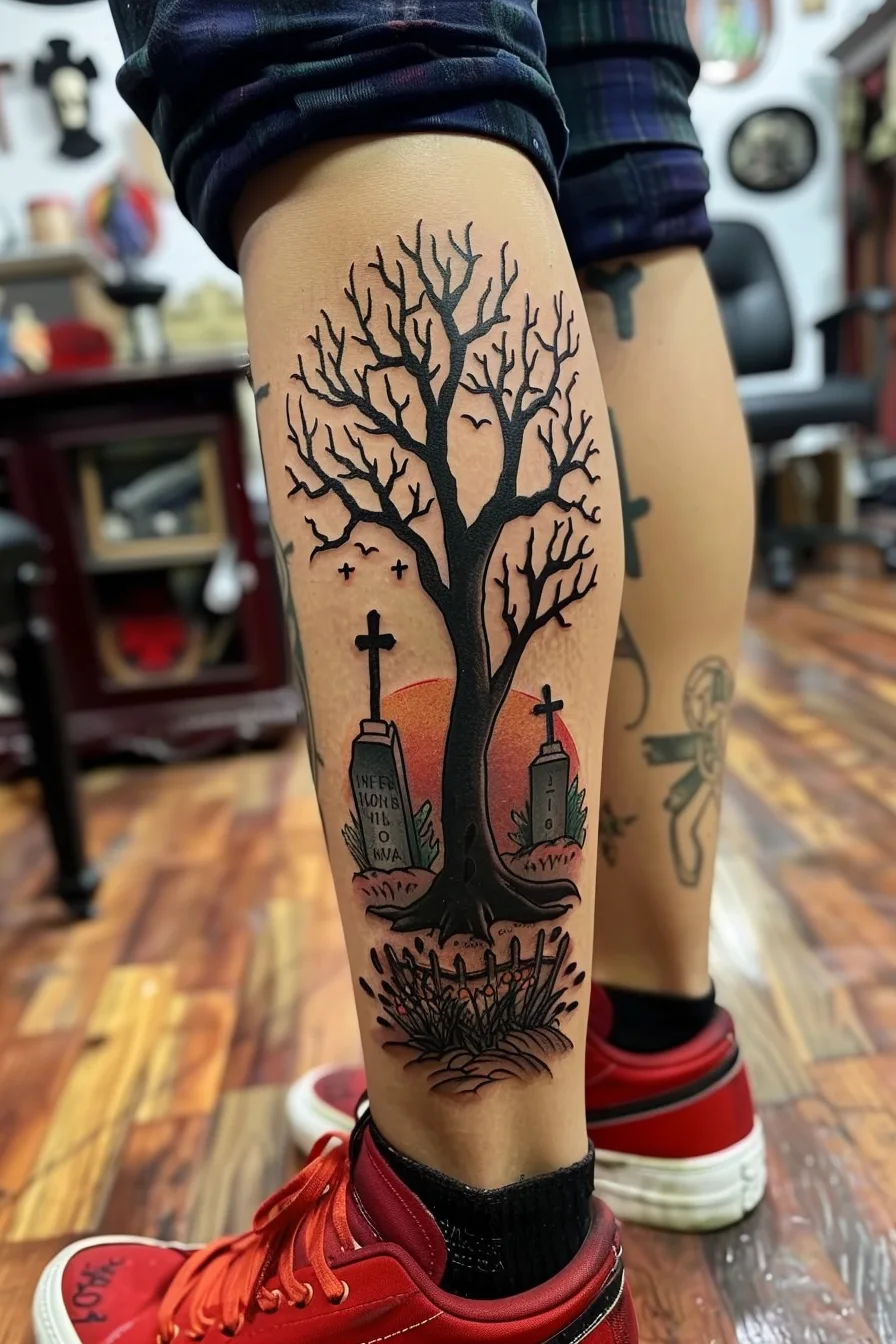
Eternal Remembrance of Sacrifice
Beyond the remembrance of lost loved ones, graveyard tattoos can also serve as a poignant symbol of eternal sacrifice and the pursuit of everlasting peace and tranquility.
The imagery of a graveyard represents the ultimate selfless act, where individuals have given their lives in service of a greater good. By permanently etching this powerful symbol onto the skin, wearers can honor those who have made the ultimate sacrifice, while also finding a sense of eternal harmony and meaningful remembrance.
The graveyard tattoo becomes a constant reminder of the fragility of life and the importance of cherishing every moment, fostering a deep appreciation for the sacrifices of others and a commitment to living a life of purpose and meaning.
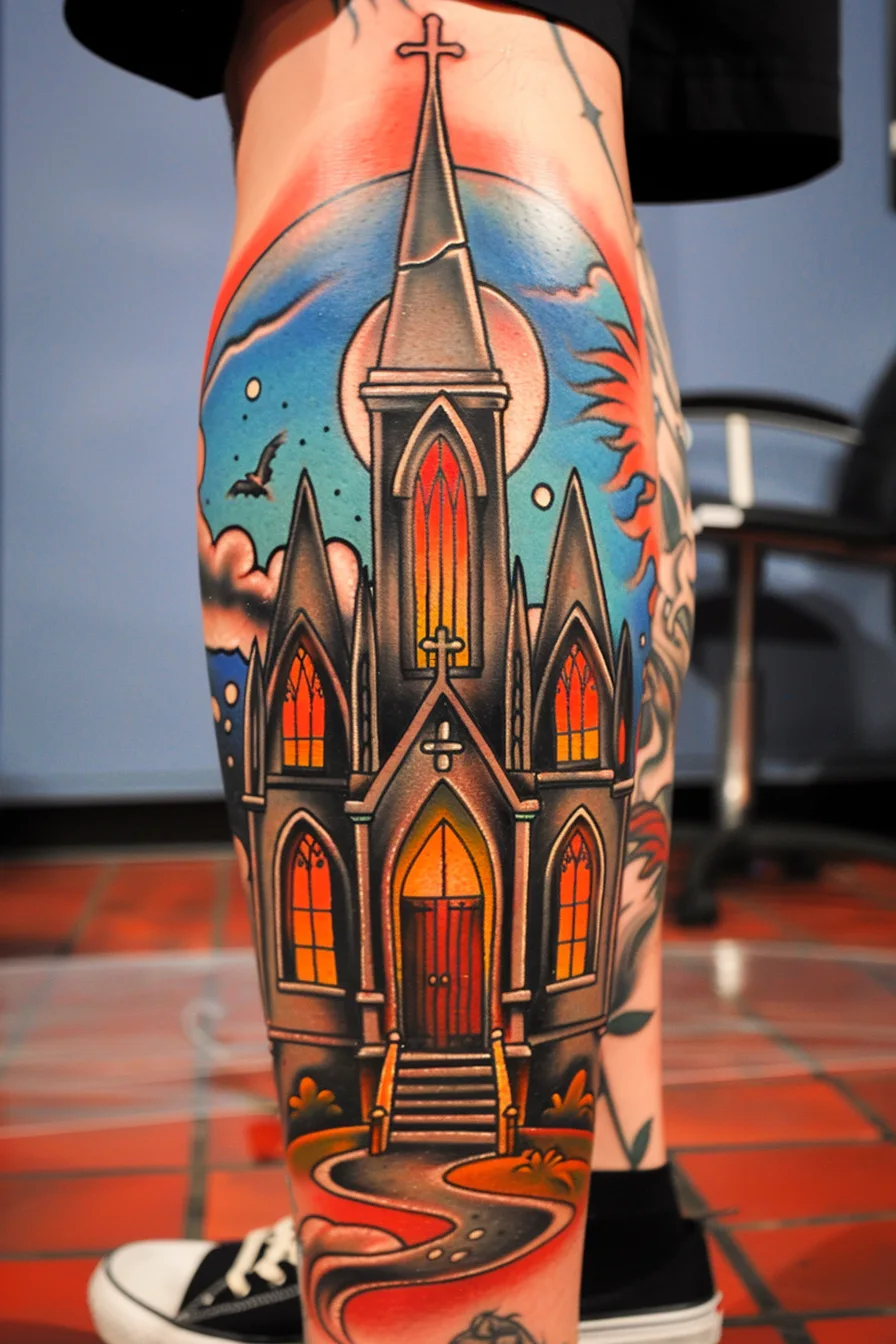
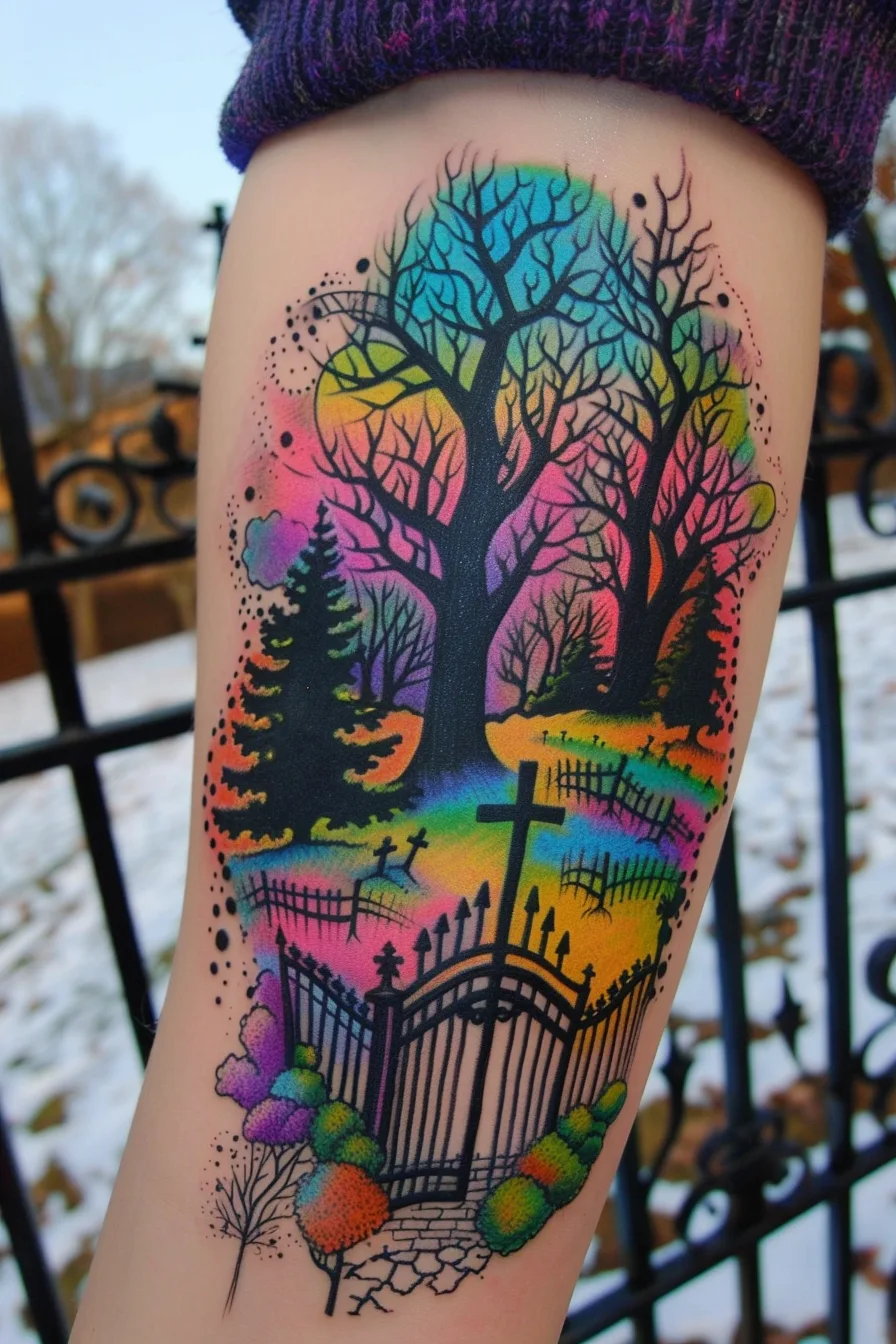
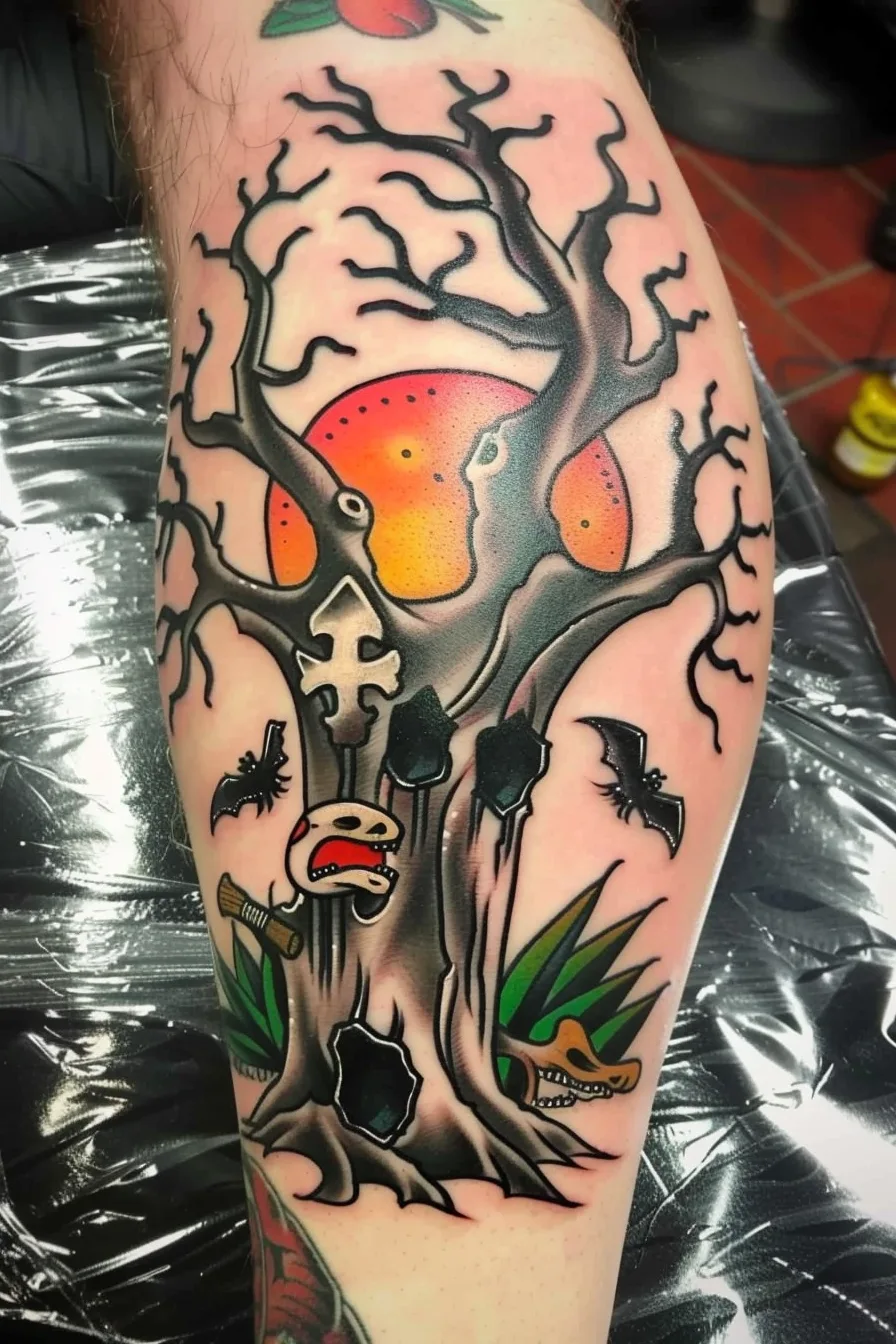
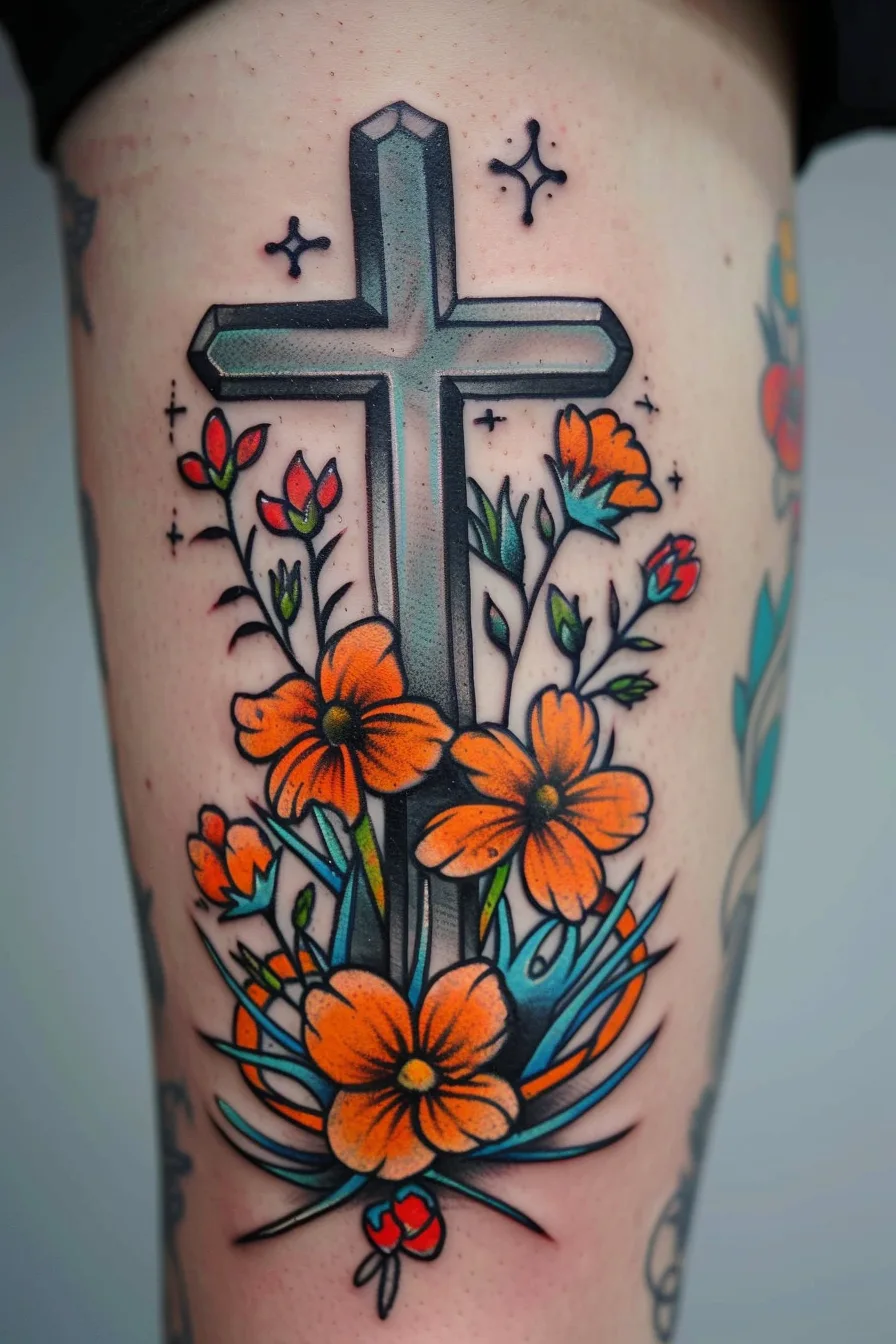
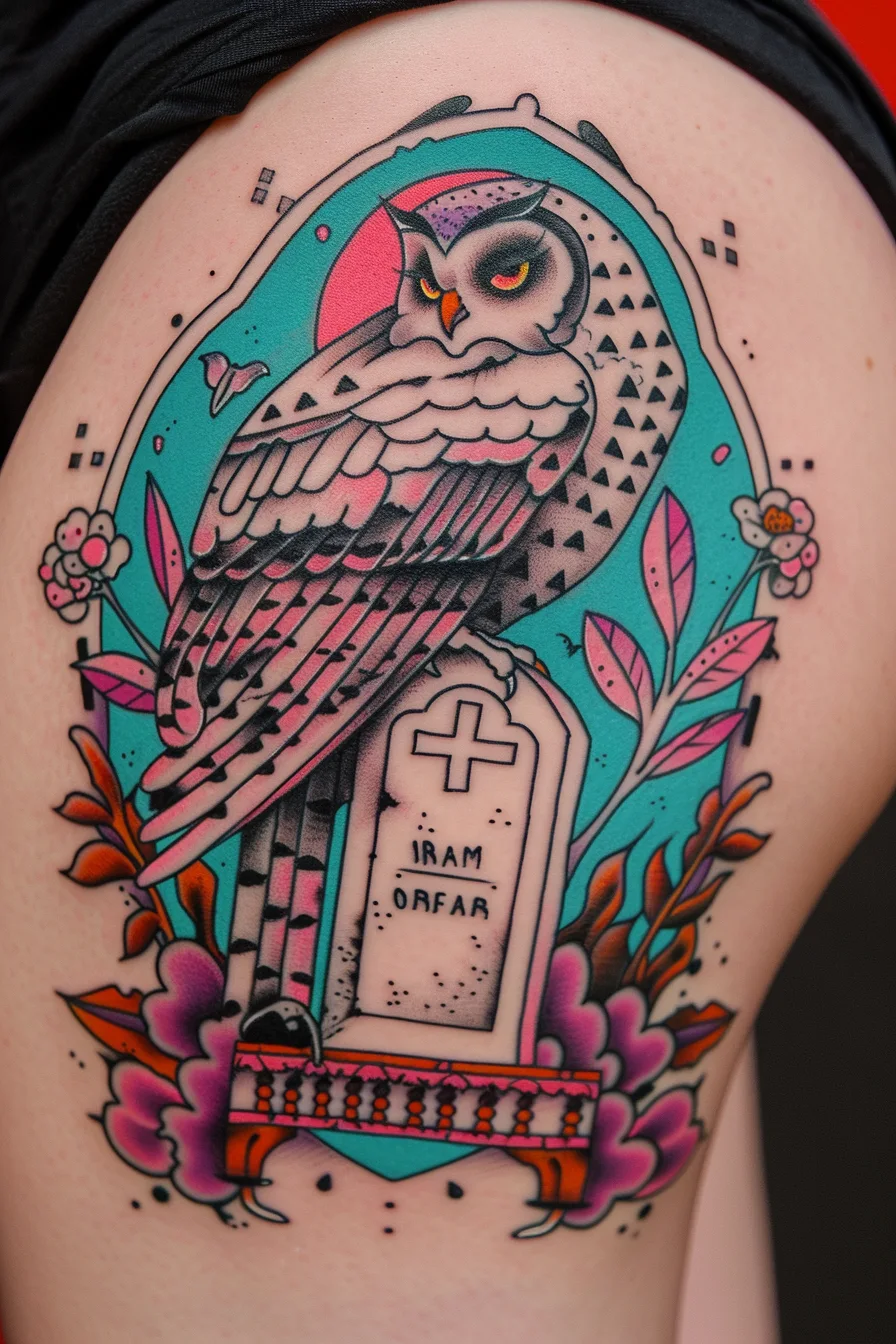
Eternal Journey Through Life
An eternal journey through life, symbolized by the graveyard tattoo, offers individuals a profound sense of tranquility and inner peace. This tattoo represents the deeper spiritual journey we all undertake, with the graveyard serving as a reminder of our interconnection with nature and the cyclical nature of existence.
By embracing this symbolism, individuals can find solace in the knowledge that their life's path is part of a greater, eternal progression. The graveyard tattoo celebrates the continuity of the human experience, reminding us that even after physical death, our essence lives on, merging with the natural world around us.
This tattoo can be a powerful source of comfort, guiding us towards a greater understanding of our place in the grand scheme of life.
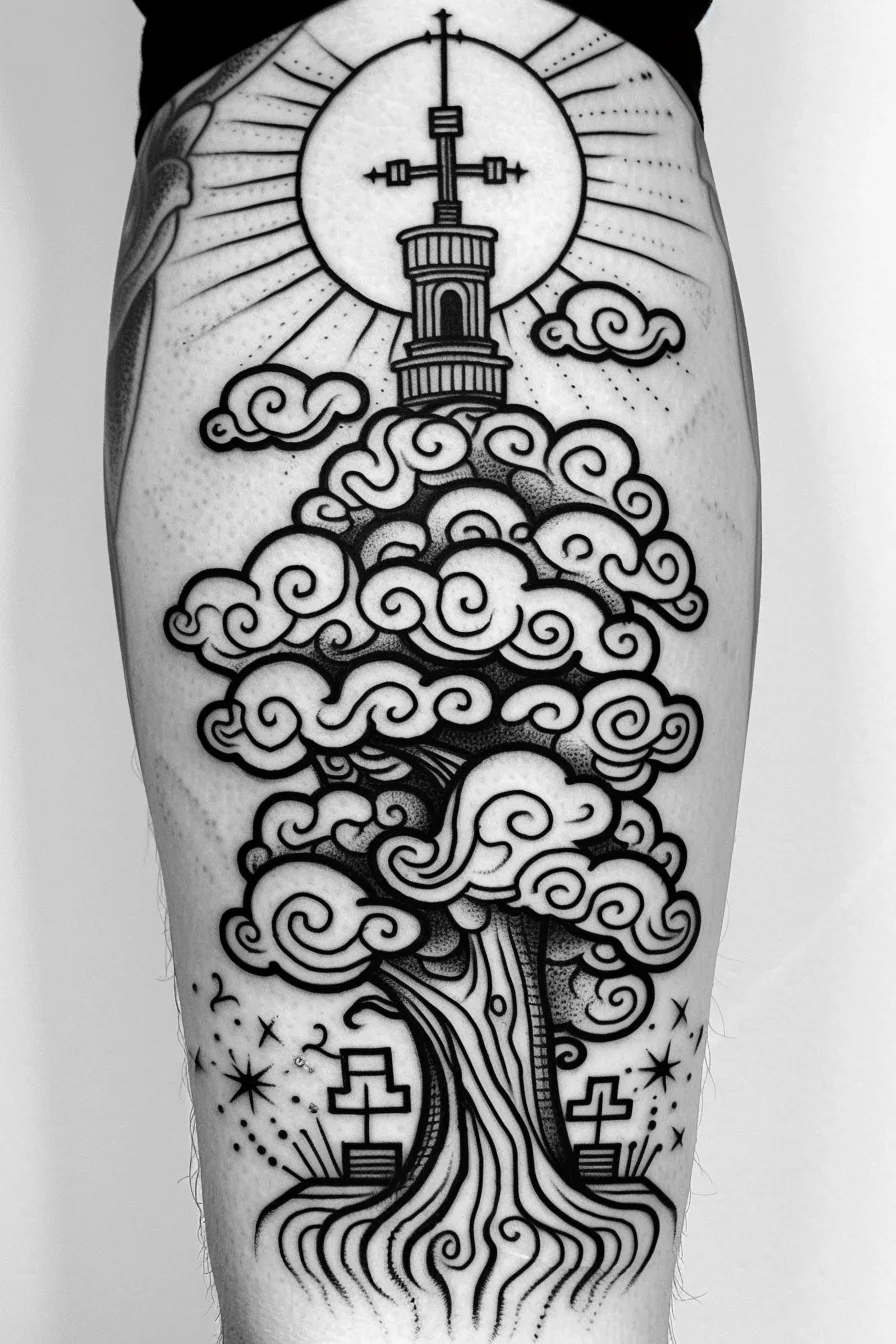
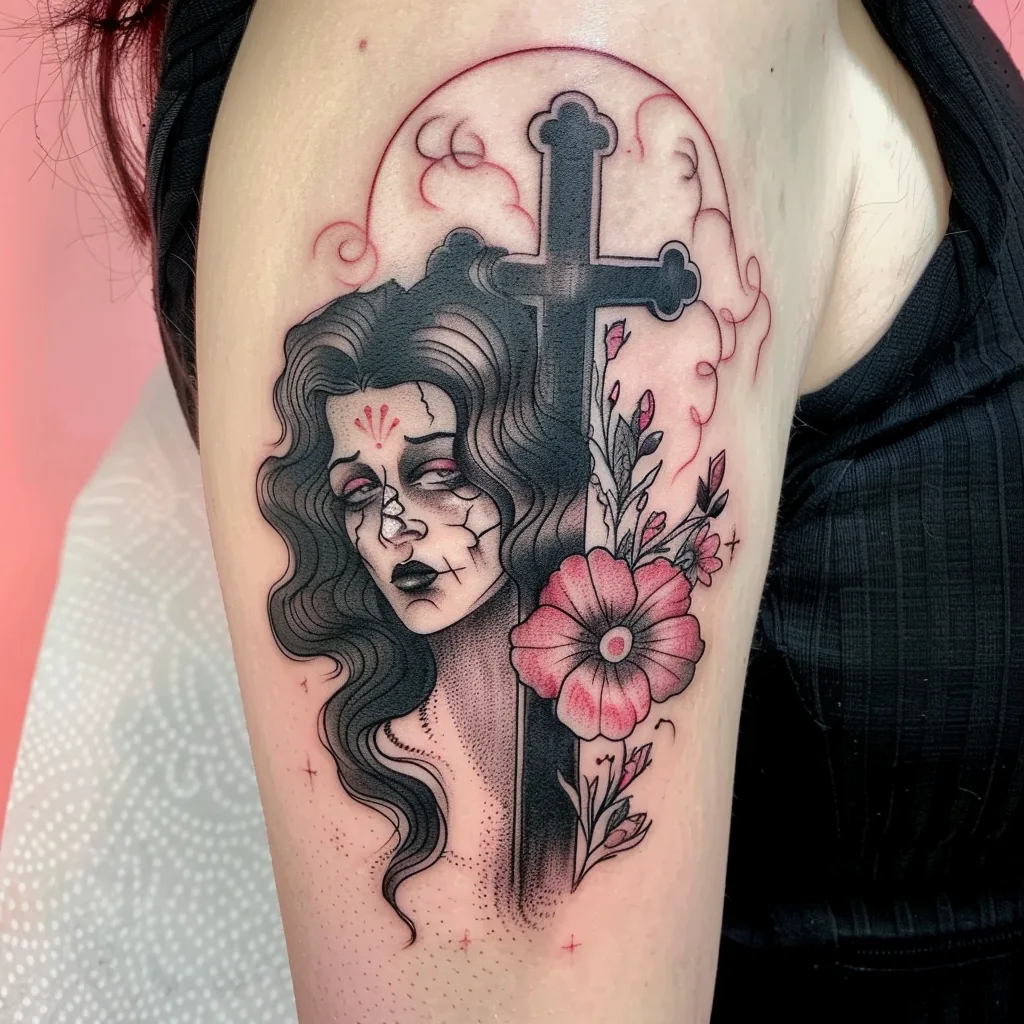
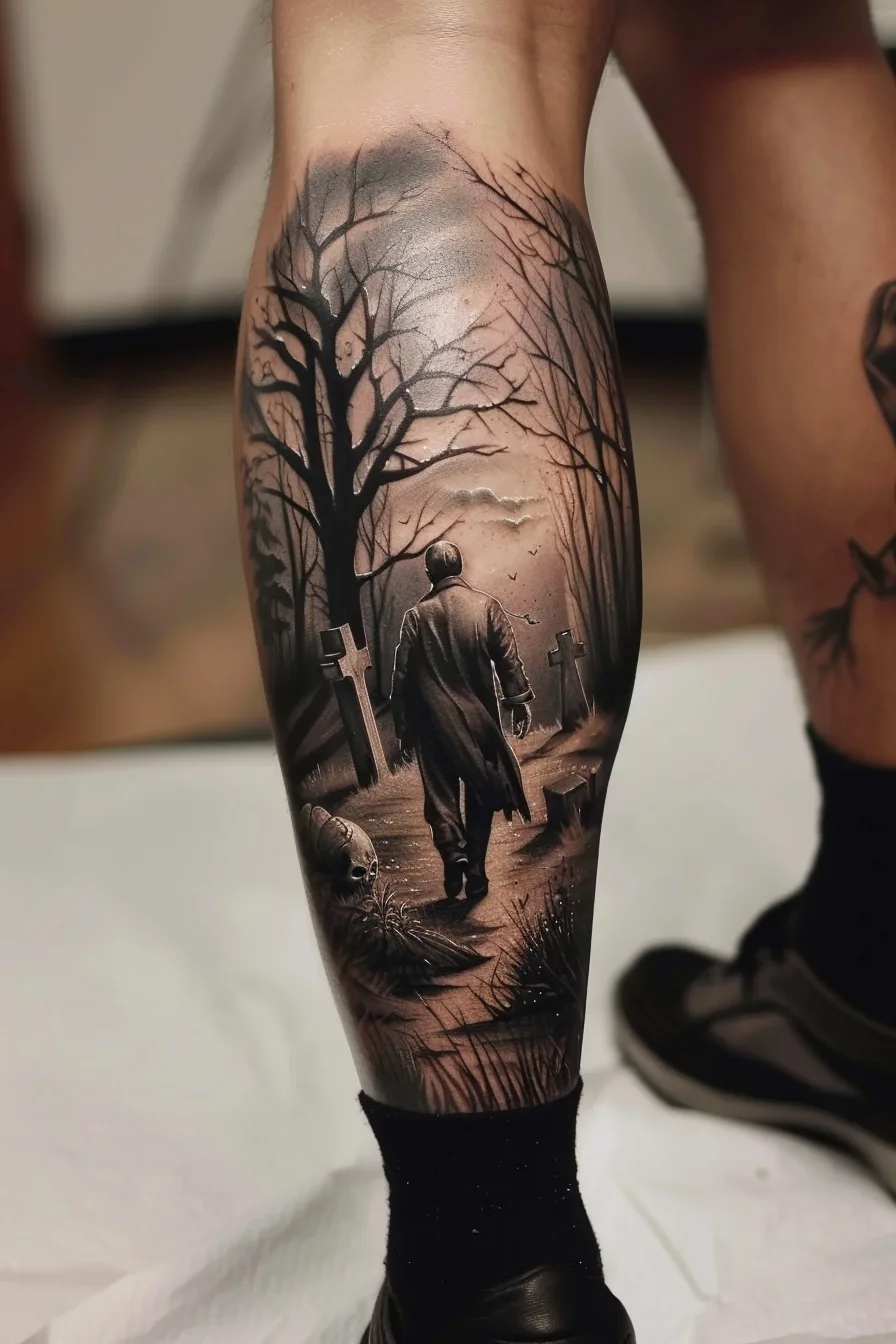

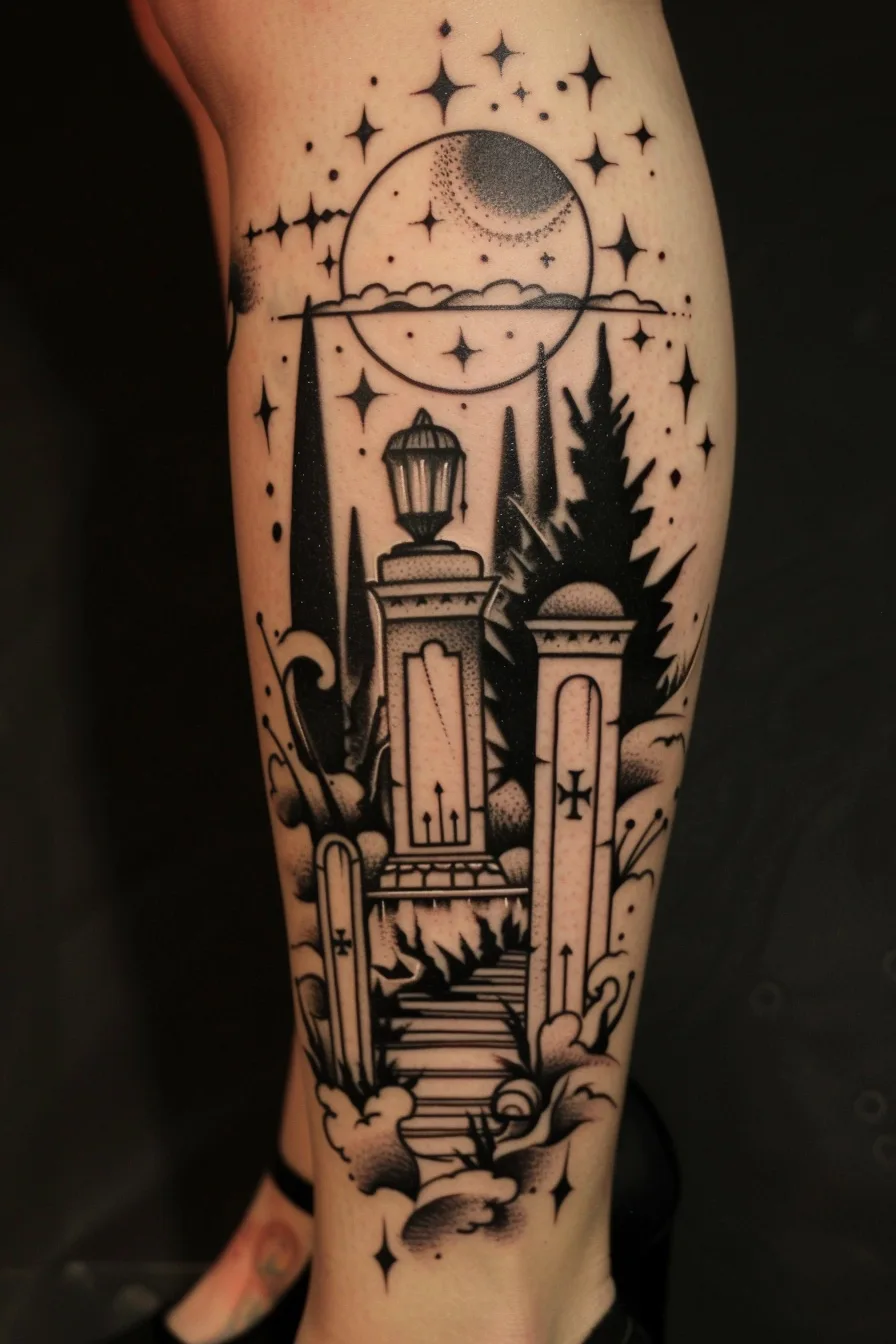
Common Design Styles Of This Tattoo
Graveyard tattoos come in a variety of captivating design styles that allow individuals to express their unique preferences.
From the vibrant and expressive watercolor style to the bold and minimalist approach, the options are truly diverse.
Ultimately, the choice of design style reflects the personal significance and meaning behind the tattoo for each individual.
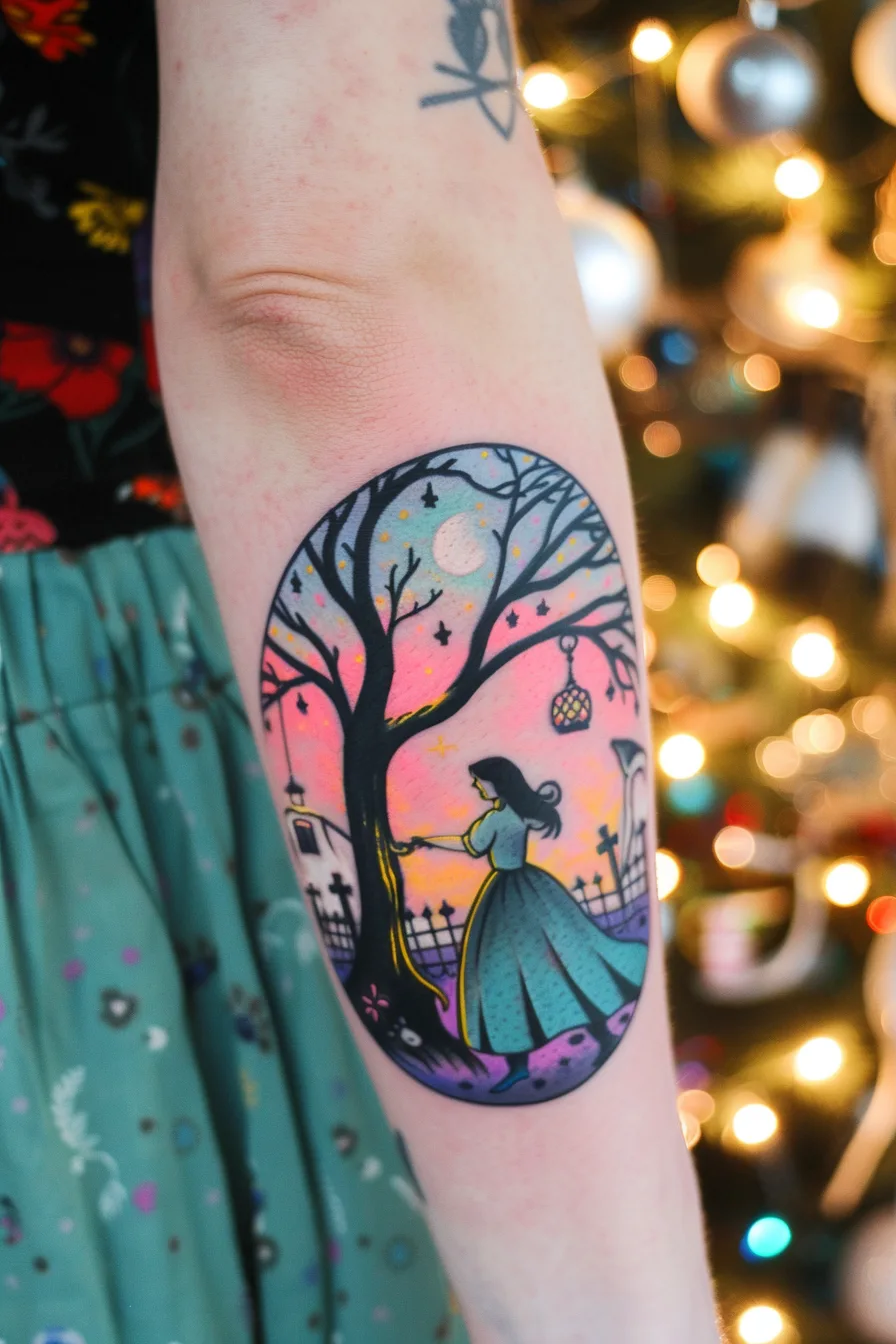
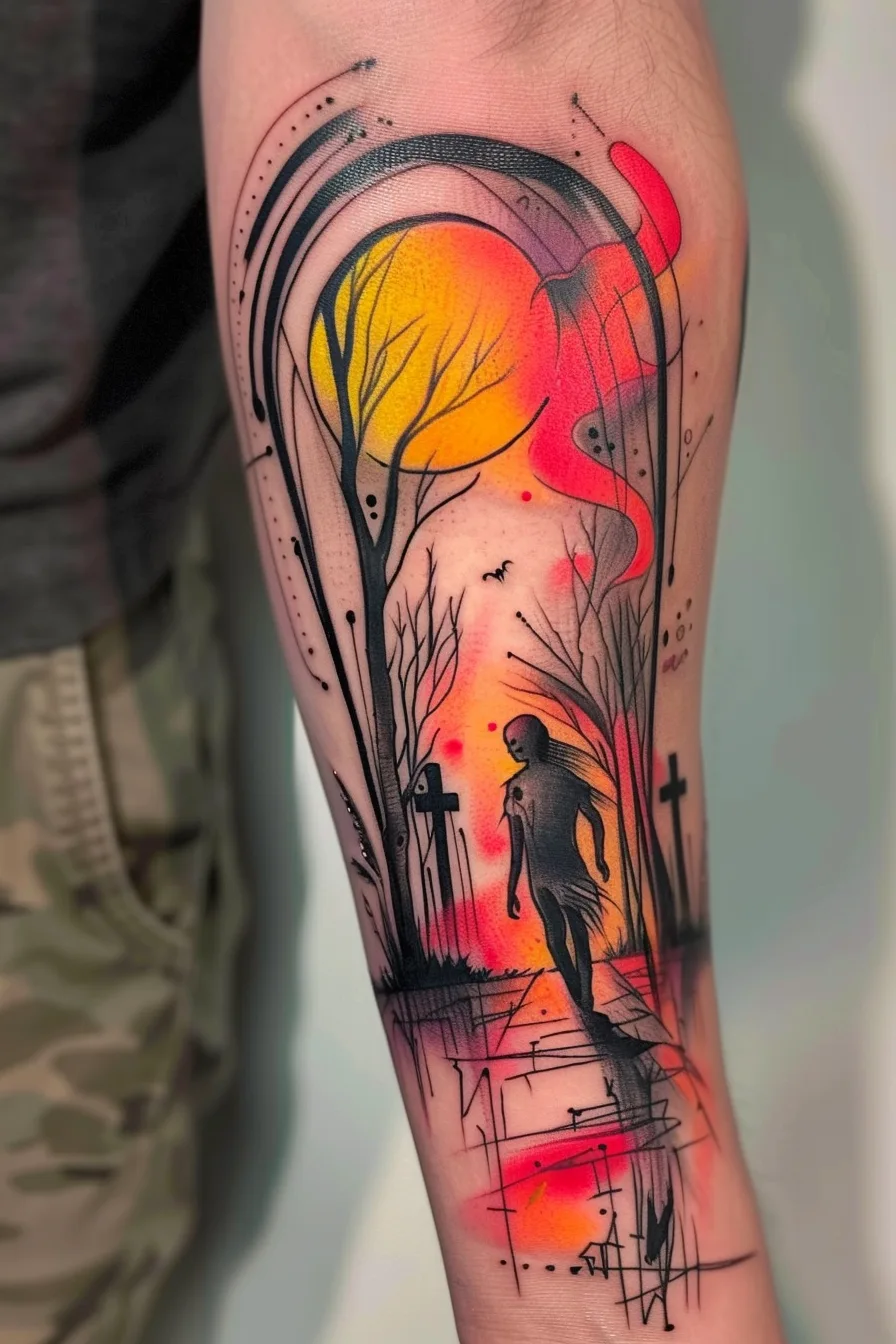
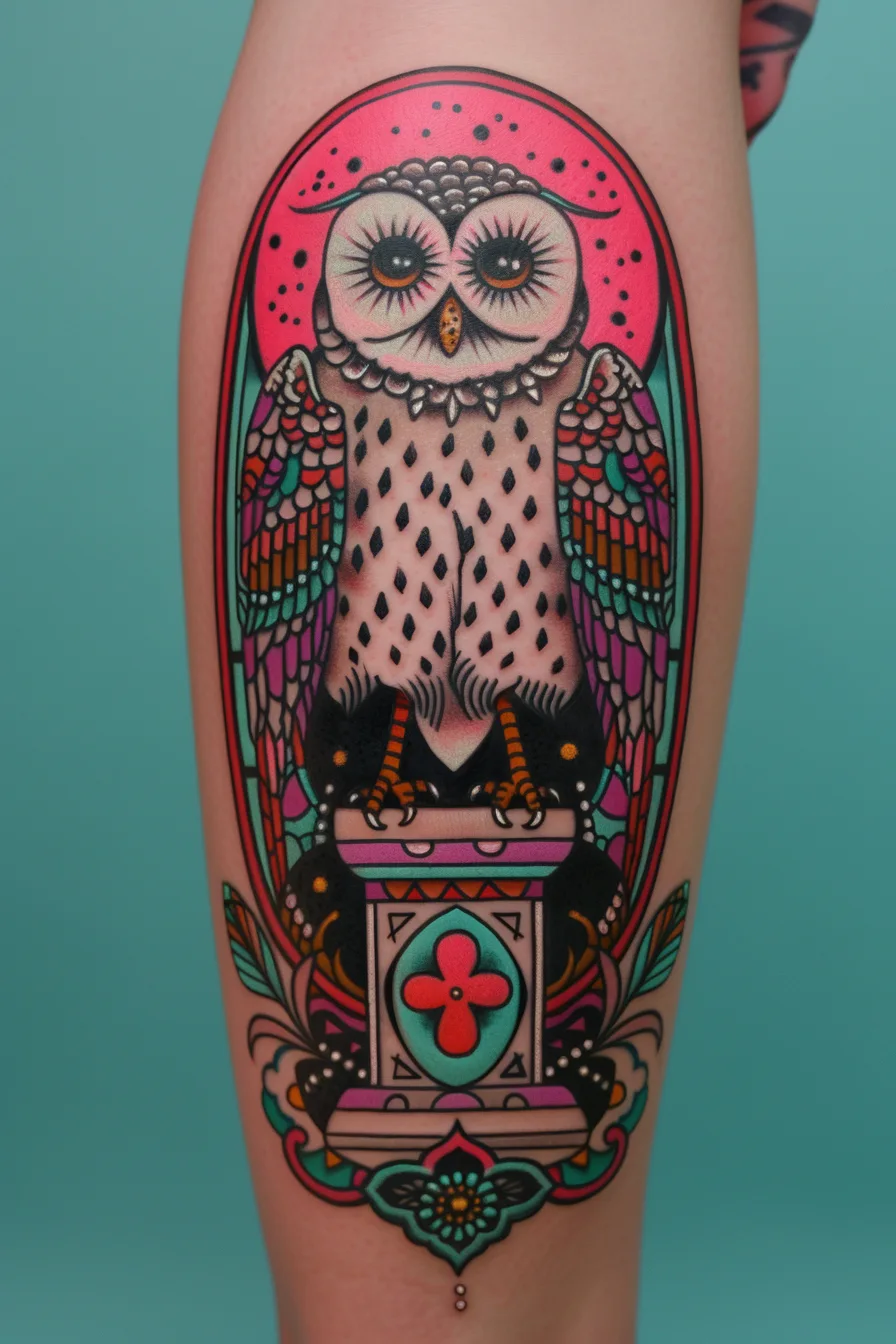
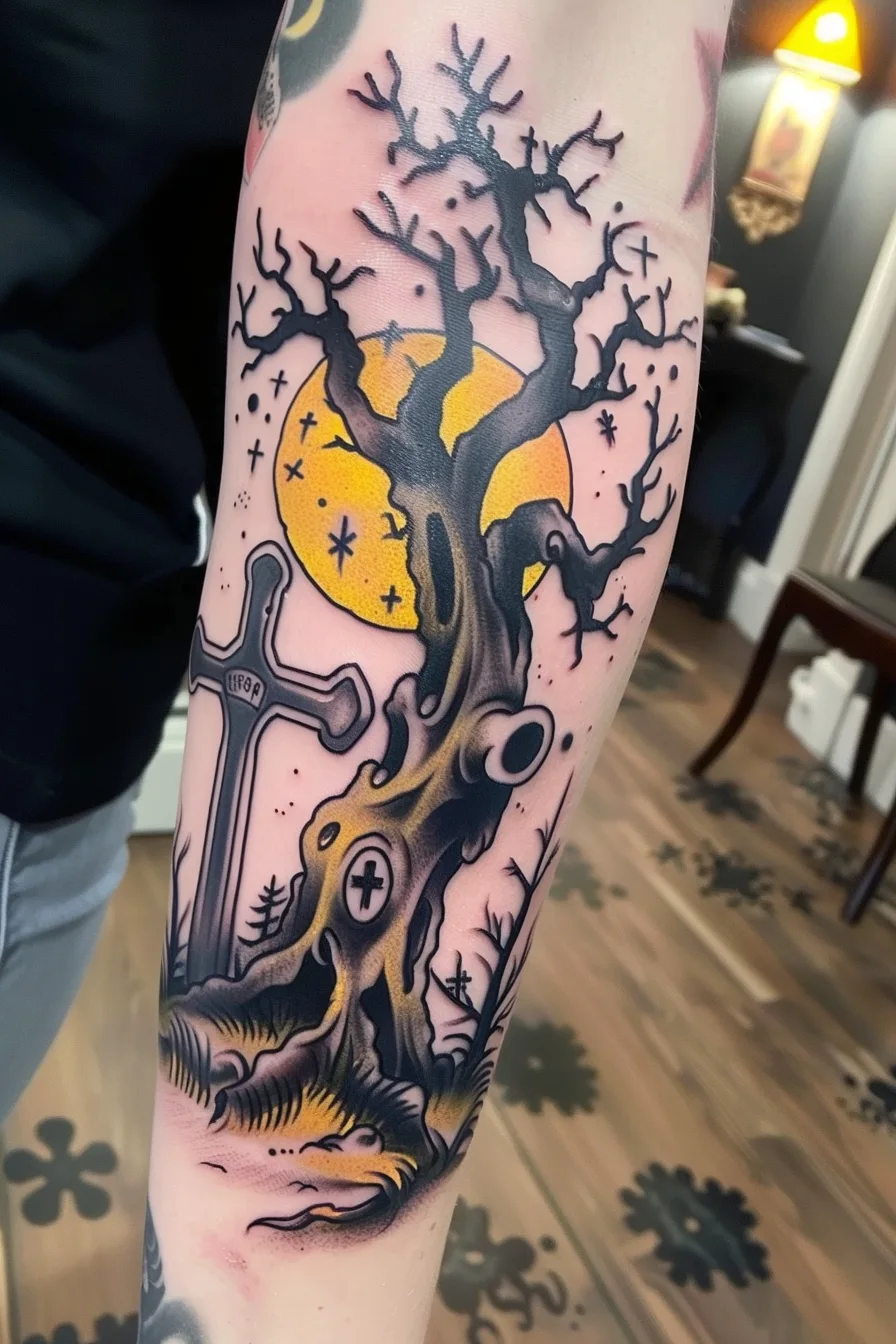
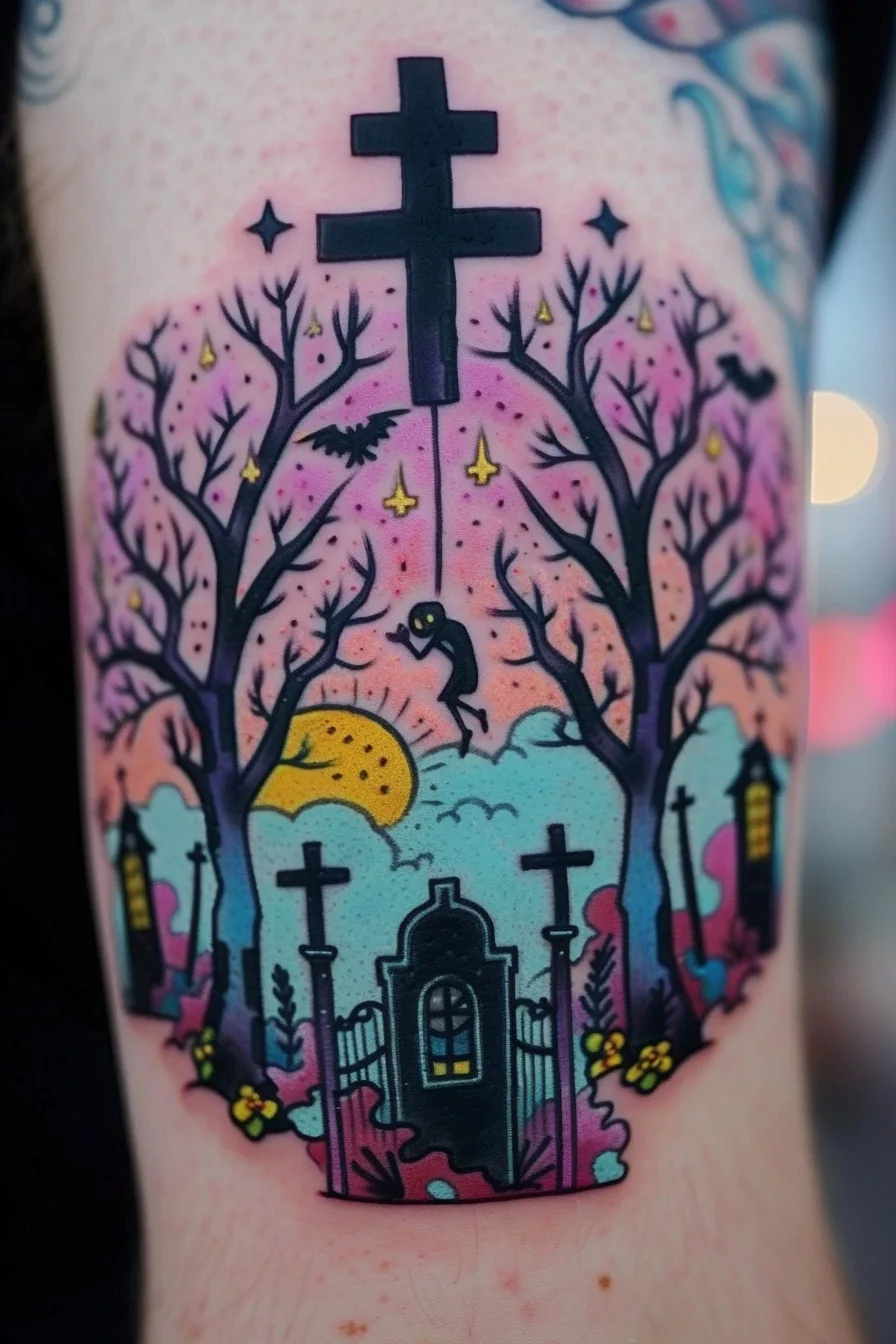
Watercolor Style
Among the various design styles commonly seen with graveyard tattoos, the watercolor style has gained significant popularity in recent years. This impressionistic style lends an ethereal quality to the tattoo, with soft, blended colors that evoke a dreamlike, almost haunting effect.
The watercolor technique creates a sense of fluidity and movement, as if the tattoo is gently flowing across the skin. This style is particularly well-suited for graveyard scenes, where the hazy, atmospheric quality can effectively capture the somber and mysterious nature of the subject matter.
The watercolor approach allows for a unique and visually striking interpretation of the graveyard theme, making it a popular choice among those seeking a more artistic and evocative body art design.
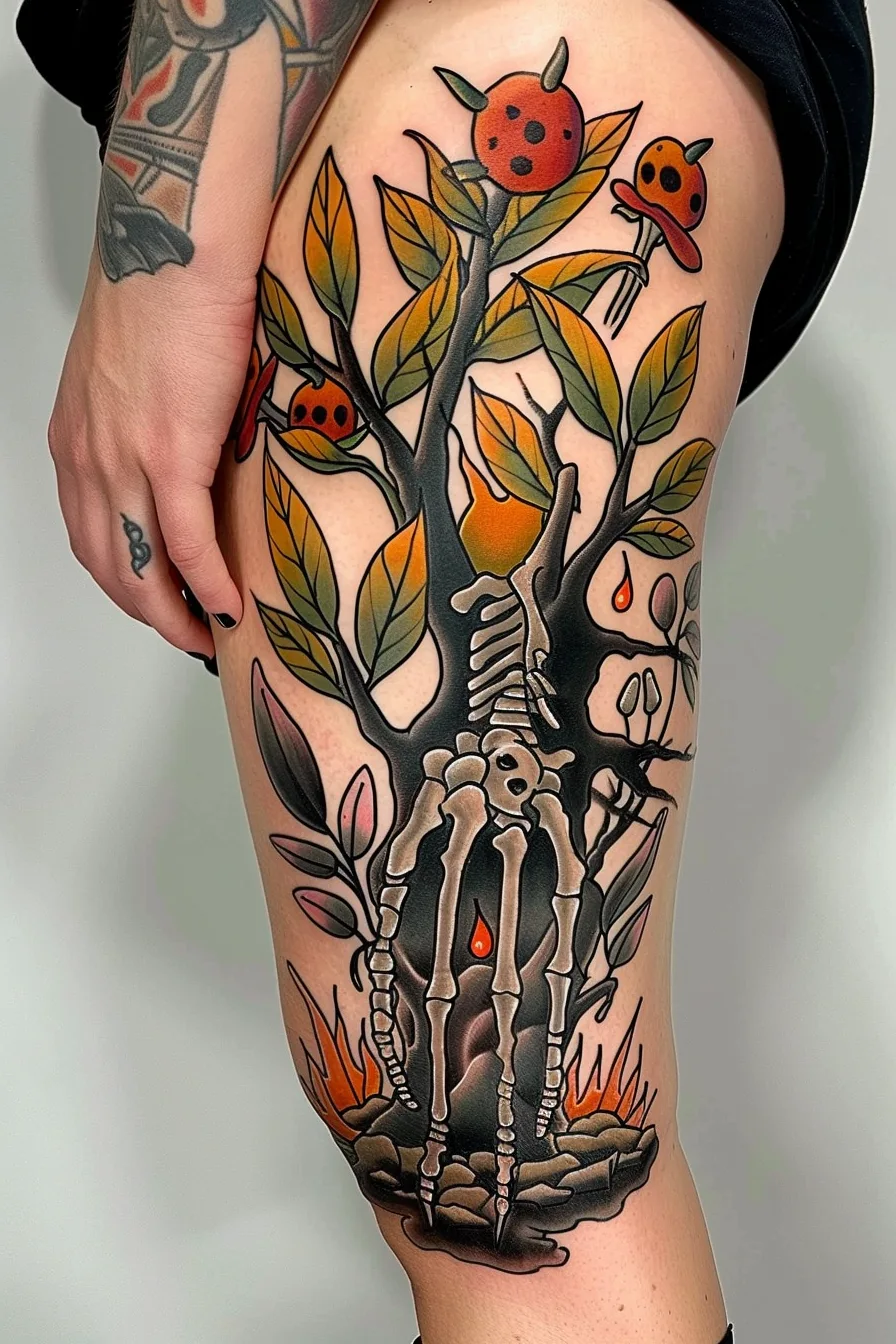
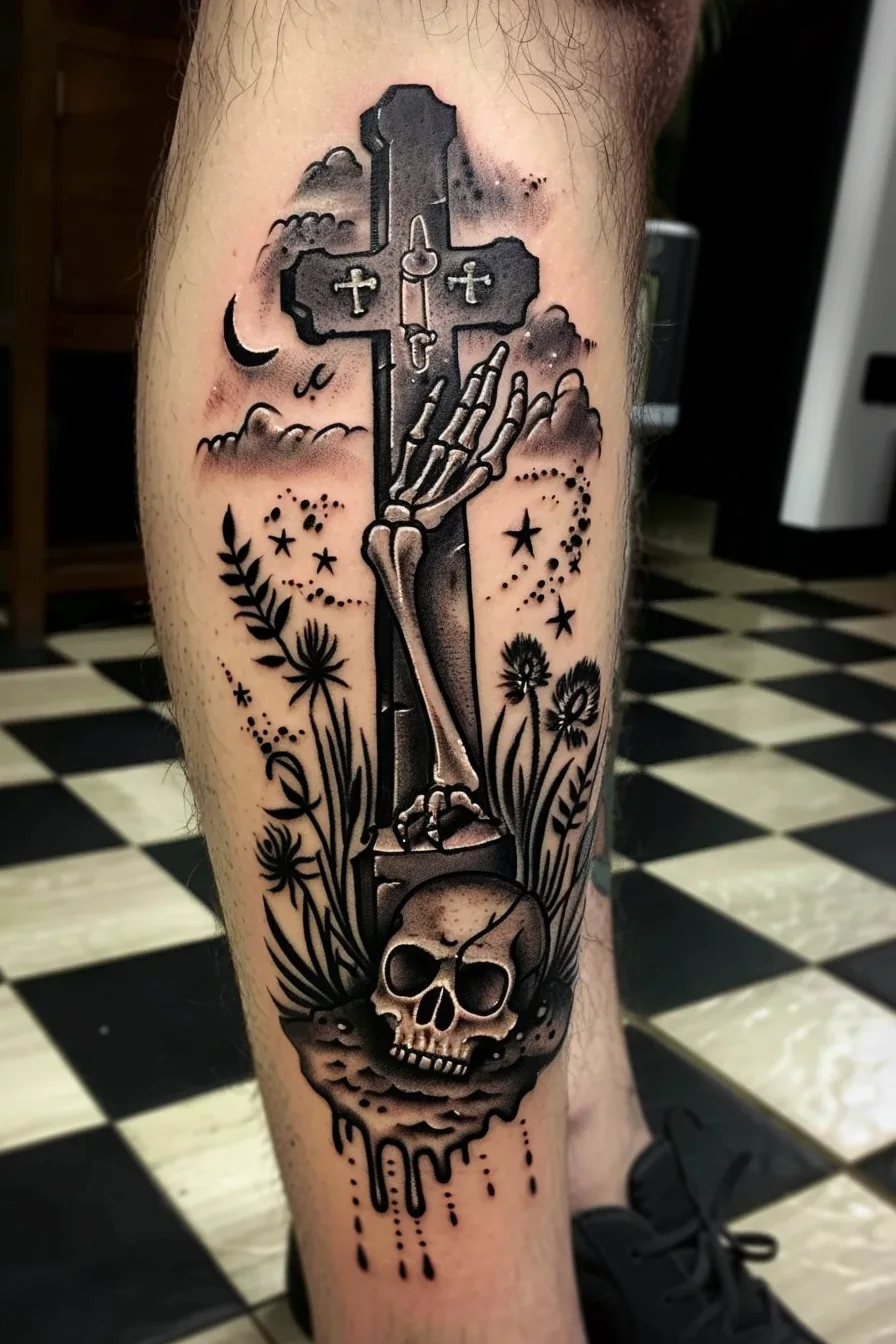

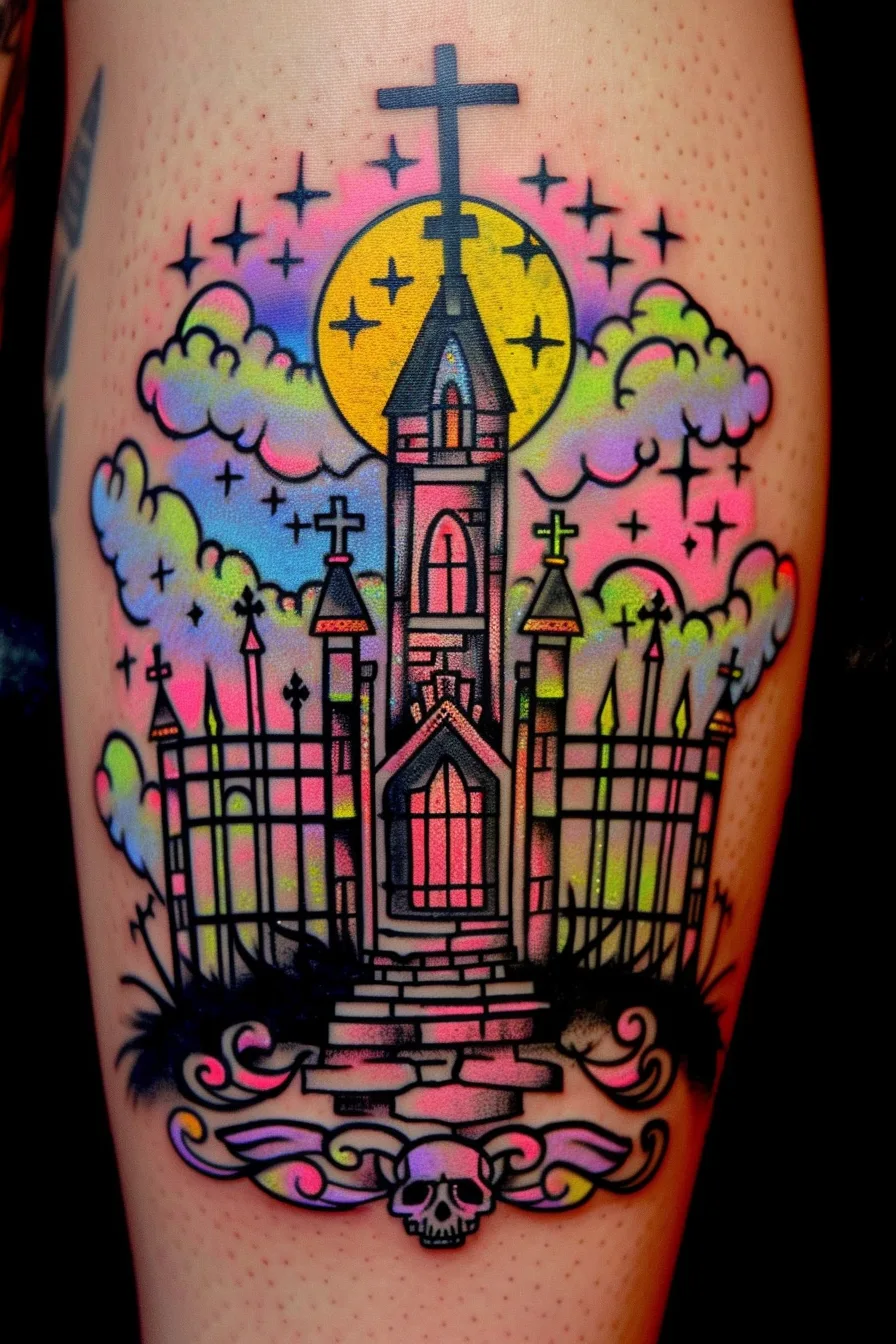
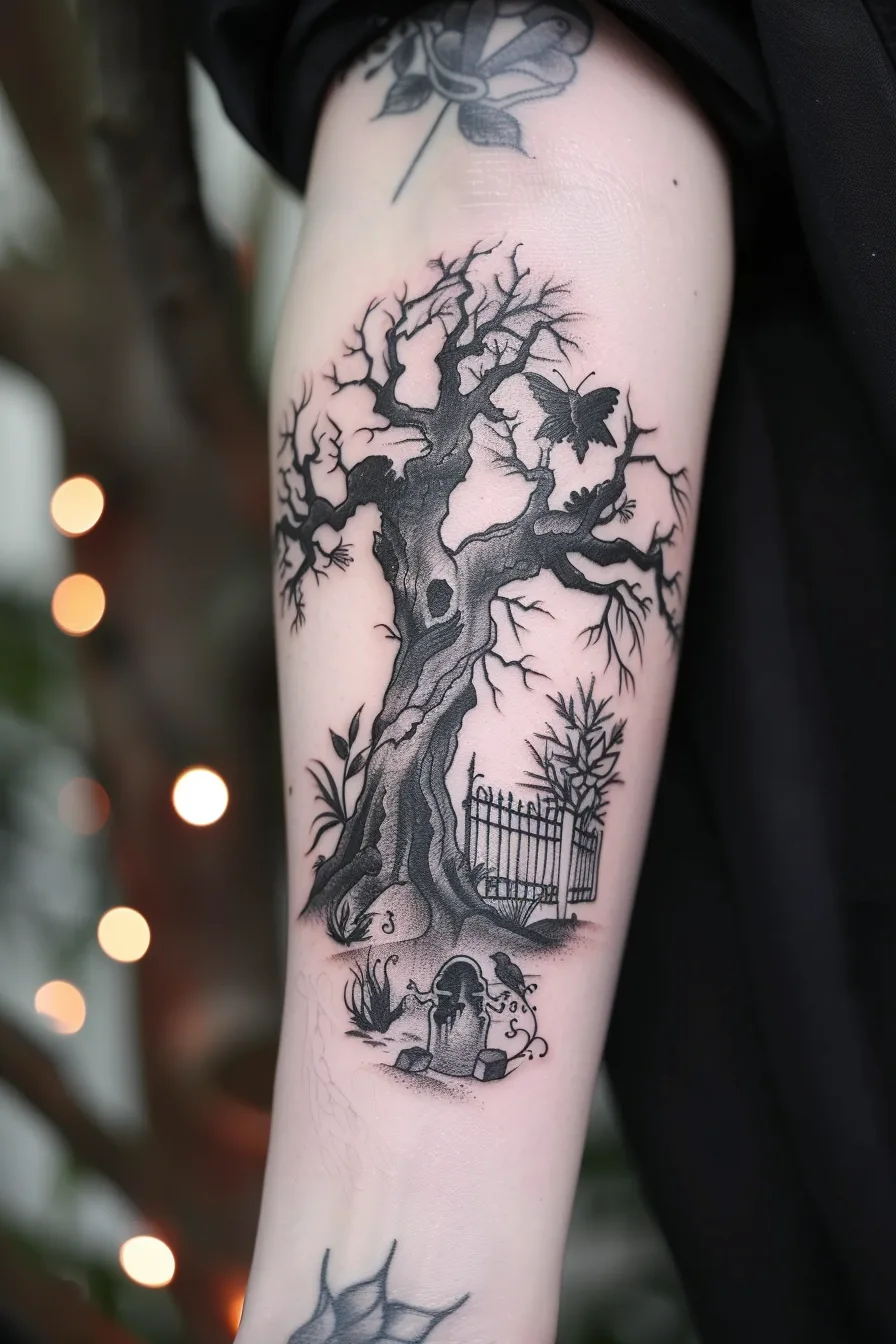
Geometric Style
In contrast to the watercolor style's ethereal quality, the geometric style of graveyard tattoos often presents a more structured and angular approach to the subject matter.
The symbolism of geometric patterns, such as triangles, squares, and hexagons, can convey a sense of stability, balance, and spiritual significance. These shapes are often used to represent the connection between the earthly and the divine, reflecting the notion that the graveyard is a sacred space where the physical and the metaphysical intersect.
The geometric style's focus on clean lines and precise forms can also suggest a sense of order and control, which can be comforting for those seeking to find meaning and purpose in the face of mortality.

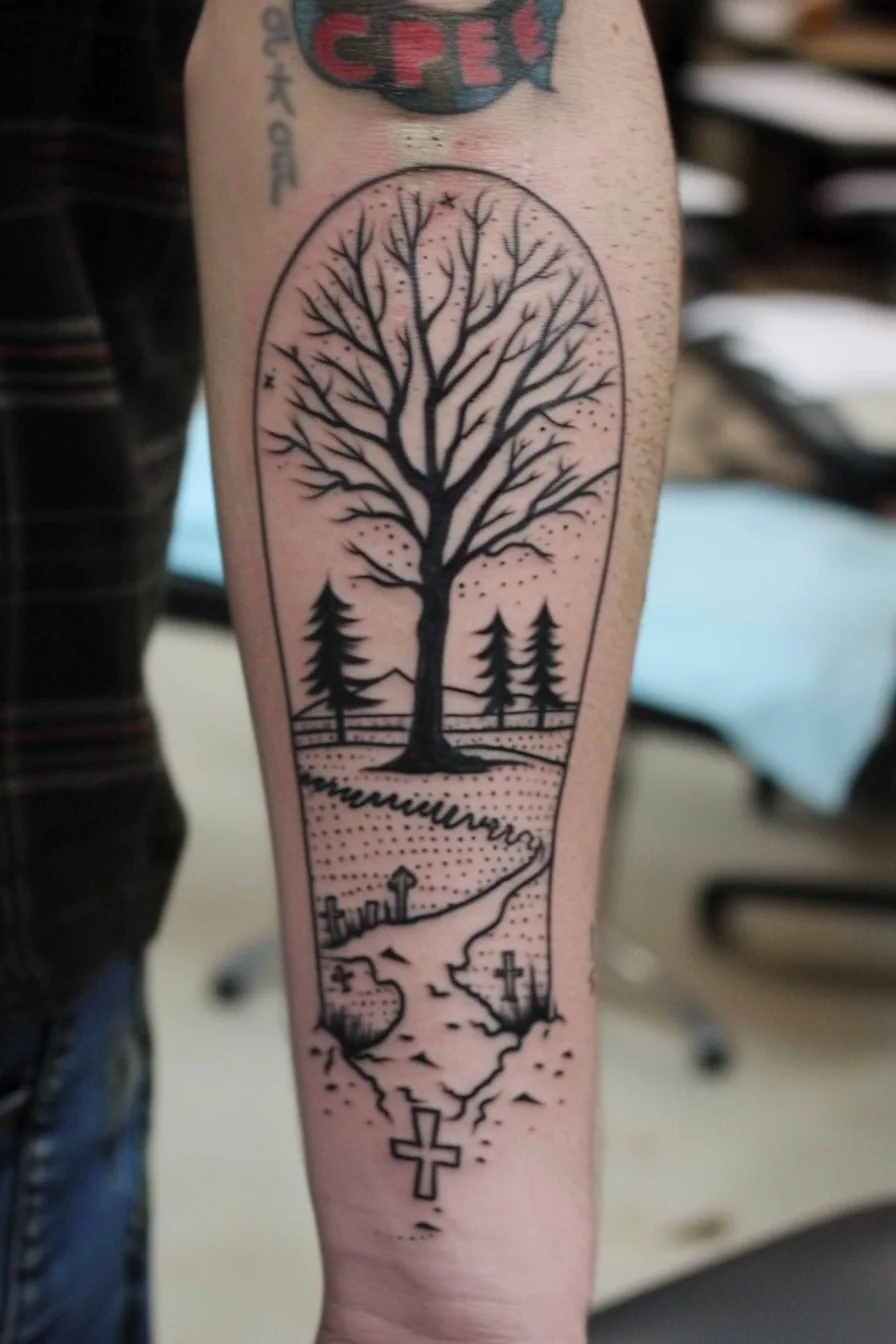
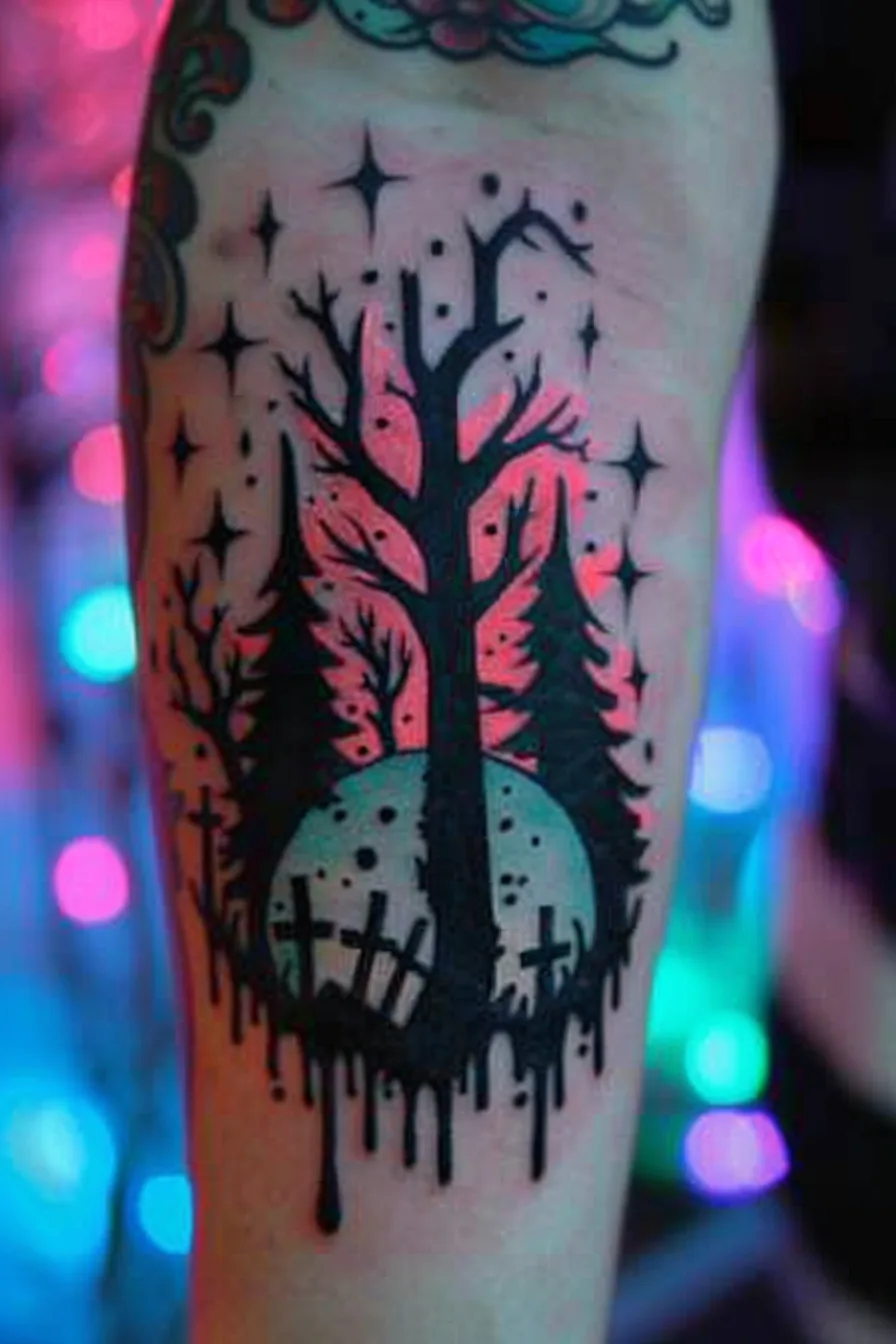
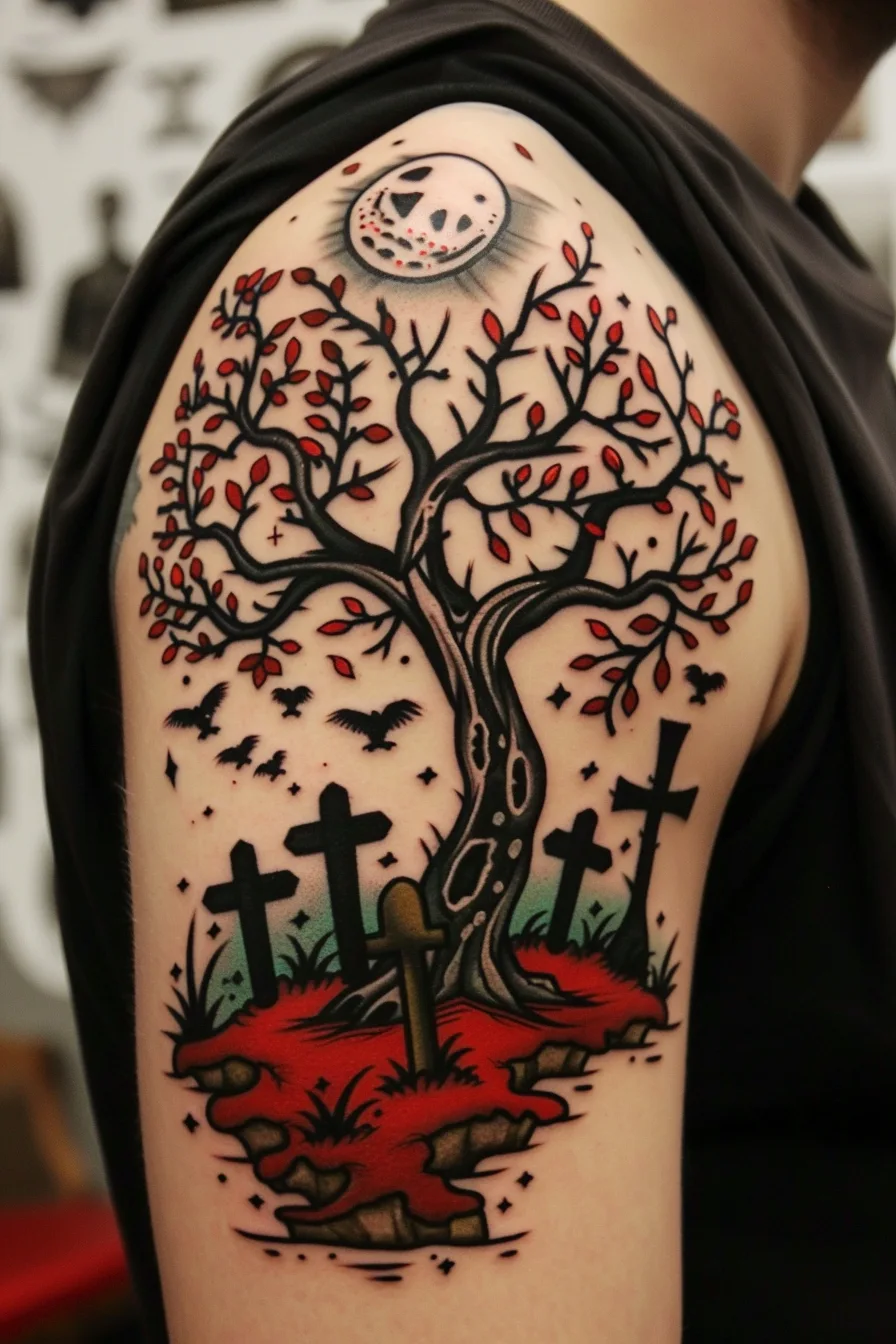

Realistic Style
Depicting the graveyard with a realistic approach often imbues the tattoo design with a sense of solemnity and reverence, capturing the sombre essence of the subject matter. In contrast to the abstract style, realistic graveyard tattoos strive for portrait-like accuracy, rendering every tombstone, tree, and wisp of fog in meticulous detail.
This level of realism can lend a hauntingly beautiful quality to the design, inviting the viewer to pause and reflect on the deeper meaning behind the imagery. By blending technical mastery with emotional resonance, realistic graveyard tattoos offer a powerful and evocative way to commemorate the lives of the departed.
The level of detail and precision required in this style demands the skilled hand of an experienced tattoo artist.
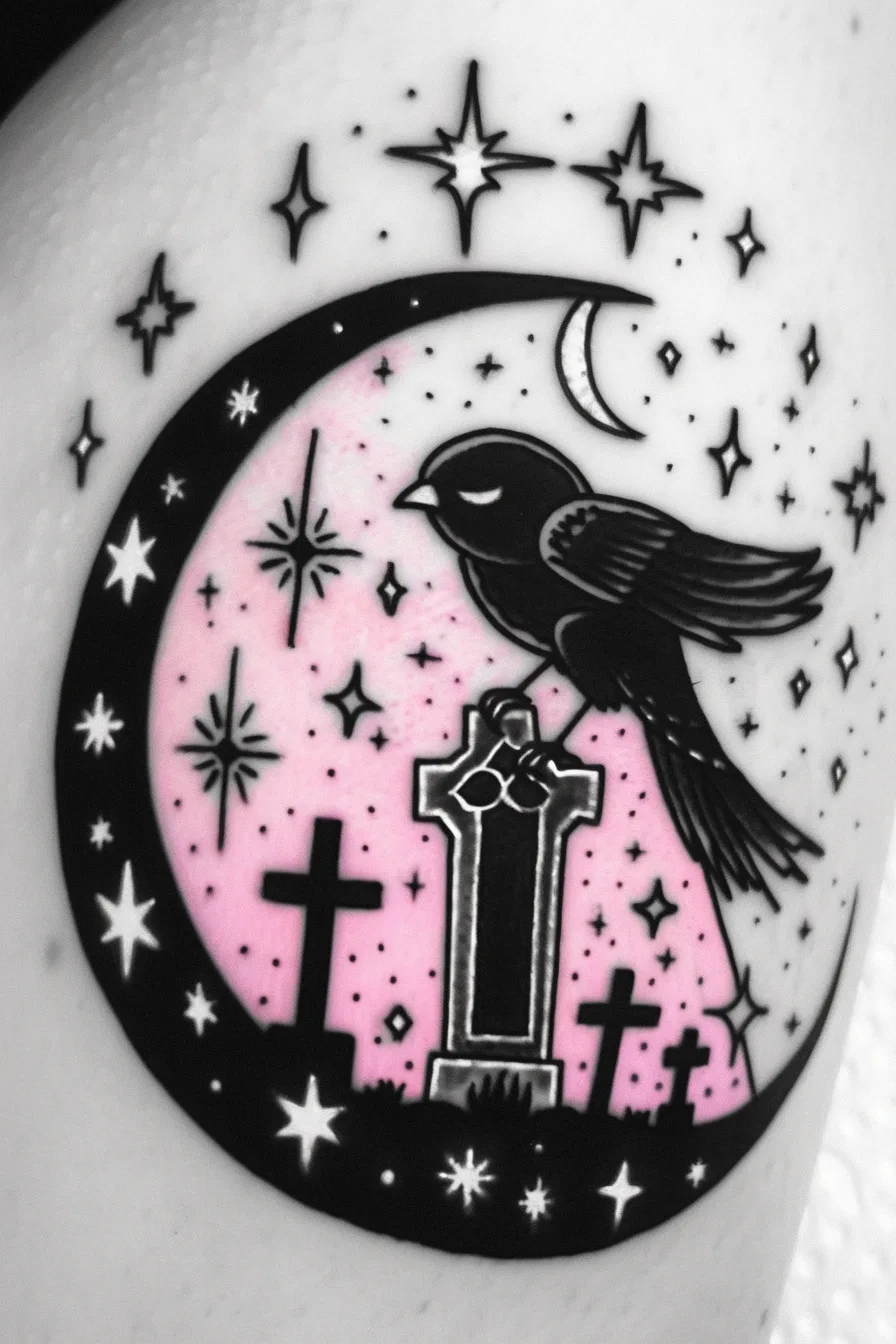
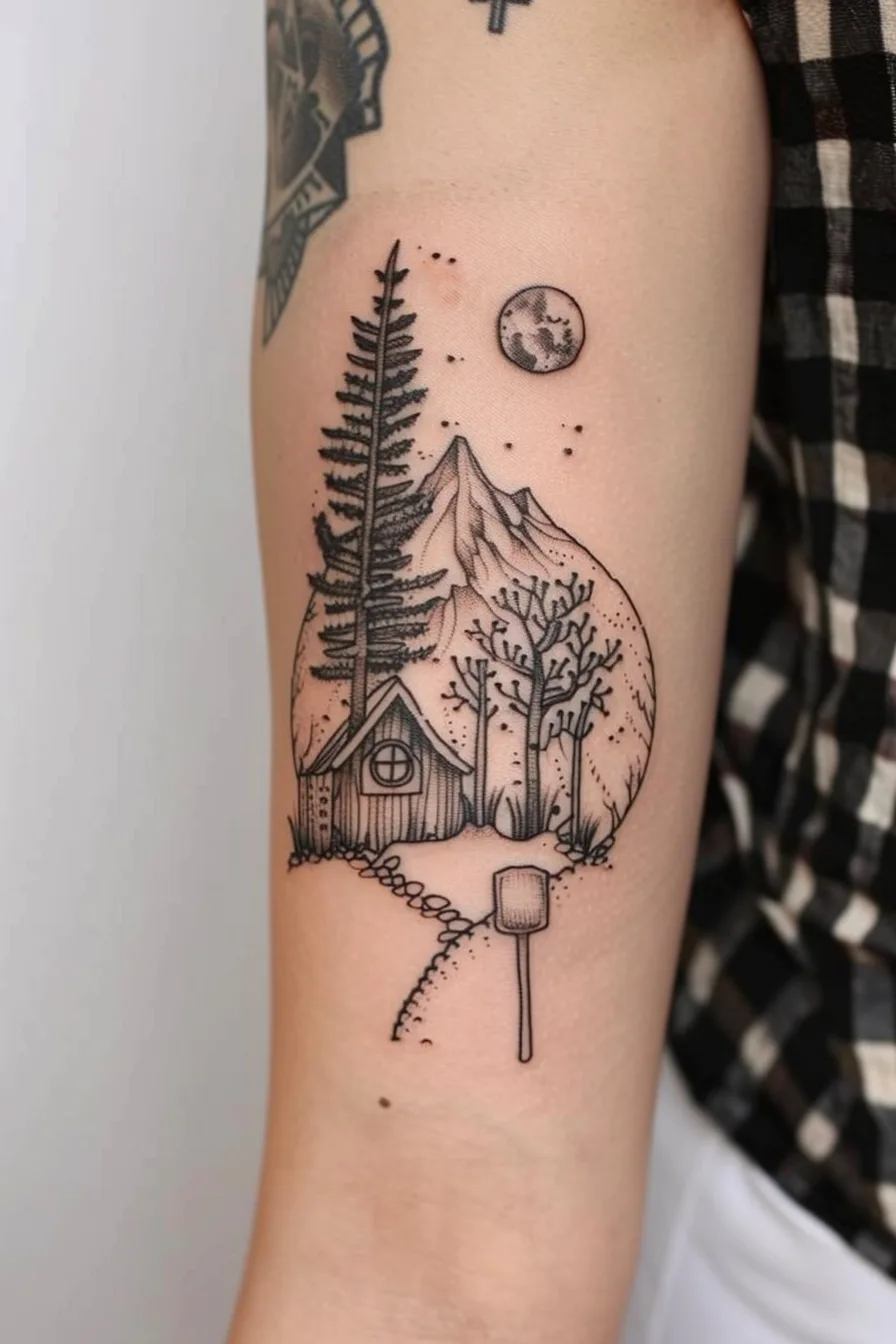
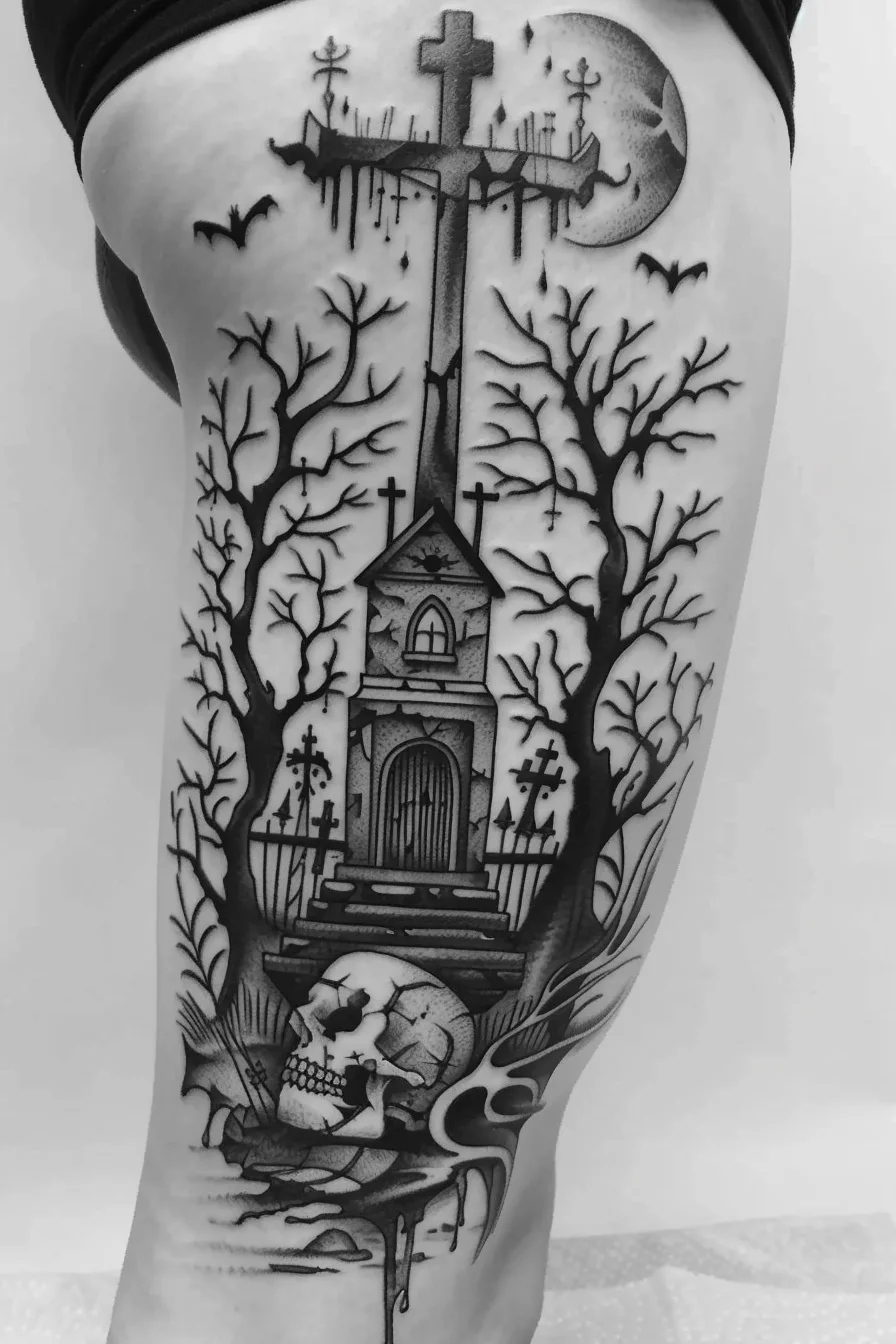
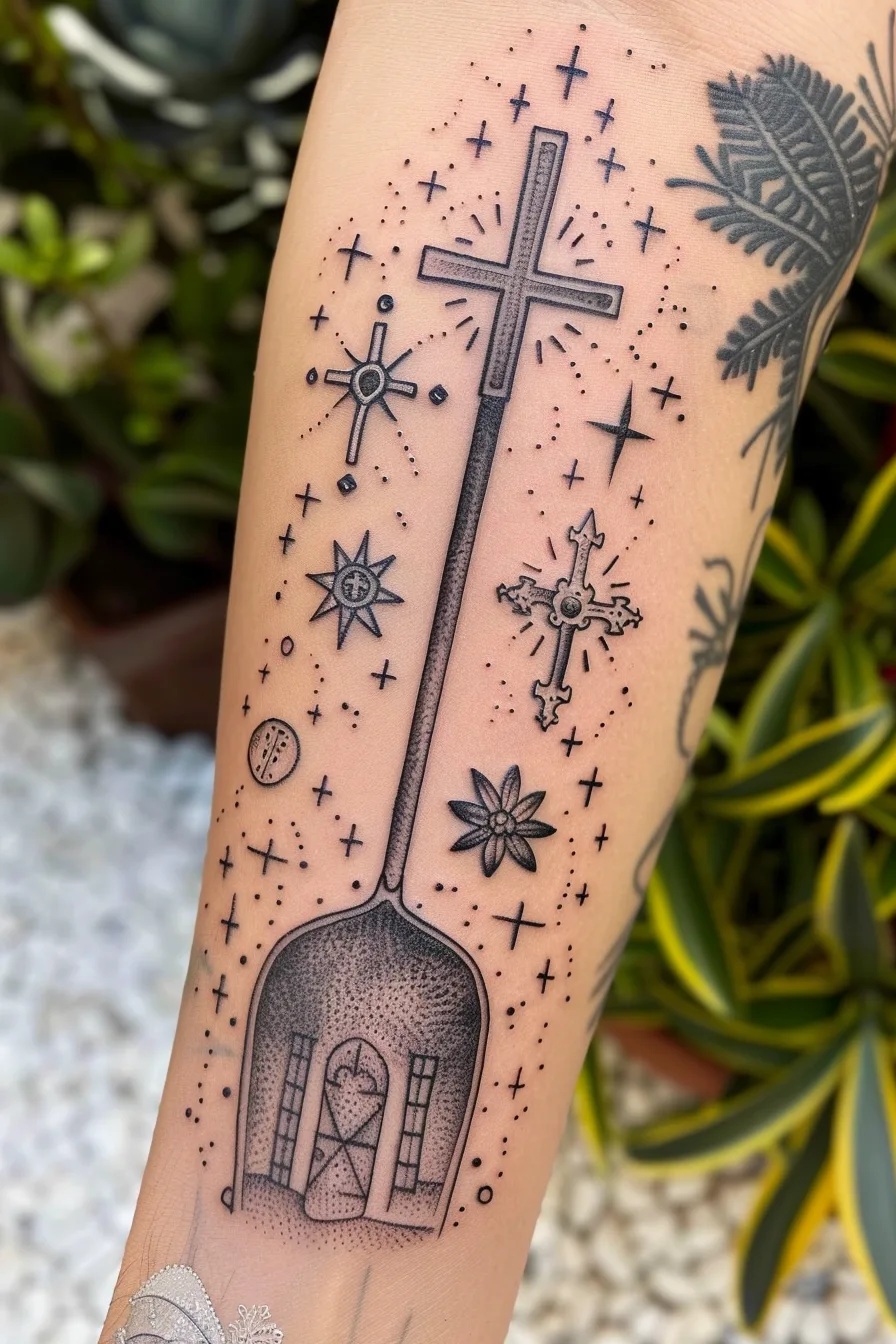
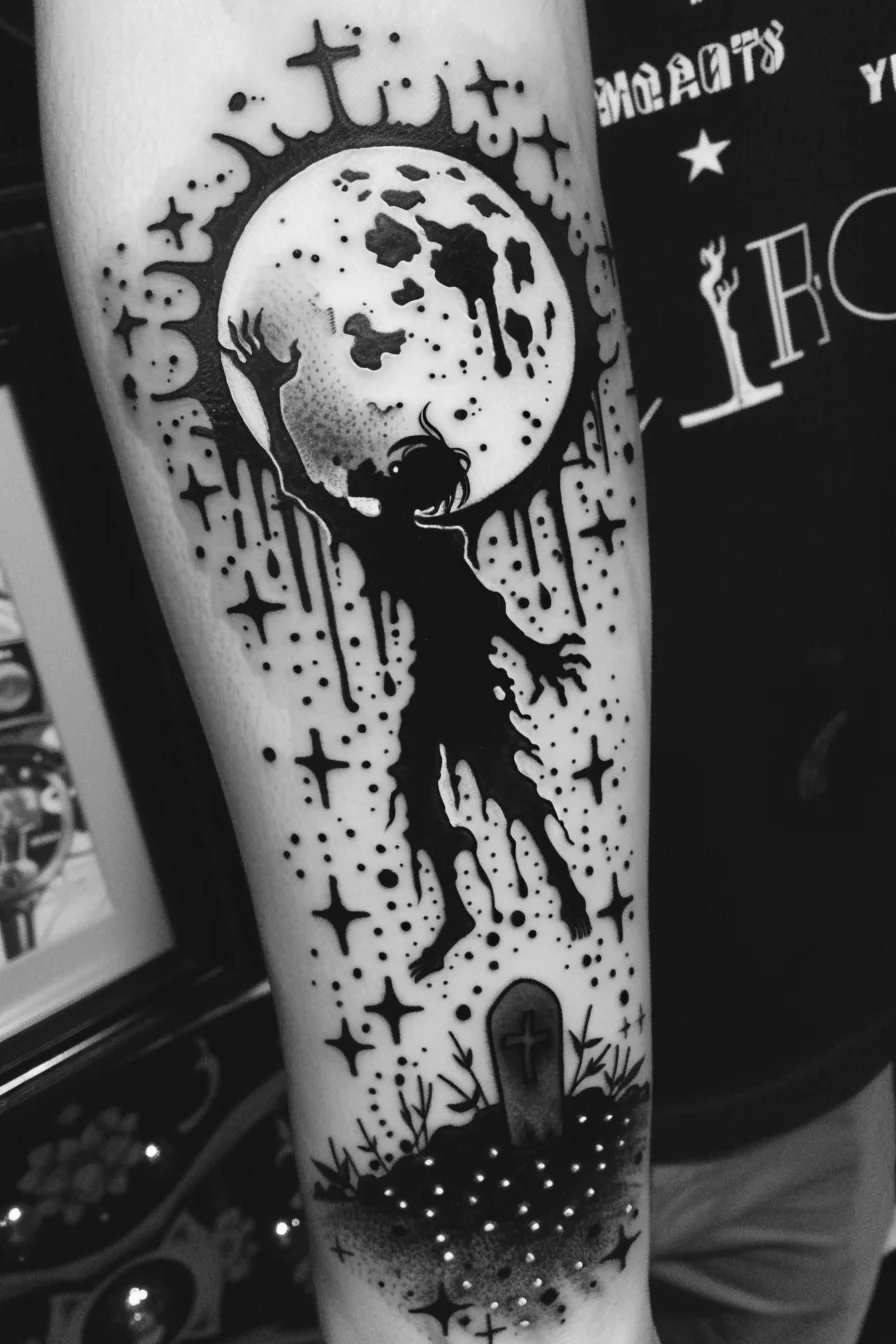
Blackwork Style
Another common design style for graveyard tattoos is the blackwork approach. This style relies on bold, solid black lines and shapes to create a dramatic, high-contrast representation of the graveyard landscape.
Blackwork graveyard tattoos often feature silhouetted elements like tombstones, bare trees, and looming gates, eschewing fine details in favor of a more graphic, illustrative aesthetic. The stark, minimalist quality of this style can lend an impressively bold and impactful visual presence to the tattoo, while also allowing the artist to focus on the essential forms and compositions that convey the essence of the graveyard motif.
This style can also incorporate a distressed aesthetic, with hand-drawn designs that evoke a sense of age and weathering, adding to the moody, atmospheric quality of the tattoo.
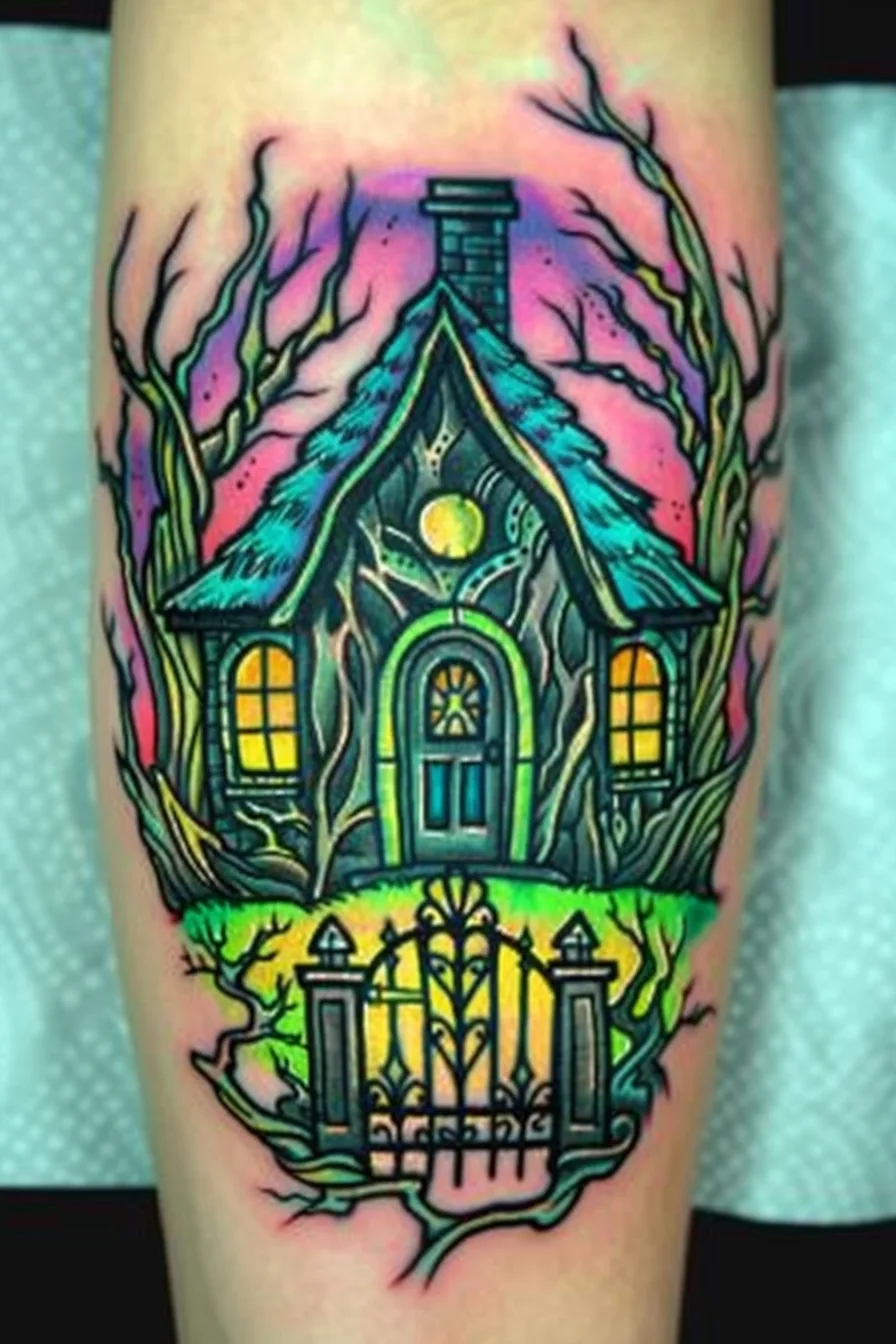
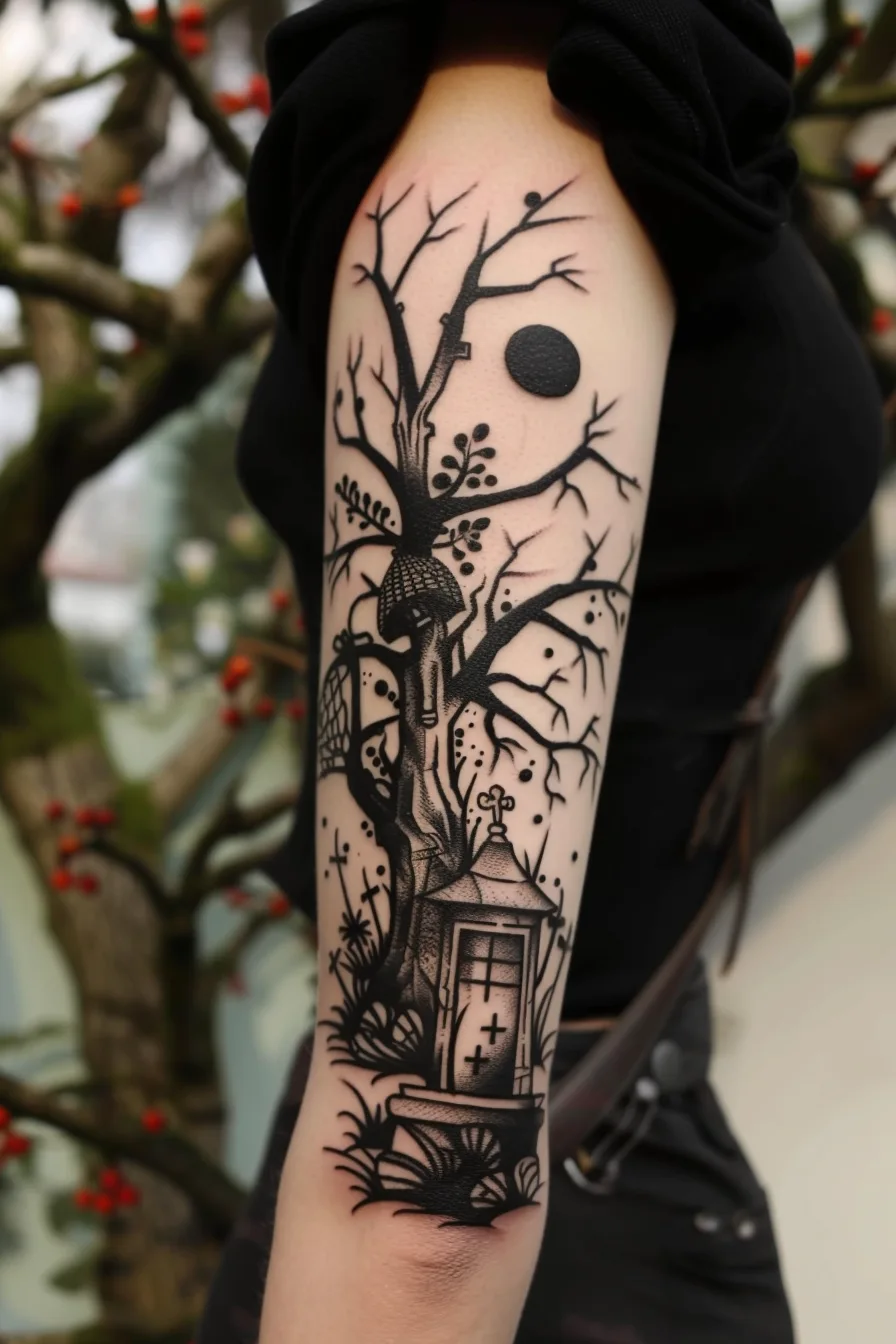


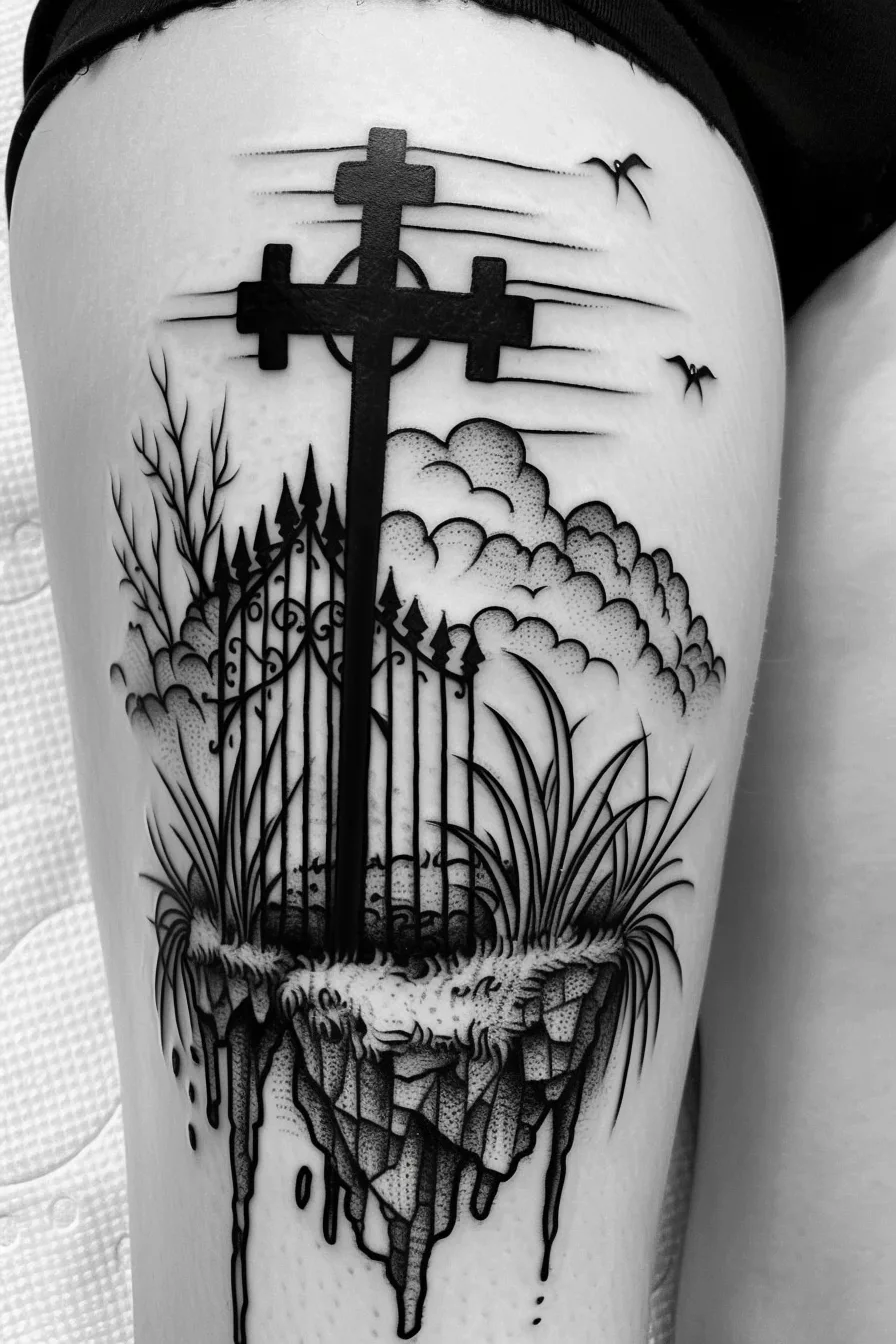
Minimalist Style
Minimalist graveyard tattoos feature a pared-down, streamlined aesthetic, prioritizing simplicity and clean lines over intricate details. These designs often rely on the strategic use of negative space, with key elements like tombstones, cypress trees, or haunting silhouettes standing out against a bare, unadorned background.
The minimalist approach lends a powerful, impactful presence to the tattoo, allowing the core symbols and motifs to take center stage without distractions. This minimal elegance is achieved through a minimalist emphasis on essential imagery, creating a tattoo that is both visually striking and deeply symbolic.
The restrained, refined style of minimalist graveyard tattoos appeals to those seeking a design that is both aesthetically pleasing and profoundly meaningful.

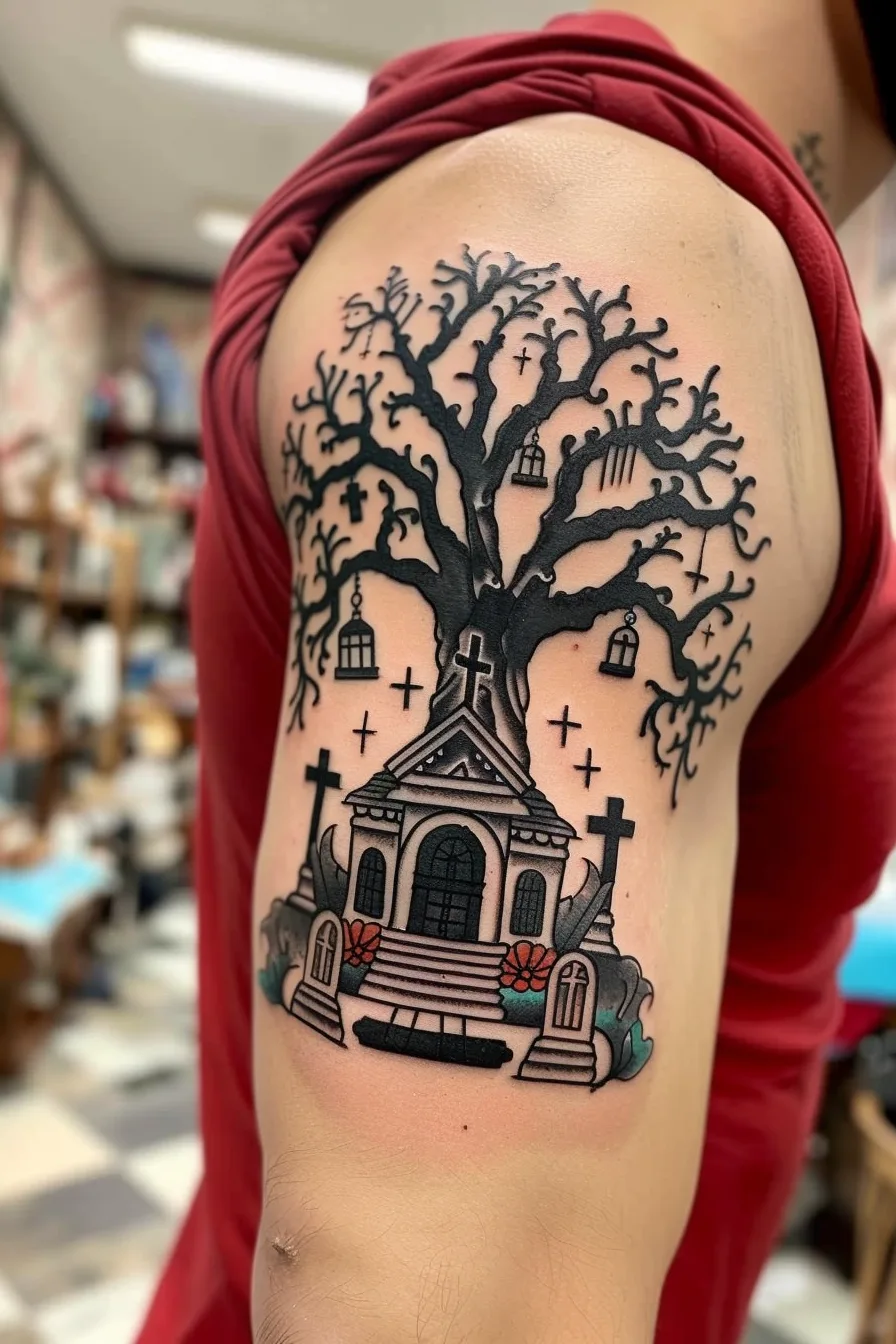


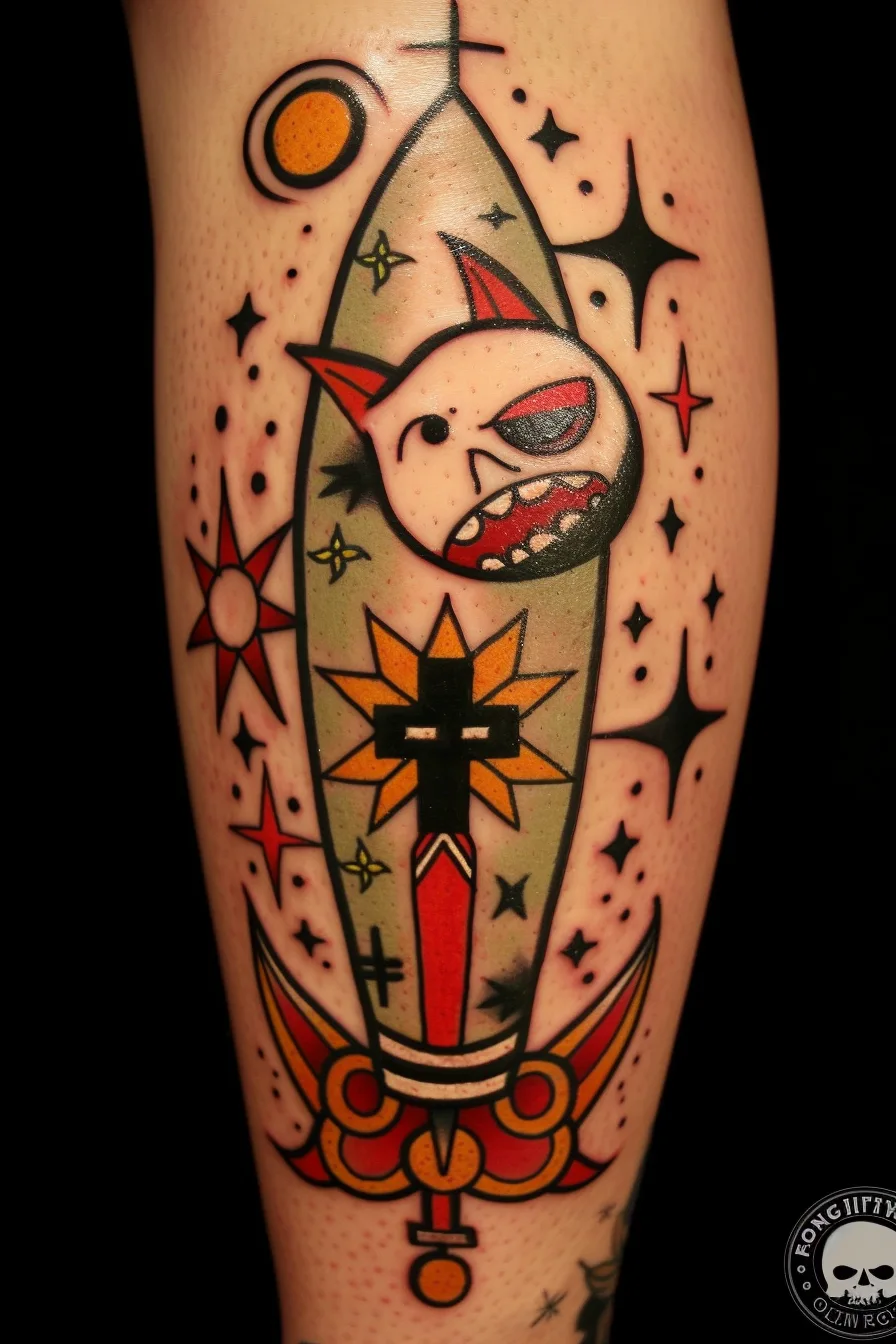
Mandala Style
In contrast to the sleek, pared-down aesthetic of minimalist graveyard tattoos, a mandala-inspired approach offers a more ornate and intricate design style.
Mandalas, which are circular symbolic designs often used in spiritual and meditative practices, can be seamlessly incorporated into graveyard-themed tattoos to create a visually captivating and symbolically rich composition.
The intricate patterns and meaningful symbols within a mandala can hold deep personal significance, serving as a powerful representation of one's beliefs, values, or connection to the cycle of life and death.
This style allows for a more detailed and expressive take on the graveyard theme, appealing to those who seek a tattoo that is both aesthetically striking and symbolically resonant.
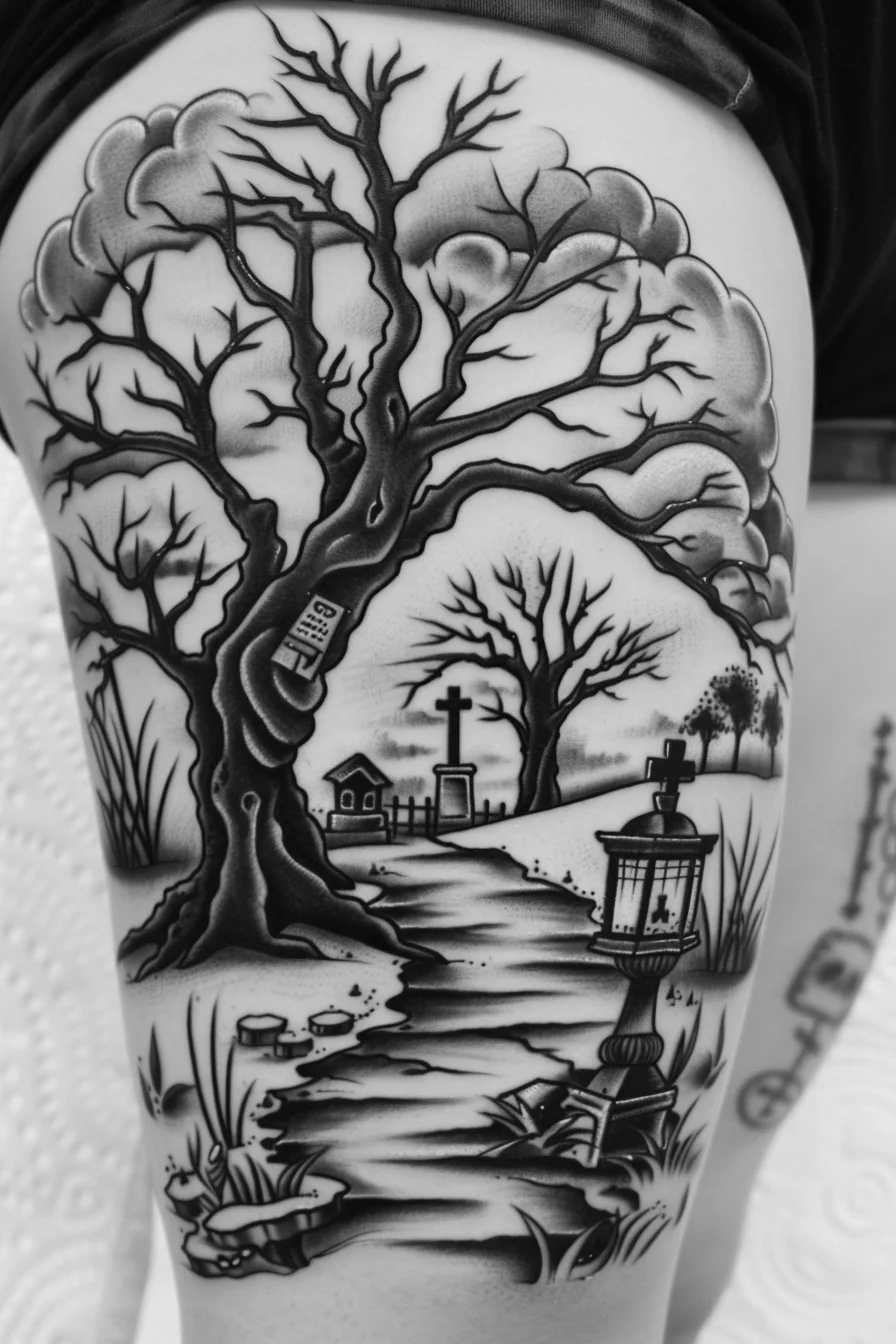
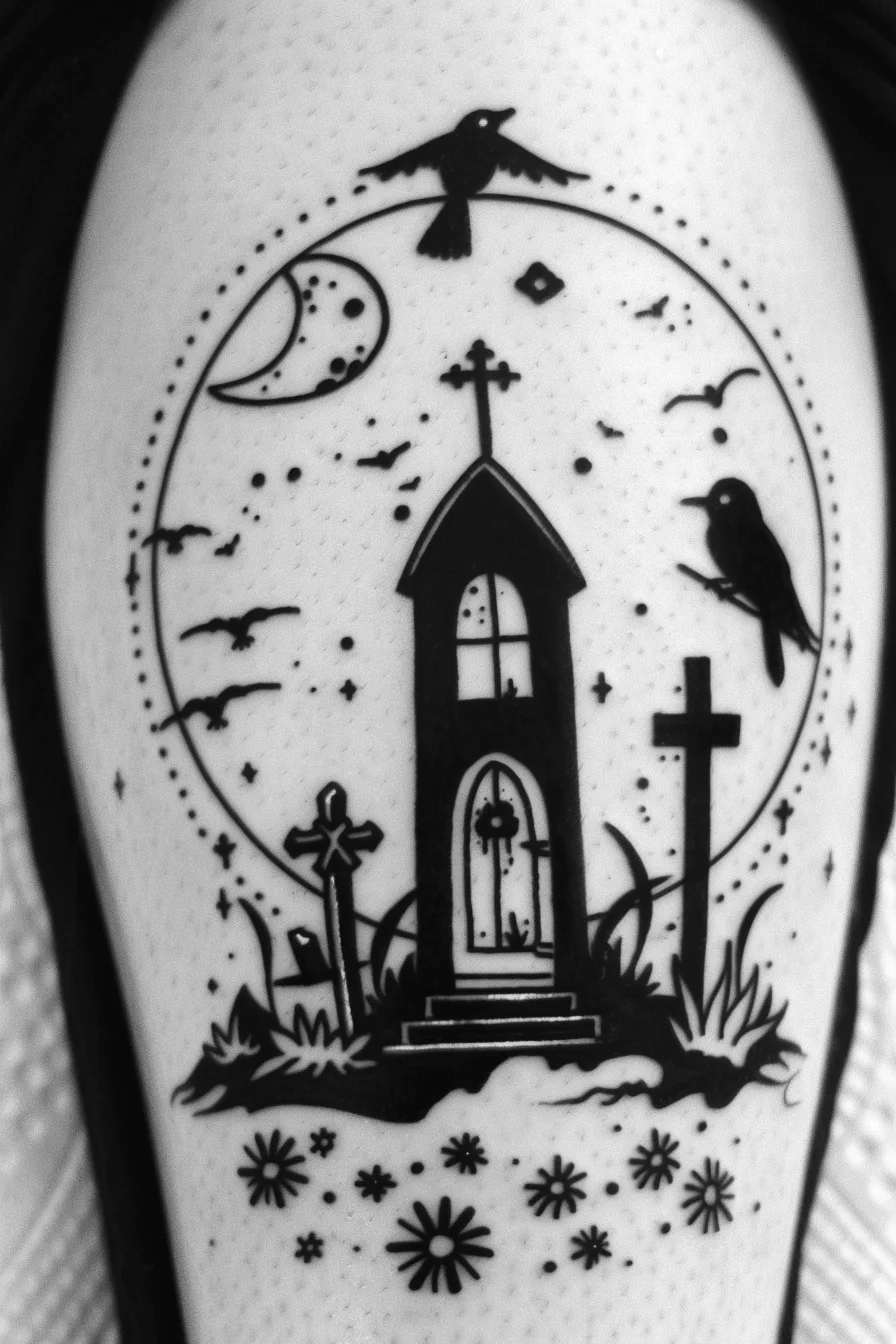
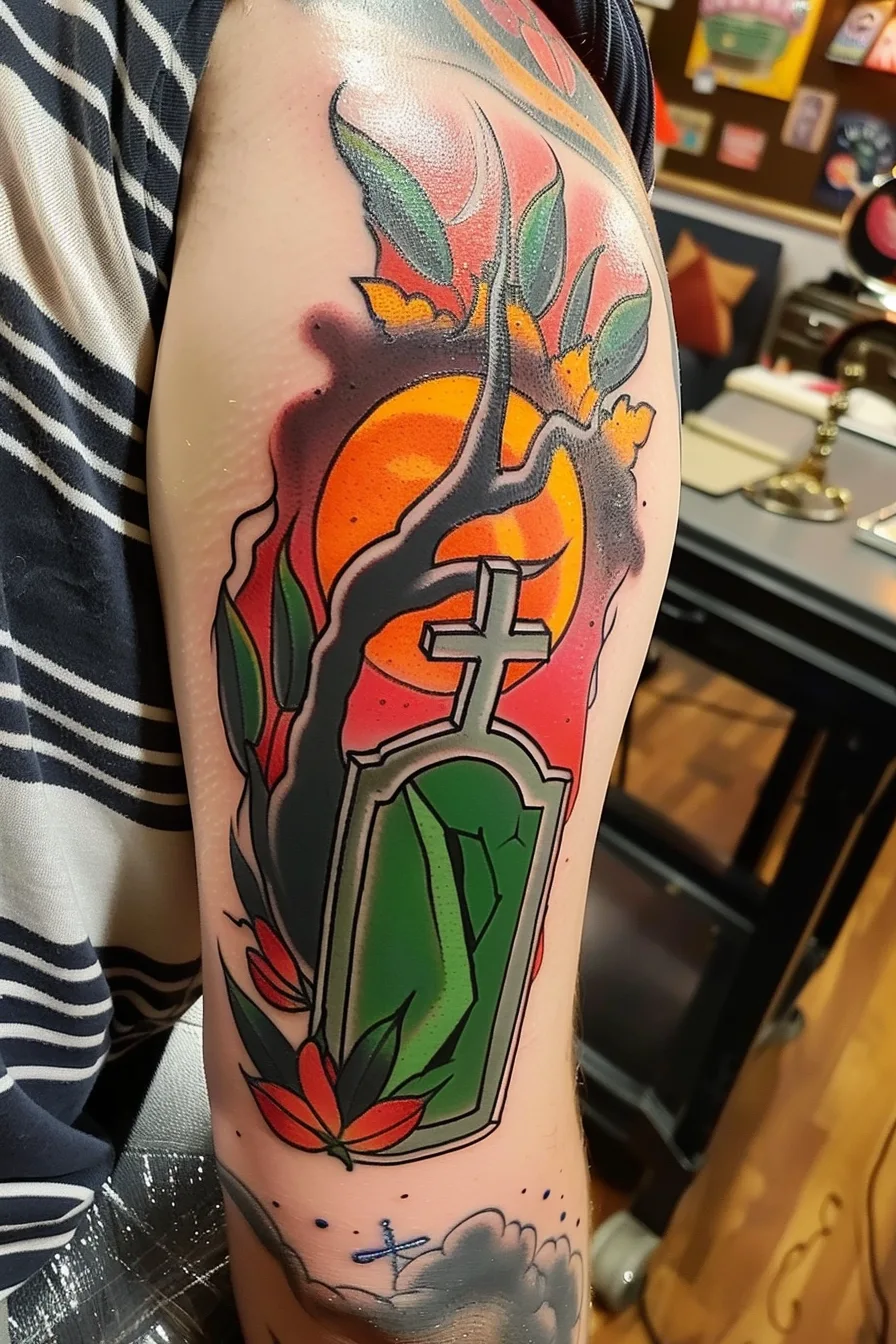
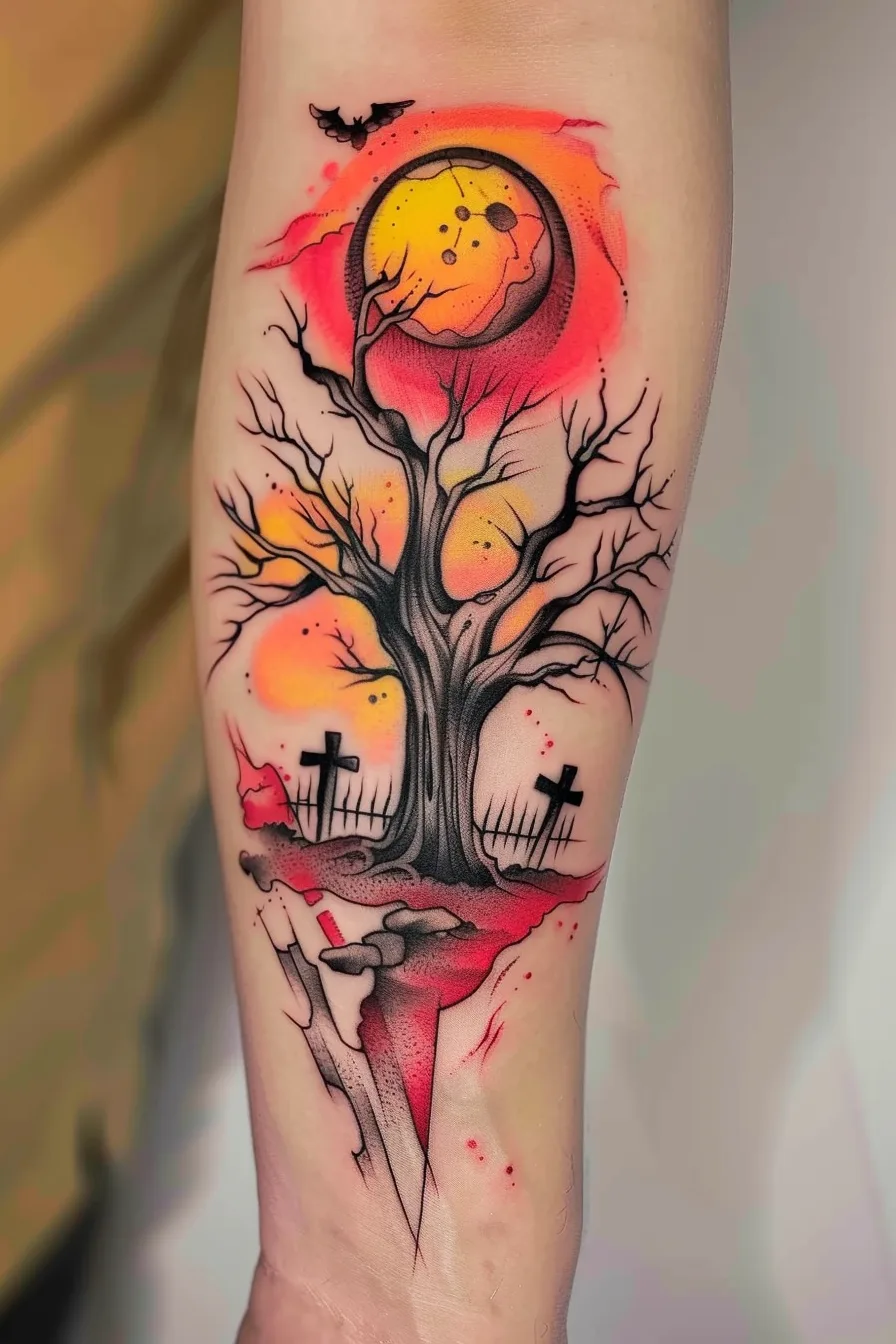
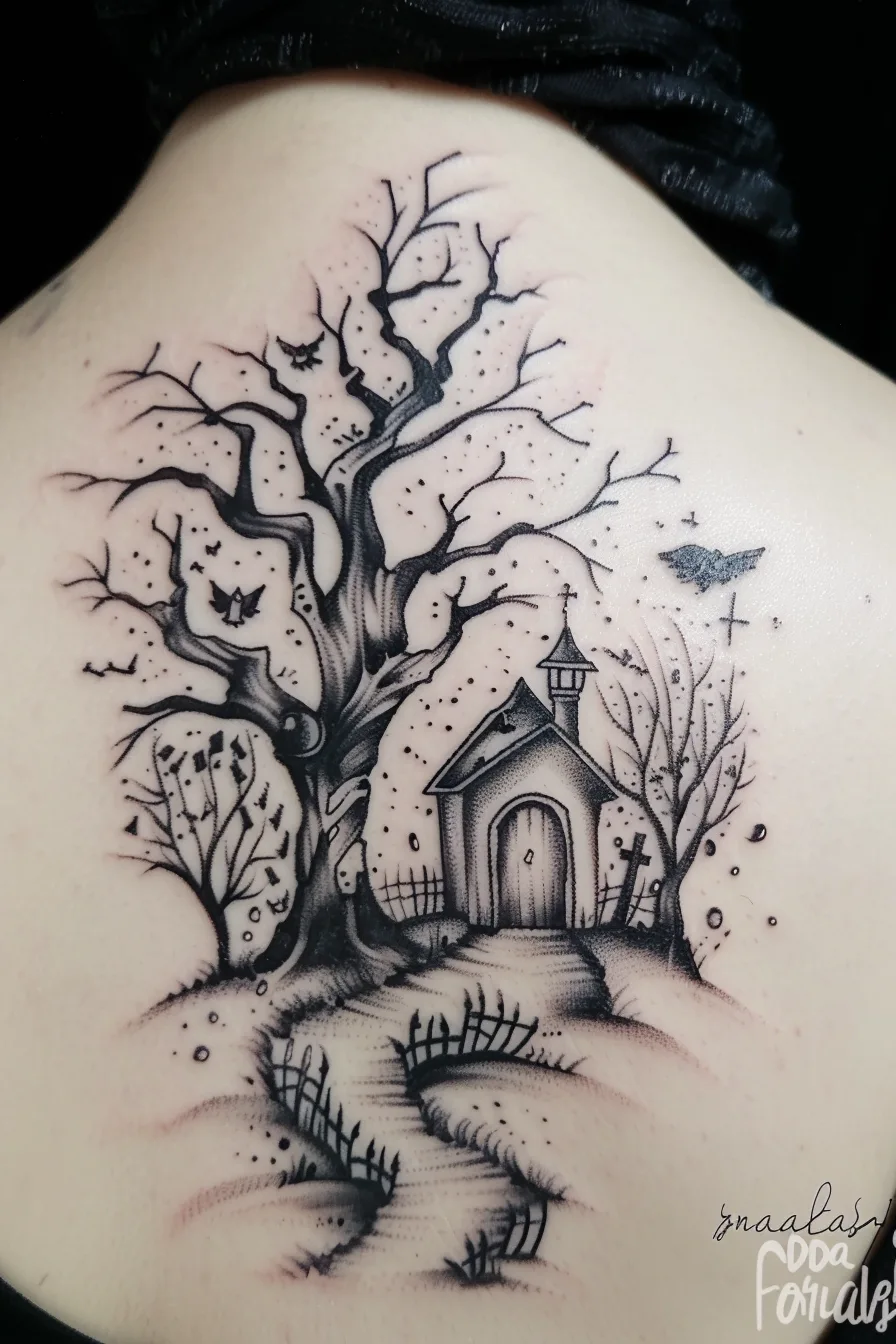
American Traditional Style
Significantly, the American Traditional style represents a classic and enduring approach to graveyard tattoos, characterized by bold lines, vibrant colors, and iconic imagery.
This timeless style, which emerged in the early 20th century, has maintained its appeal among both experienced and novice tattoo enthusiasts.
The hallmarks of American Traditional include the use of traditional motifs such as skulls, roses, and anchors, as well as the incorporation of bold, black outlines and a limited color palette.
This classic style offers a sense of permanence and connection to the rich history of tattoo art, making it a popular choice for those seeking a graveyard tattoo with a timeless appeal.
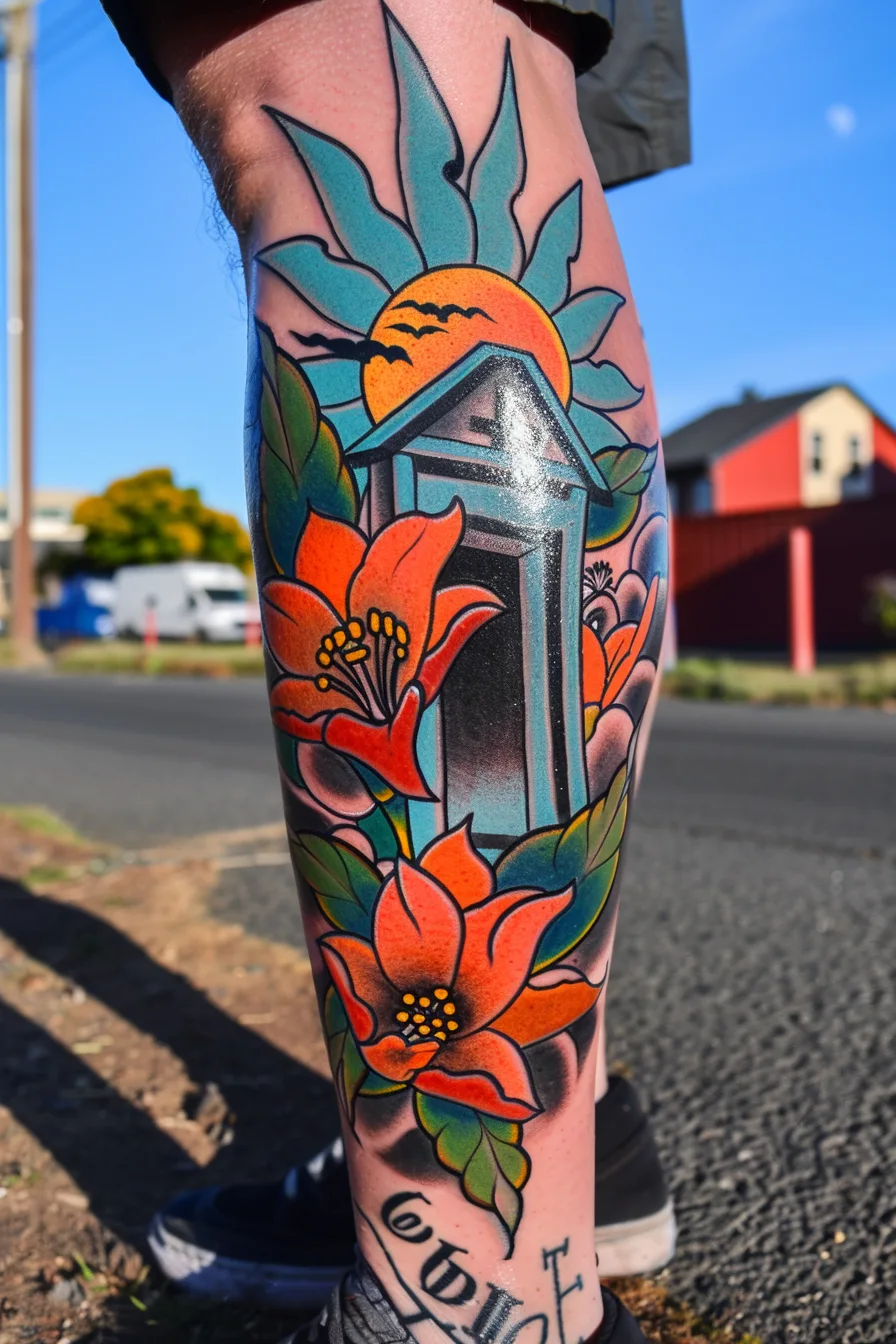
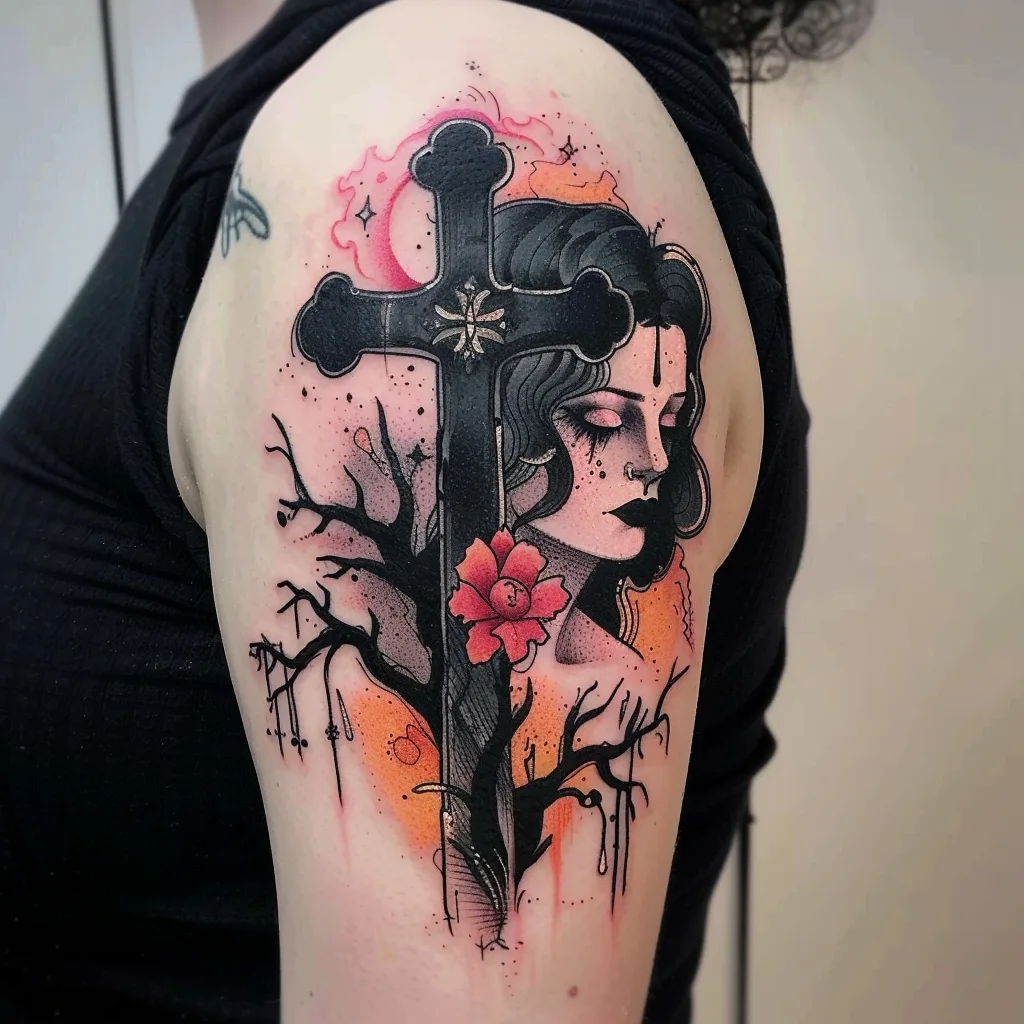
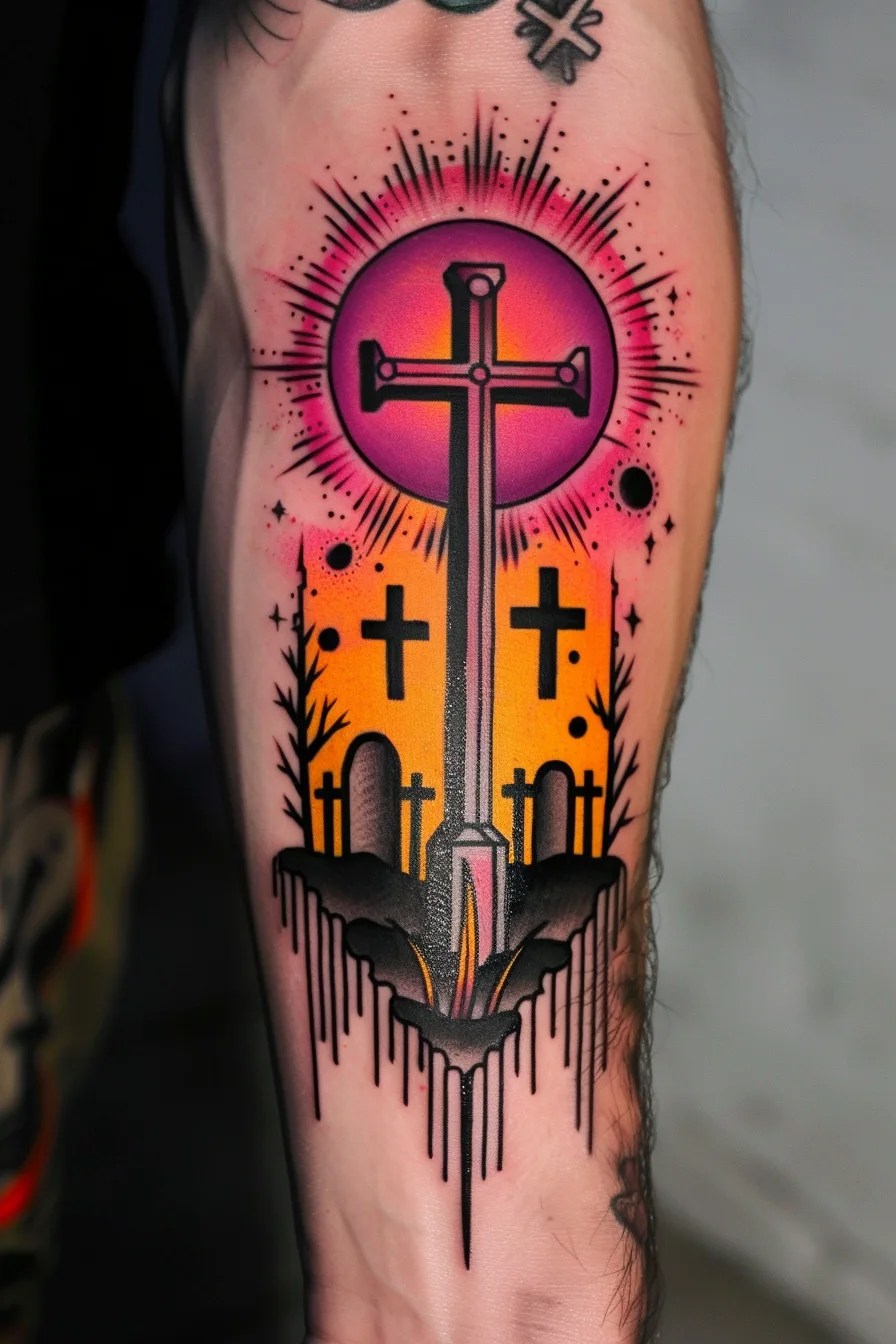

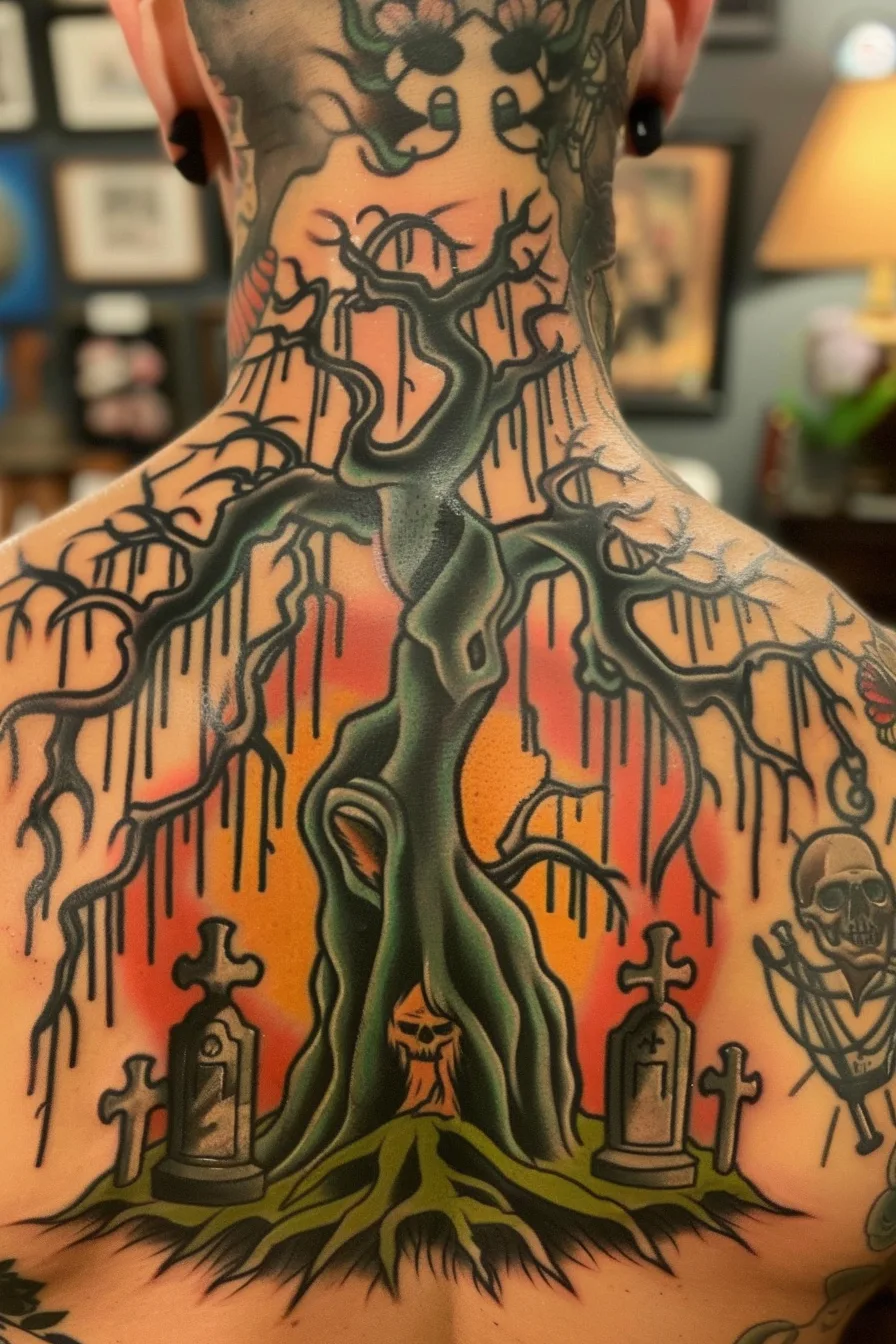
Neo-Traditional Style
Alternatively, the Neo-Traditional style represents a modern interpretation of the American Traditional approach, blending classic tattoo motifs with a more nuanced and intricate visual aesthetic.
Drawing inspiration from Gothic art influences and dark romanticism themes, Neo-Traditional tattoos often feature detailed depictions of creatures, mythological figures, or haunting landscapes.
The style's emphasis on rich color palettes, intricate linework, and a sense of dramatic flair sets it apart from the bolder, more simplistic designs of the American Traditional genre.
This evolved approach allows tattoo artists to create visually stunning pieces that captivate the viewer while still honoring the foundational elements of the traditional tattoo aesthetic.
The result is a striking and alluring style that continues to captivate the modern tattoo enthusiast.
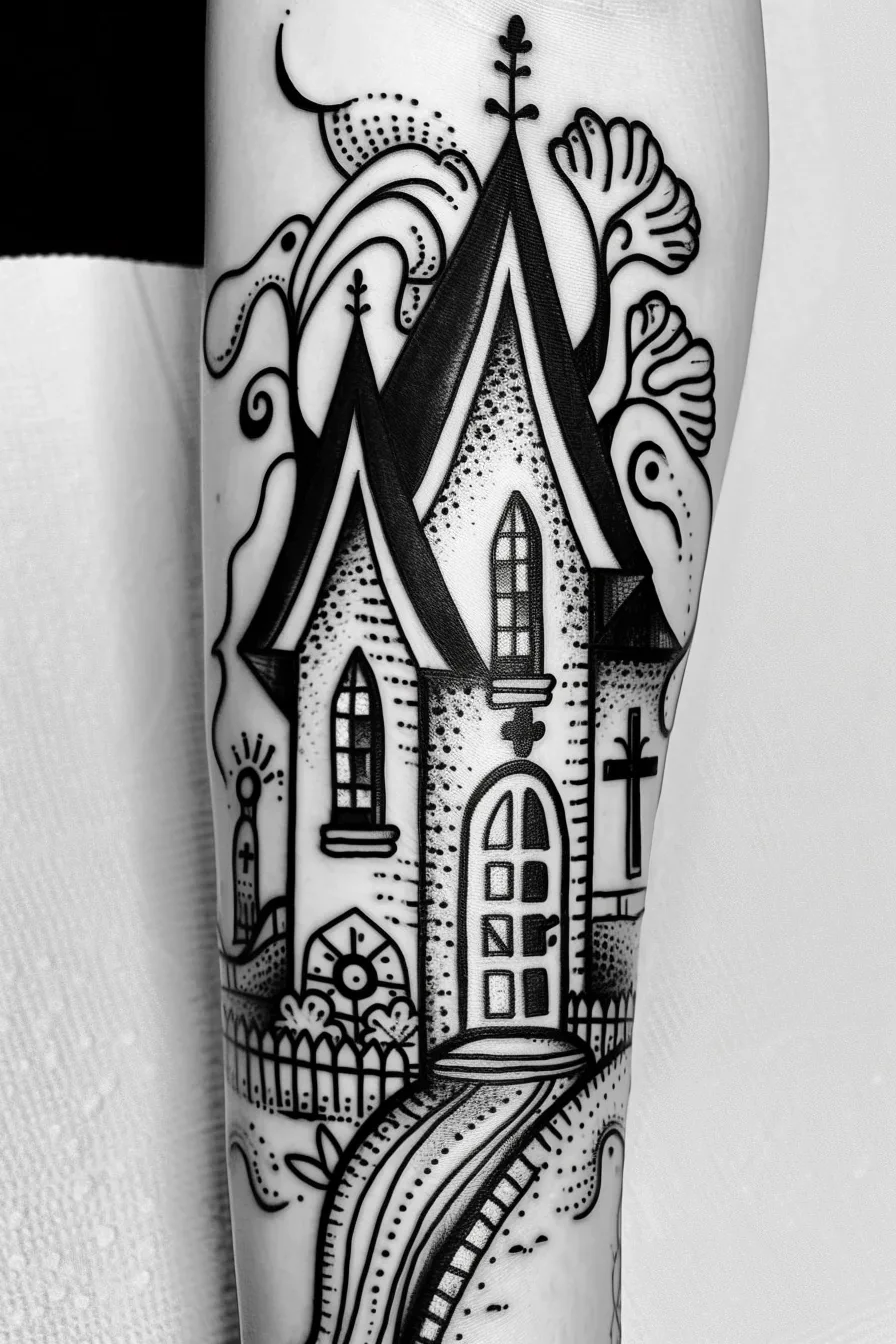
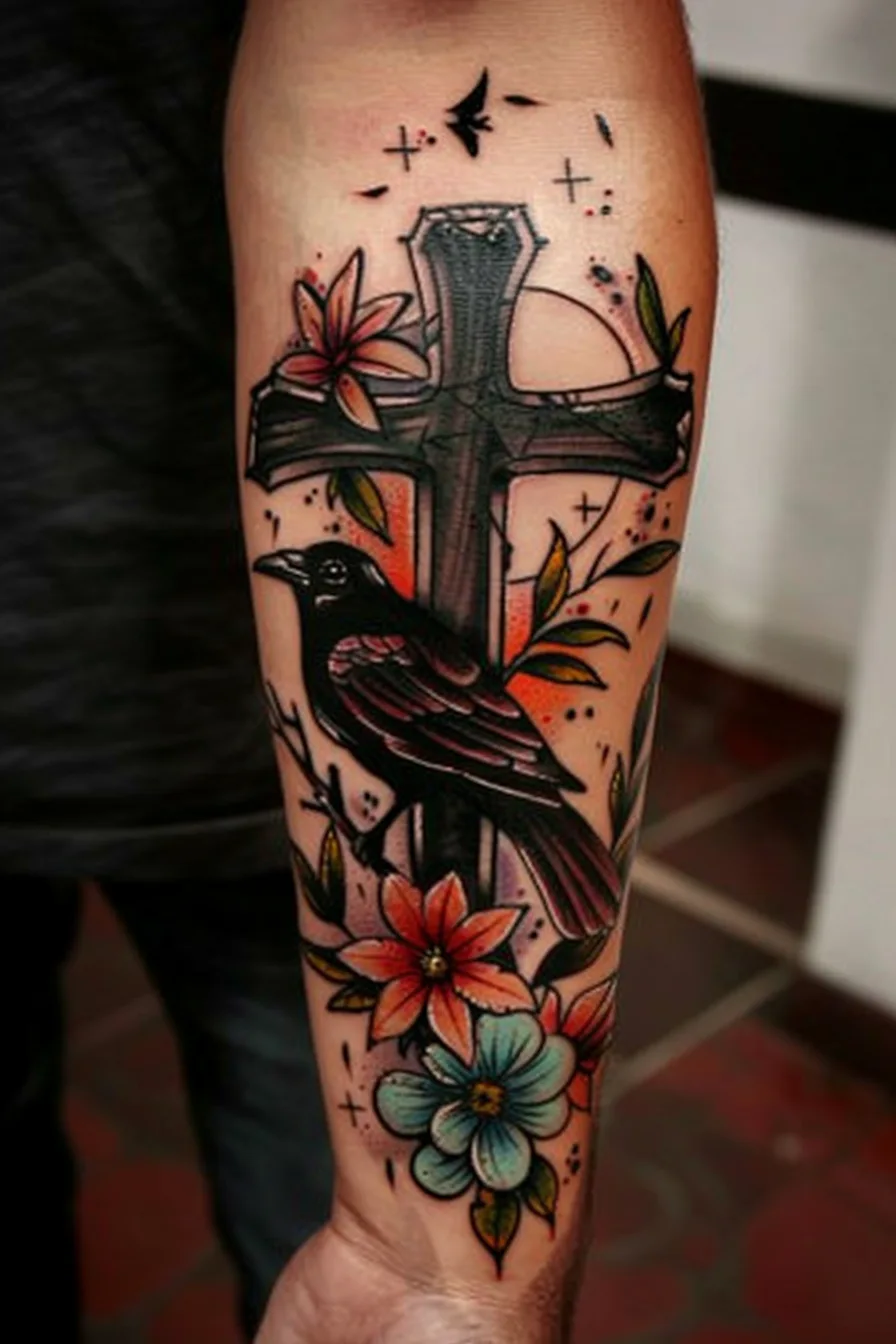
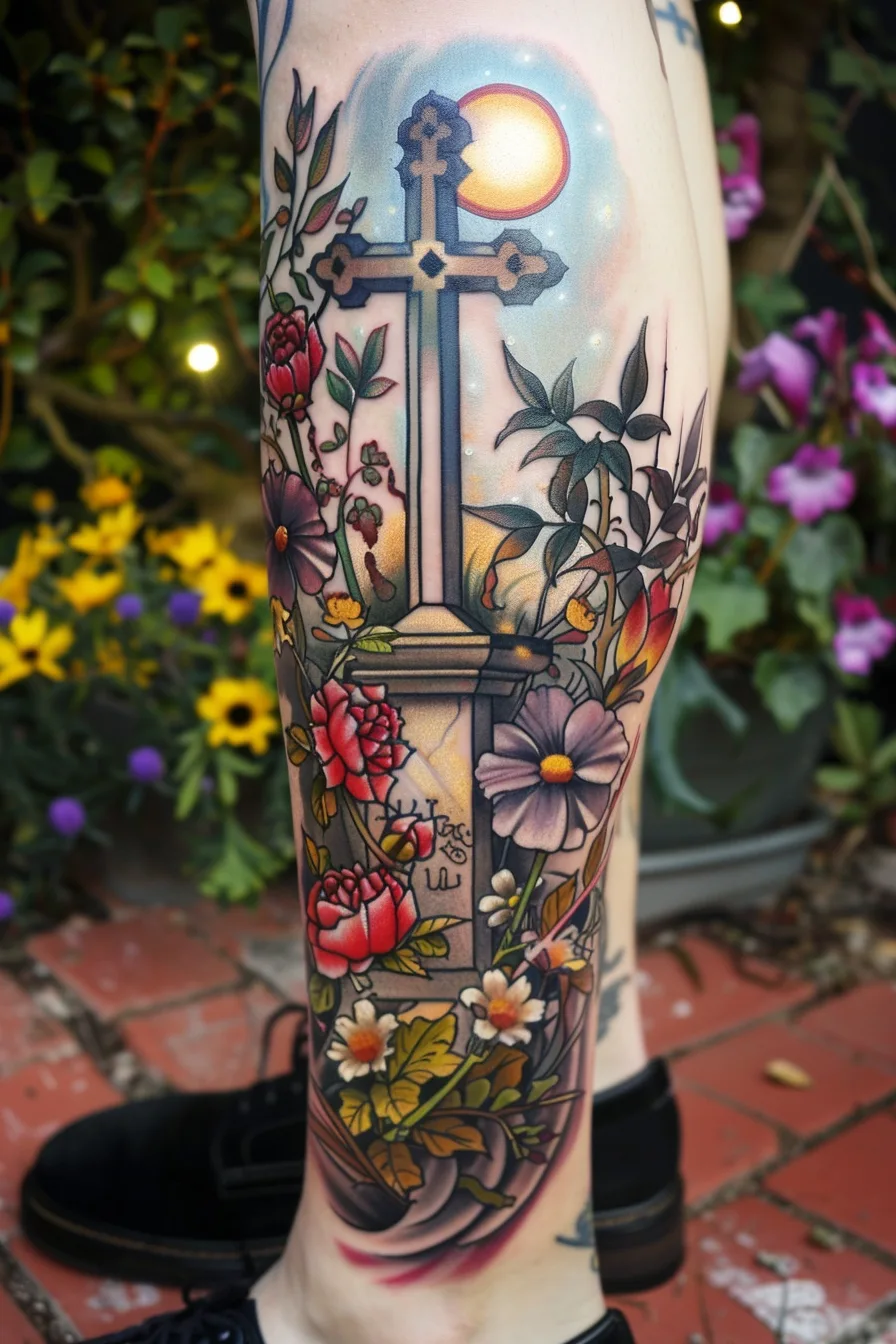
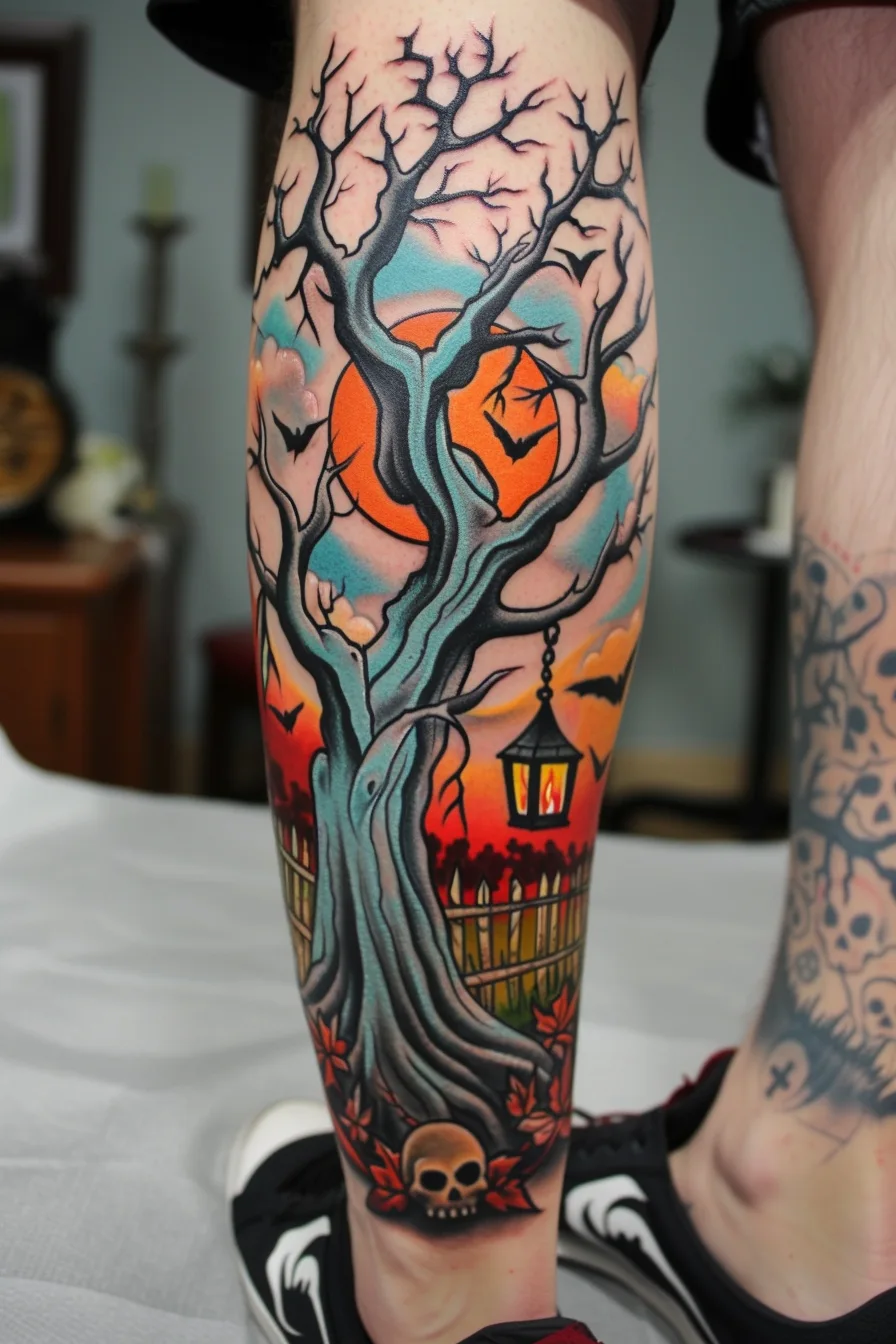
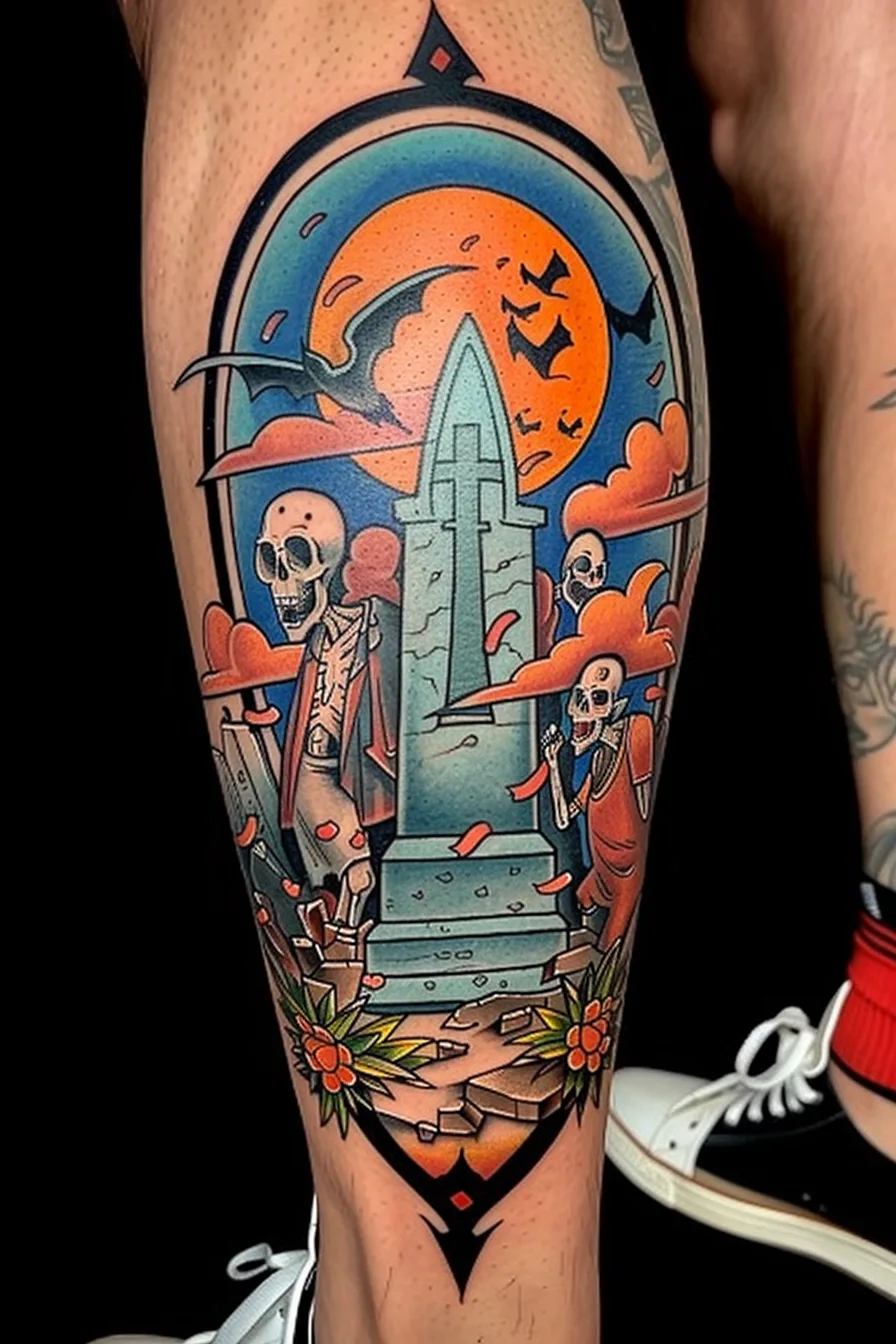
Line Art Style
Another common design style for graveyard tattoos is the Line Art style. This approach emphasizes minimalist, clean lines and a focus on the essential elements of the subject matter, often forgoing extensive shading or color in favor of a sleek, streamlined aesthetic.
Tattoo artists employing the Line Art style typically use thin, precise lines to depict the outlines of graveyard scenes, tombstones, or other funerary imagery, creating a striking and modern interpretation of the traditional graveyard tattoo. This creative line art style utilizes bold, expressive lines to capture the essence of the subject, resulting in a tattoo that is both visually impactful and aesthetically pleasing.

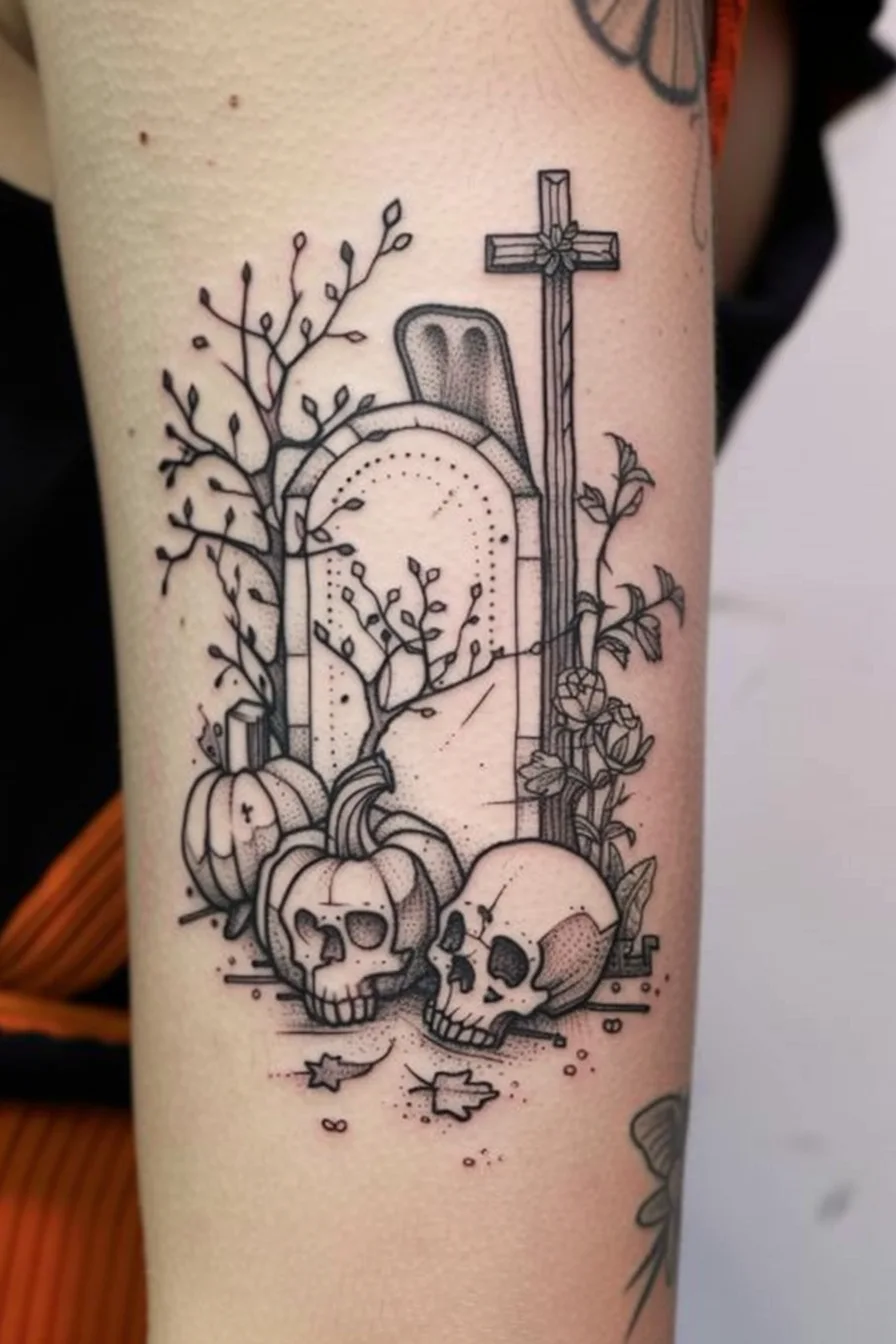
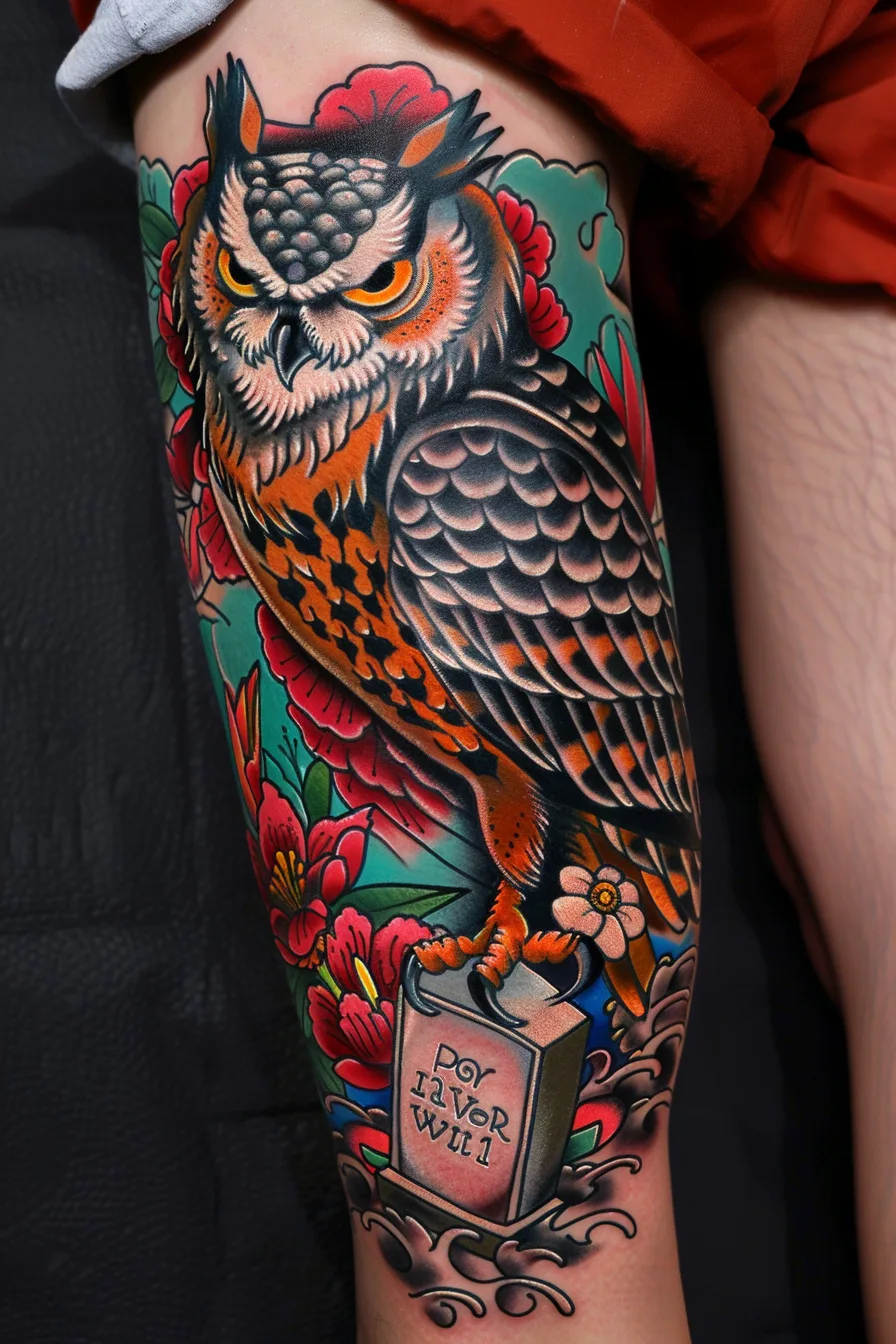
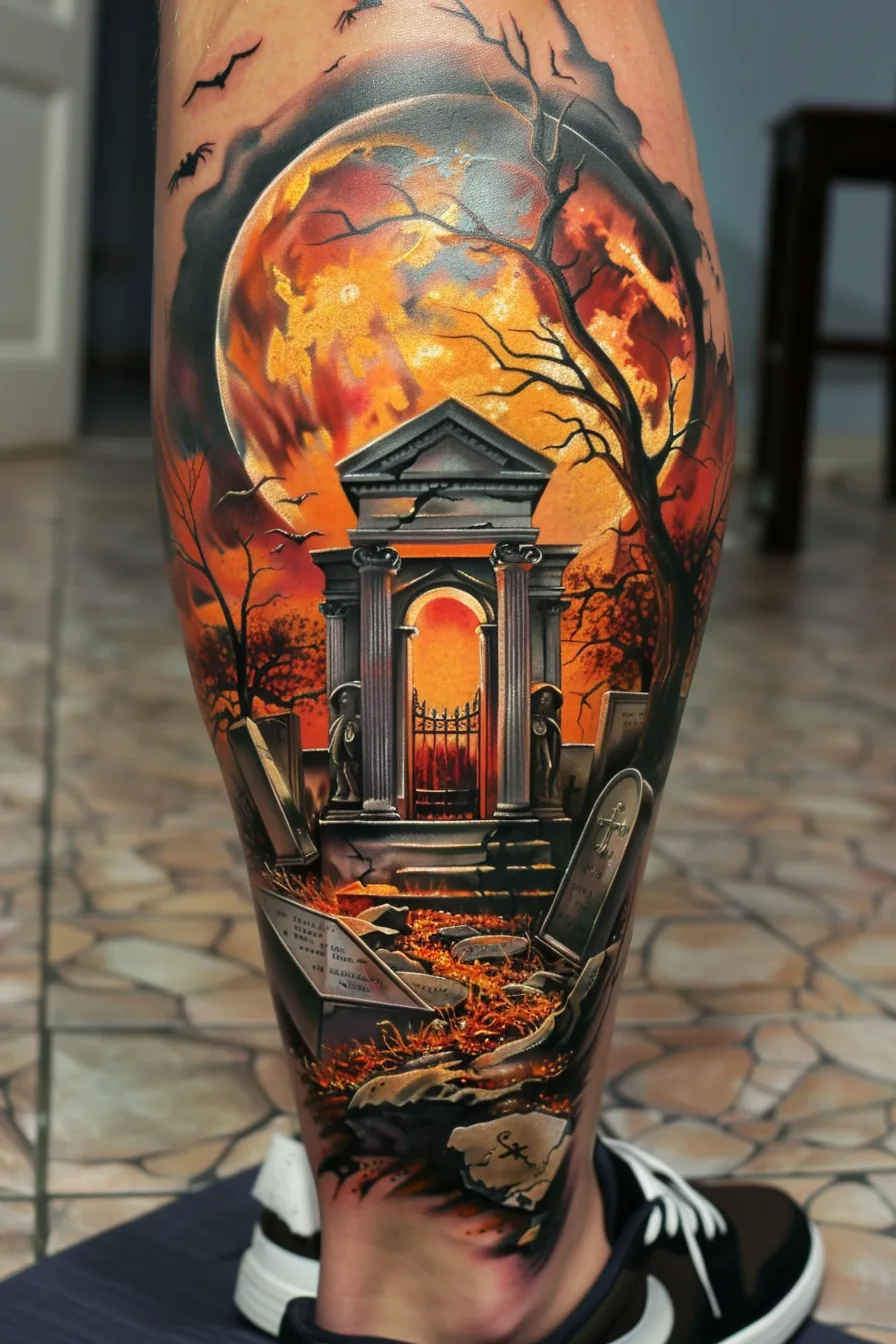

Color Variations & Meanings
When it comes to graveyard tattoos, the color choices can hold significant meanings.
Green may symbolize growth, renewal, and the cycle of life, while black can represent mourning, death, and the unknown.
Yellow could denote happiness, optimism, and the radiance of the afterlife, and red may signify passion, strength, and the intensity of emotions surrounding mortality.
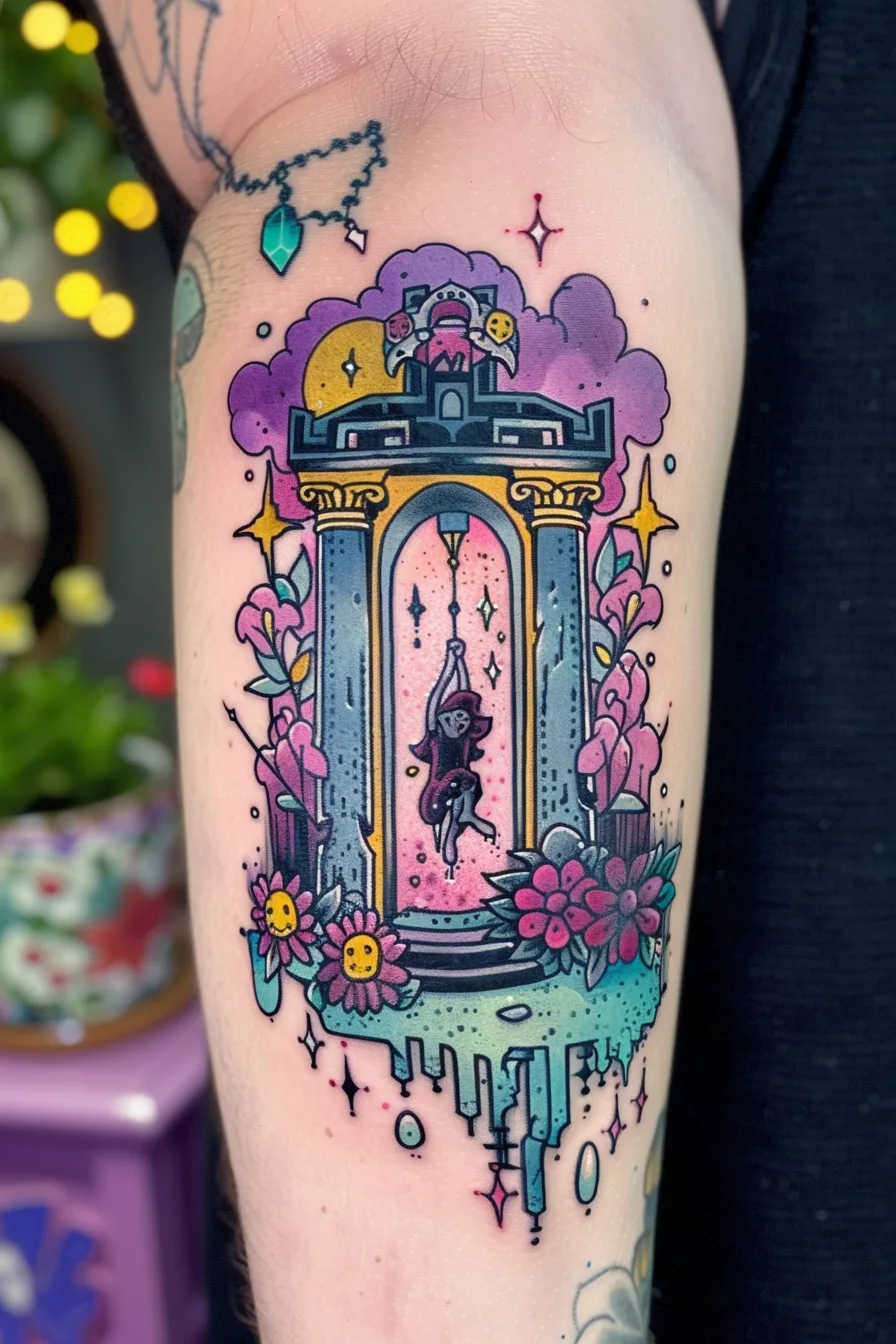
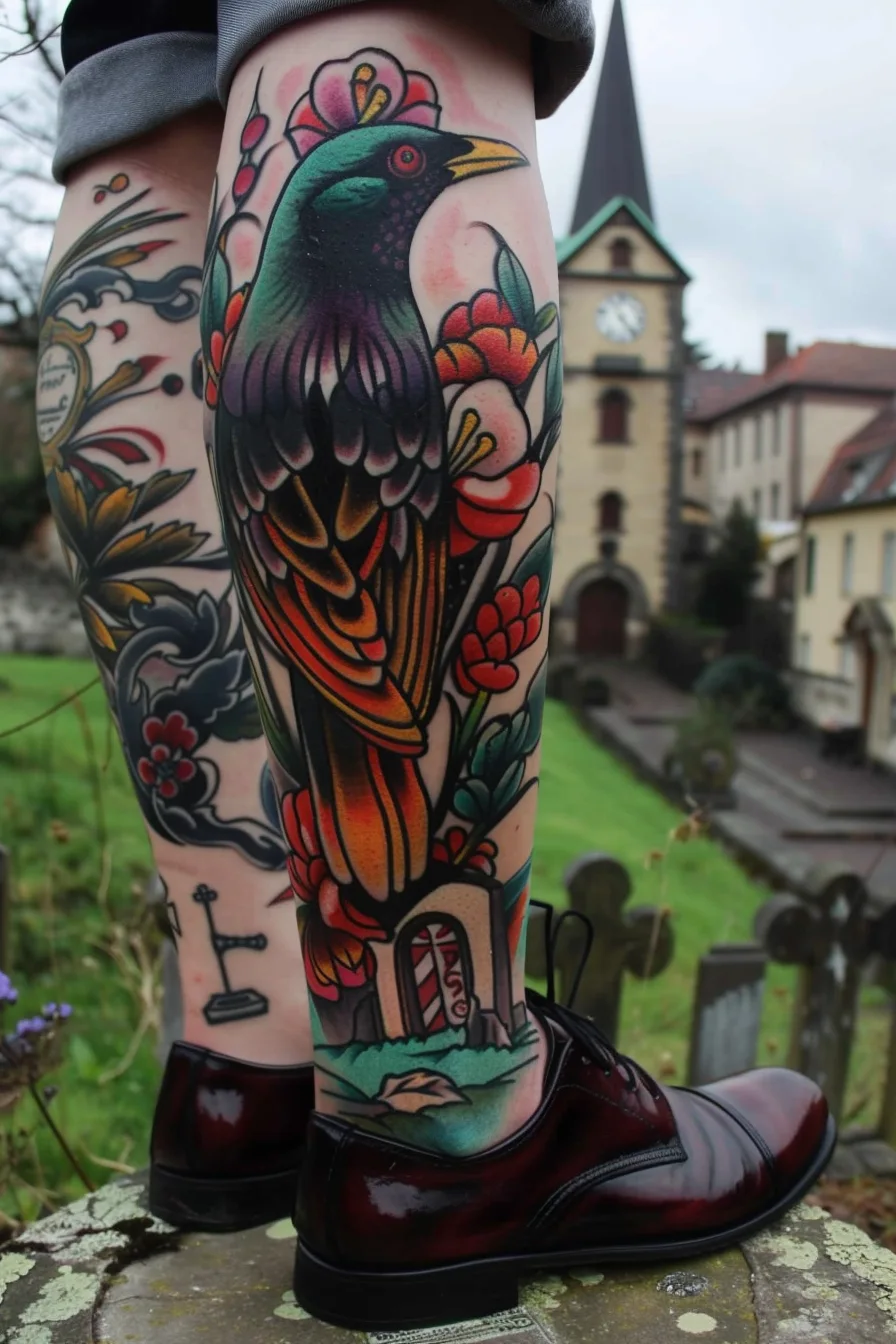
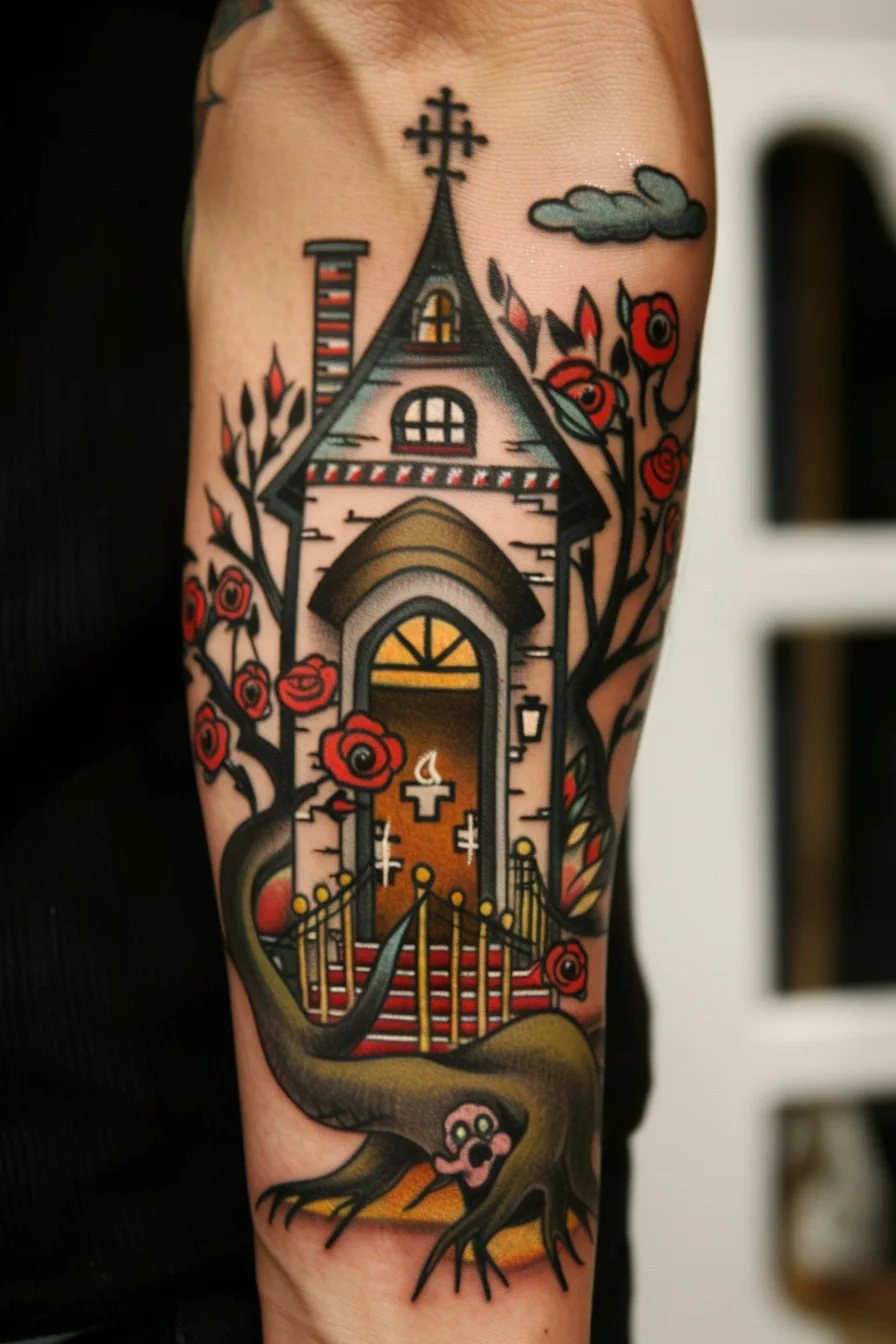
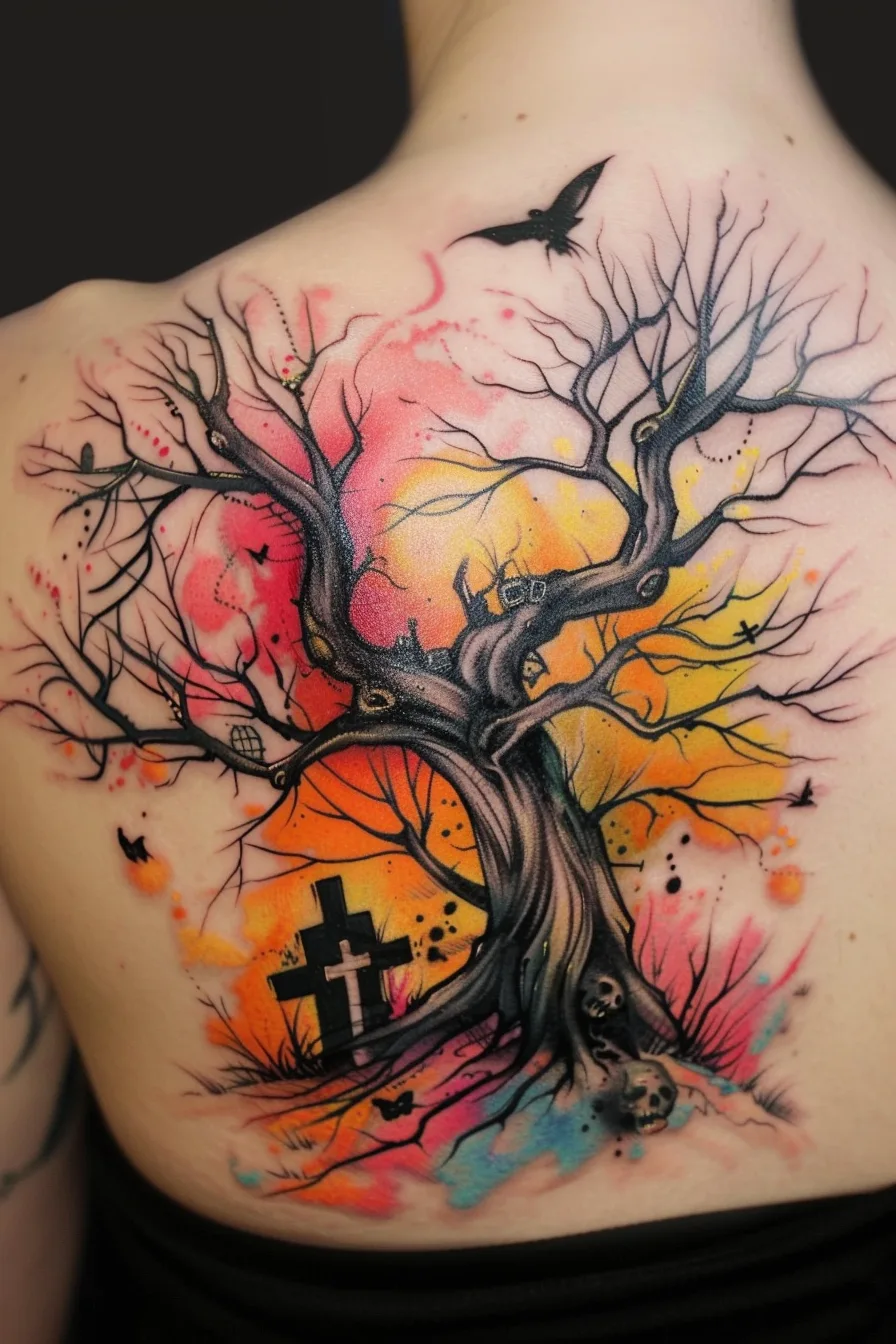
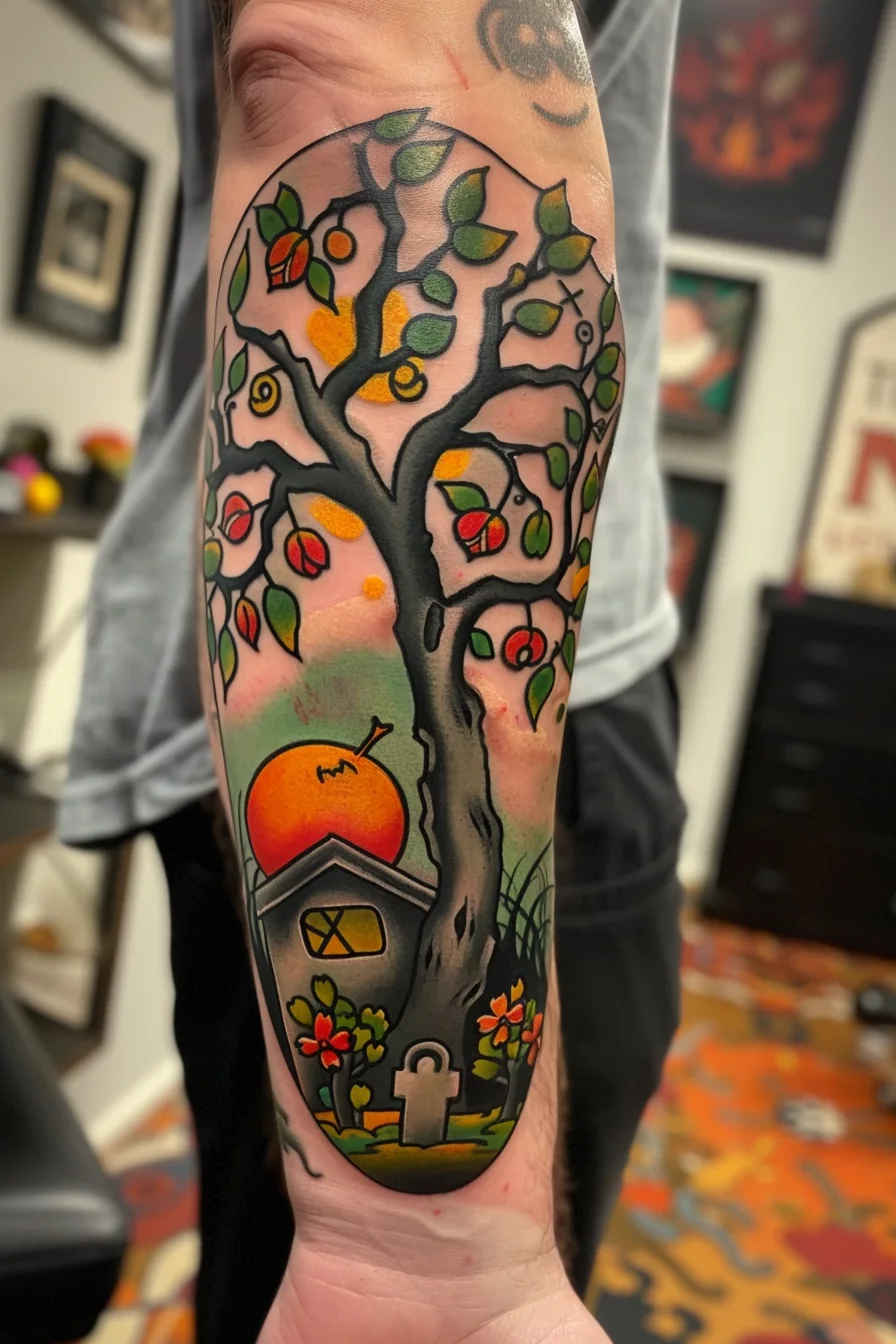
Green
Green, a color that evokes the lush landscapes of nature, holds a significant place in the realm of tattoo symbolism. Its various shades and hues can convey a range of meanings, each with its own distinct connotations.
The symbolic meaning of green is often associated with growth, renewal, and harmony, making it a popular choice for those seeking to represent their connection to the natural world or their personal journey of self-discovery.
The significance of green shades, such as the deep forest green or the vibrant emerald, can further enhance the meaning of a graveyard tattoo, evoking themes of life, vitality, and the enduring cycle of existence.
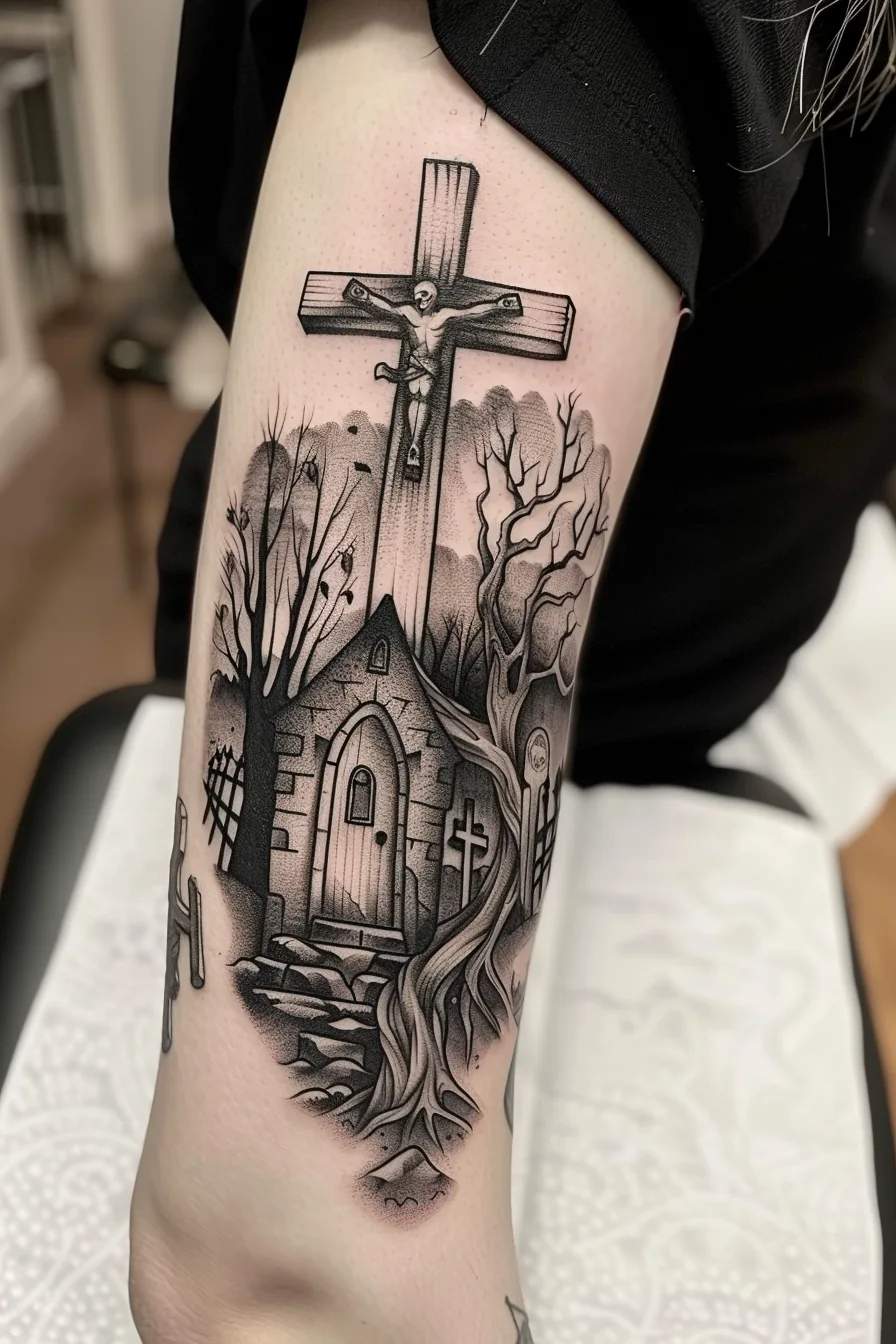

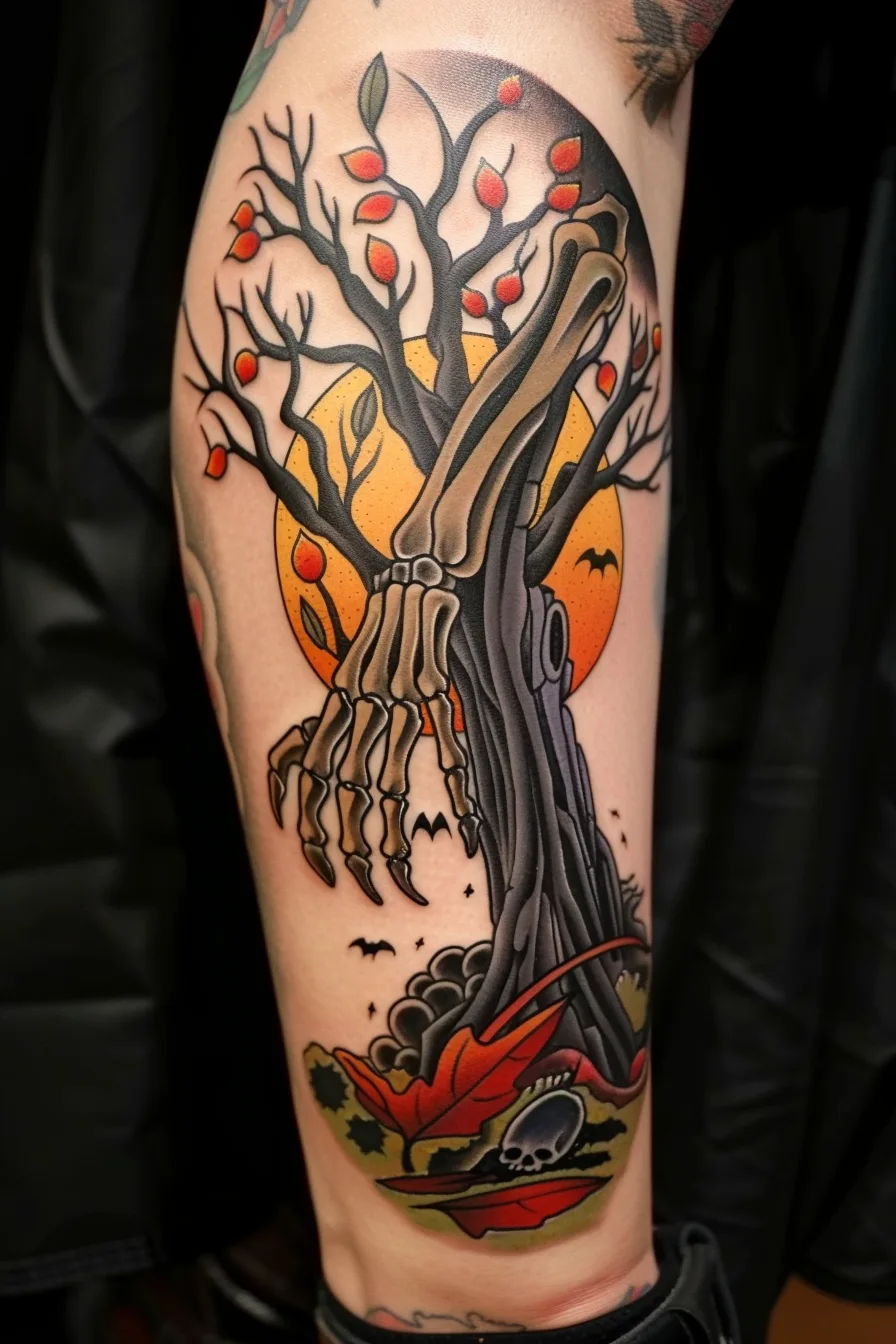
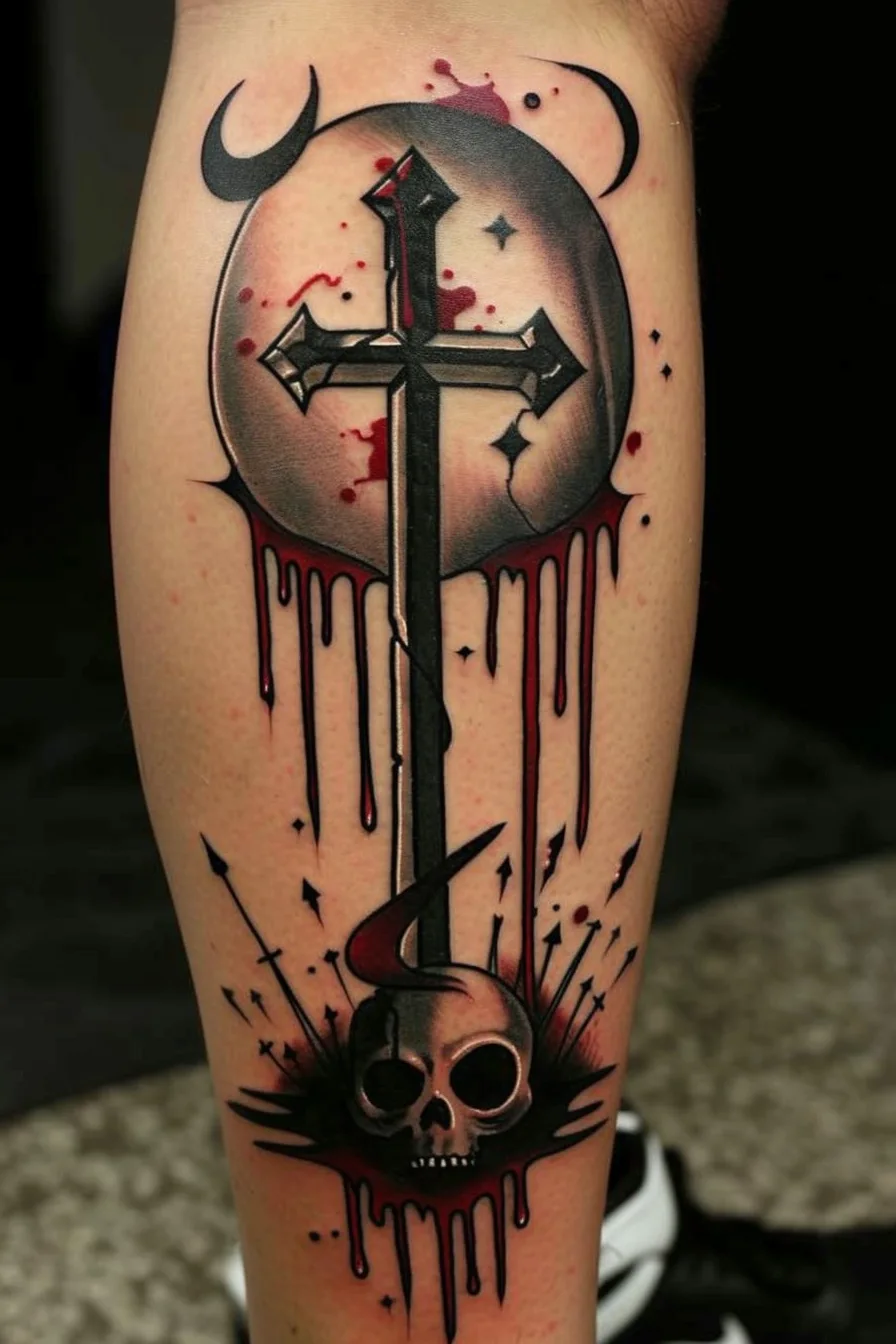
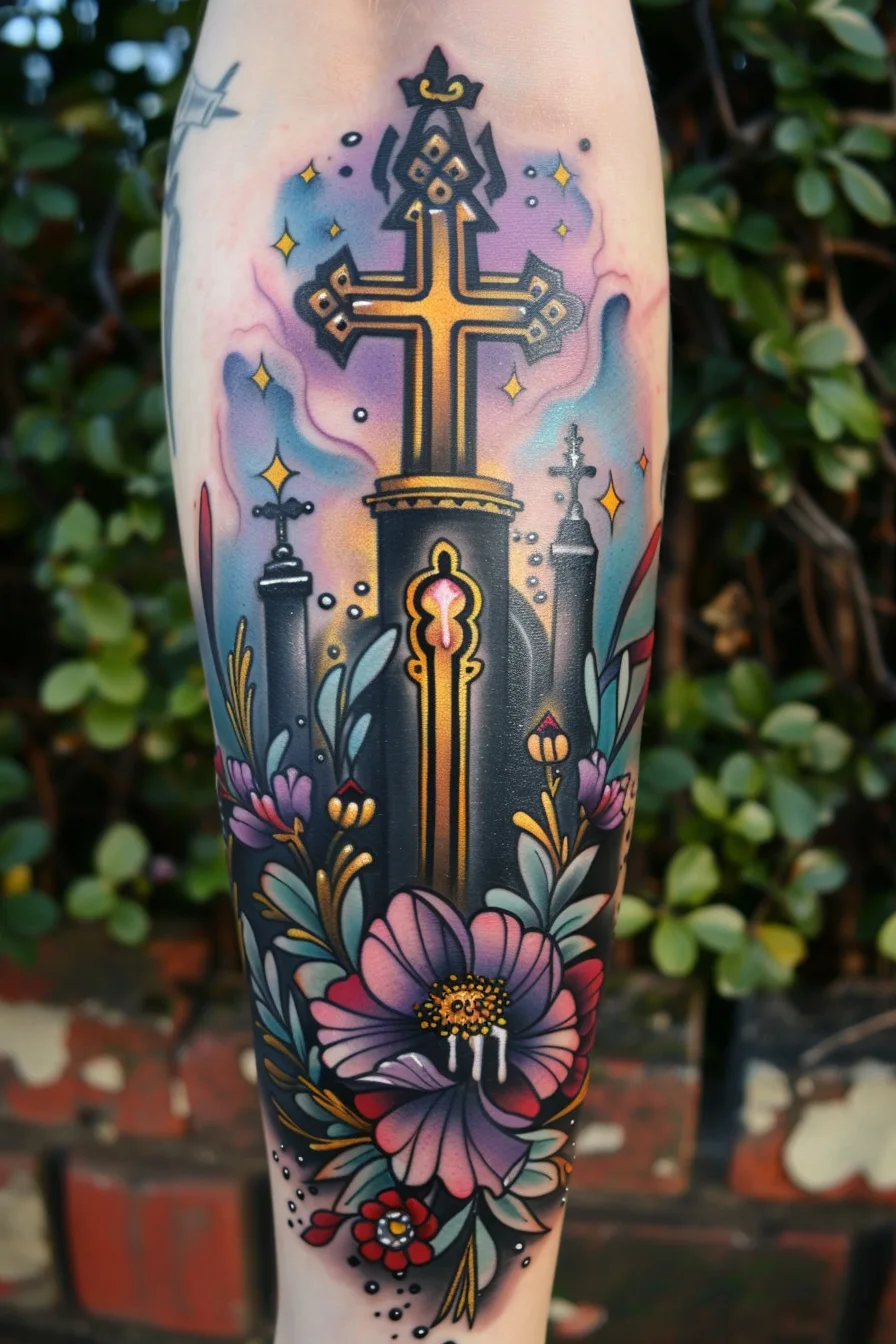
Black
In contrast to the life-affirming symbolism of green, the color black is often associated with more somber and introspective themes within the context of tattoo art. Black, with its depth and versatility, can convey a range of powerful meanings that resonate with individuals seeking to commemorate significant experiences or represent their inner emotional landscapes.
The versatility of black tattoos is evident in the detailed shades that can be achieved, from deep, rich blacks to more subtle charcoal tones. Additionally, unique black ink combinations, such as mixing black with other colors or incorporating shading techniques, can create visually striking and personalized designs.
Whether used as the primary color or as an accent, black remains a timeless and adaptable choice for those seeking to express their individuality through the art of tattooing.
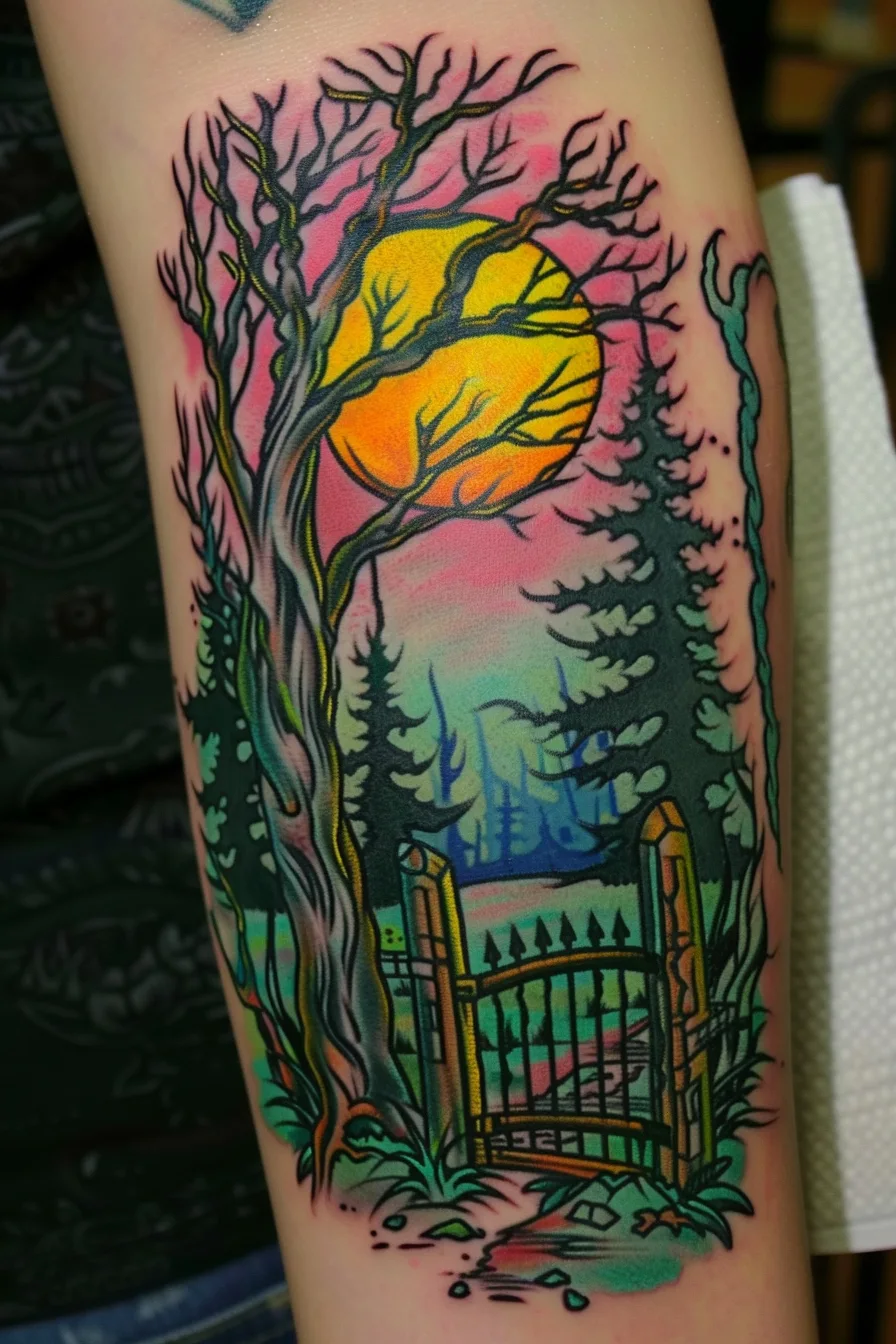
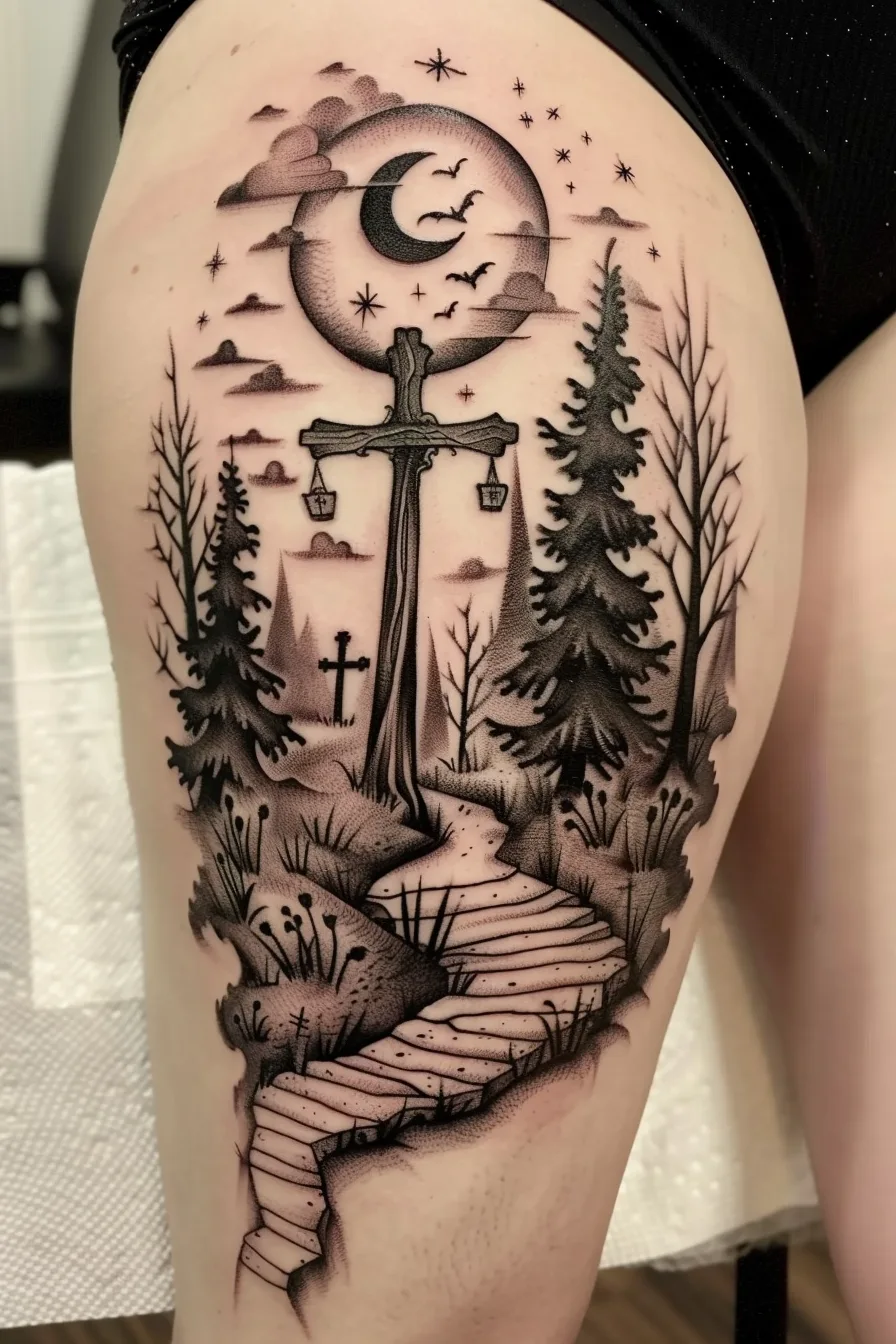
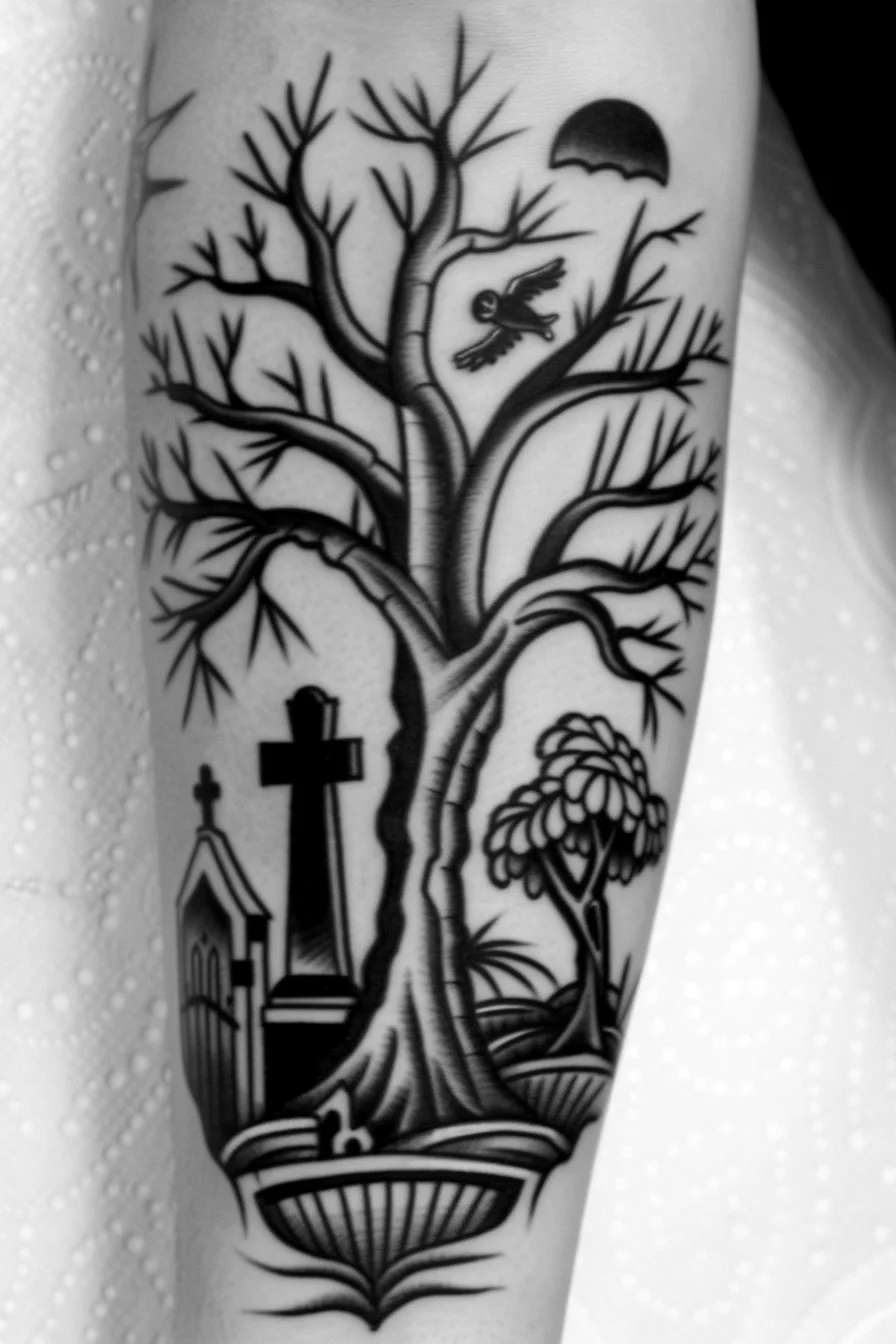
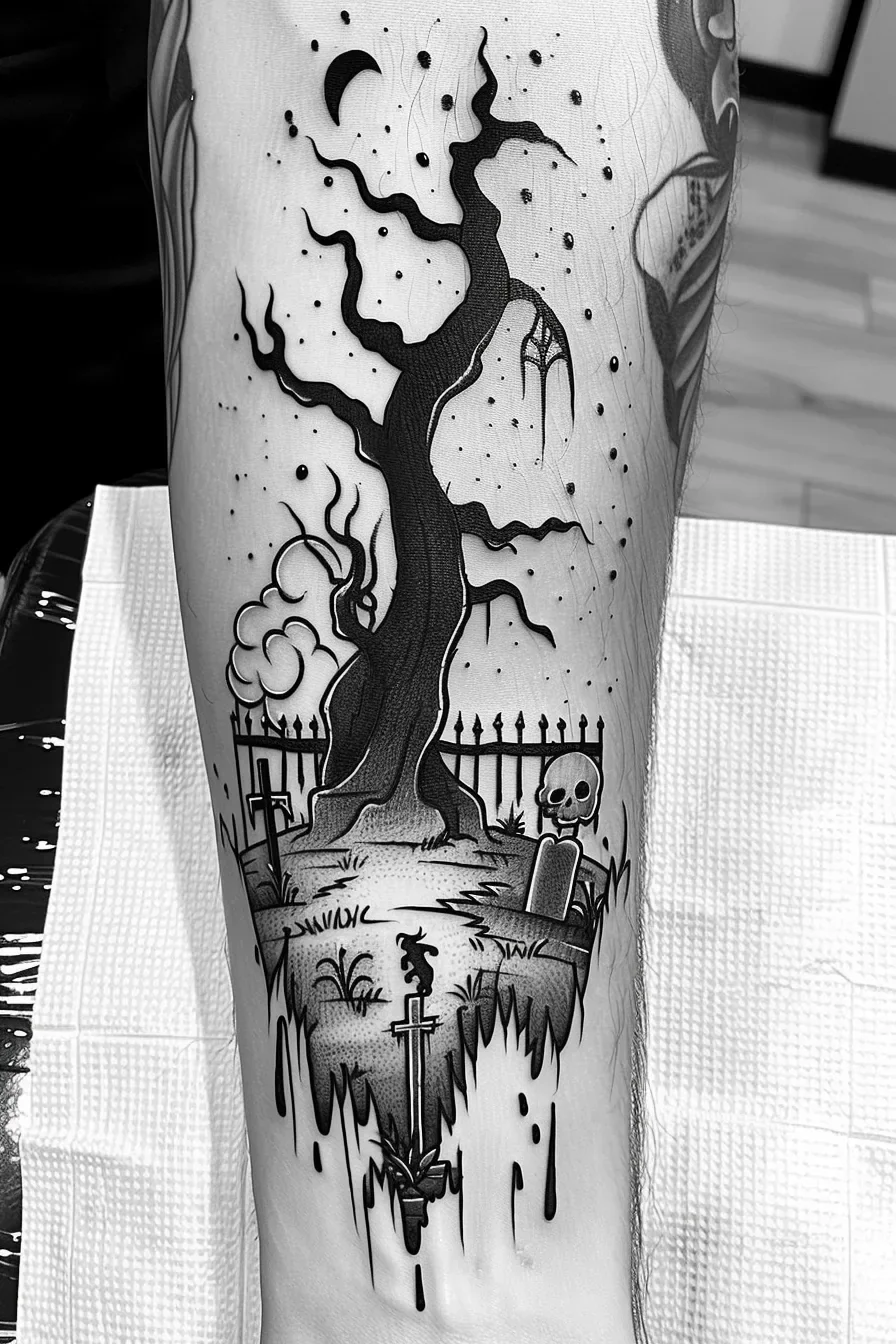
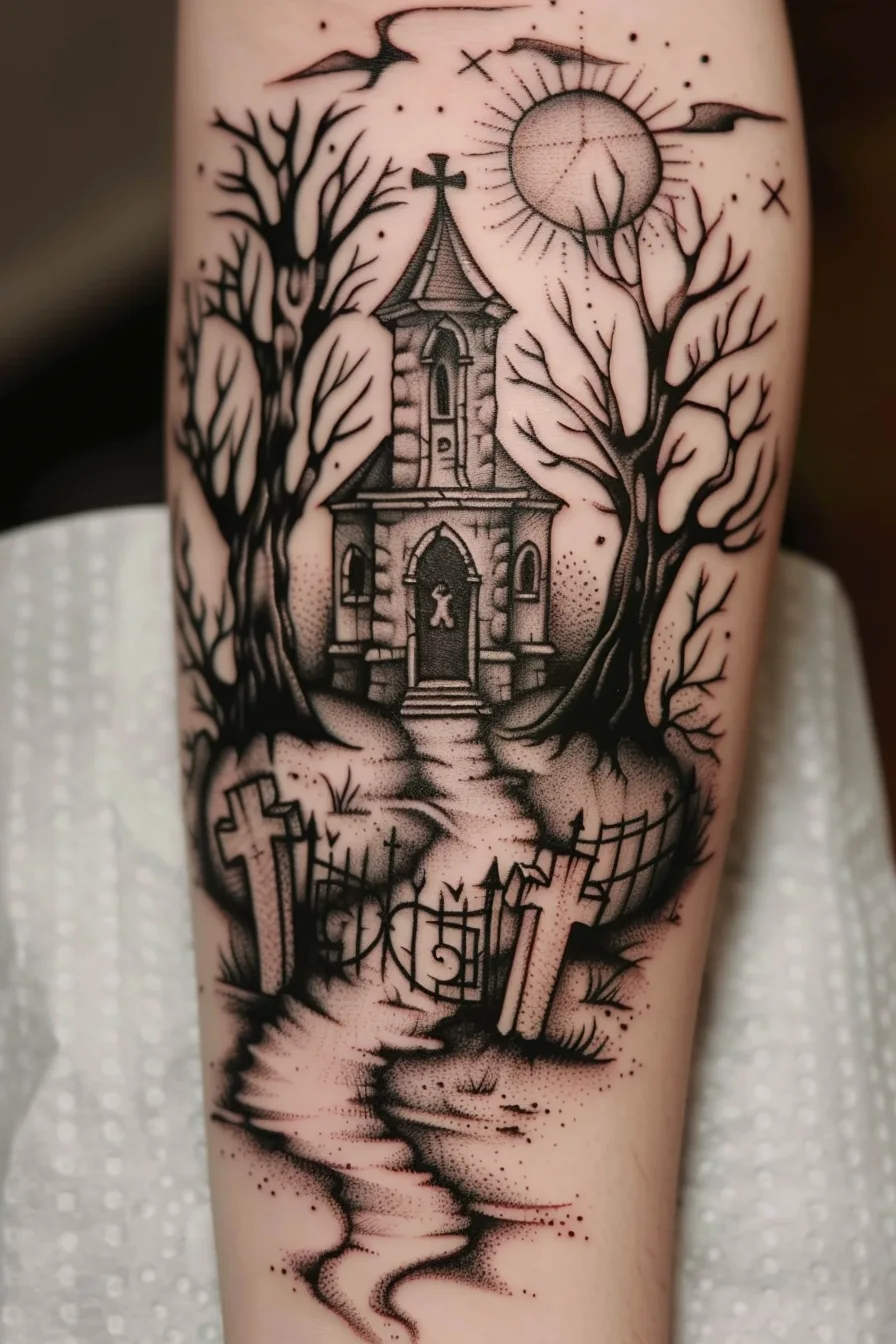
Yellow
The color yellow, with its vibrant and cheerful hue, can evoke a range of symbolic meanings and emotions within the realm of tattoo art. From bright hues that radiate energy and optimism to pastel shades that convey a sense of calmness and serenity, the versatility of yellow allows tattoo enthusiasts to express a variety of personal sentiments.
Whether it's a bold sunburst design or a delicate daffodil, the incorporation of yellow in a graveyard tattoo can symbolize the triumph of hope over despair, the celebration of life, or a profound connection to nature. By carefully selecting the right shade and design, the wearer can create a meaningful and visually striking tattoo that captures the essence of their individuality.
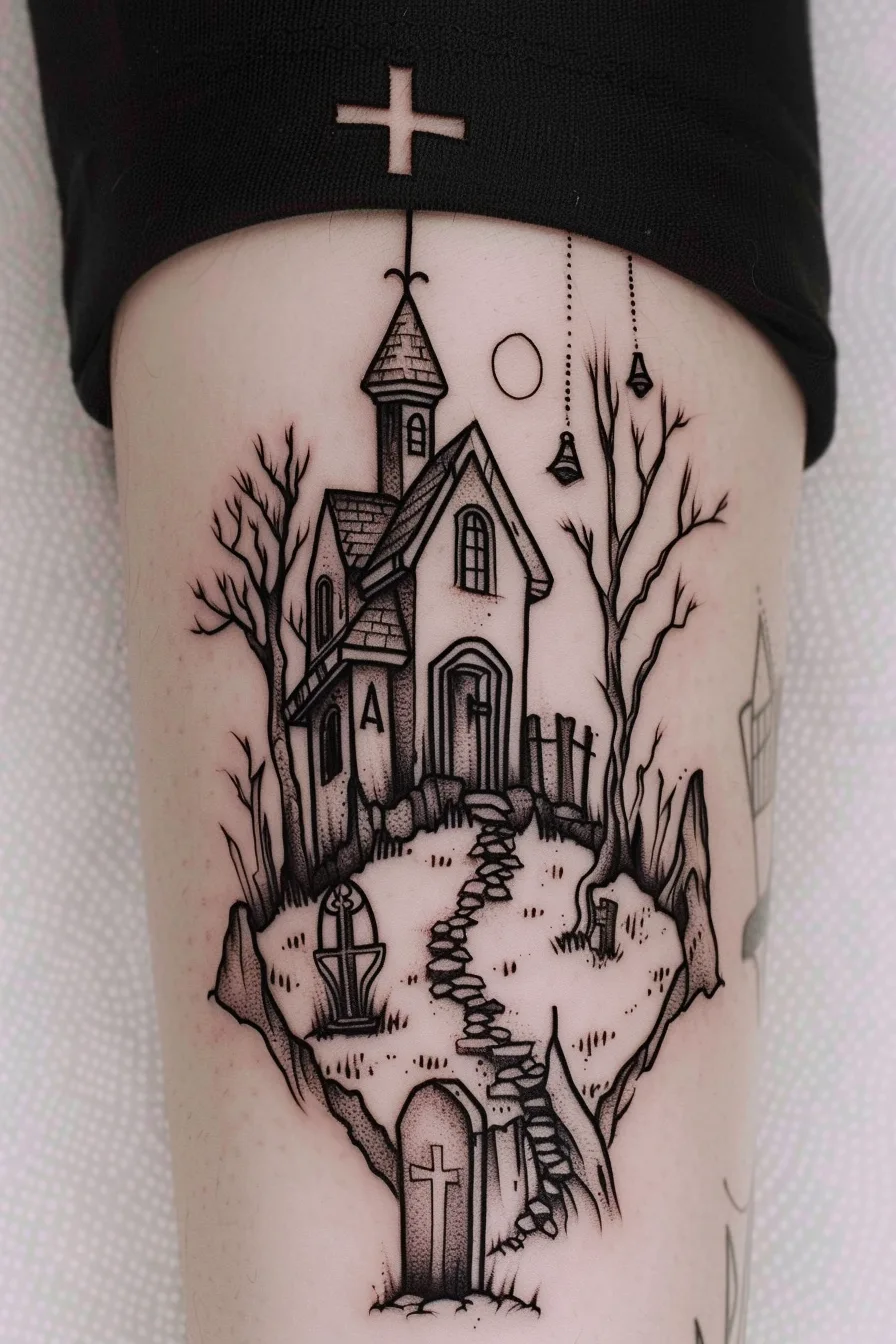
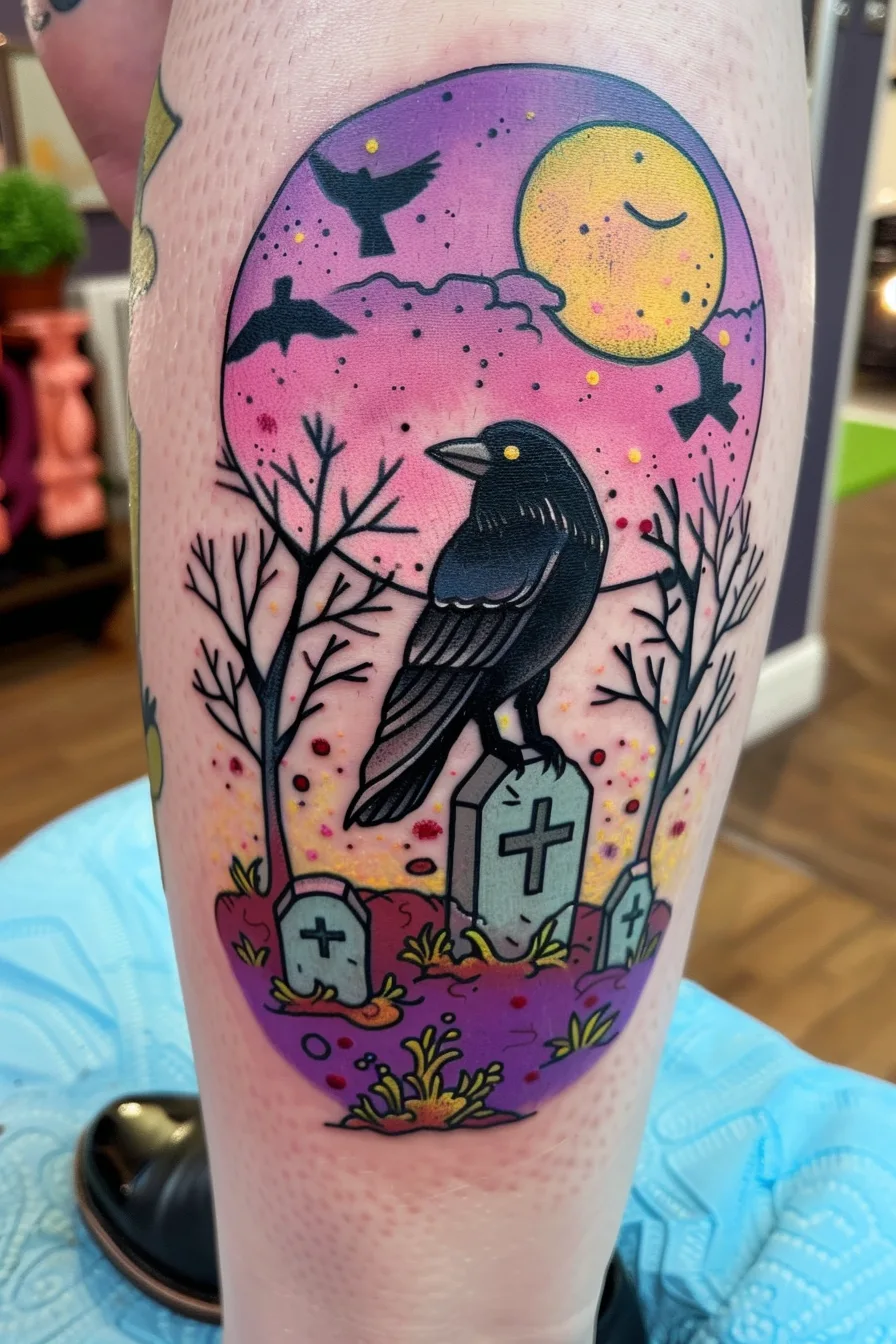
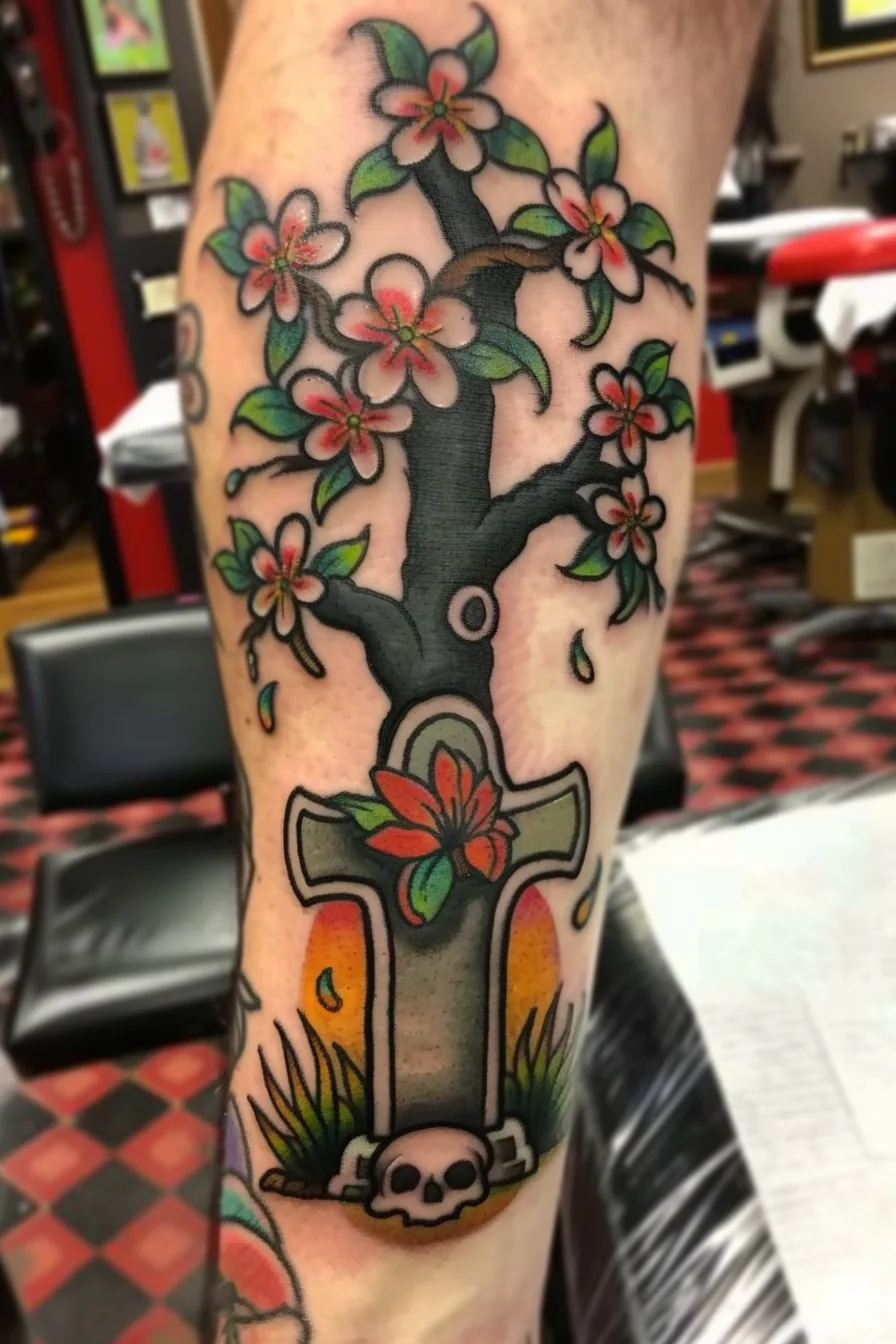
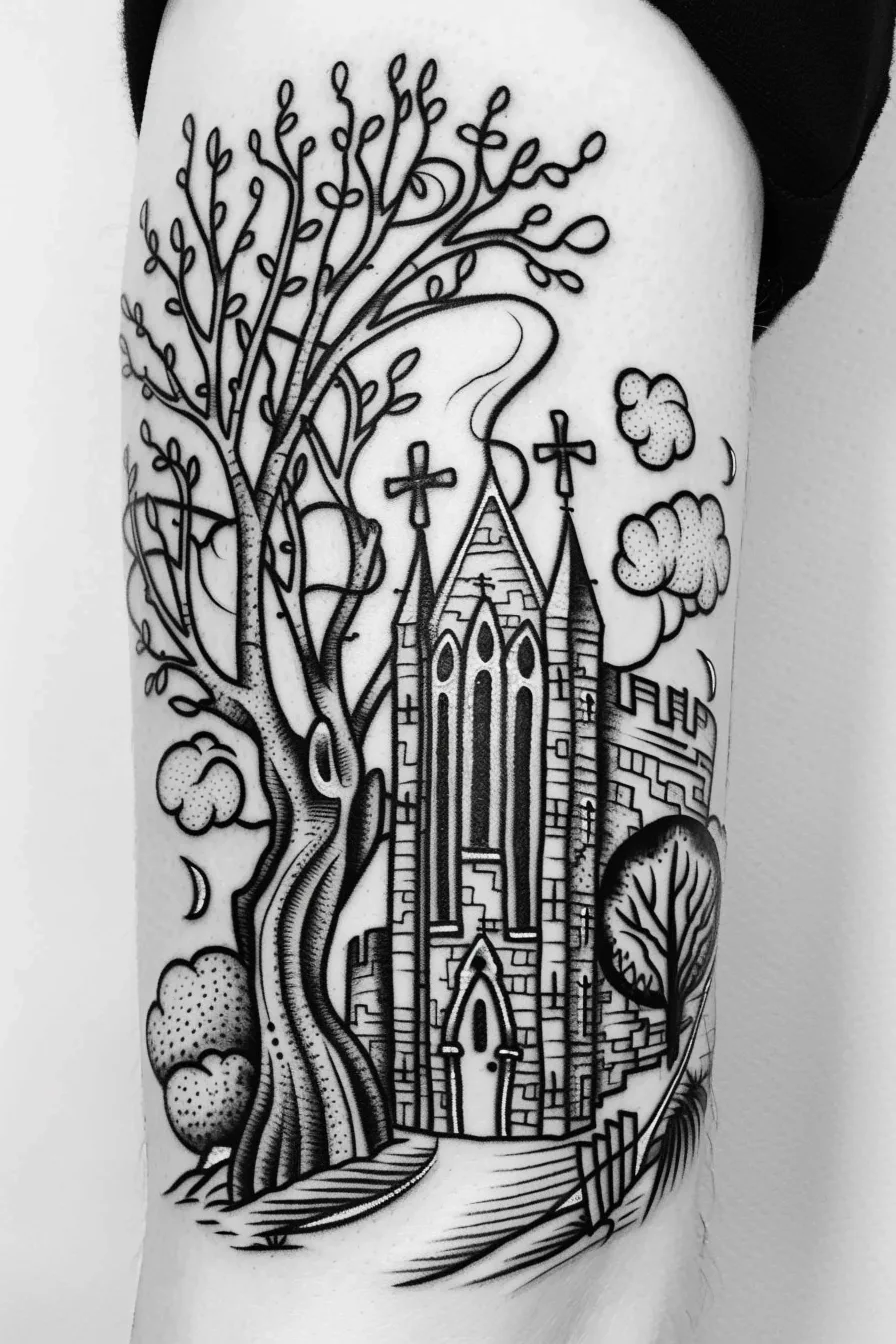
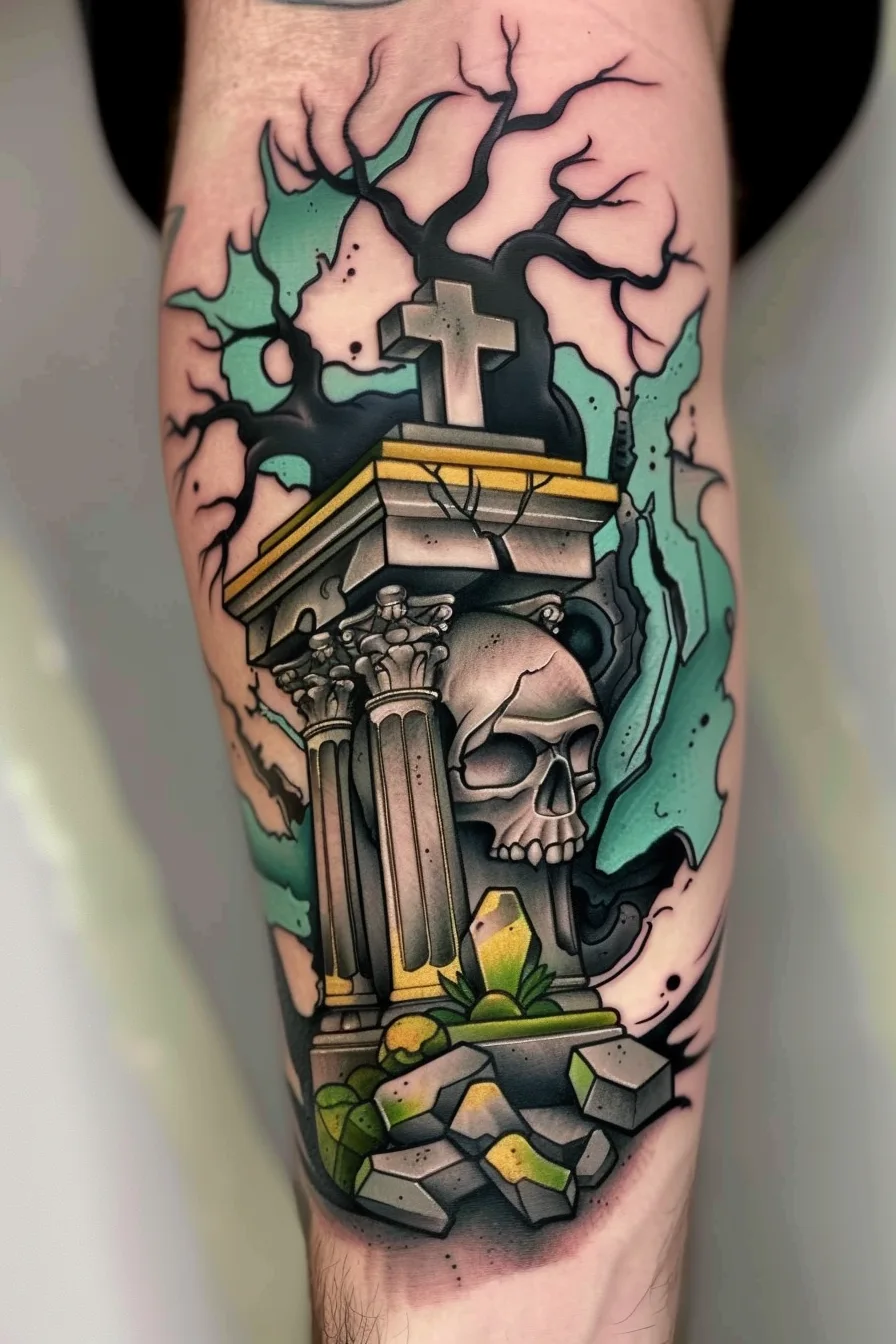
Red
Alongside the vibrant and cheerful hues of yellow, the rich and emotive tones of red hold a significant place within the realm of graveyard tattoo symbolism. The color red is often associated with passion, strength, and intensity, making it a popular choice for those seeking to commemorate the timeless cycle of life and death.
The striking image of a red lightning bolt, for instance, can symbolize the sudden and powerful force of mortality, while a fierce red phoenix rising from the ashes can represent the notion of rebirth and eternal renewal. Whether used as a bold statement or a subtle accent, the versatile nature of red allows it to convey a range of profound meanings within the context of graveyard tattoos.
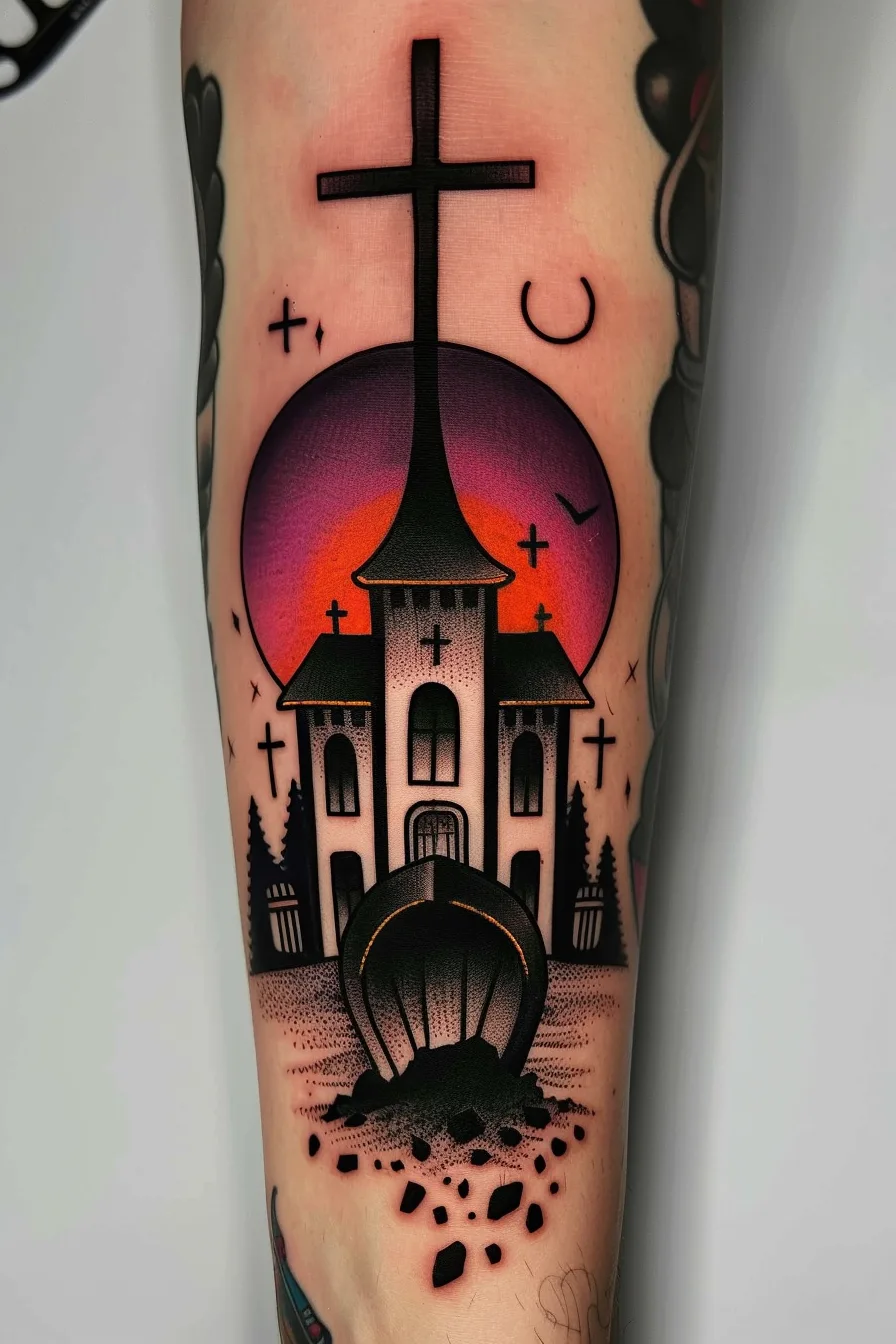
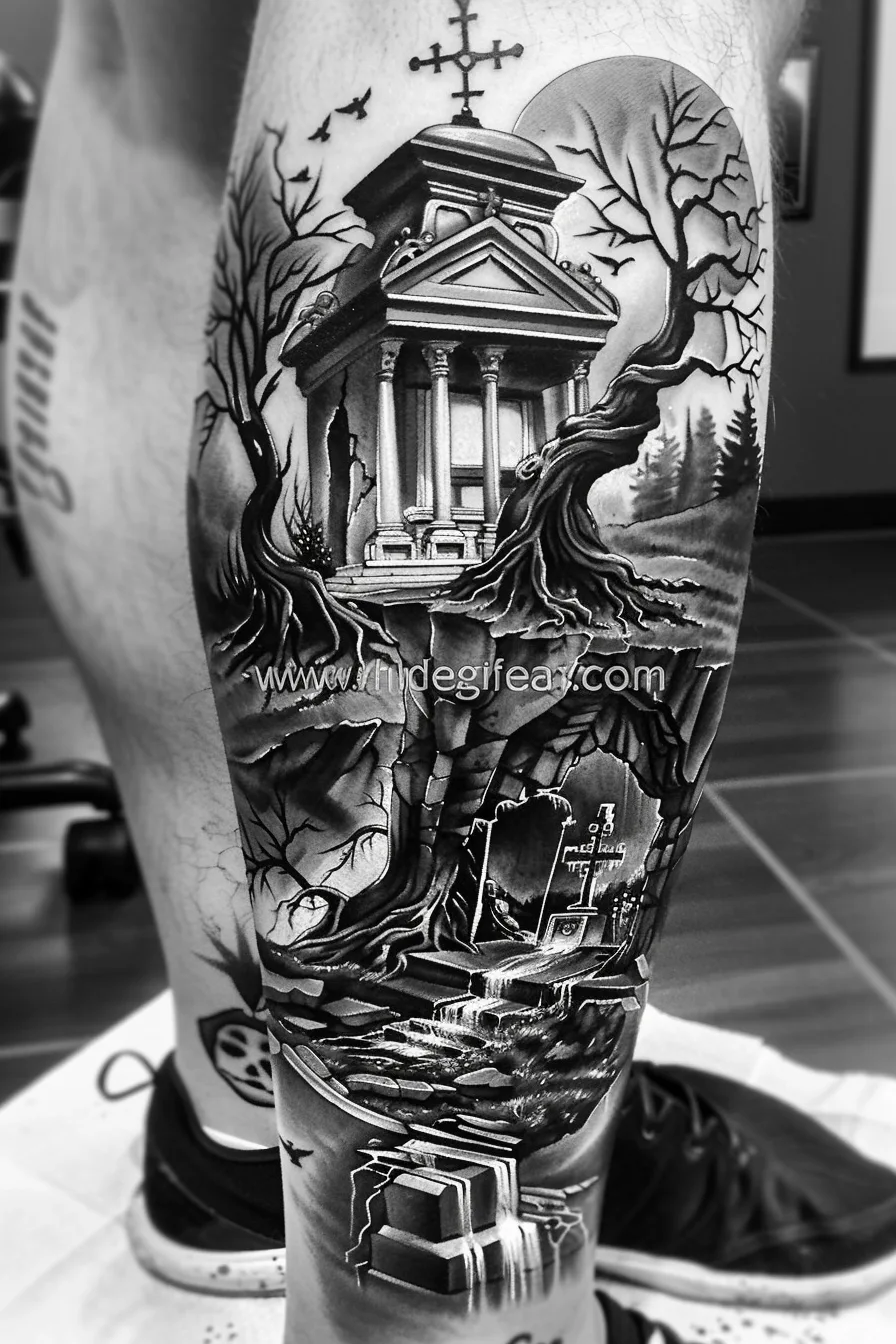
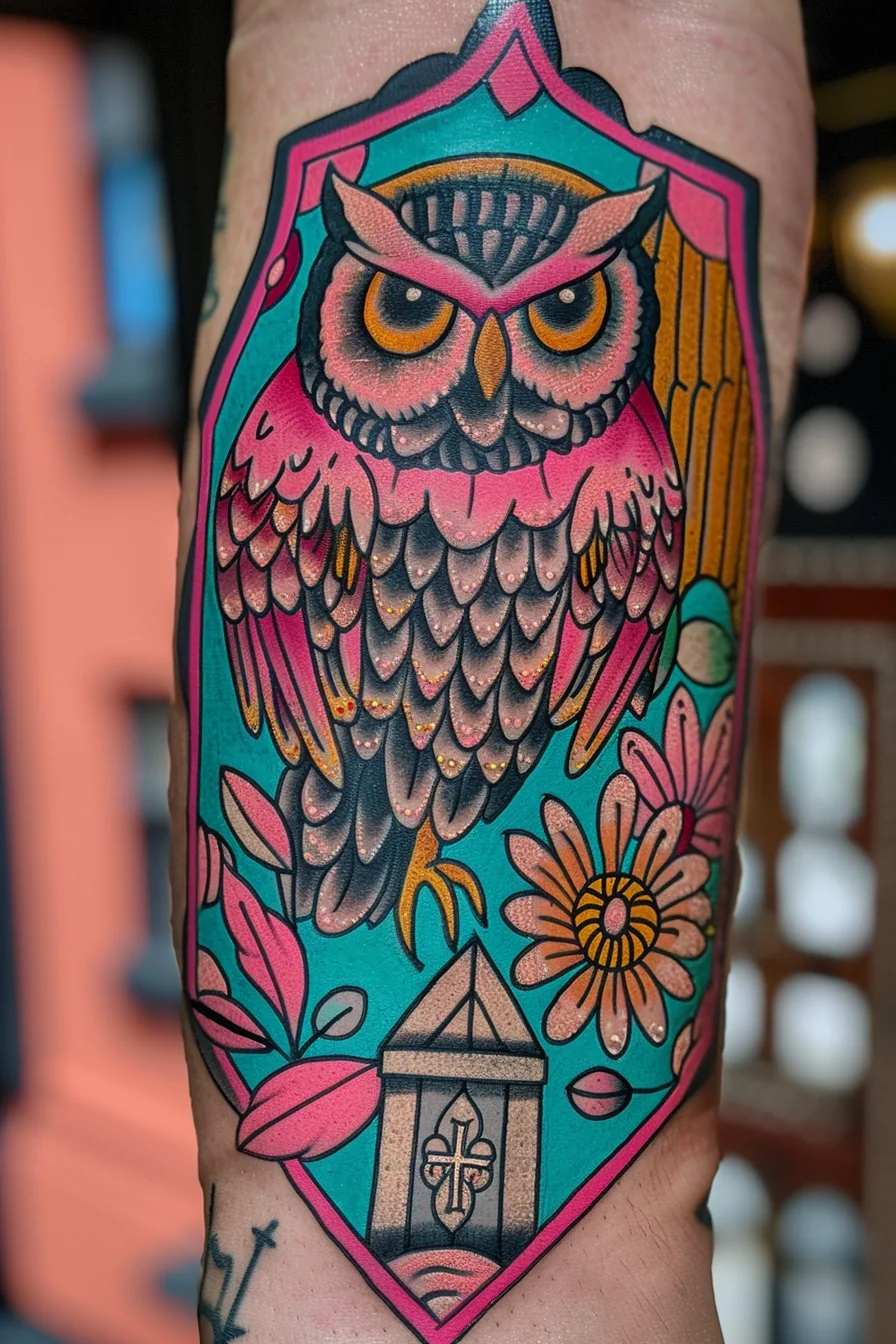
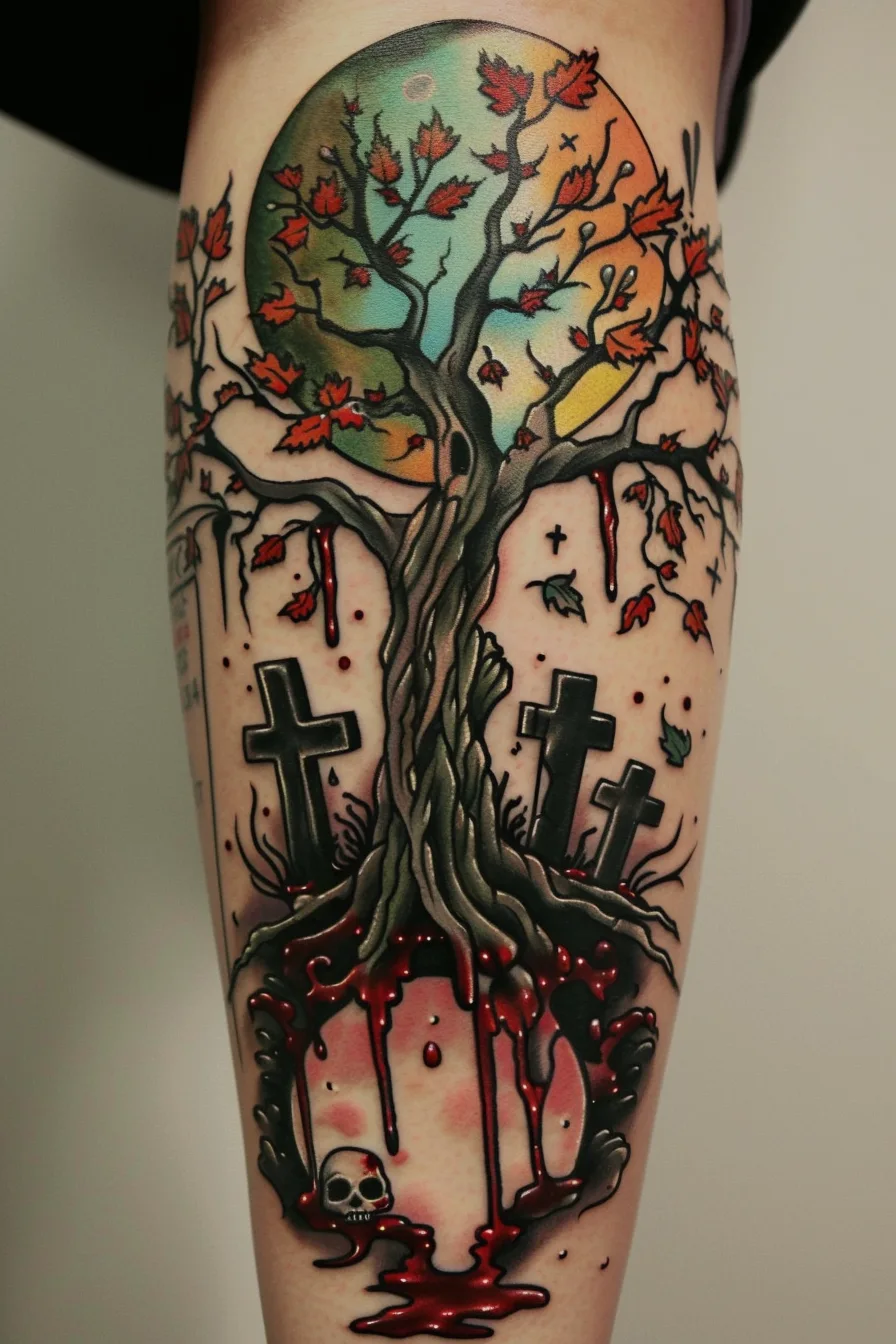
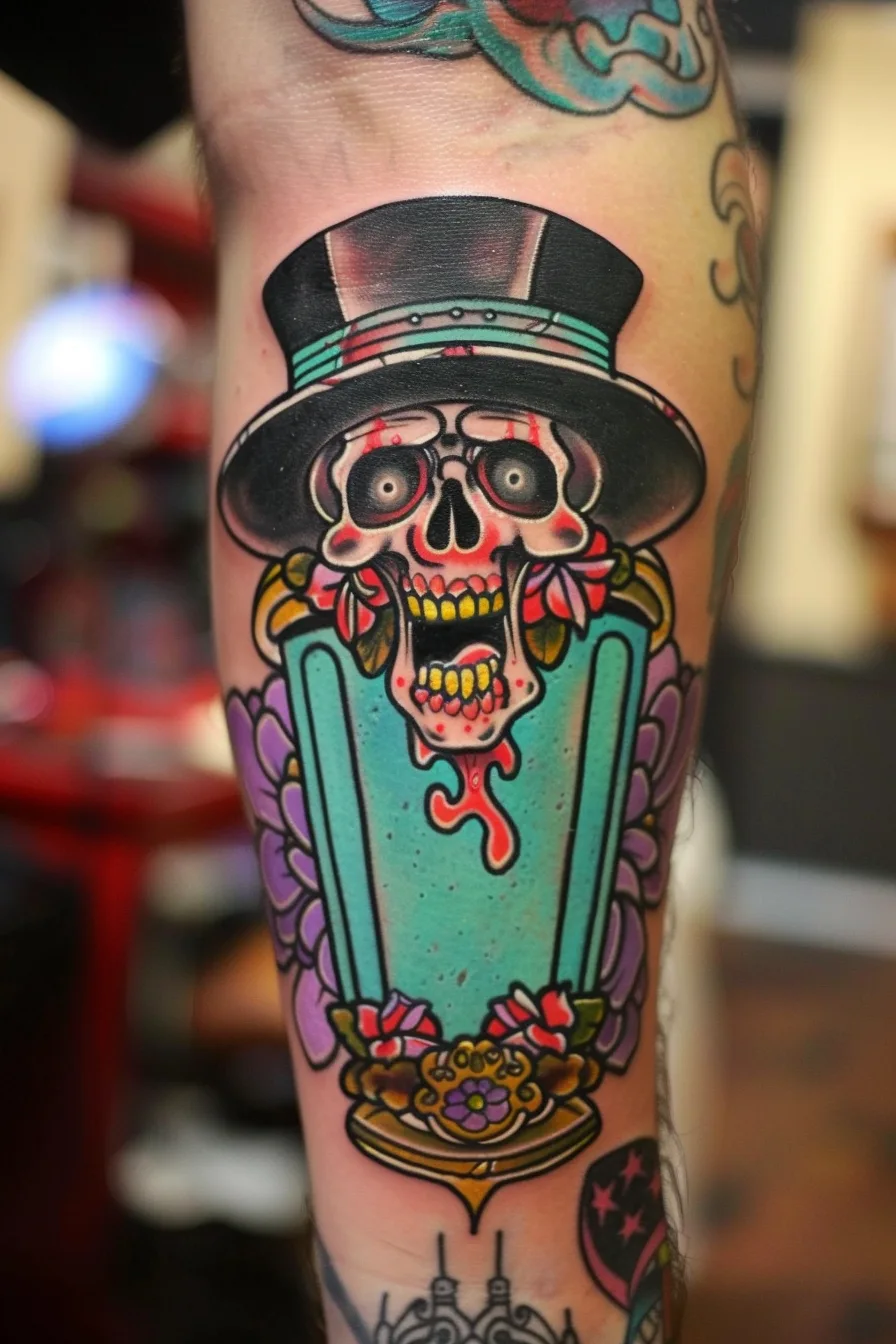
Blue
Another prominent color within the realm of graveyard tattoo symbolism is blue, which can encompass a diverse range of hues and connotations. From the serene and contemplative shades of azure to the deep, somber tones of indigo, the color blue often evokes themes of tranquility, introspection, and the spiritual realm.
A beautiful blue graveyard tattoo could represent a connection to the divine or a deep reverence for the afterlife. Alternatively, a vibrant blue tattoo might signify a renewed sense of hope and resilience in the face of mortality. Regardless of the specific shade, the use of blue in graveyard tattoos can imbue the design with a sense of solemnity, serenity, and a profound exploration of the human condition.
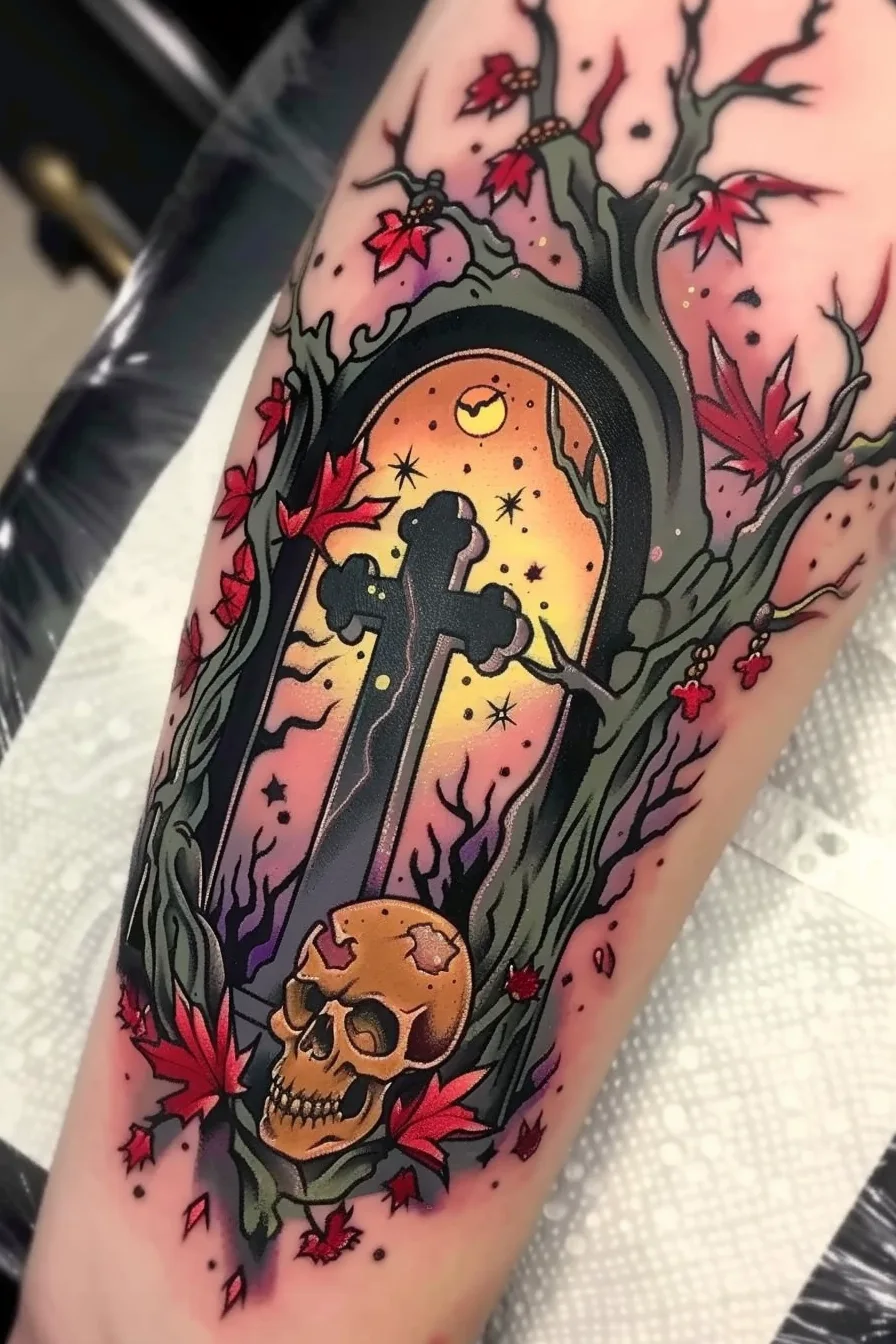
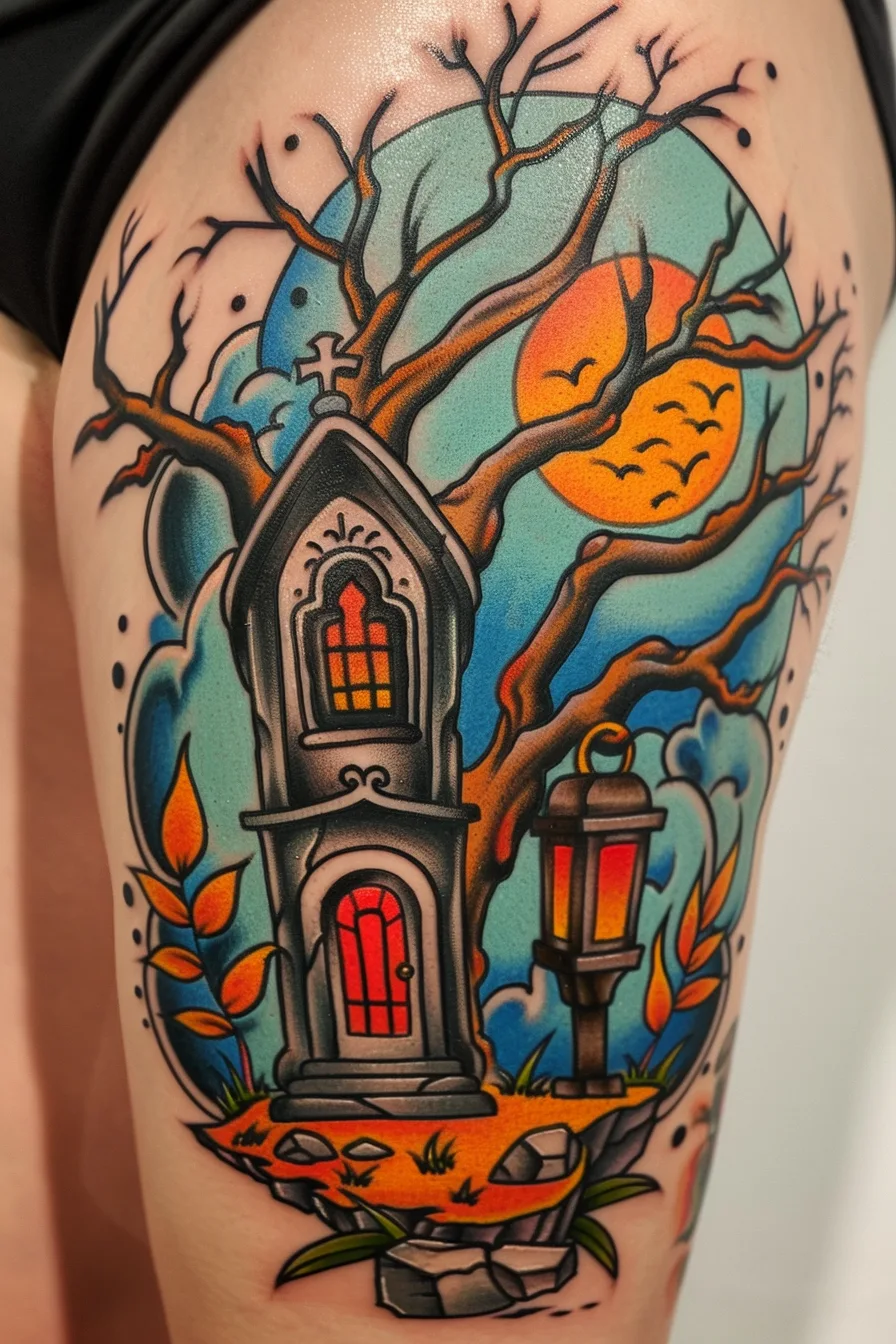
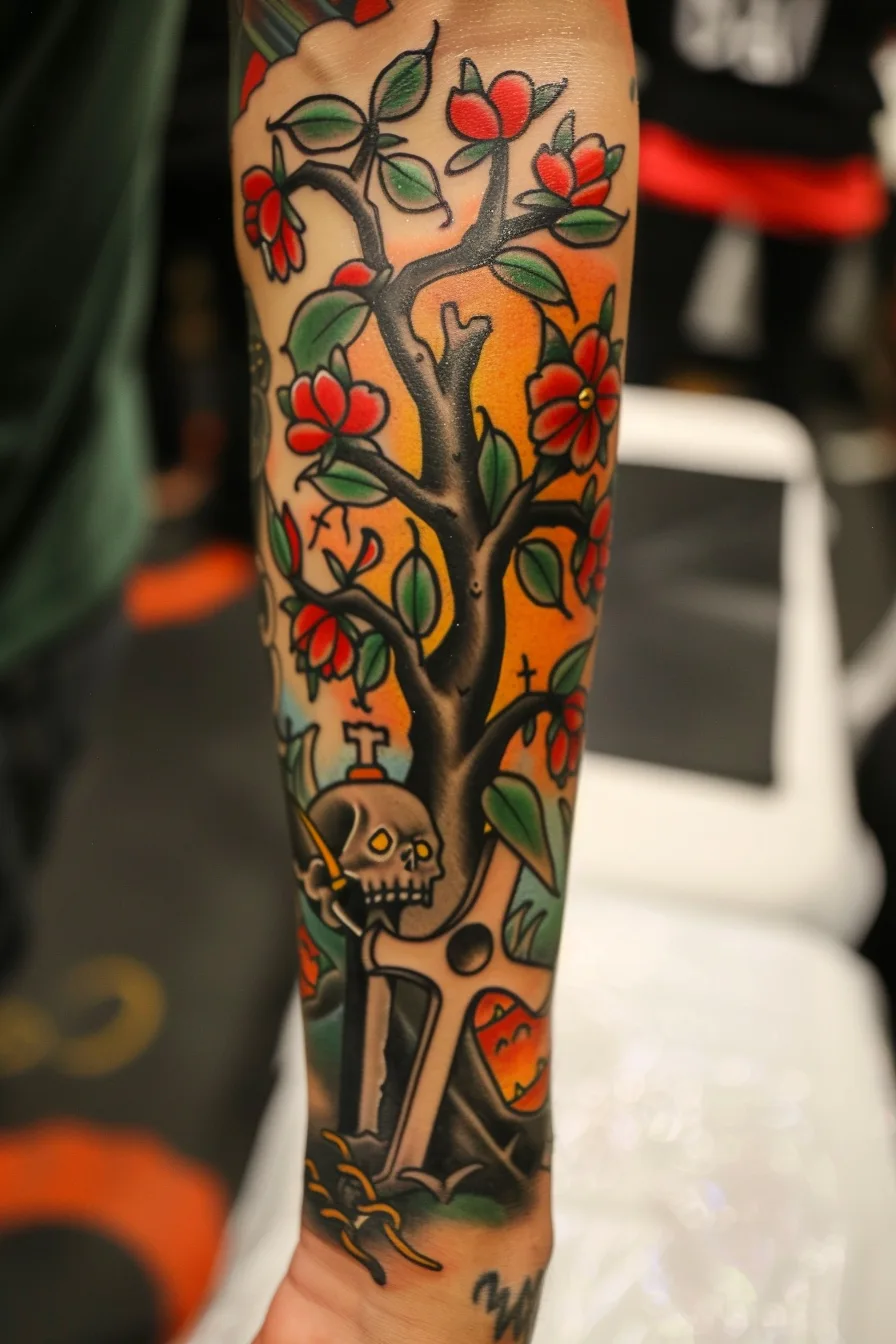

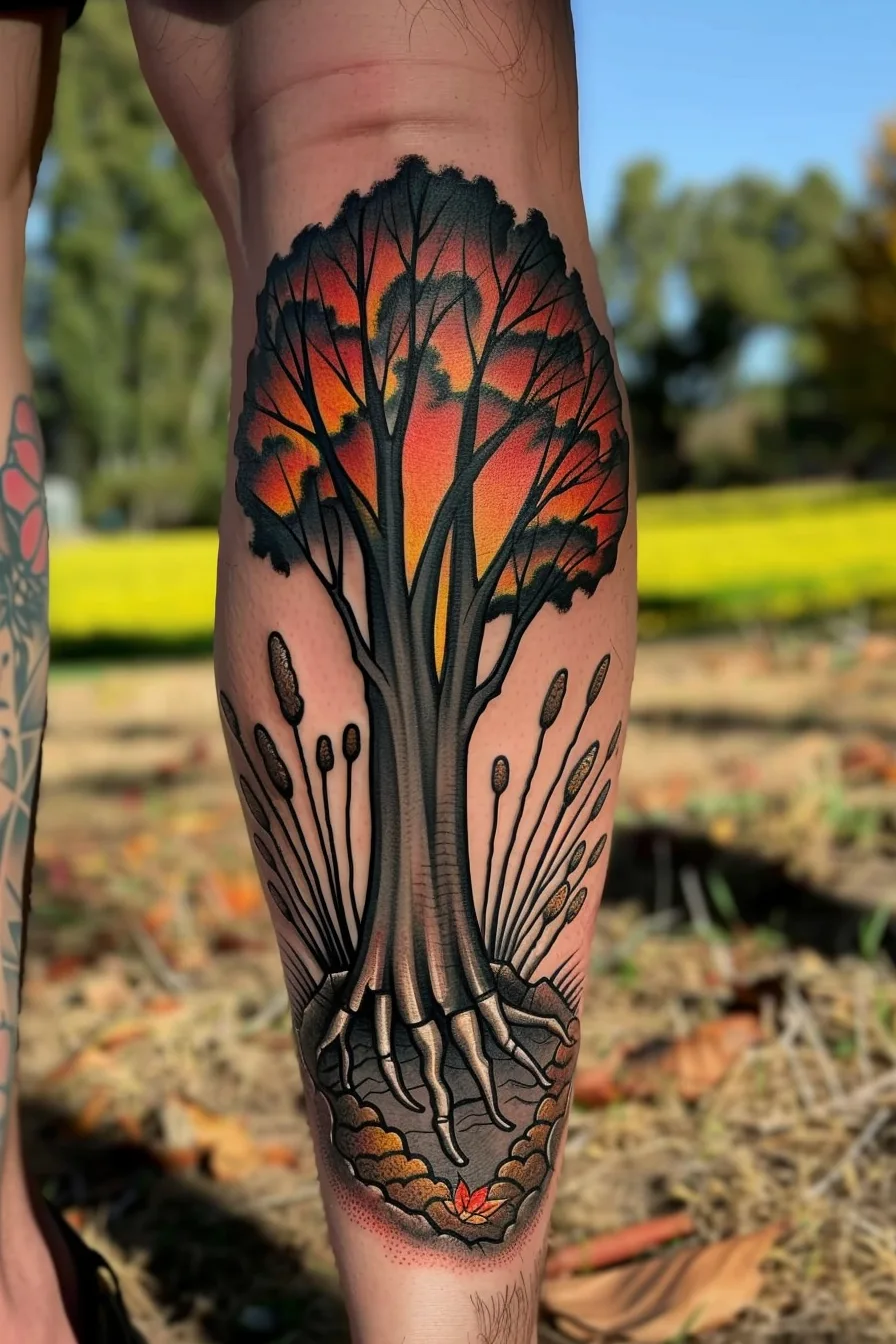
Purple
Complementing the serene and contemplative hues of blue, the use of purple in graveyard tattoos can evoke a range of symbolic meanings and emotional resonances. Often associated with a passionate spirit and gentle nature, purple can represent the duality of life and death, the coexistence of sorrow and hope.
The regal and introspective qualities of this color can convey a sense of mourning and reverence, while its connection to the spiritual realm suggests a deeper understanding of the afterlife. Whether incorporated into the design of a tombstone, a mourning figure, or the landscape itself, the strategic placement of purple elements in a graveyard tattoo can infuse the piece with a profound and contemplative essence.
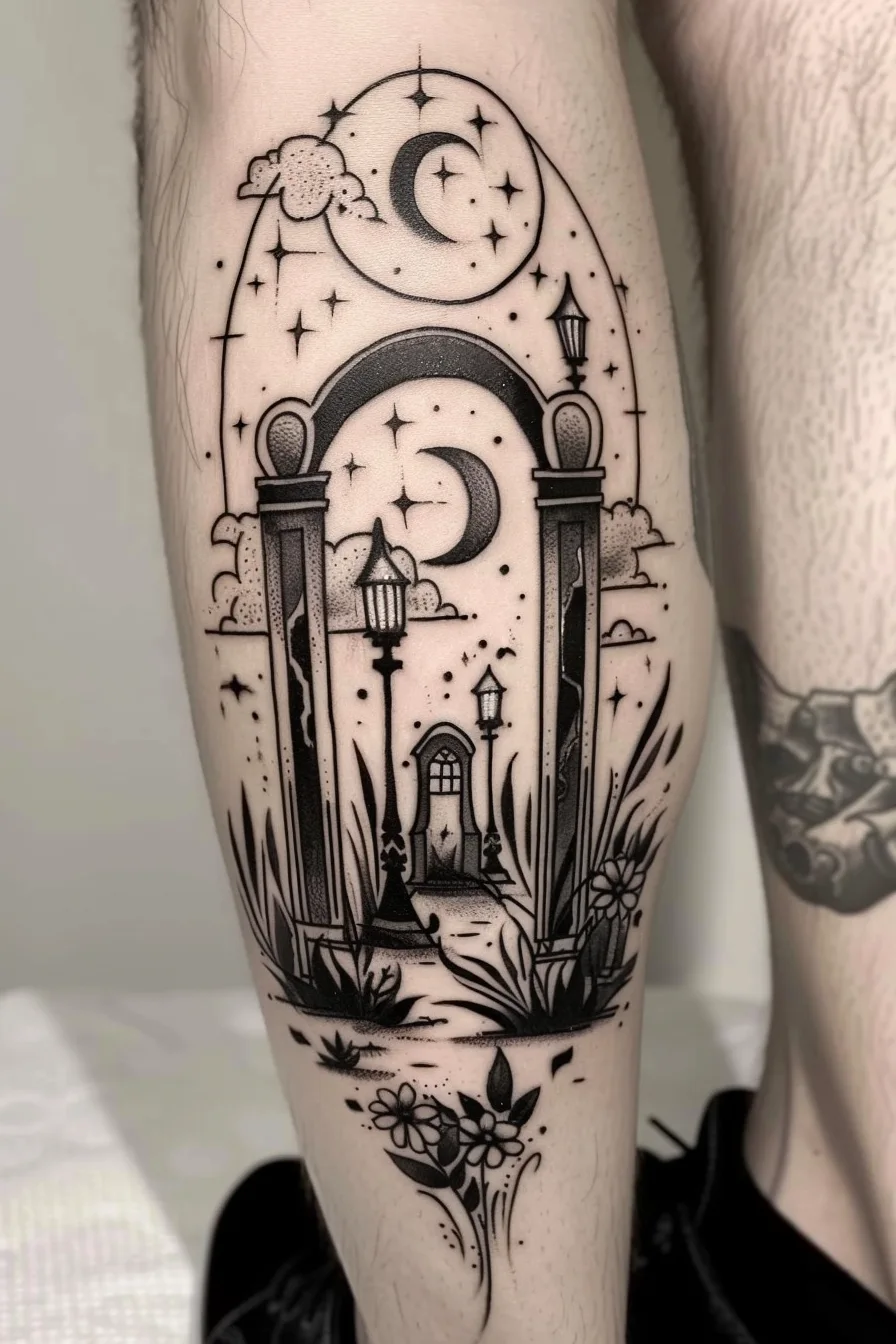
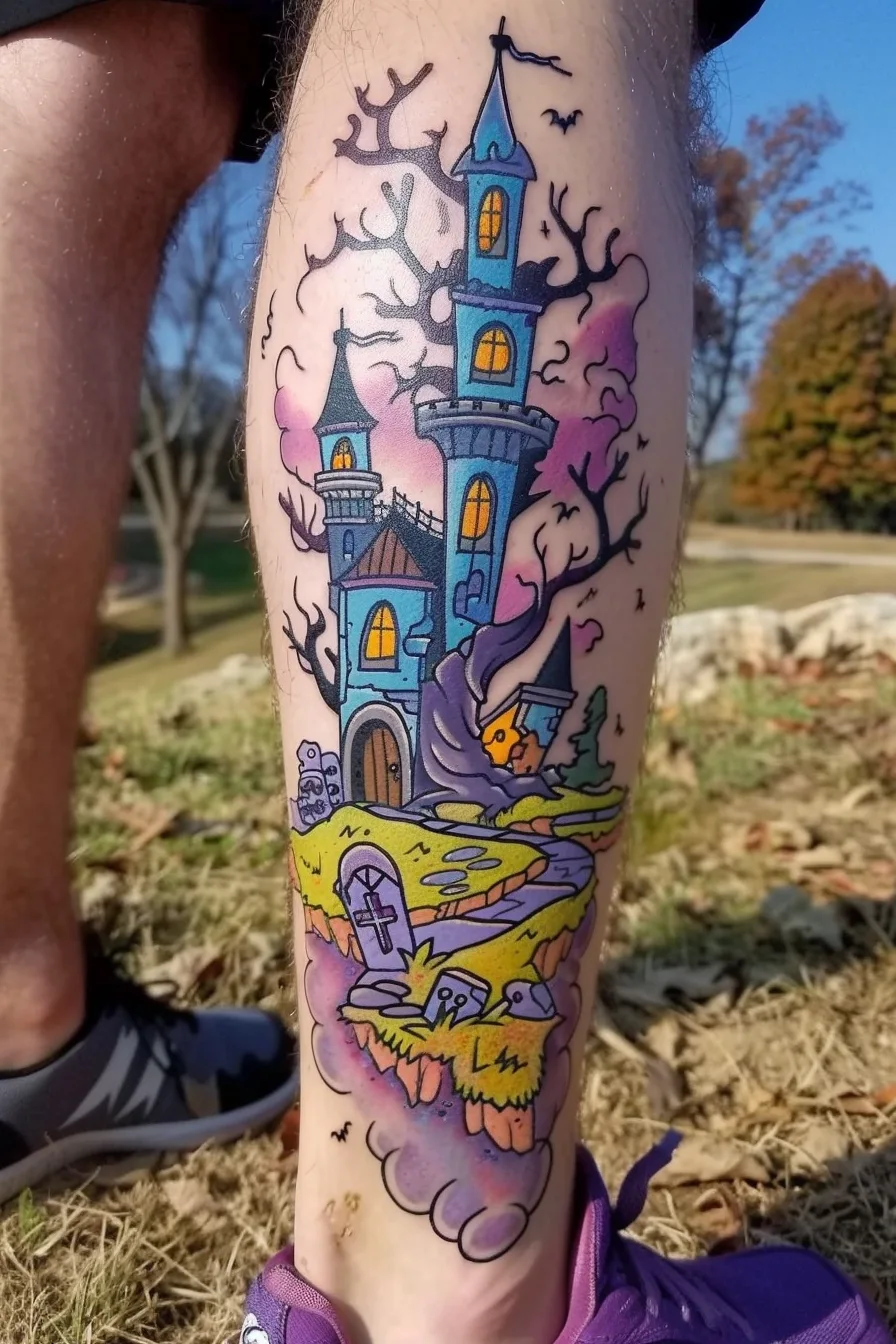
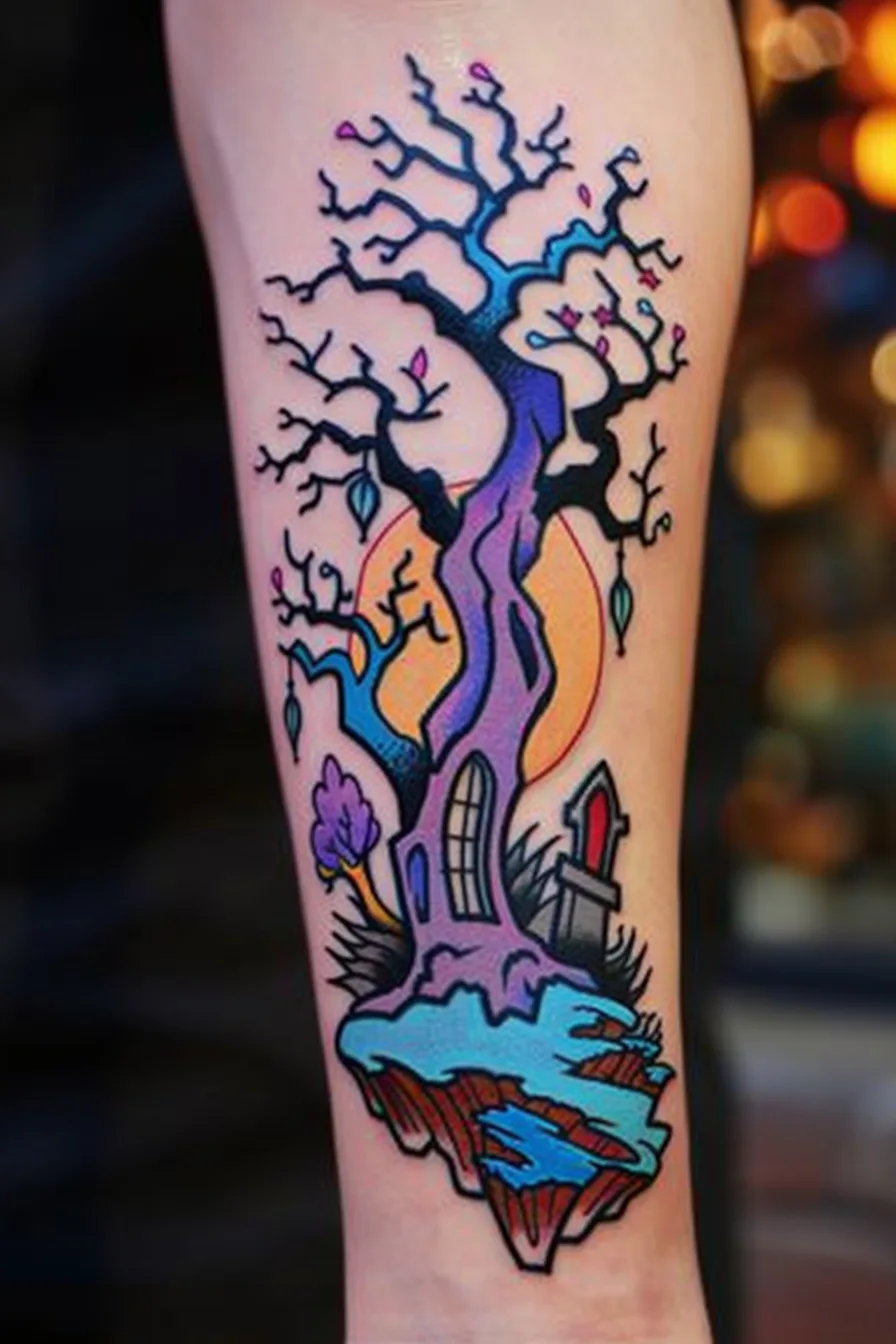
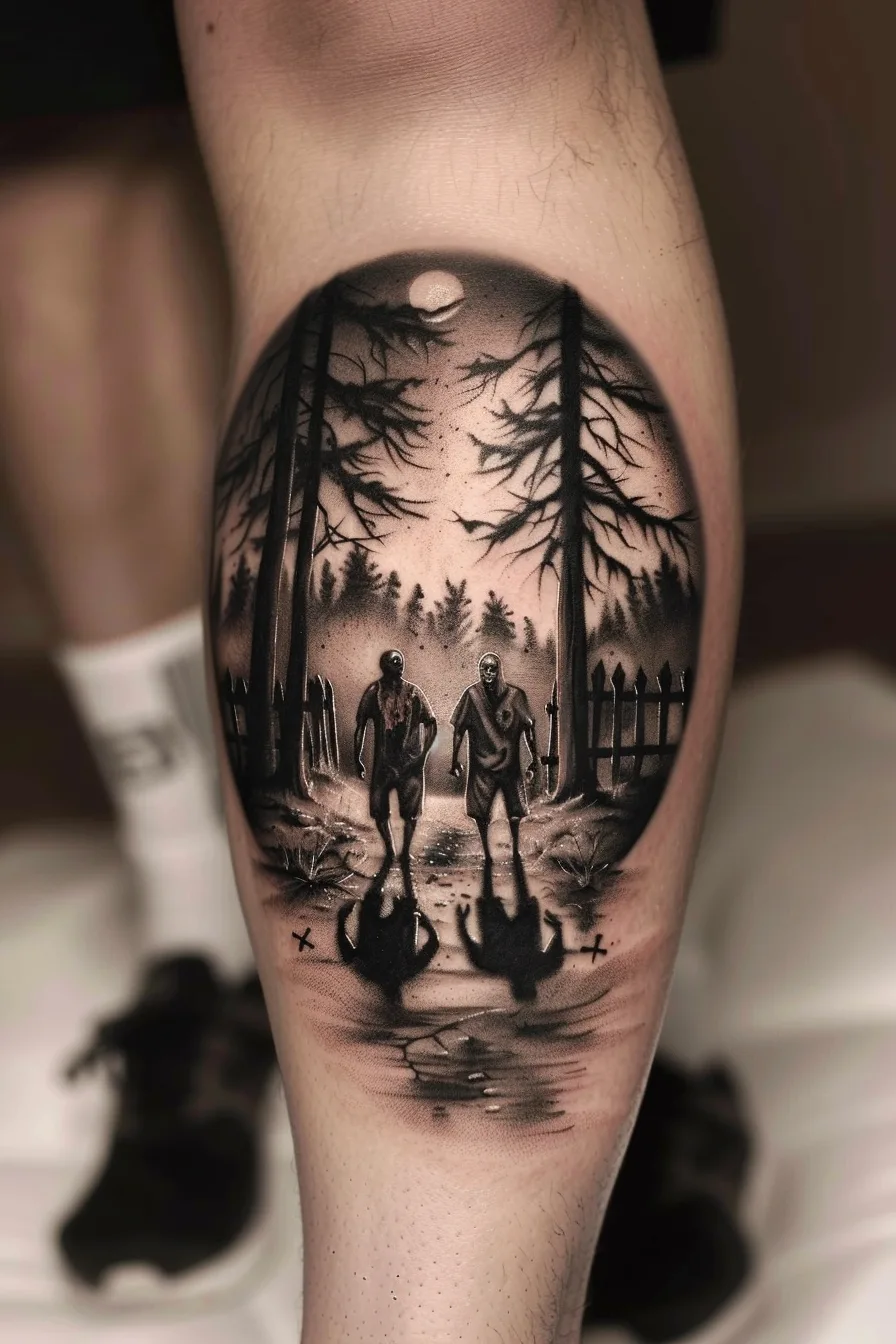
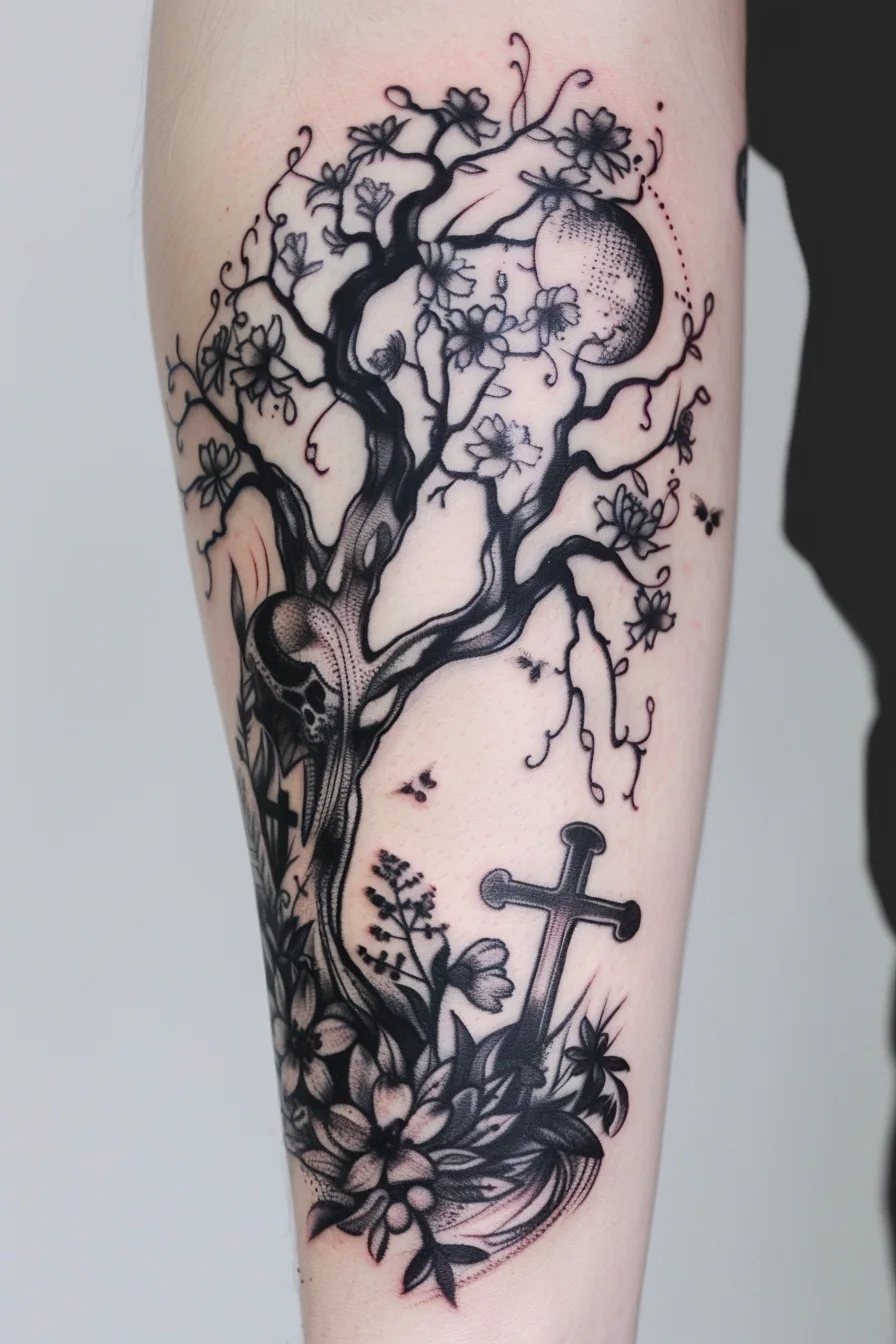
Pink
The softer, more delicate hues of pink can evoke a sense of tenderness and vulnerability when incorporated into the intricate designs of graveyard tattoos. Ranging from the gentle blush of a newborn's cheek to the vibrant fuchsia of a blooming flower, the versatility of this color allows it to convey a multitude of symbolic meanings within the context of these evocative works of body art.
Pastel-colored graveyard tattoos, for instance, may symbolize the fragility of life and the delicate nature of the human experience. The meaning behind pink tones in these tattoos can also suggest themes of compassion, empathy, and the healing power of love, even in the face of mortality.
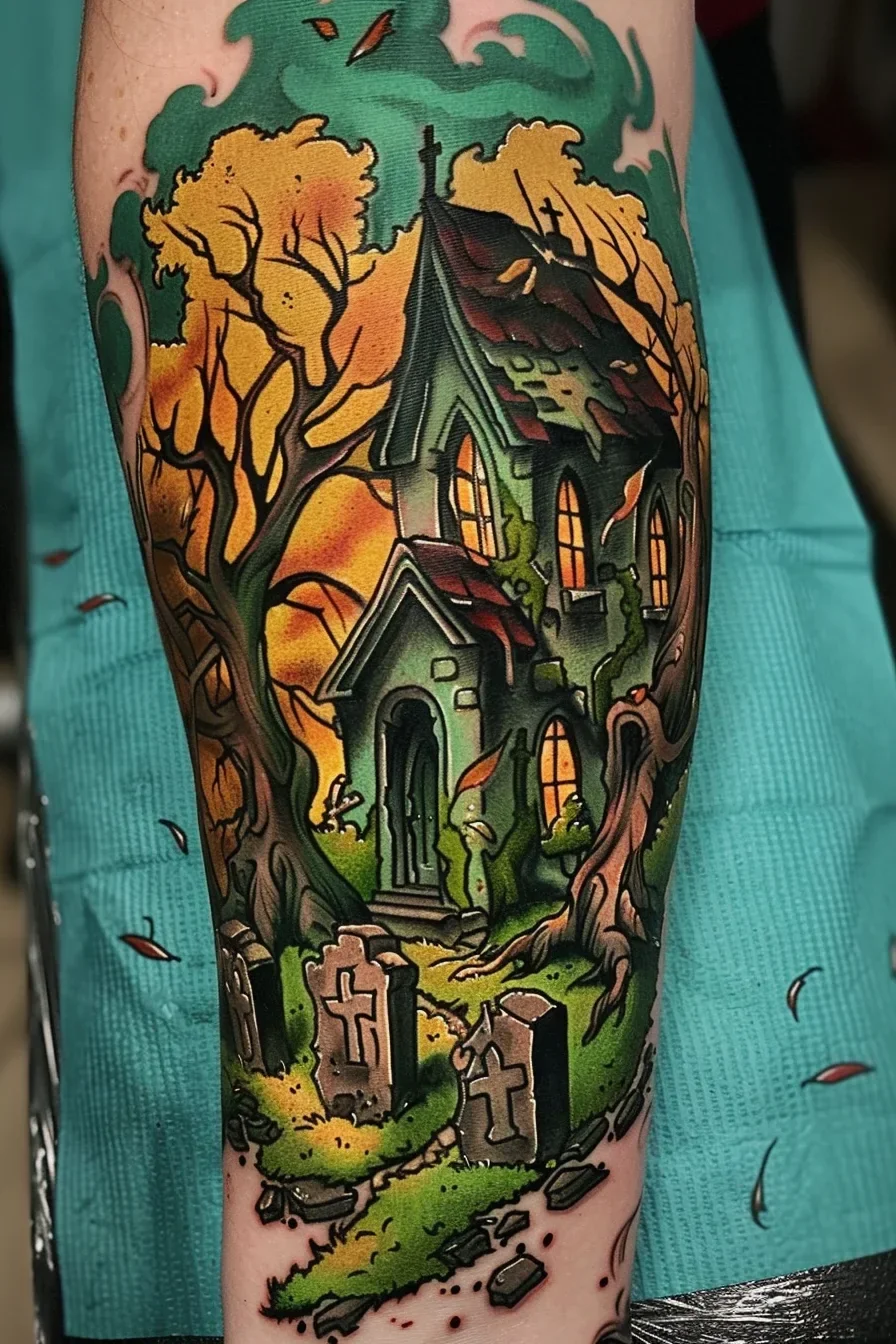
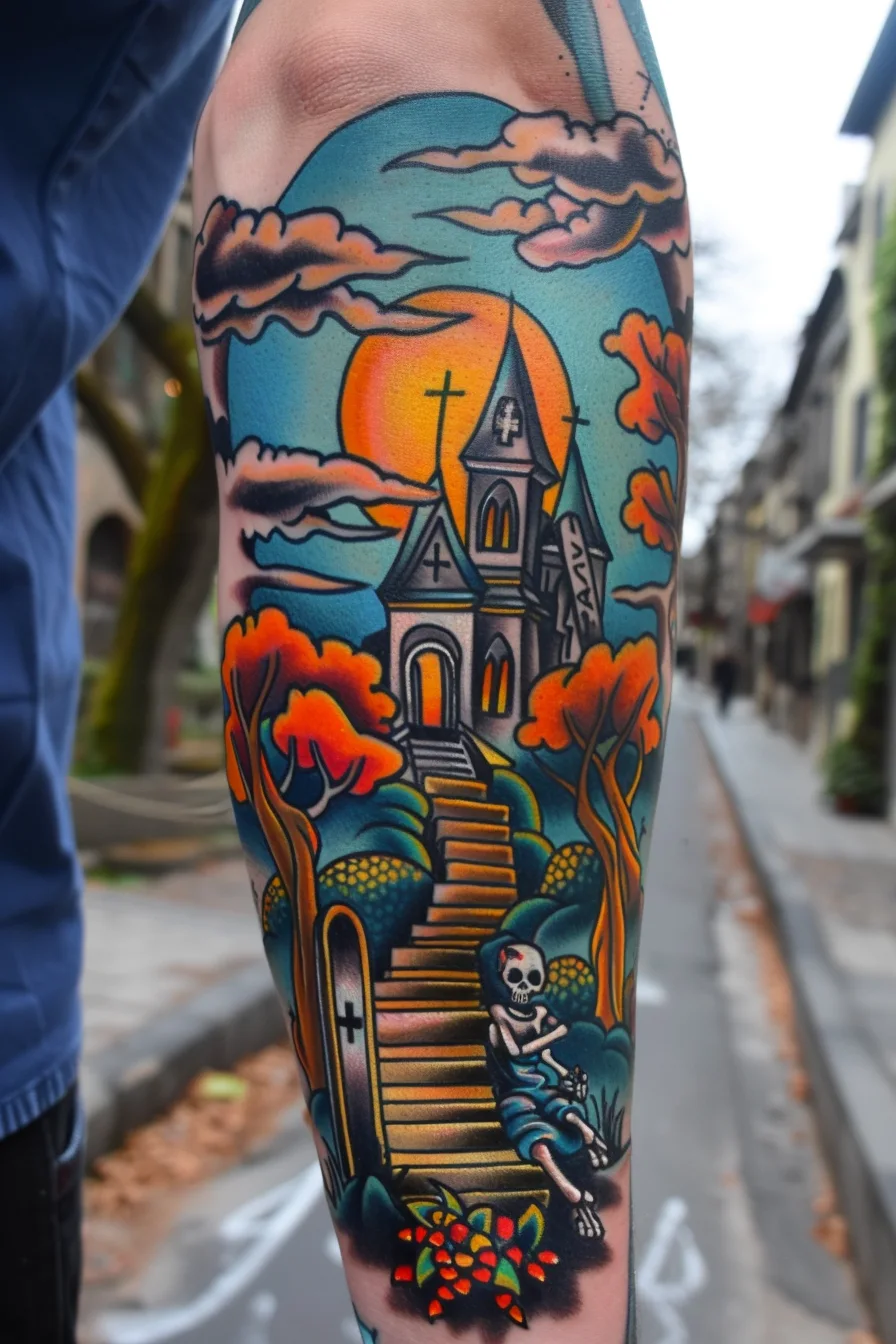
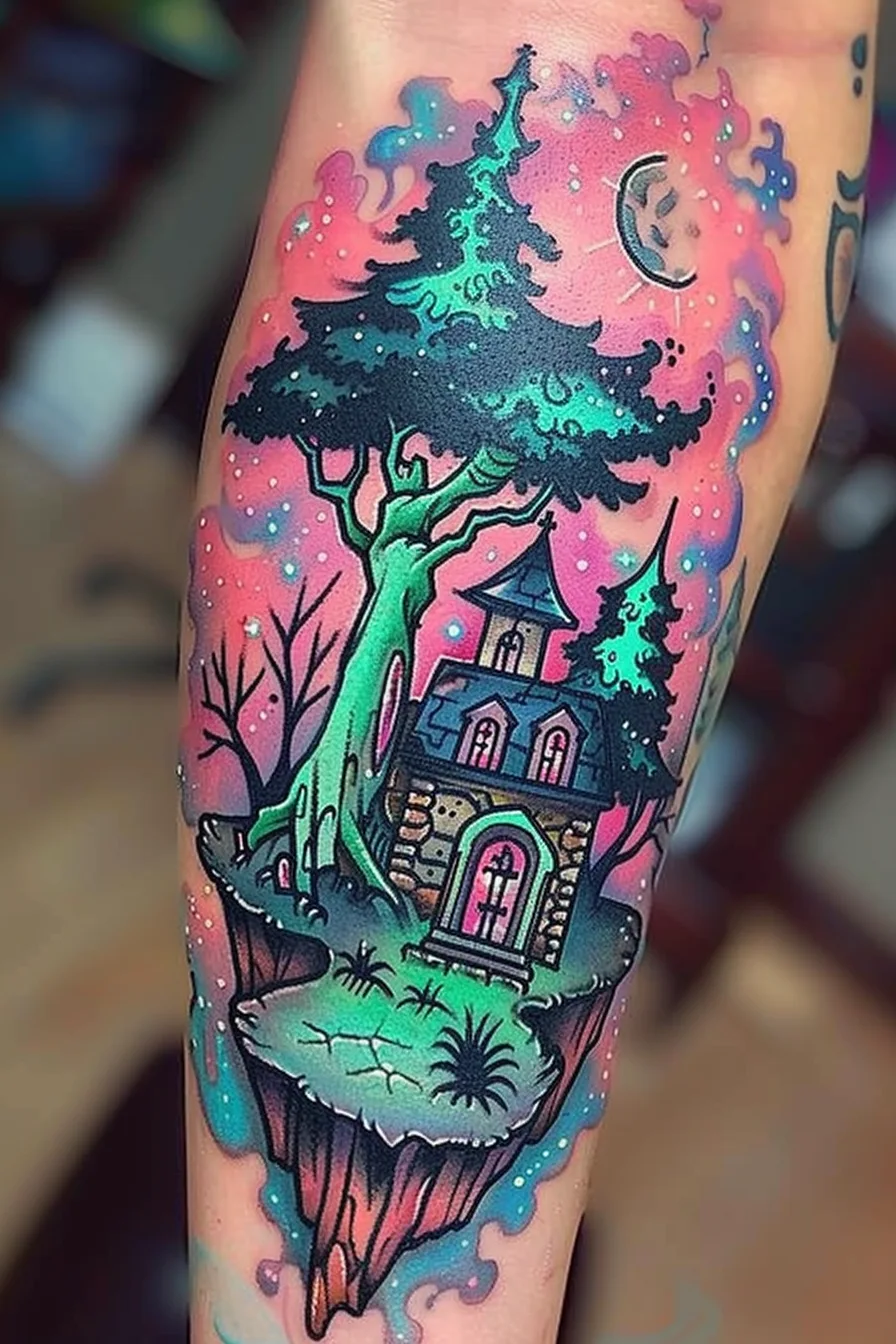
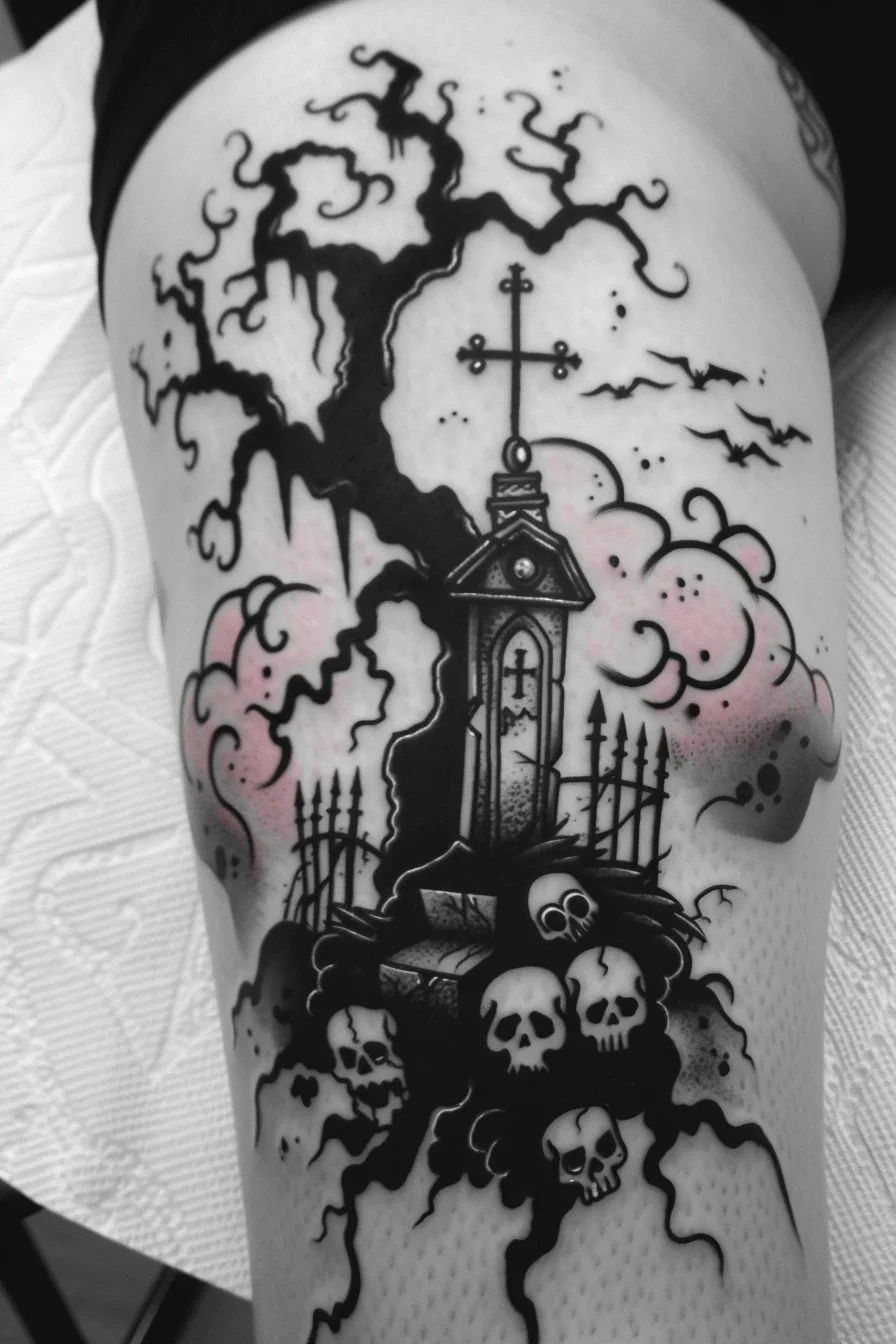
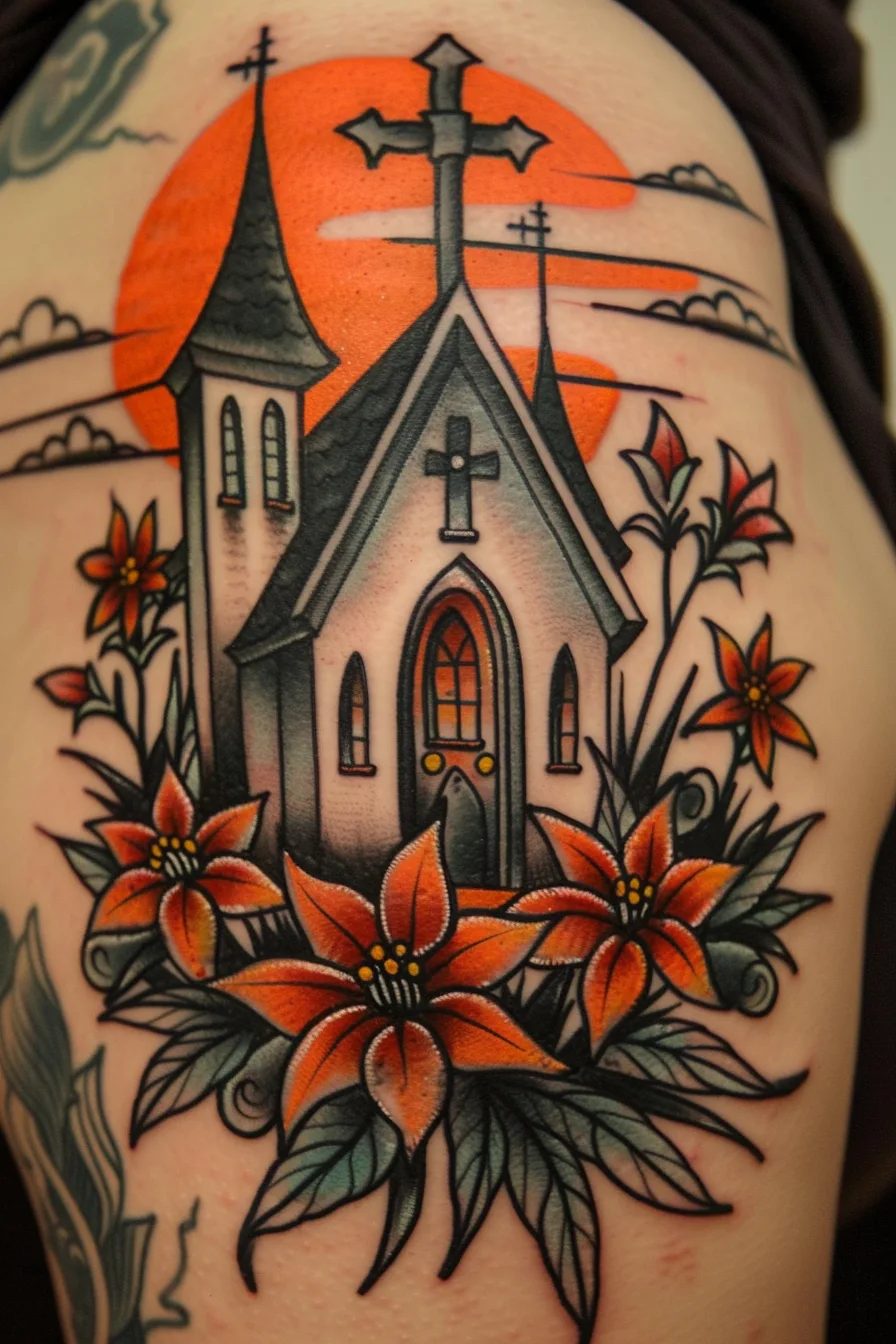
Orange
Vibrant hues of orange can also feature prominently in the intricate designs of graveyard tattoos, evoking a range of symbolic meanings that complement the somber themes often associated with this style of body art.
Understated vibrance in the form of a glowing, golden sunset can represent the cycle of life and death, hinting at the transitory nature of our existence. This warm, earthy tone may also symbolize inner strength, resilience, and the enduring power of the human spirit, even in the face of mortality.
Whether incorporated into the tombstones, flames, or other elements of a graveyard tattoo, the versatile color orange can lend a sense of depth, reflection, and contemplation to these deeply meaningful designs.
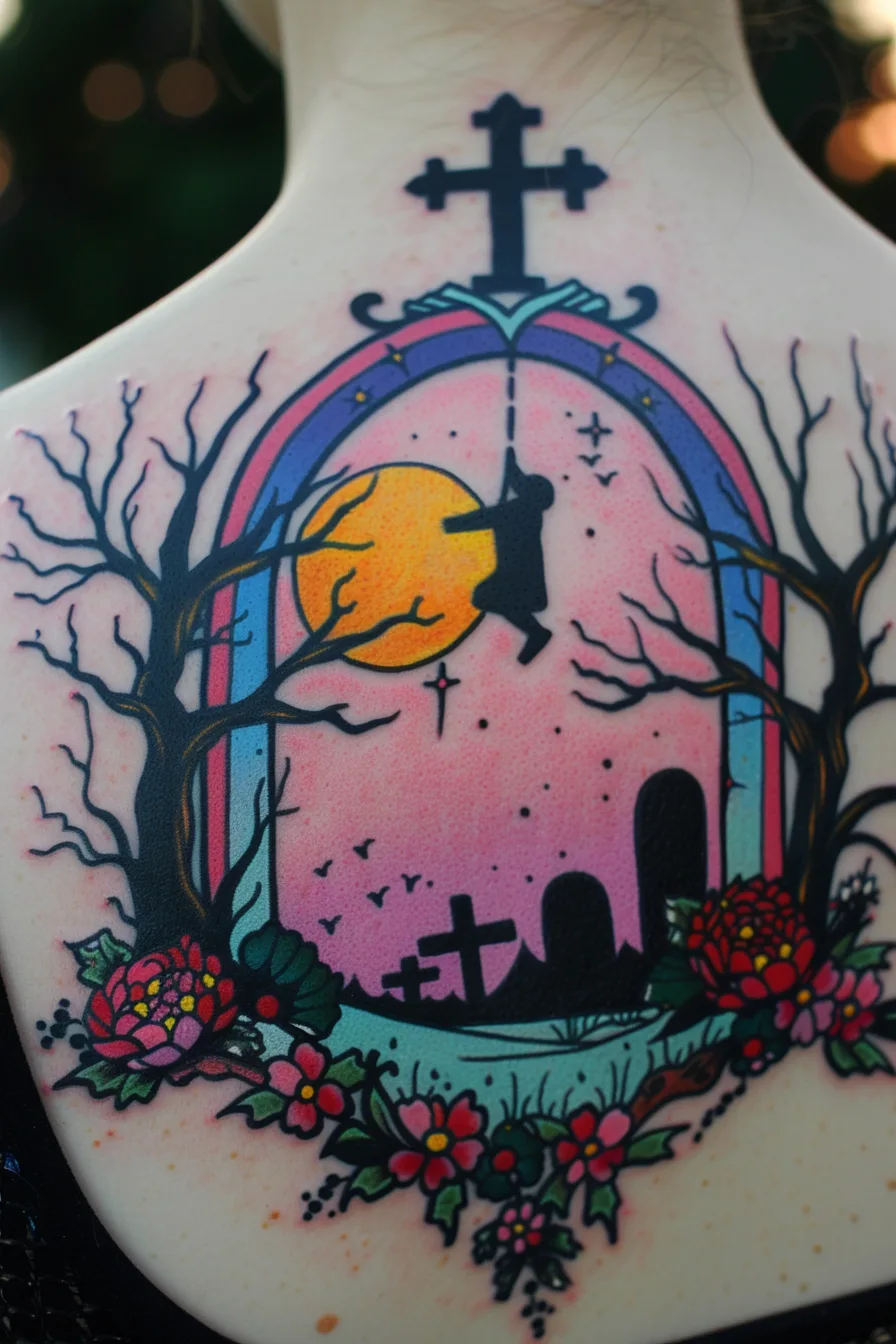
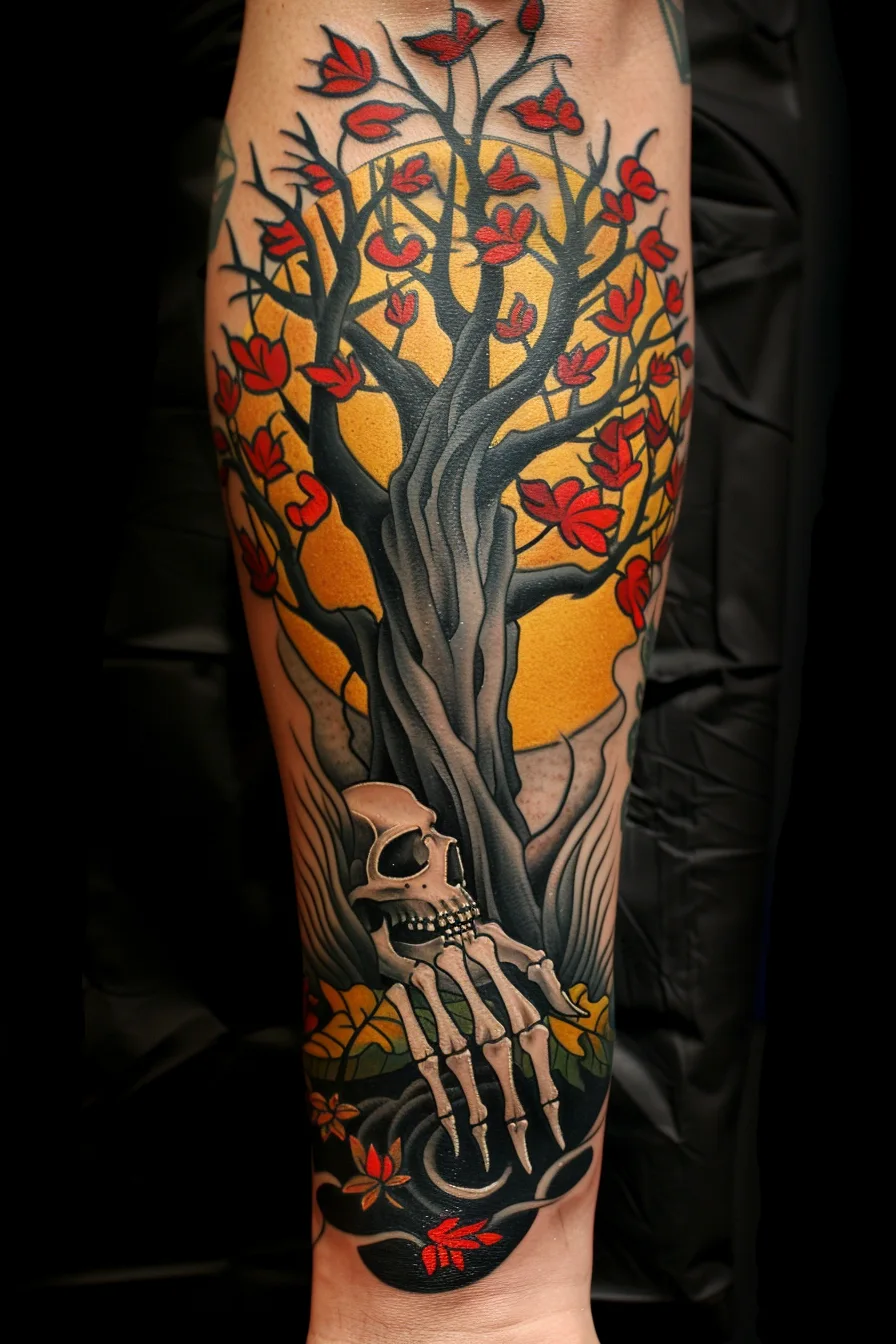
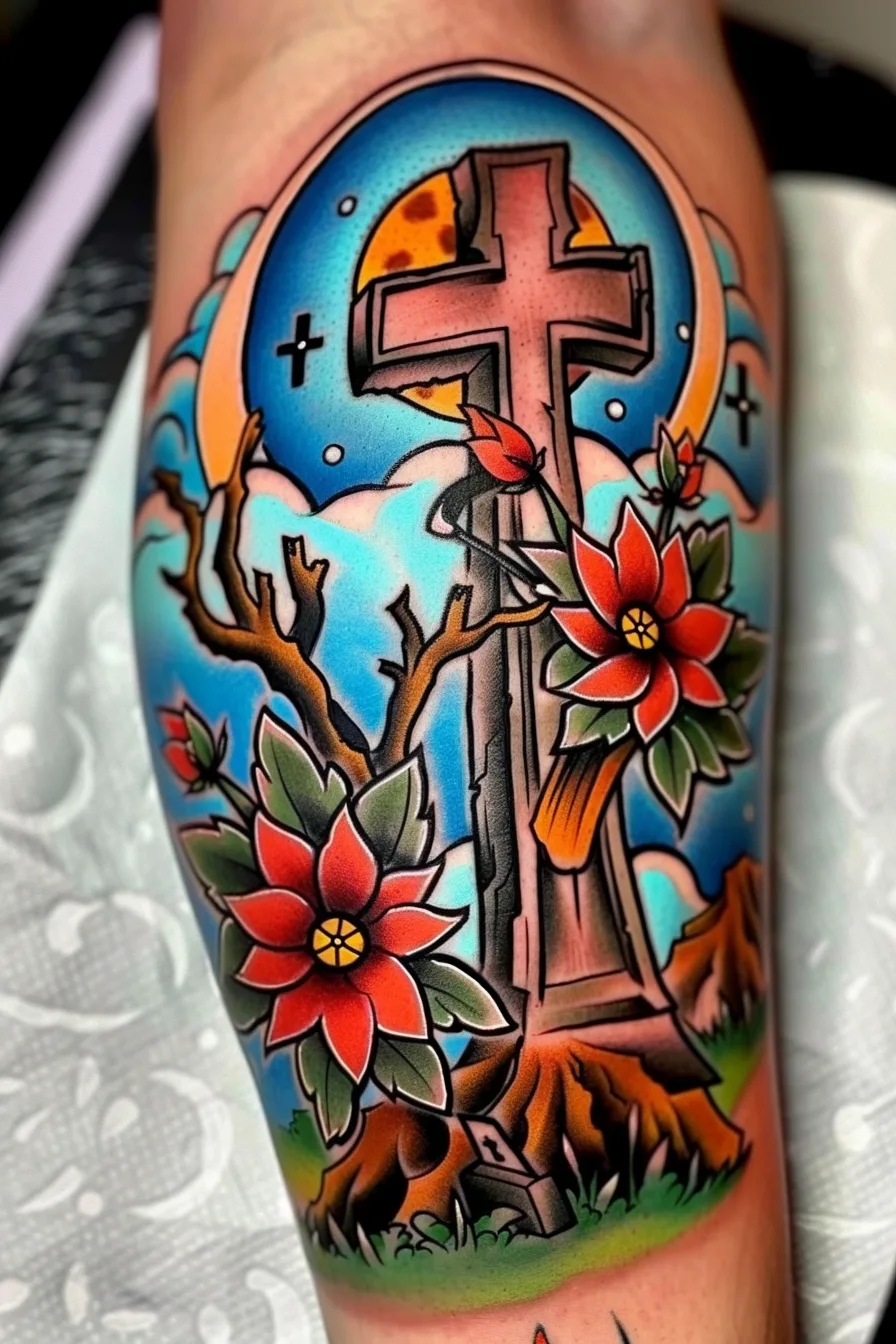
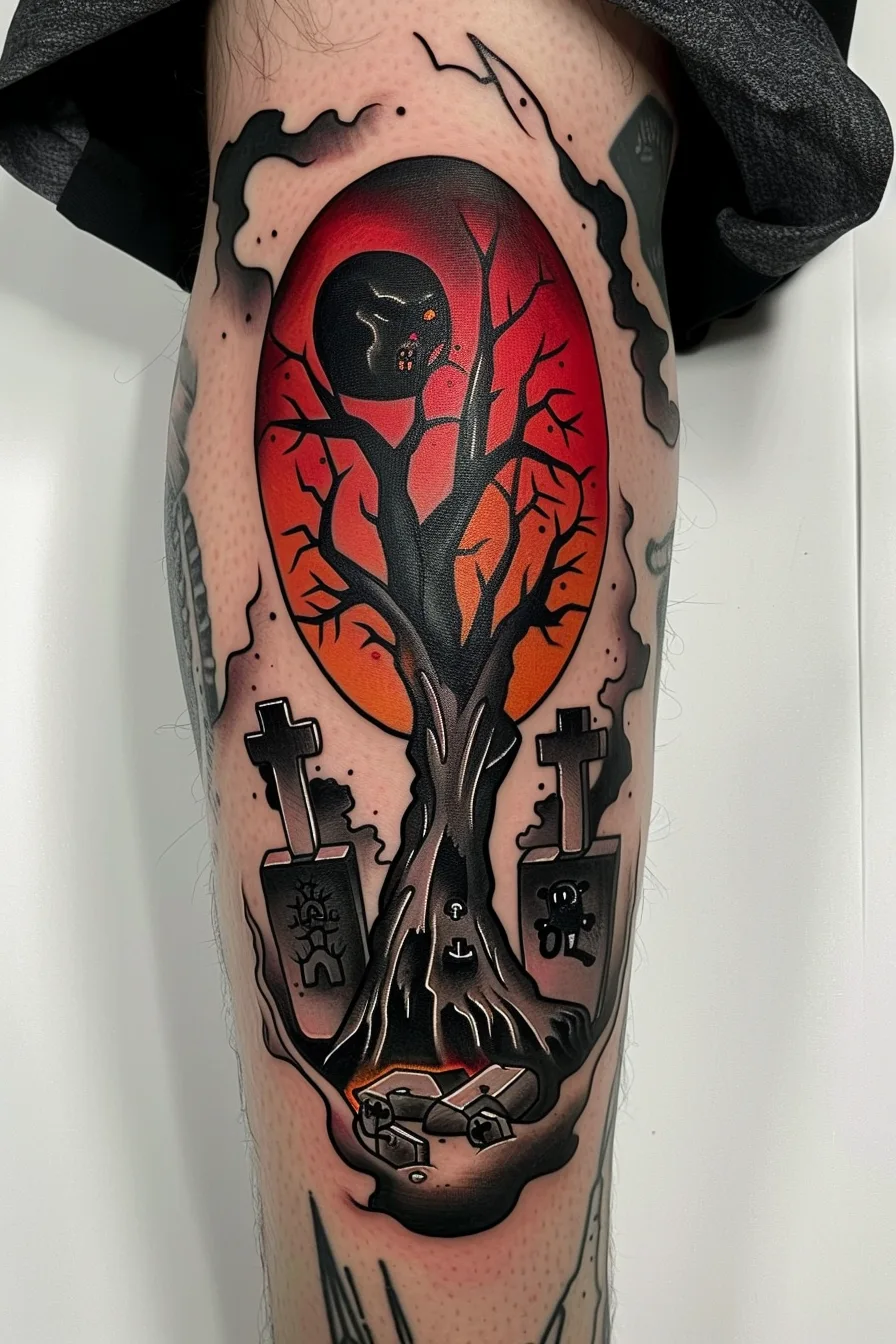
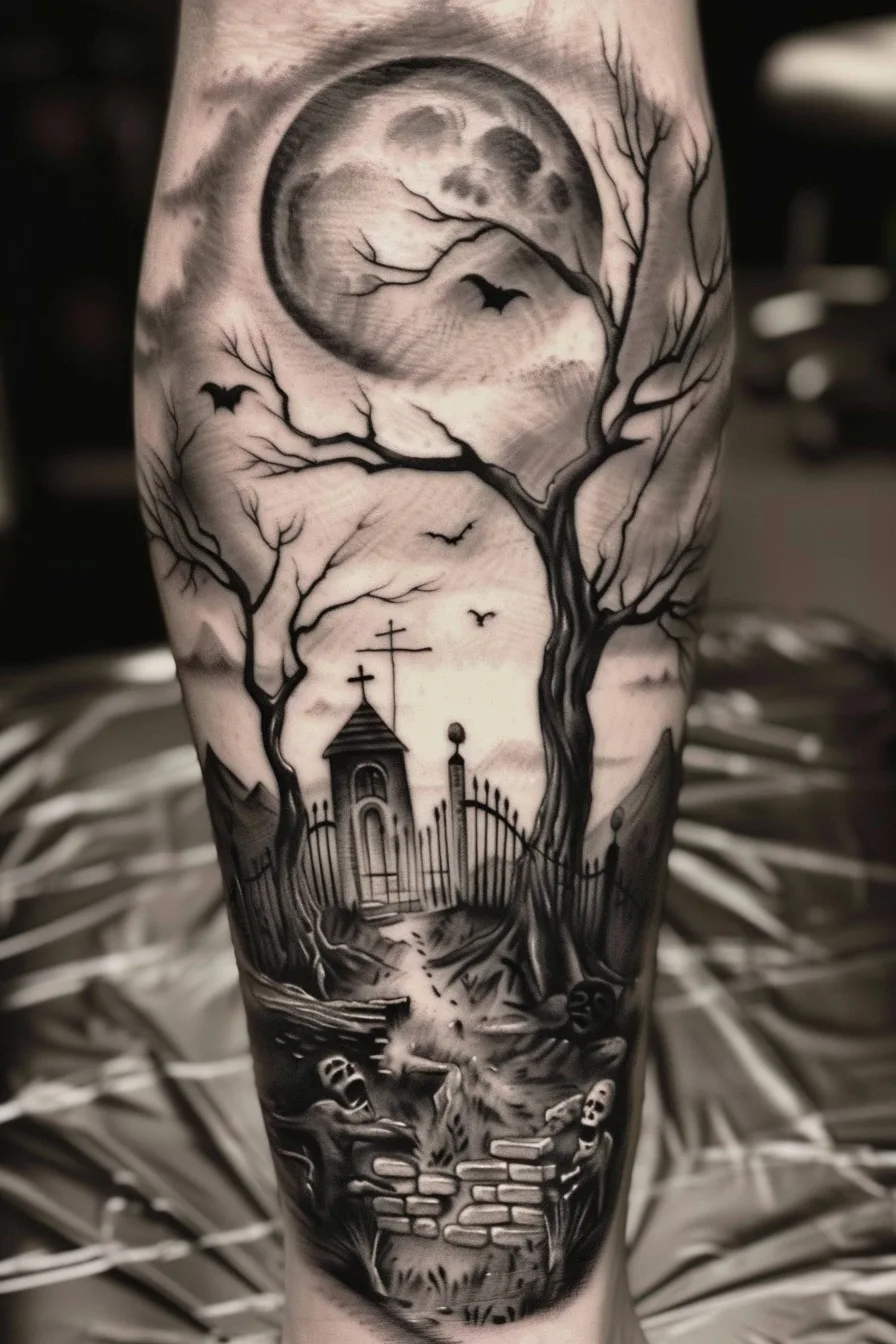
Tombstone and Willow Tree
The graveyard tattoo motif often features a tombstone draped with a cascading willow tree. This symbolic image can represent the fragility of life and the eternal cycle of nature.
Additionally, a broken headstone accompanied by a crescent moon can signify the transience of earthly existence and the promise of spiritual renewal.
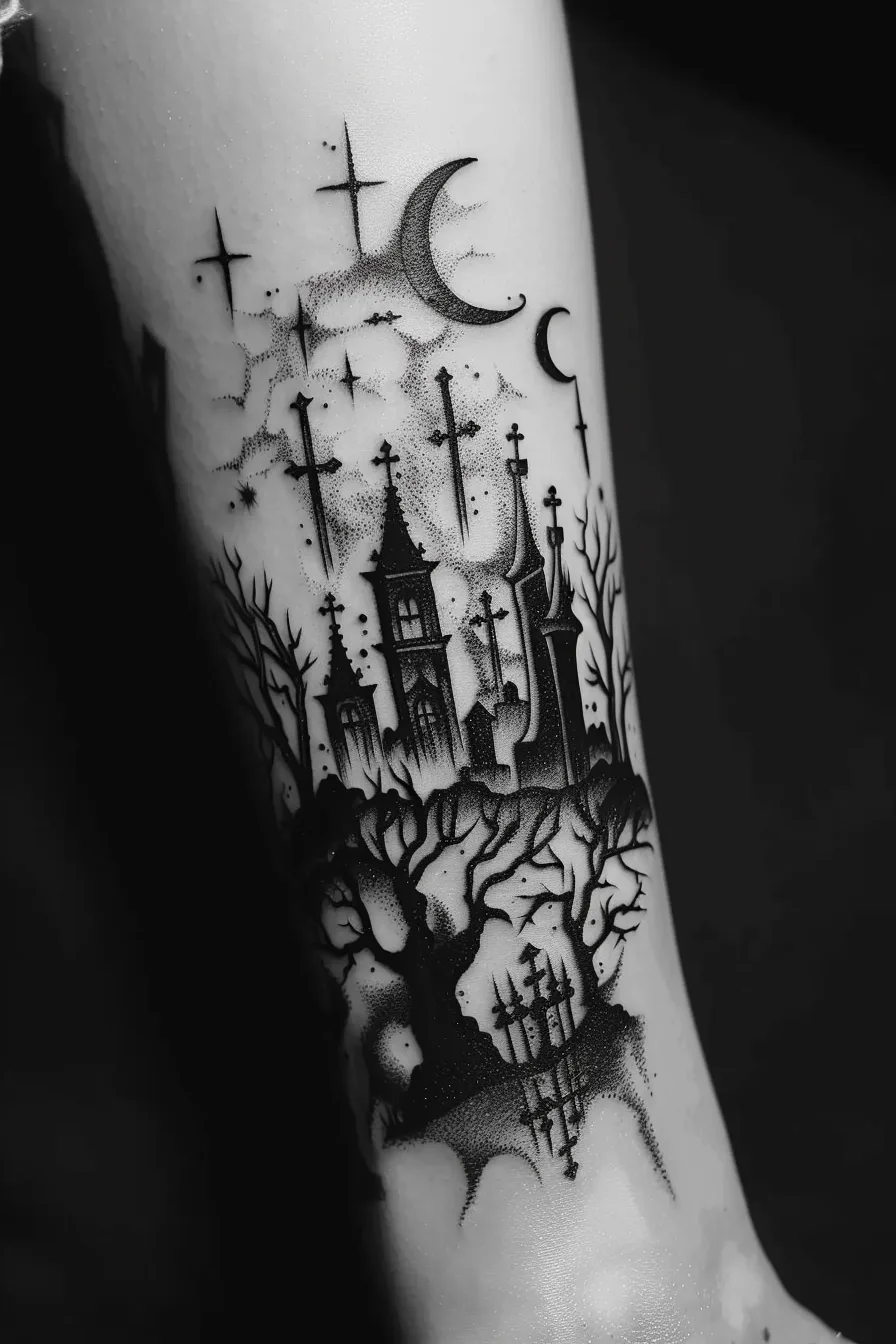
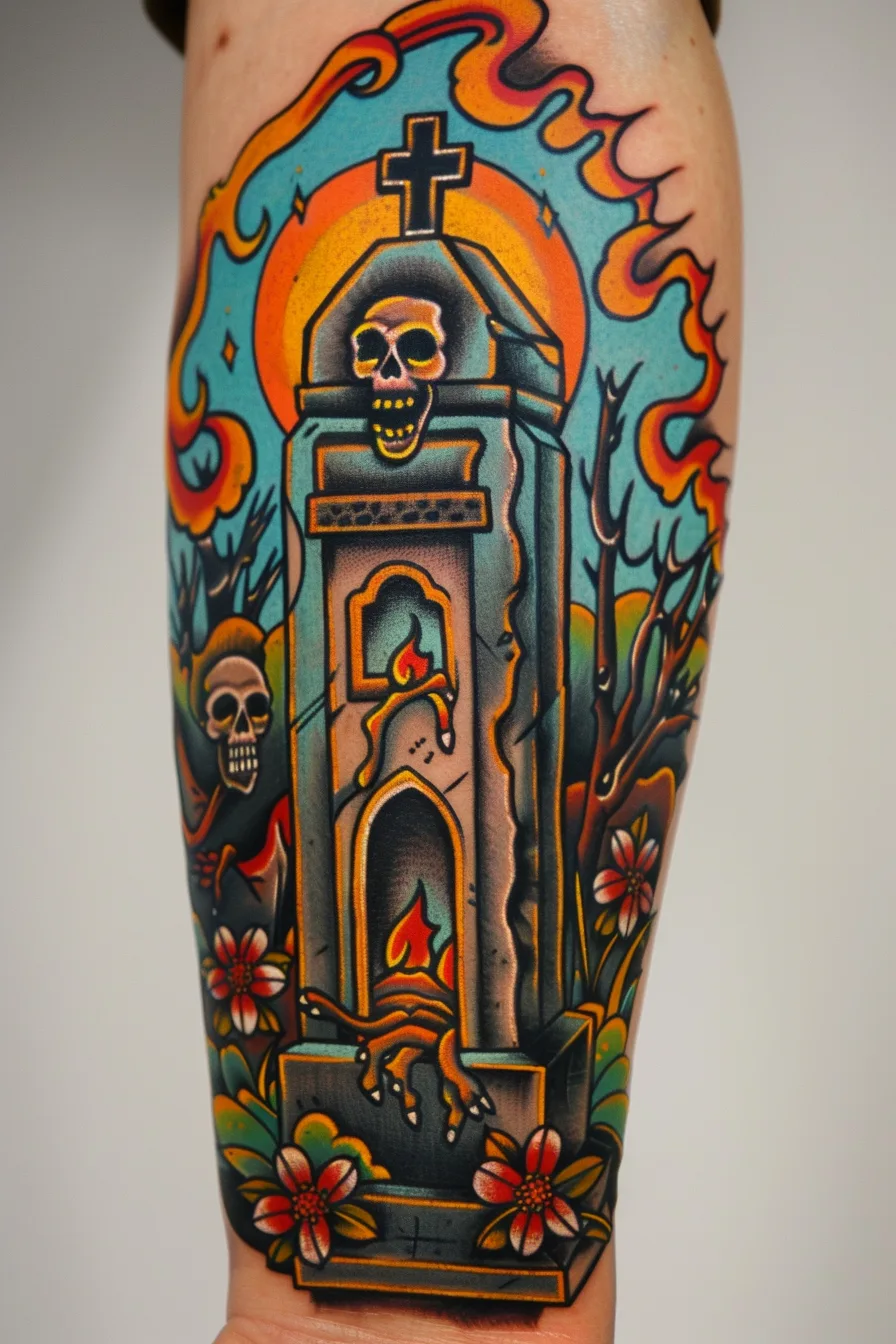
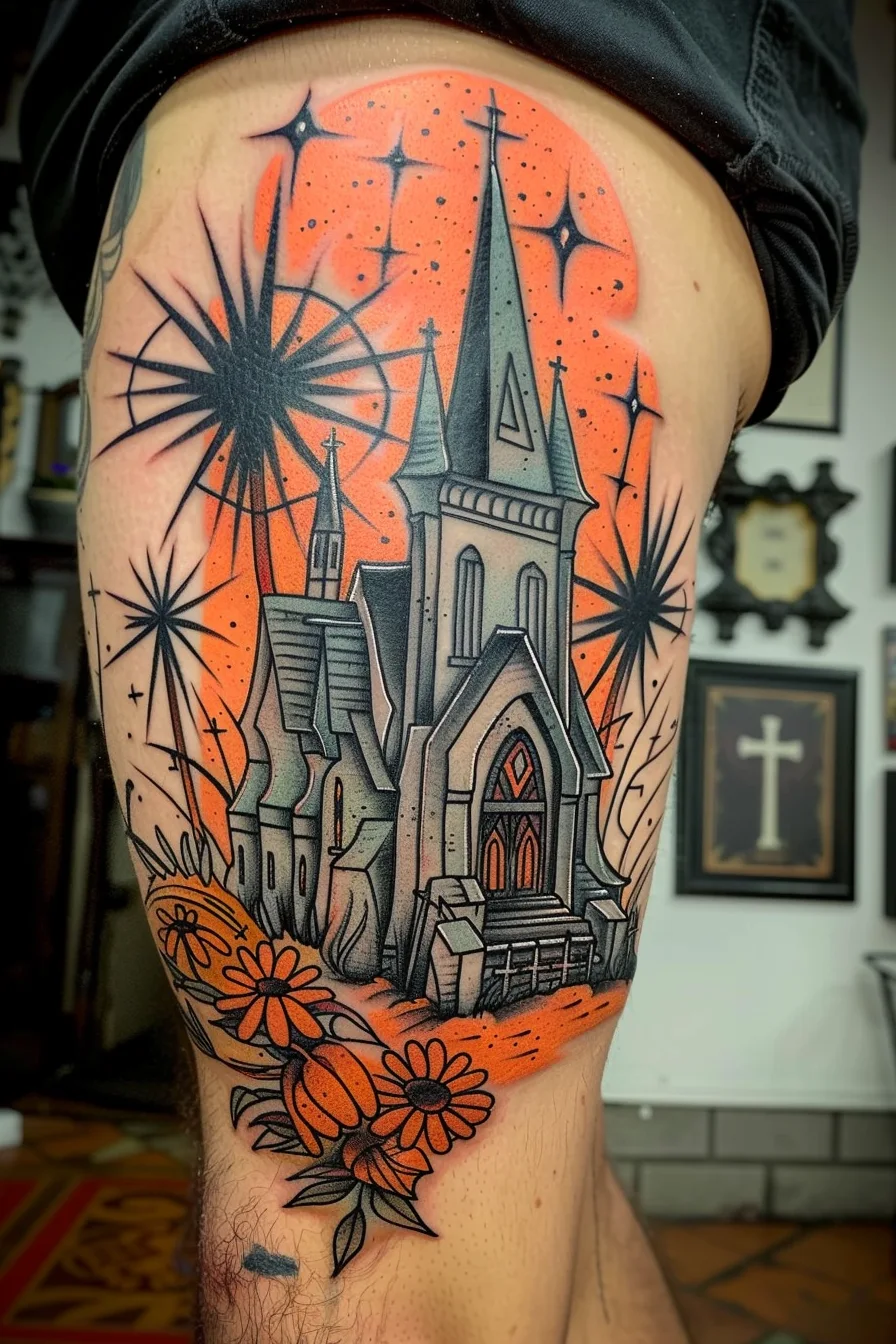
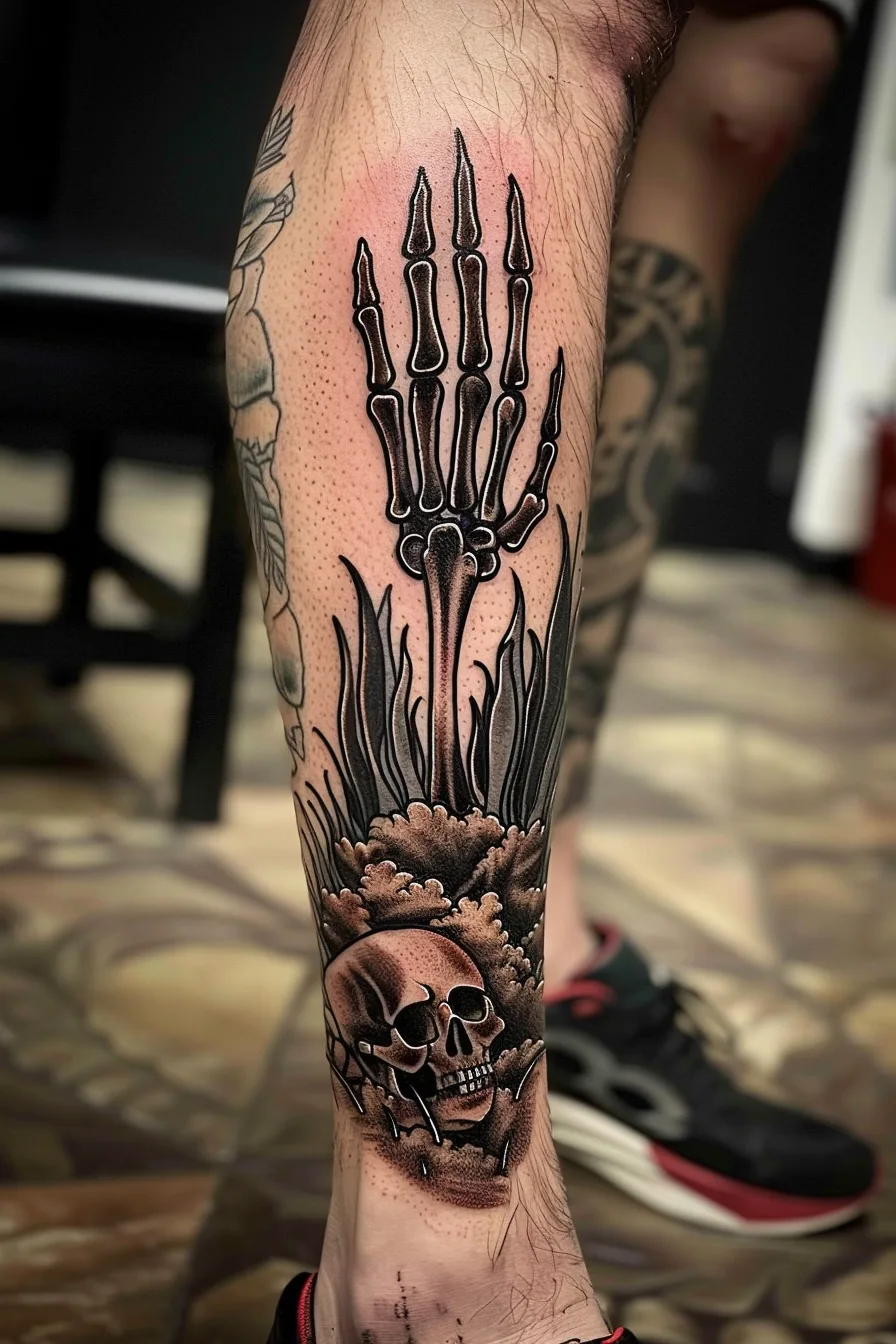
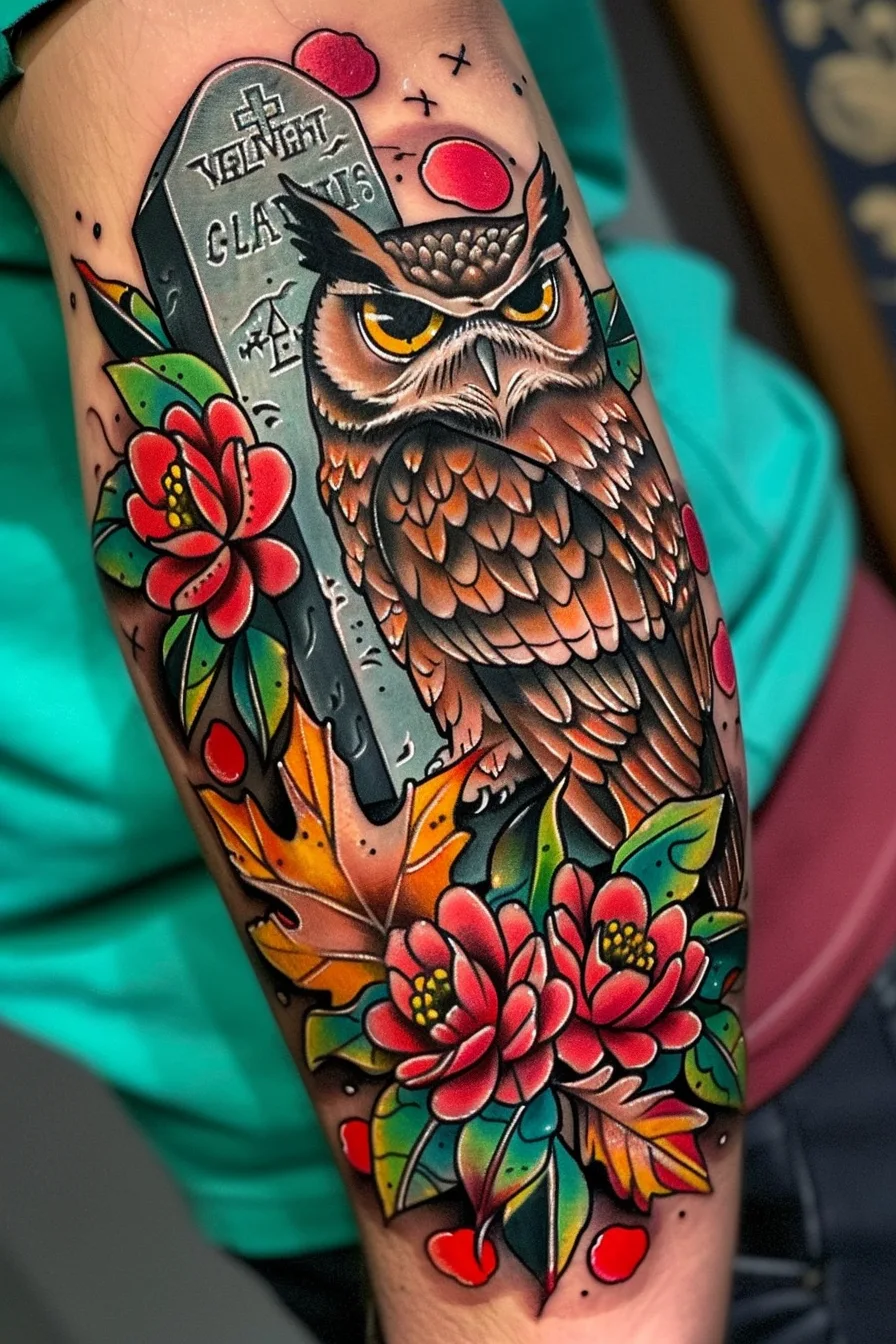
Willow Tree Cascading Over Tombstone
A cascading willow tree, its drooping branches gracefully enveloping the solemn tombstone, is a poignant symbol often found in cemetery settings.
The willow tree is often associated with the grieving process, as its weeping appearance reflects the sorrow and sadness felt by those mourning the loss of a loved one.
Furthermore, the willow tree is seen as a symbol of spiritual connection, with its roots delving deep into the earth, representing the bond between the physical world and the afterlife.
The willow's cascading form over the tombstone creates a serene and contemplative atmosphere, inviting visitors to reflect on the significance of life, death, and the enduring bonds that transcend the physical realm.
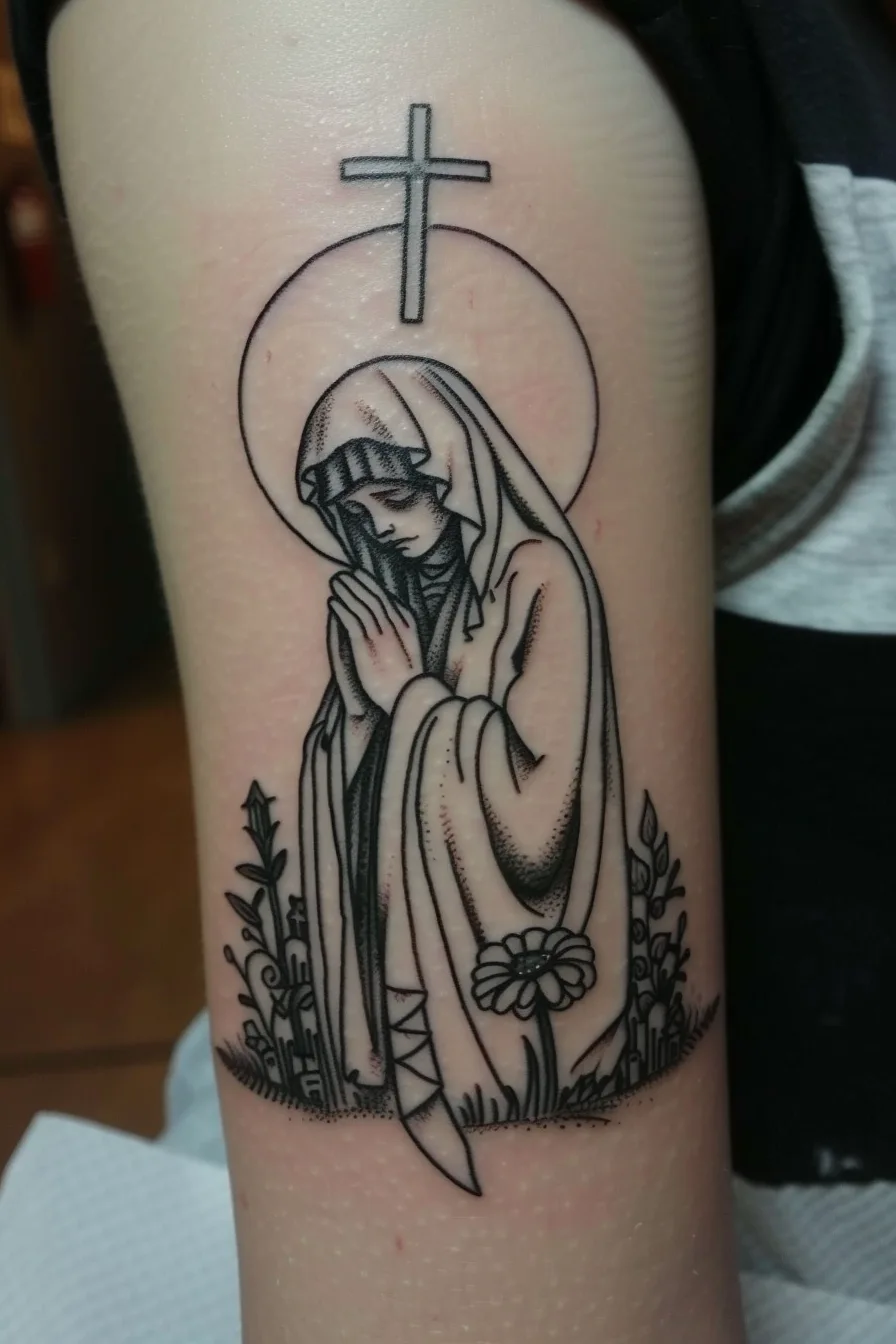
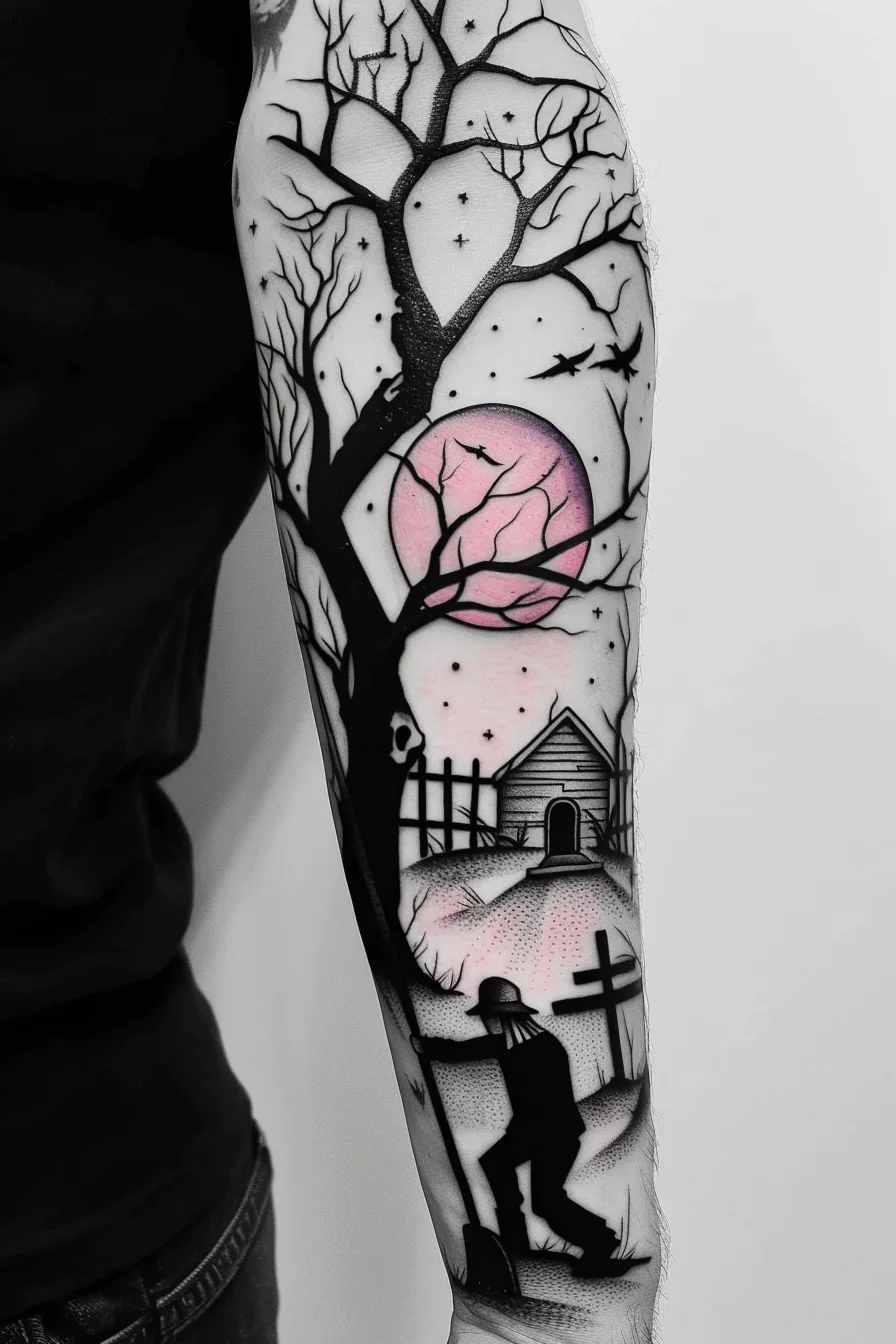
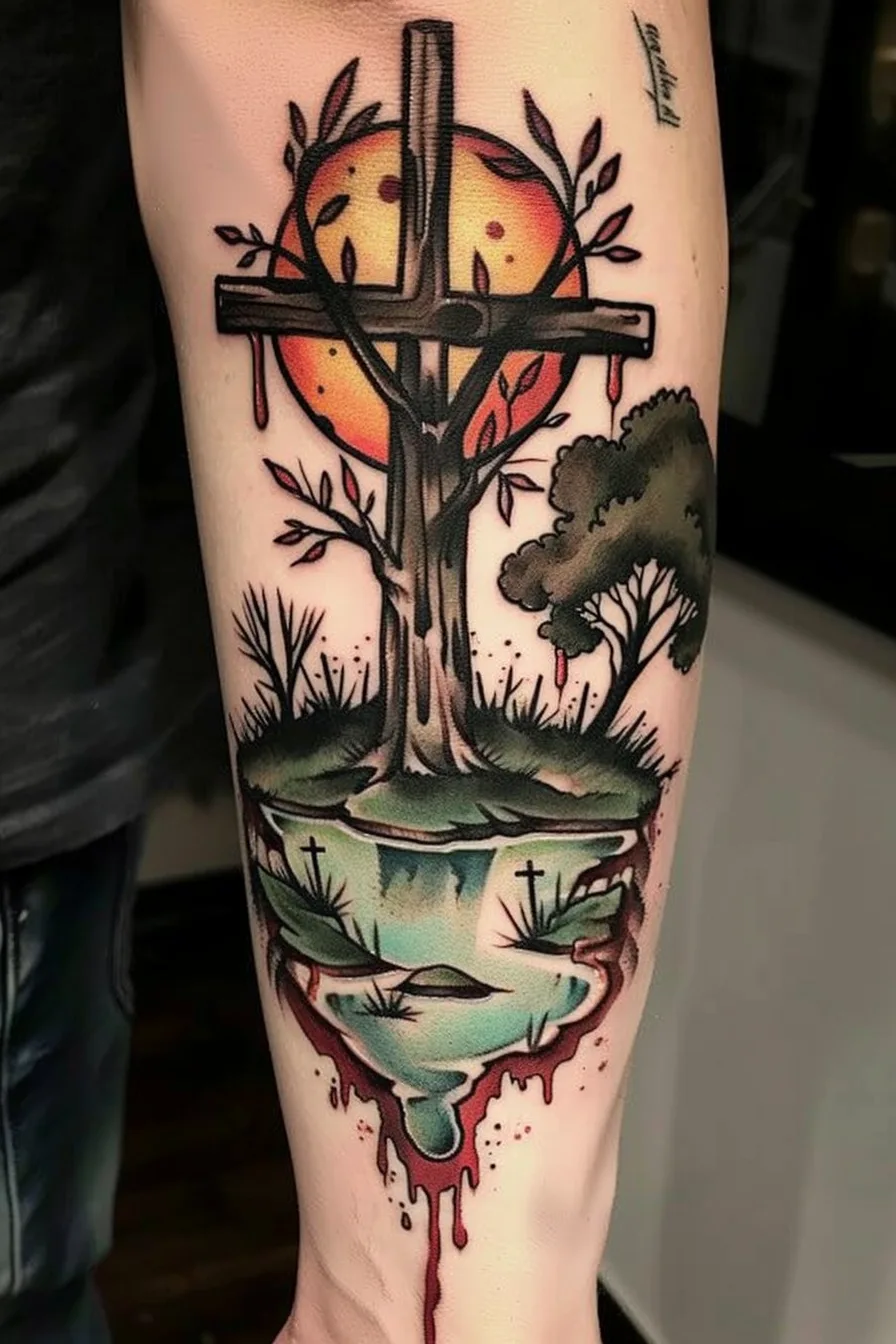
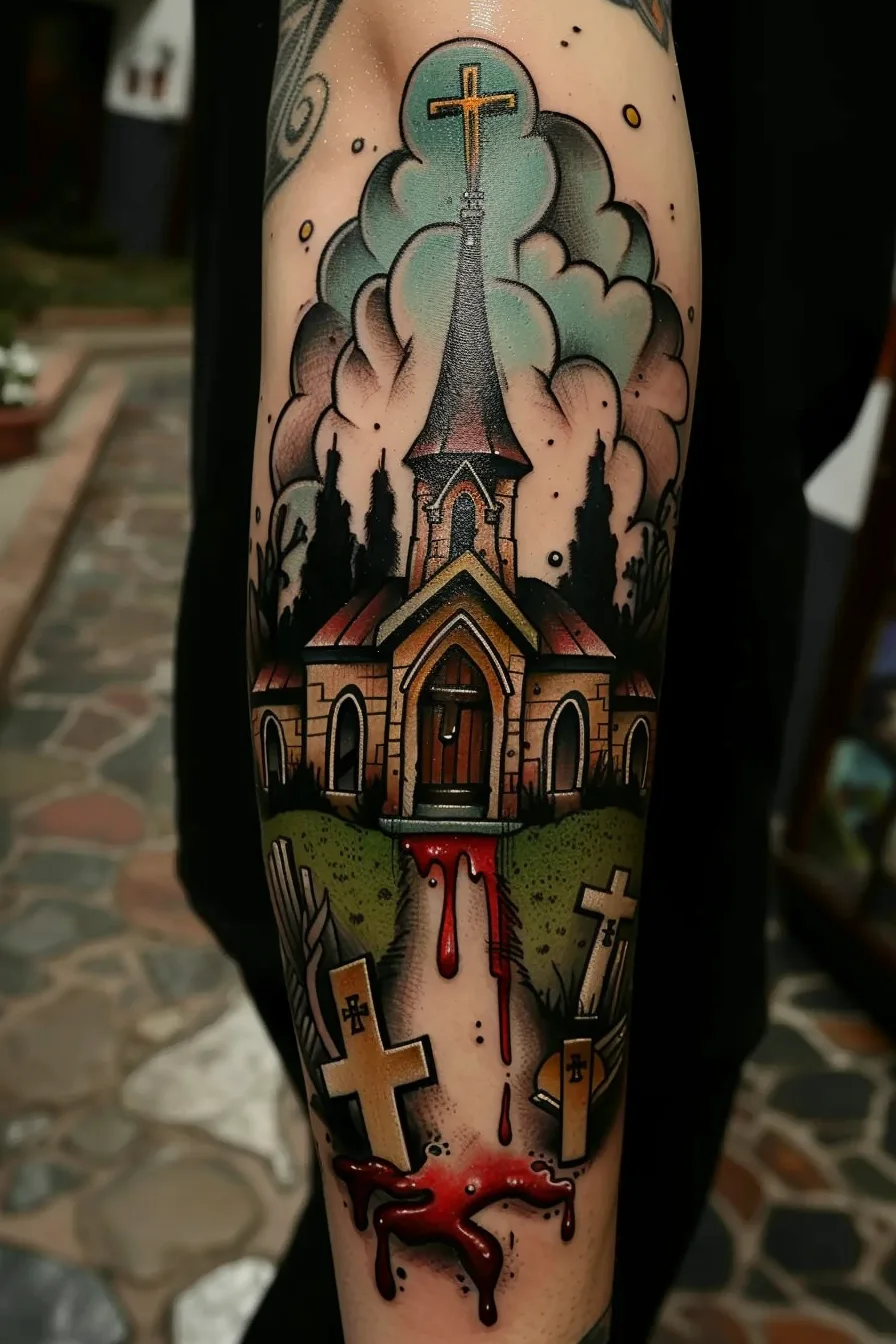
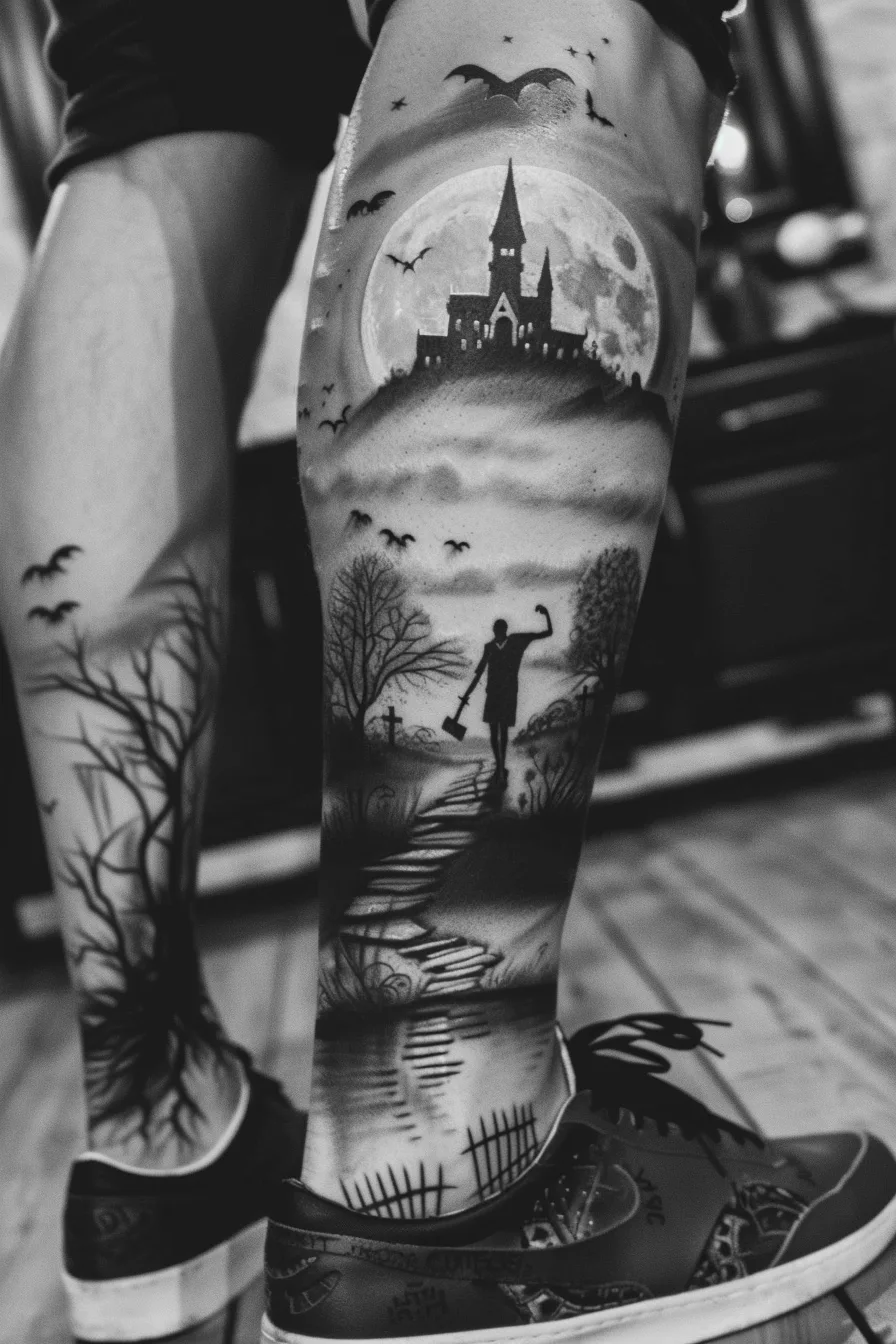
Broken Headstone and Crescent Moon
Amidst the serene embrace of the drooping willow tree, the broken headstone stands as a poignant testament to the fragility of life and the ephemeral nature of earthly existence.
The broken headstone, a powerful symbol of our mortality, reminds us that even the most permanent structures are susceptible to the ravages of time and the unpredictable forces of nature.
The crescent moon, a celestial symbol often associated with death and rebirth, casts a gentle glow over the scene, evoking a sense of tranquility and the cyclical nature of life.
Together, the broken headstone and the crescent moon create a hauntingly beautiful image that resonates with the human experience, inviting us to reflect on our own impermanence and the importance of cherishing every moment.
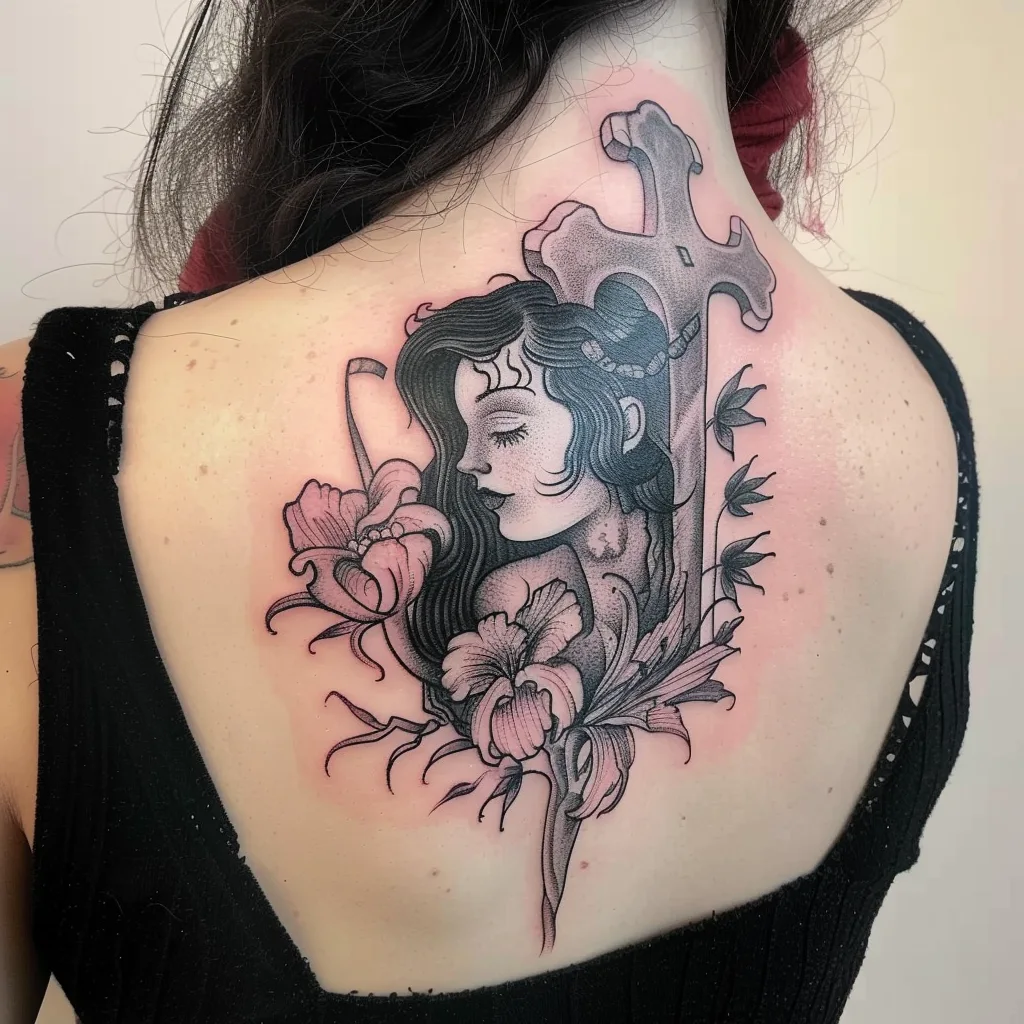

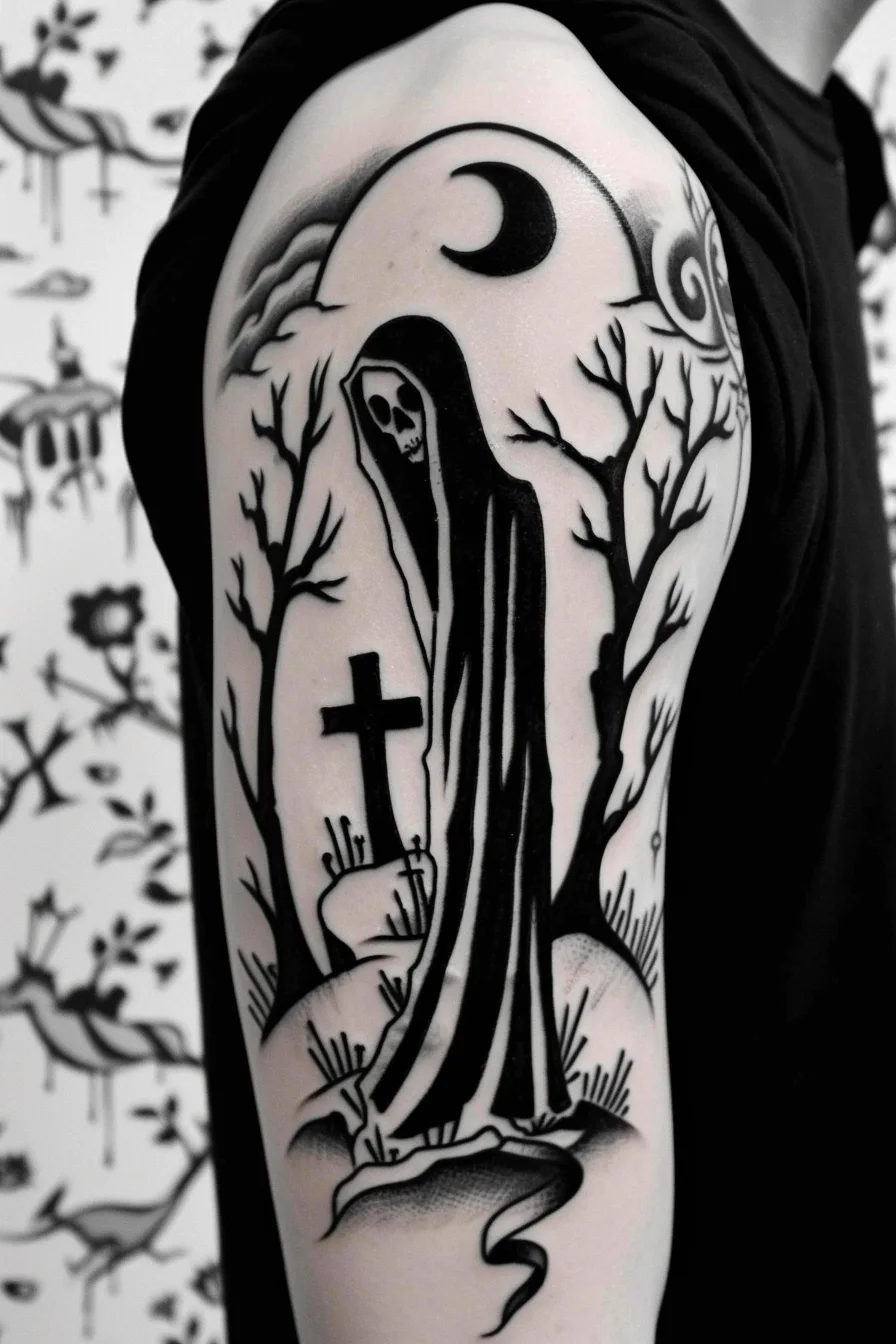
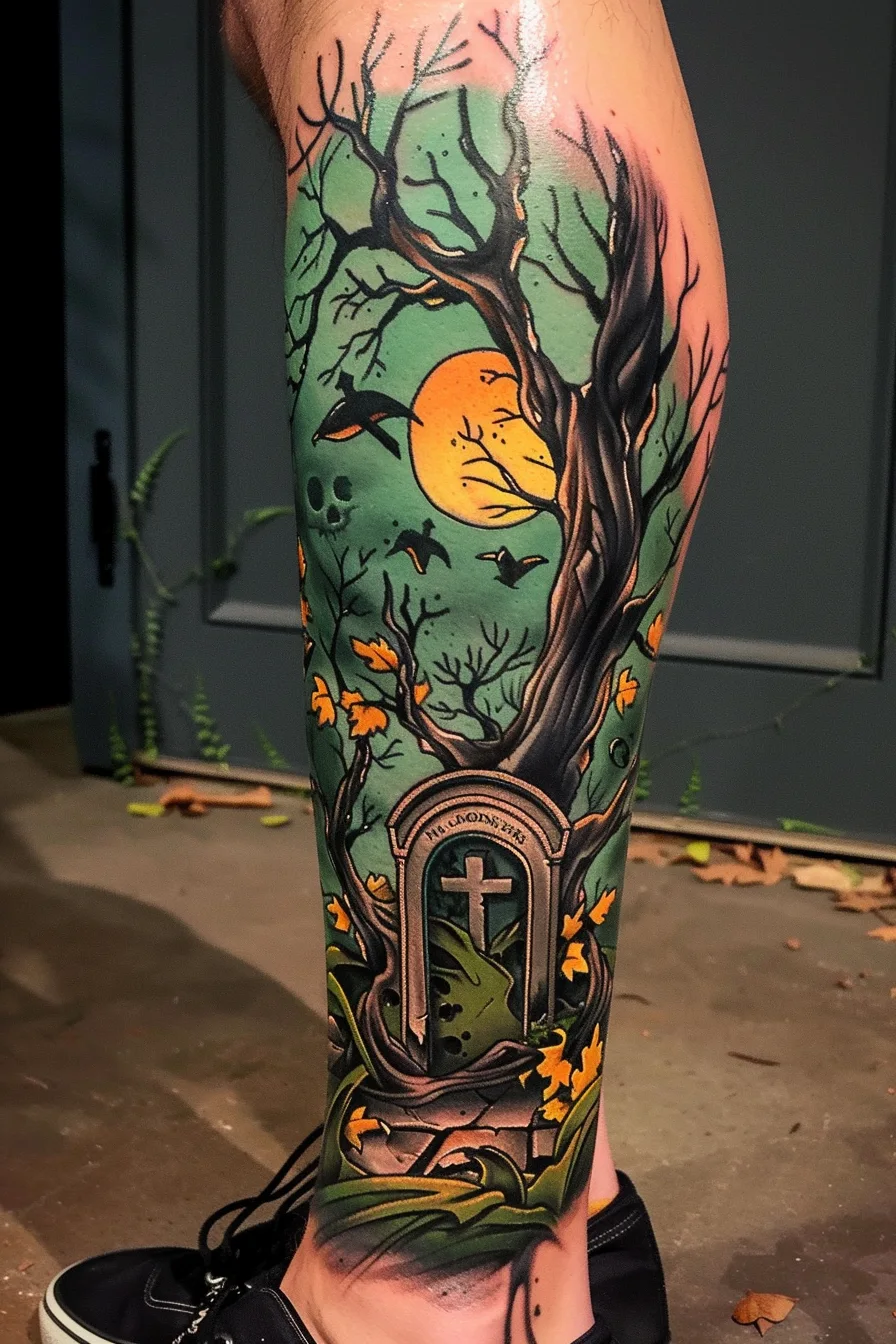
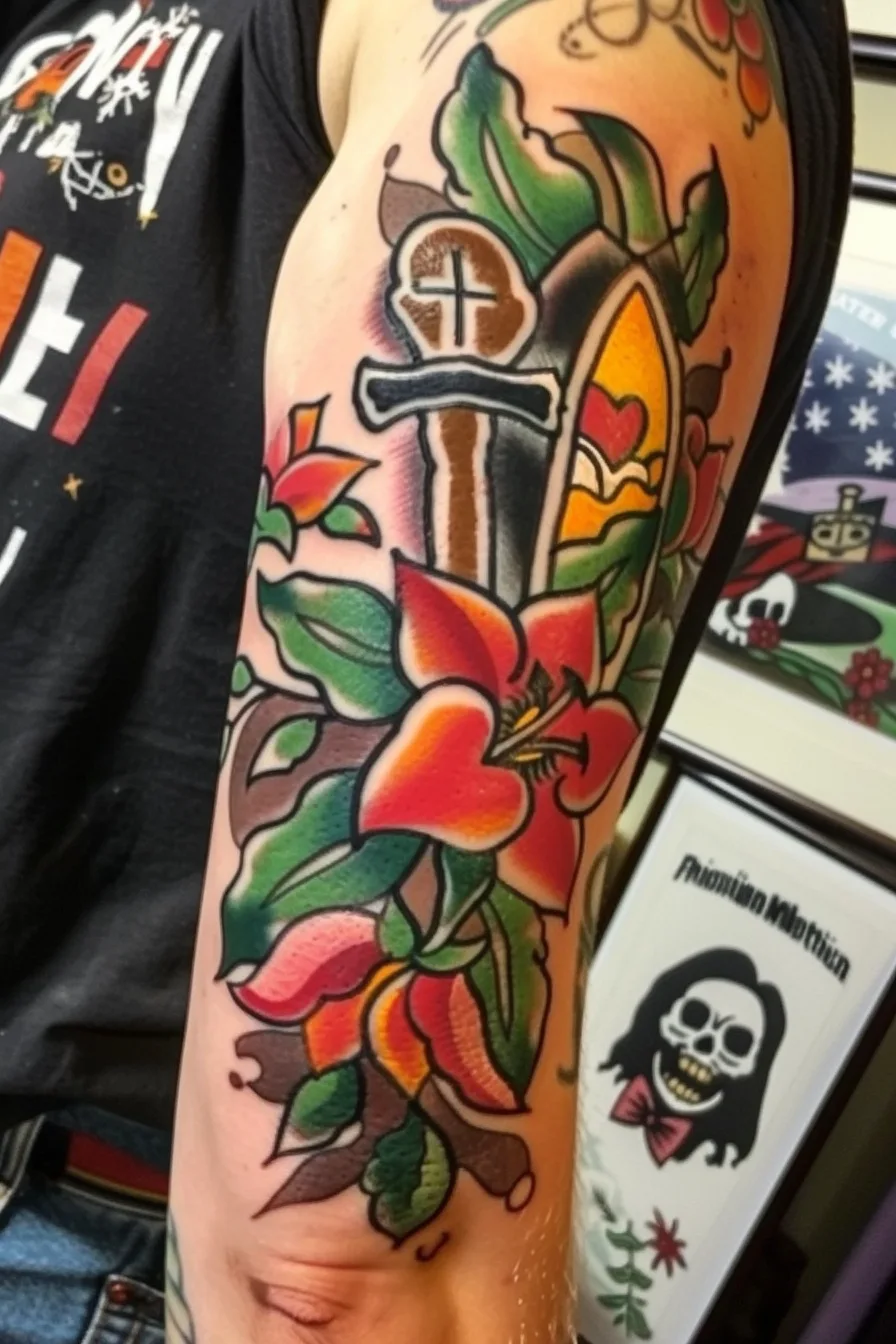
Gravestone and Weeping Angel
Beneath the mournful boughs of the weeping willow tree, a solitary gravestone stands as a poignant reminder of lives lost, its weathered surface inscribed with the epitaph of a departed soul.
The gravestone, adorned with the iconic image of the weeping angel, is a powerful symbol of mourning and reverent remembrance. This somber motif, often seen in graveyard tattoos, conveys a profound sense of grief and the eternal cycle of life and death.
The weeping angel, with its downcast eyes and draped wings, evokes a sense of sorrow and the desire to honor the memory of the deceased. For many, this graveyard tattoo design serves as a deeply personal tribute to those who have passed, a permanent symbol of the enduring bond between the living and the dead.
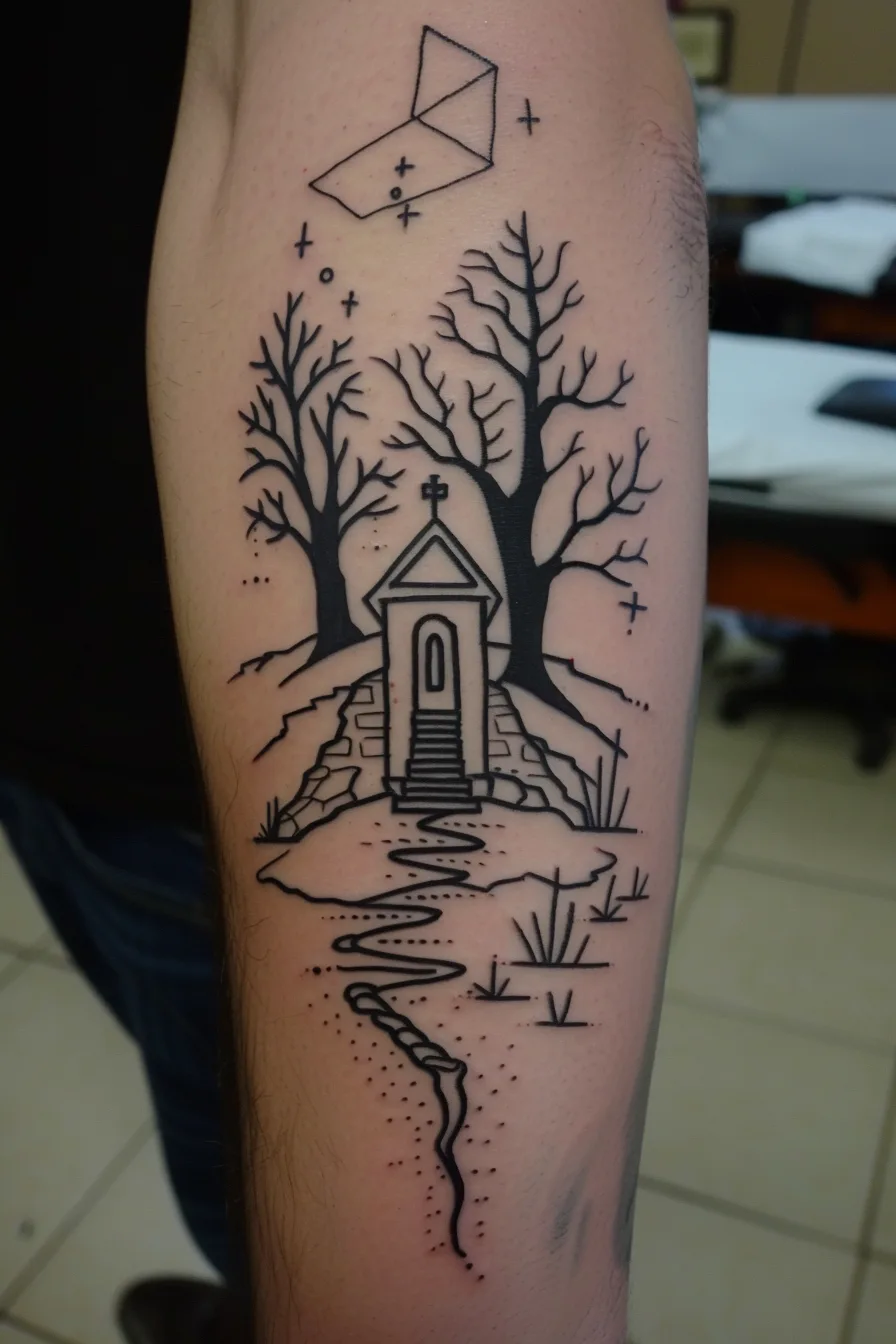

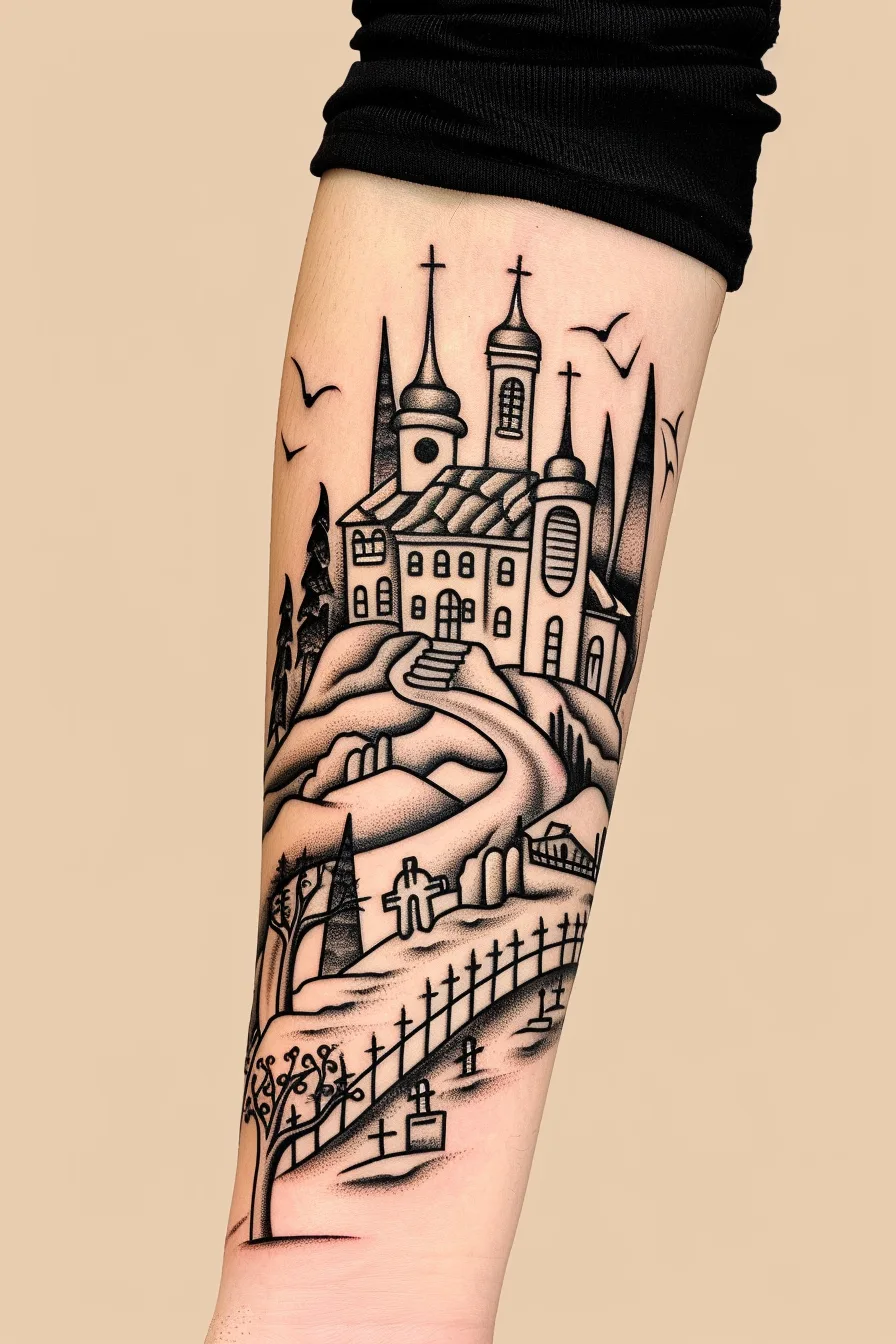
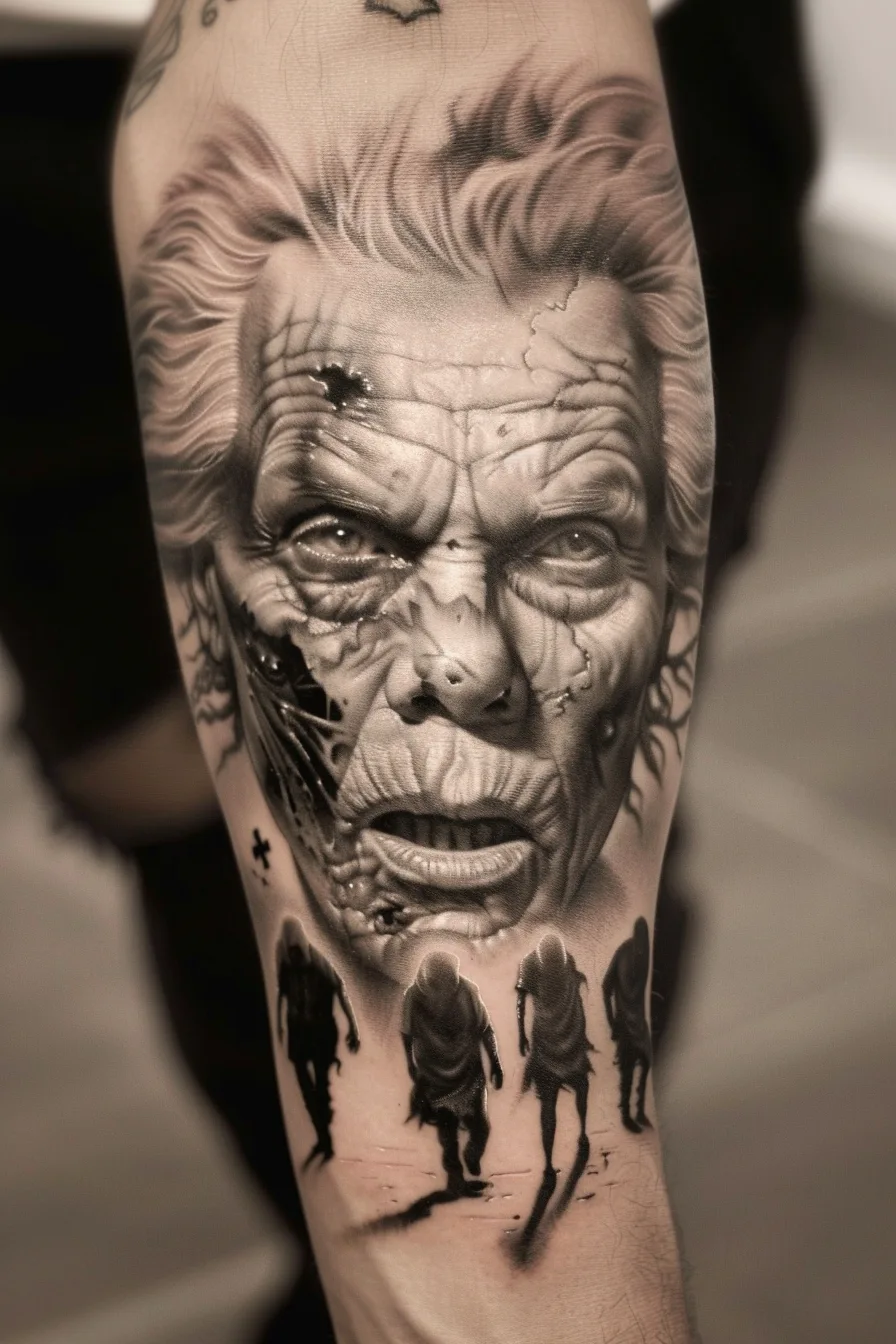
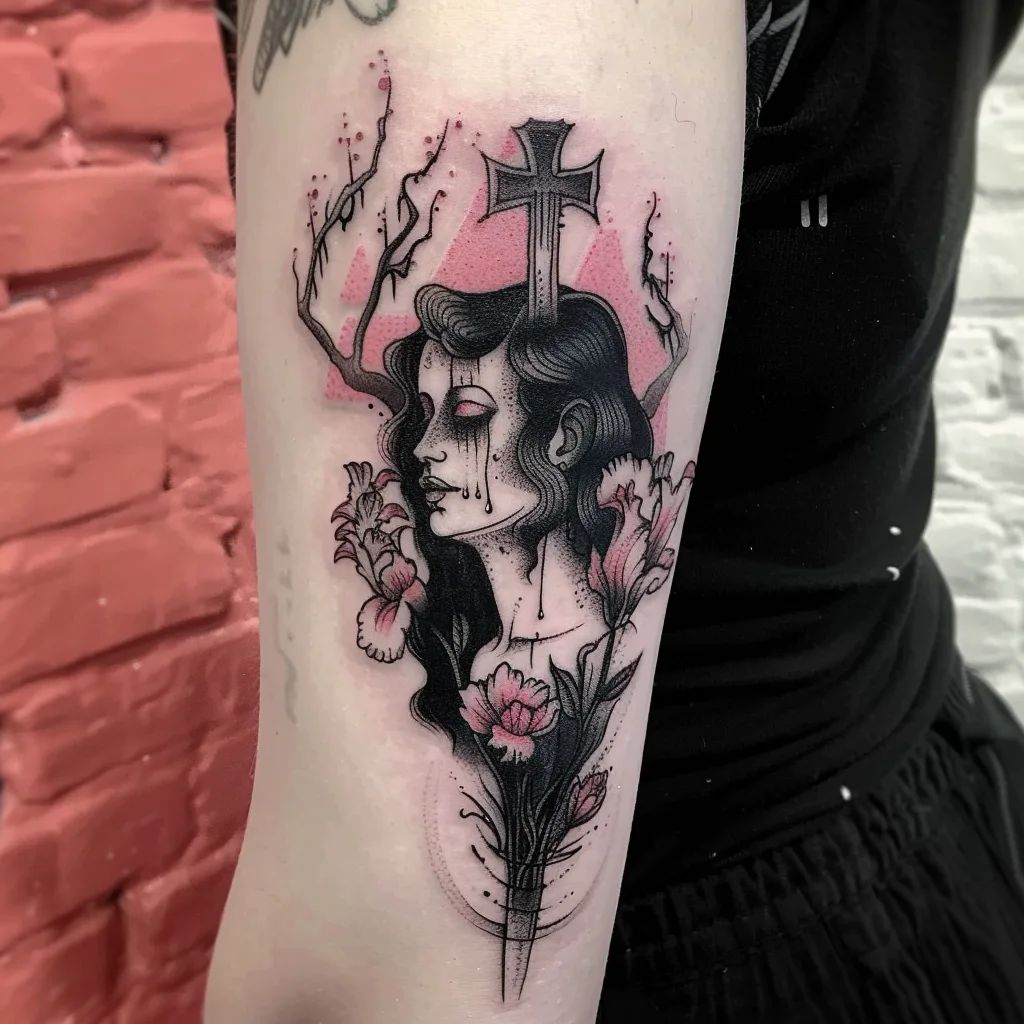
Gravestone and Sleeping Skeleton
Beside the weathered gravestone, a sleeping skeleton lies in repose, its bony form enveloped by the sweeping branches of the towering willow tree. This serene scene encapsulates the profound symbolism behind the gravestone and sleeping skeleton tattoo design.
The willow tree, with its drooping, melancholic branches, represents the fleeting nature of life and the eternal slumber in the earth. The withered flowers on the grave serve as a poignant reminder of the fragility of existence, while the sleeping skeleton conveys the tranquility and peace found in the afterlife.
This powerful tattoo design captures the duality of life and death, inviting the wearer to reflect on the meaning of their mortality and the enduring legacy they wish to leave behind.
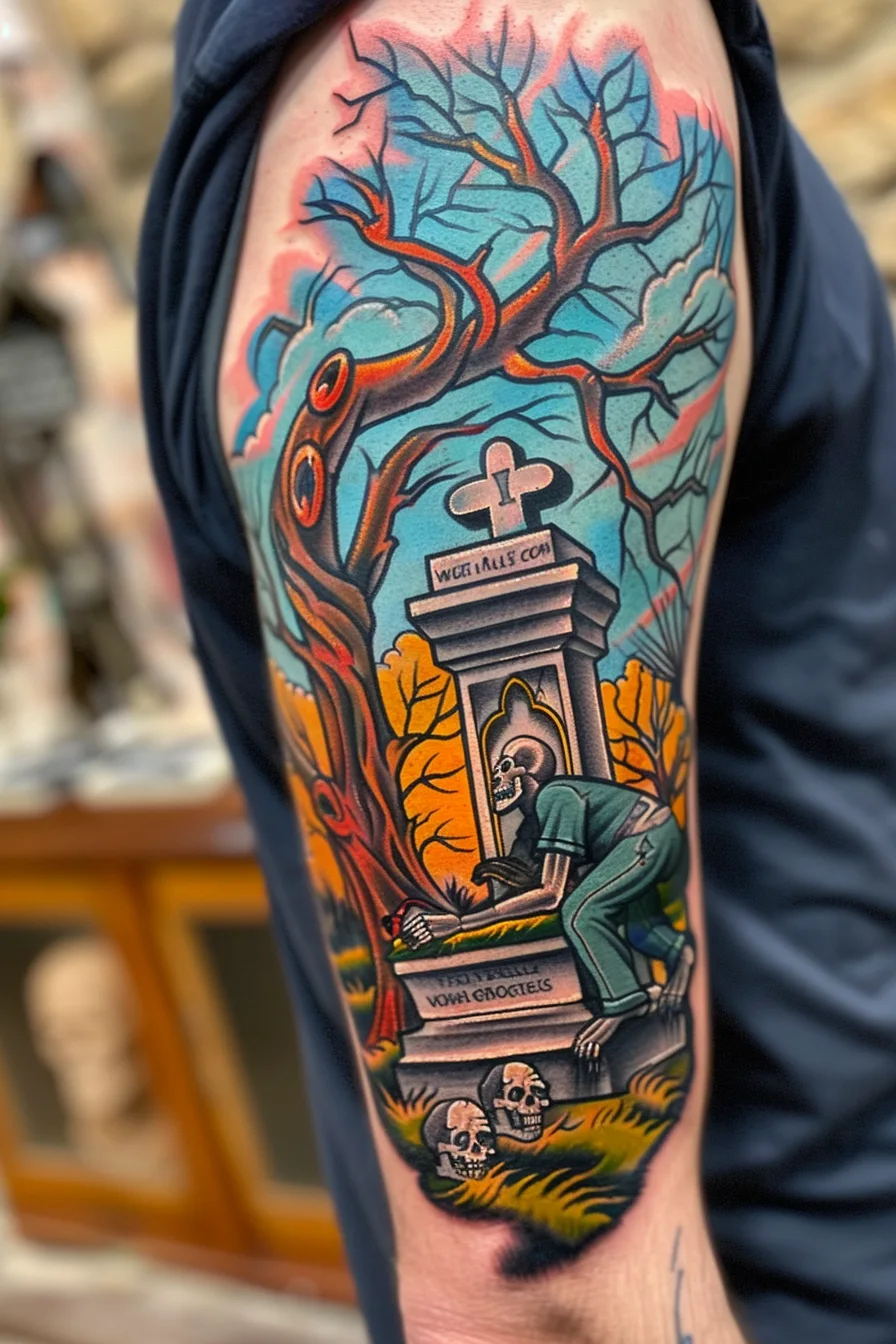
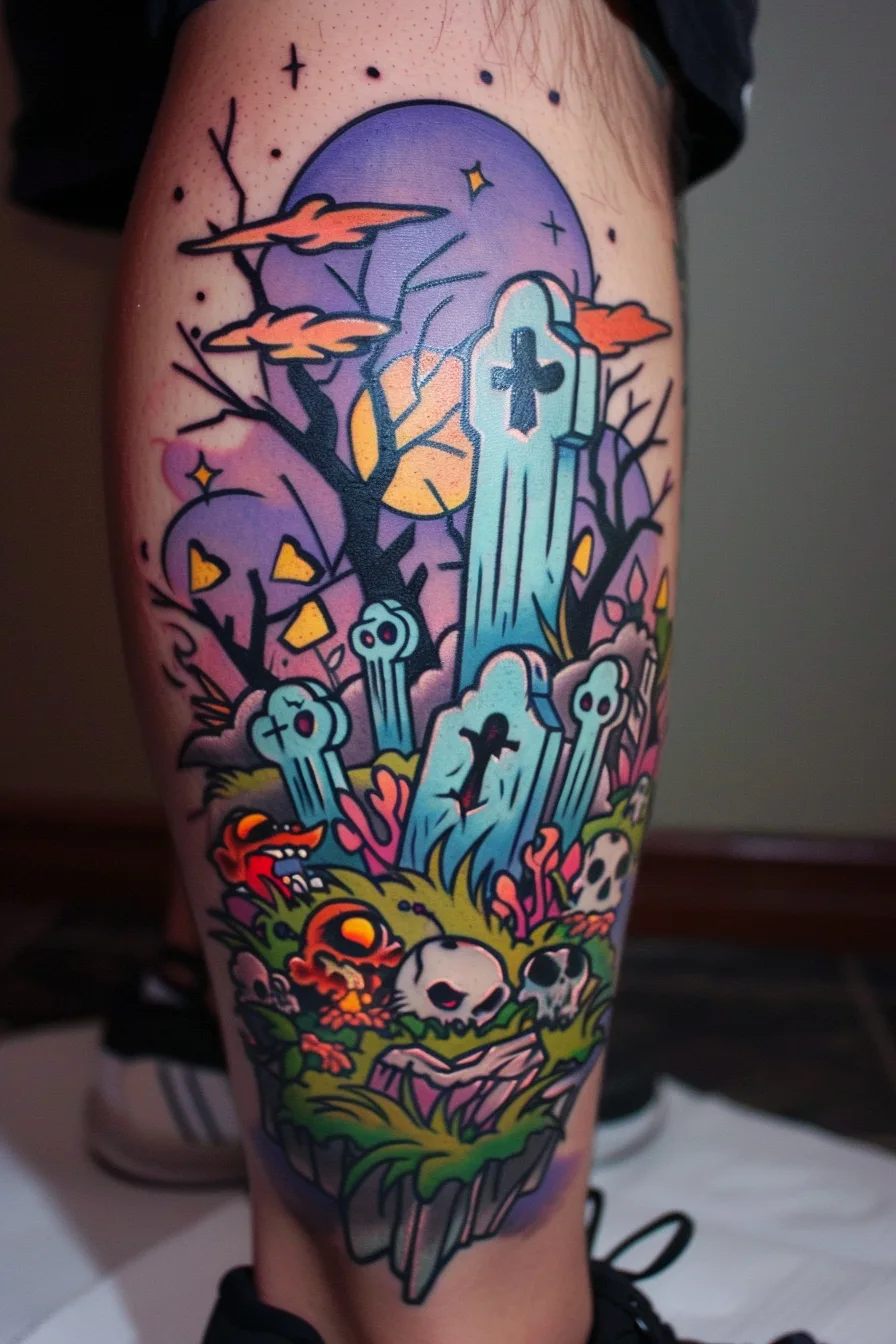
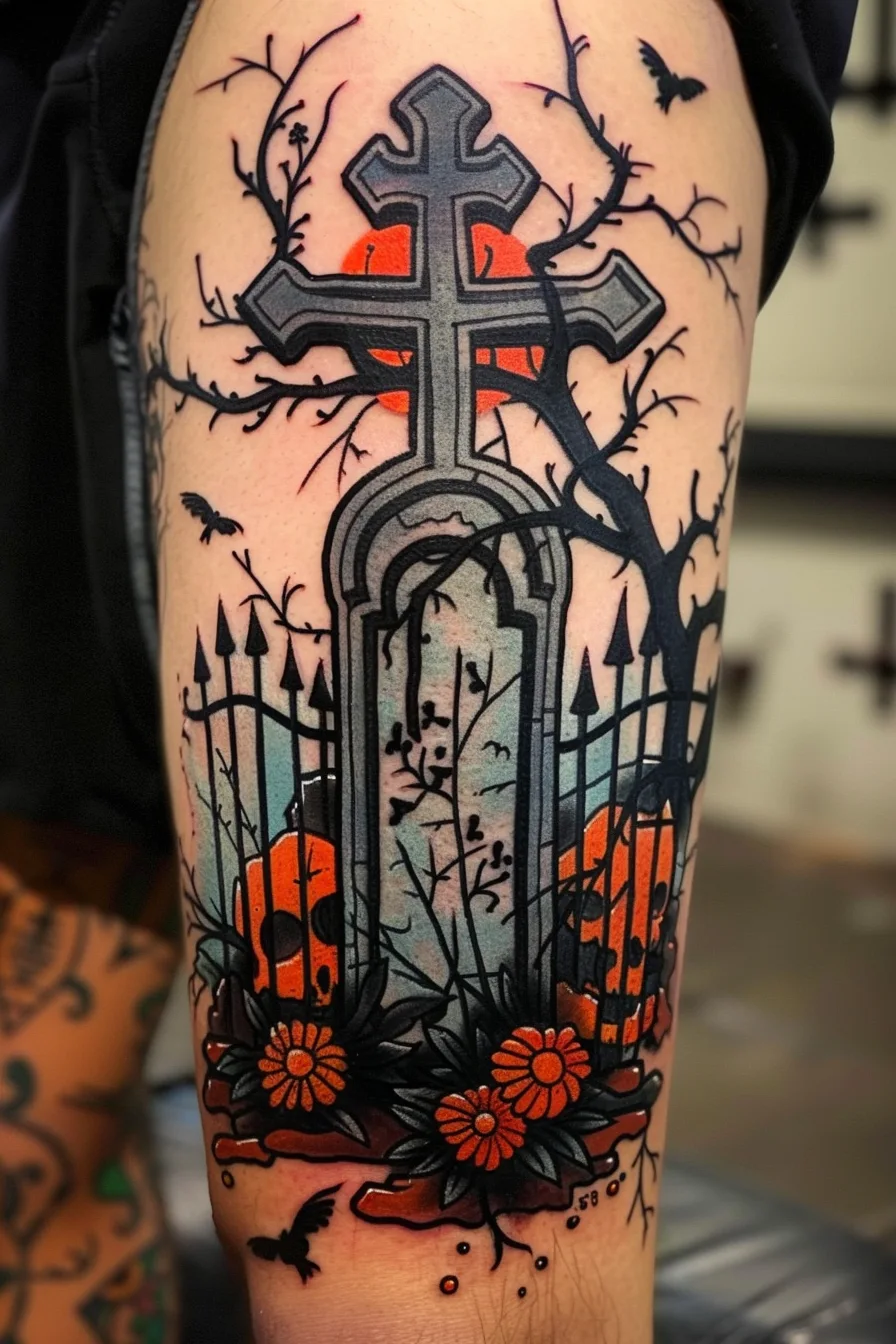
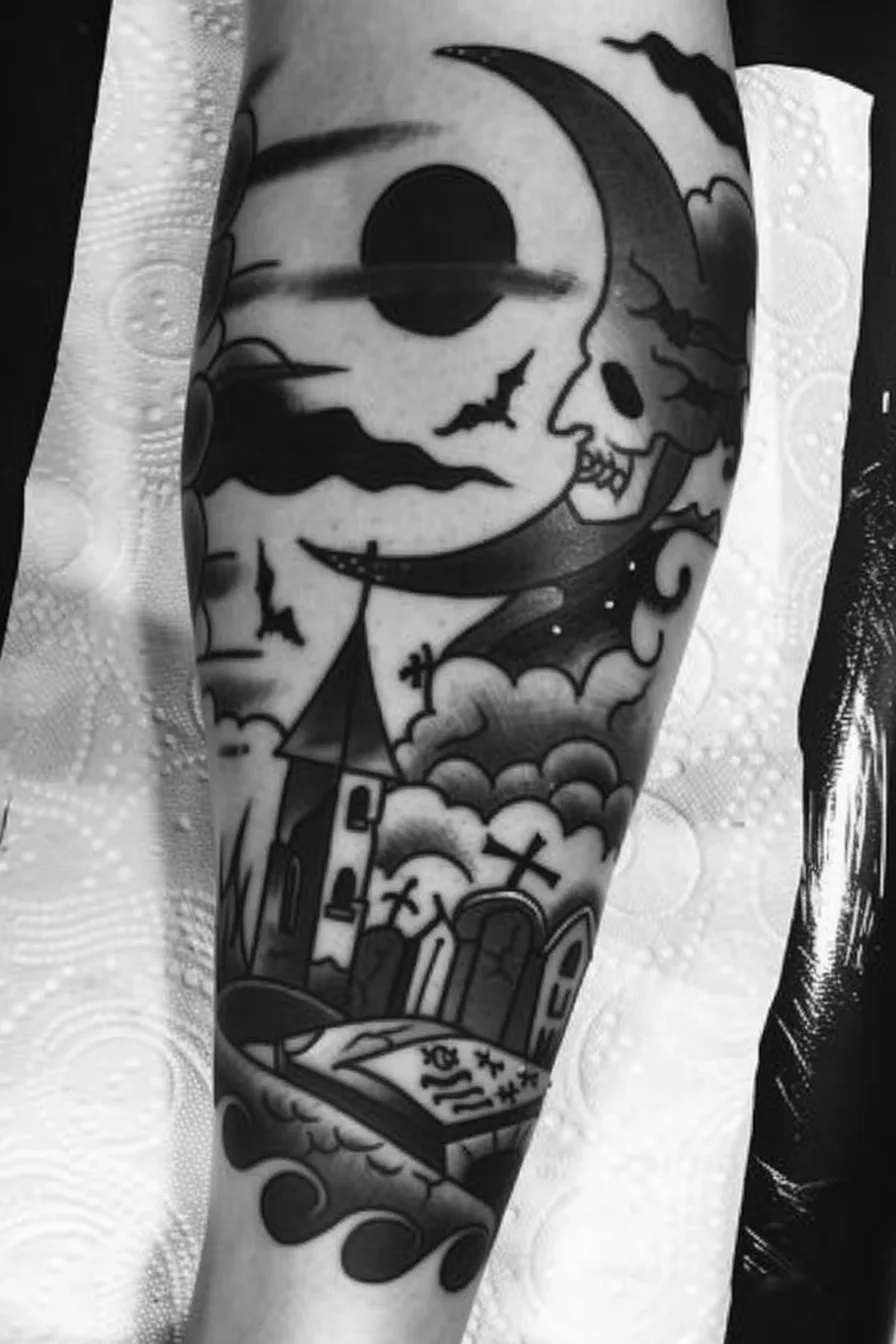
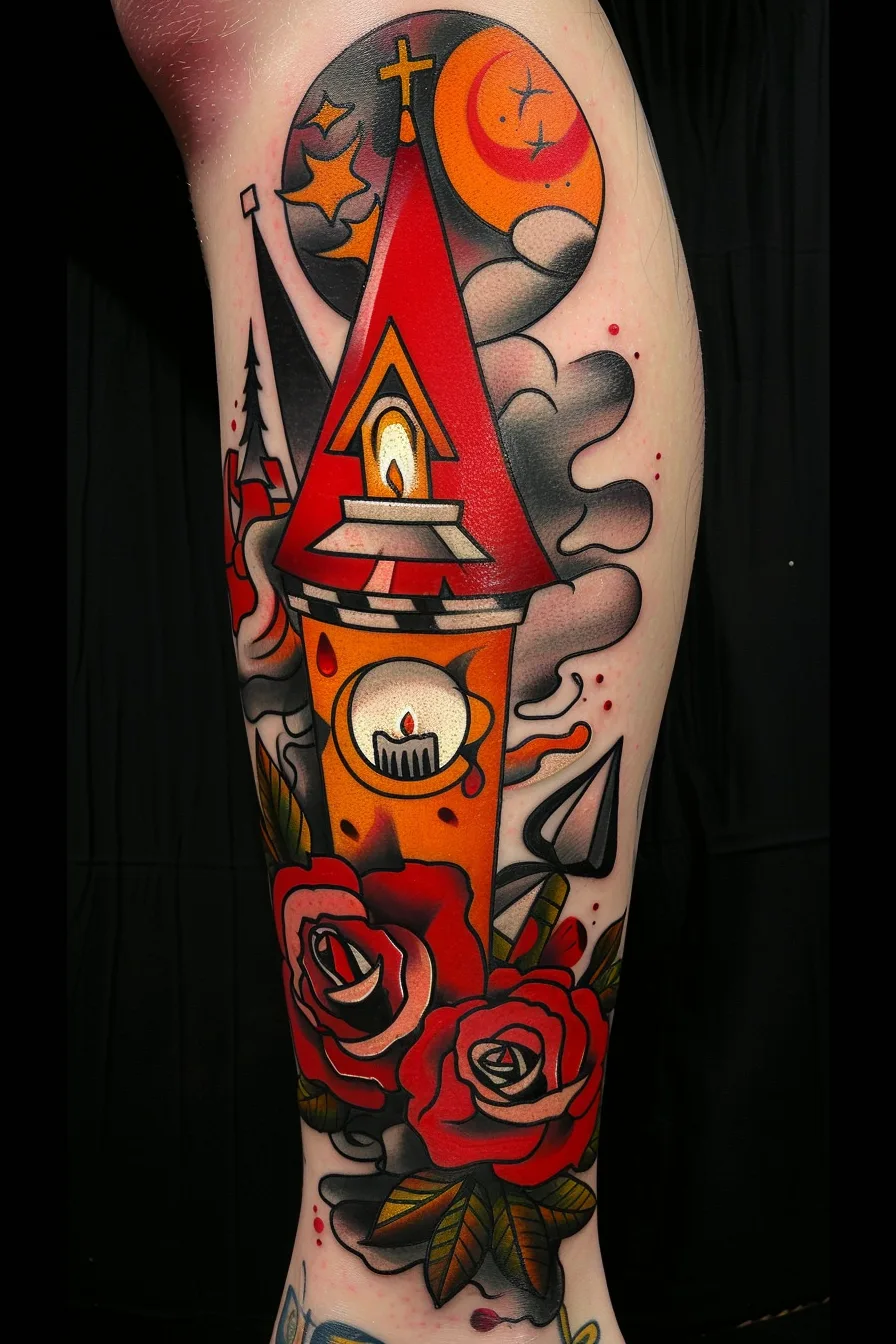
History & Origins
The history and origins of the graveyard tattoo can be traced back to the ancient civilizations, where the symbolism of death and the afterlife held profound cultural significance. In these early societies, graveyard-themed tattoos often had deep ritual significance, representing one's connection to the spiritual world and the cycle of life and death.
The imagery of gravesites, tombstones, and skeletal figures were not merely decorative, but served as powerful symbols of mortality, remembrance, and the universal human experience. This enduring fascination with the macabre and the otherworldly has continued to shape the cultural symbolism and artistic expression of graveyard tattoos throughout history, making them a deeply meaningful and thought-provoking form of body art.
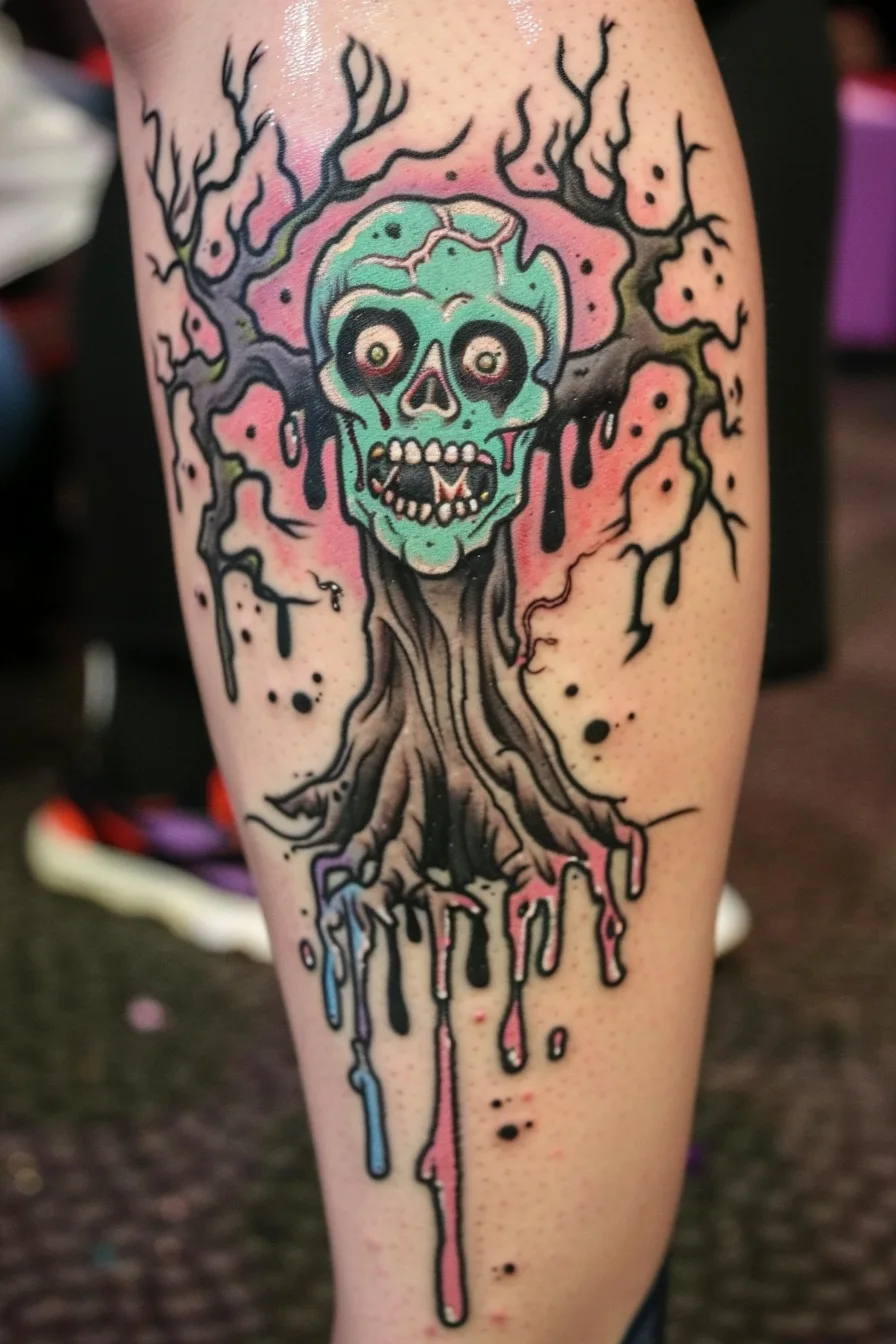
Best Placements For Tattoo
When considering a graveyard tattoo, the placement on your body is an important factor to consider. Popular options include the arm, leg, neck, chest, and back, each offering unique advantages.
Ultimately, the best location will depend on your personal preferences, the size and design of the tattoo, and how you wish to display it.
Arm
Among the most popular placements for a graveyard tattoo is the arm, as it offers a versatile canvas that can showcase the intricate details and symbolism of this meaningful design. The arm provides ample space to incorporate hidden meanings and unique placements that can personalize the tattoo.
Whether it's adorning the forearm, upper arm, or even the wrist, a graveyard tattoo on the arm allows for creative expression and easy visibility. The arm also offers the advantage of being able to conceal the tattoo if needed, making it a practical choice for those who desire a balance between personal significance and professional discretion.
Leg
Alongside the arm, the leg offers an equally captivating canvas for a graveyard tattoo, allowing for bold and impactful placements that command attention.
Whether inked on the calf, thigh, or even ankle, a graveyard-themed tattoo on the leg can create a striking visual statement. The leg's flowing robes of fabric provide an excellent backdrop for sombre tombstones or ethereal ghosts, inviting the viewer into a moment of solitary contemplation.
The lower leg, in particular, offers ample space for detailed designs that can be easily showcased. With the right placement and artistic vision, a graveyard tattoo on the leg can become a powerful and meaningful expression of one's personal journey.
Neck
The neck provides a compelling canvas for a graveyard tattoo, offering a distinct and visually striking placement that commands attention. This location can serve as a youthful expression of personal significance, allowing individuals to showcase their connection to the afterlife or commemorate loved ones who have passed.
The neck's prominent visibility makes a graveyard tattoo here an impactful choice, though it's important to consider the potential impact on future employment opportunities. Nonetheless, for those drawn to the symbolic meaning and bold aesthetic, a neck tattoo can be a powerful way to honor the sacred and the sacred.
With thoughtful placement and a skilled artist, a graveyard tattoo on the neck can become a meaningful and striking personal statement.
Chest
Situated prominently on the body, the chest offers a vast, uninterrupted canvas ideal for showcasing the intricate details and powerful symbolism of a graveyard tattoo. Chest tattoo designs can range from a single tombstone to an expansive cemetery landscape, capturing the solemn and reflective nature of this subject matter.
Unique chest tattoo placements, such as centered on the sternum or extending across the pectorals, can create striking visual effects. The central location of the chest also allows the tattoo to be readily visible, making it a bold statement of personal significance.
Whether opting for a minimalist design or a more elaborate composition, a graveyard tattoo on the chest can serve as a meaningful and impactful body art piece.
Back
On the back, graveyard tattoos can command a prominent and eye-catching position, often spanning the expanse of the shoulder blades or running down the spine. This broad canvas allows for the incorporation of detailed imagery, such as intricate tombstones, wrought-iron fences, and lush, overgrown foliage, creating a visually striking and thematically resonant body art piece.
Placement on the back also enables the tattoo to be easily concealed or revealed, allowing the wearer to selectively control the visibility and impact of this deeply personal design. The back also offers a vast canvas for fading symbolism and anatomical imagery, making it a popular choice for those seeking a dramatic and impactful graveyard tattoo.
Hand
Frequently, the hand presents a prime canvas for graveyard tattoos, as the intricate designs can be easily showcased and accentuated by the natural contours and mobility of this bodily appendage.
The palm placement is a popular option, allowing for larger, more detailed imagery that can be prominently displayed. Finger orientation, meanwhile, lends itself well to minimalist designs or smaller symbols that wrap around the digit.
Whether you opt for a full hand piece or a more subtle tattoo, the hand's versatility makes it an exceptional choice for commemorating the solemn themes of a graveyard motif. With careful placement and thoughtful design, a hand tattoo can become a meaningful and visually striking personal expression.
Conclusion
Graveyard tattoos represent eternal peace and tranquility. Common design styles include tombstones, willow trees, and various color variations, each with its own symbolic meaning.
The history and origins of this tattoo are rooted in honoring loved ones who have passed. Careful consideration should be given to the best placements for this meaningful tattoo to ensure it is displayed with reverence.

